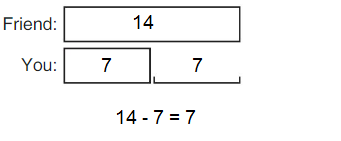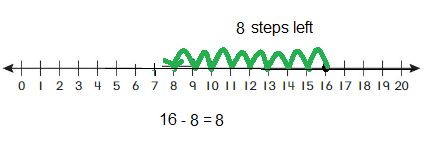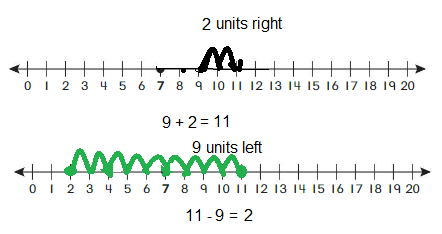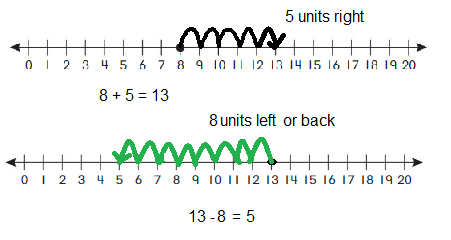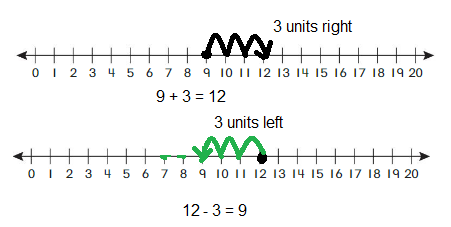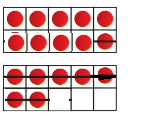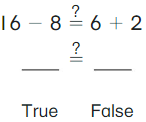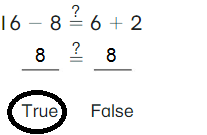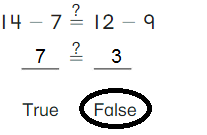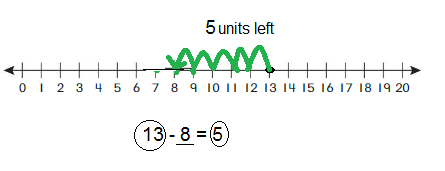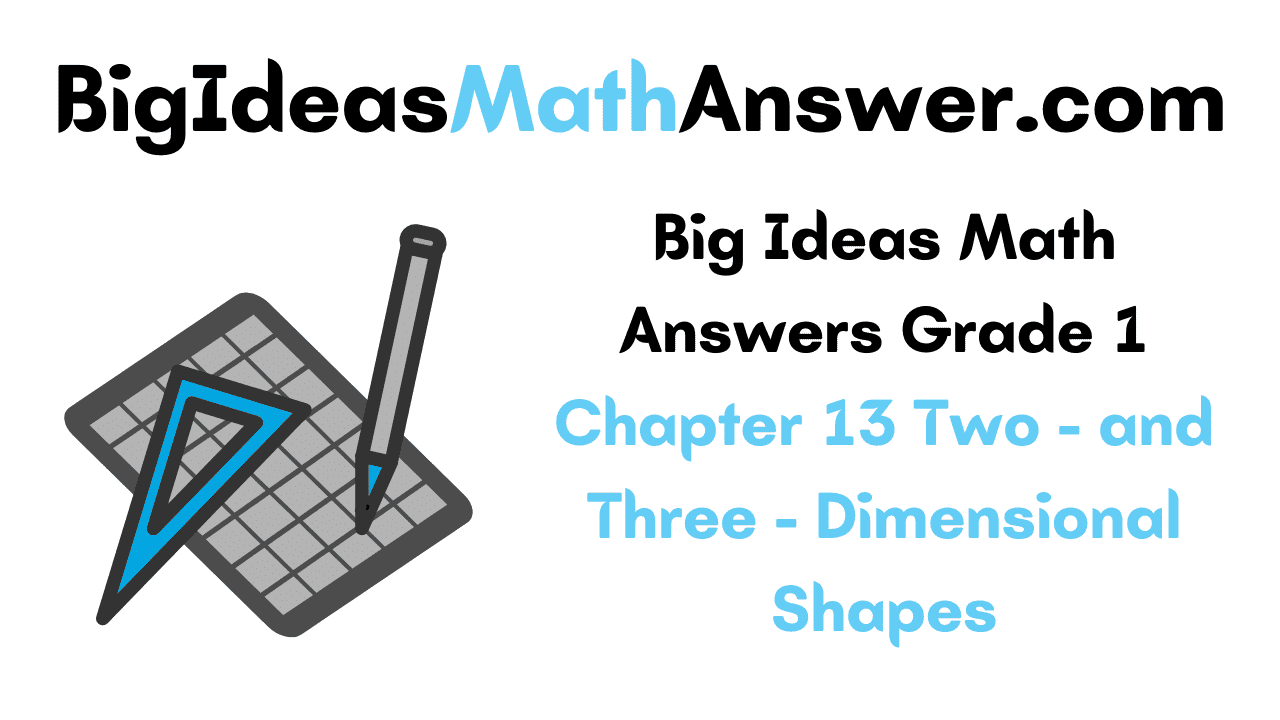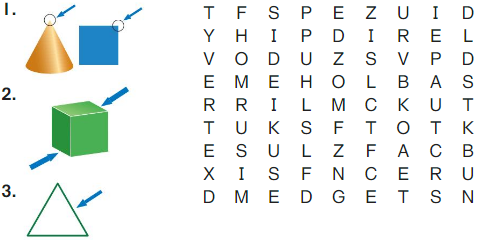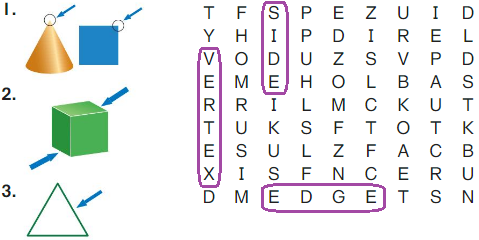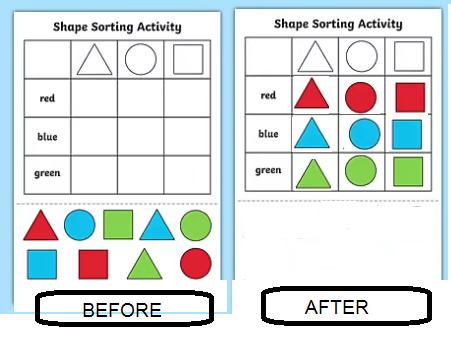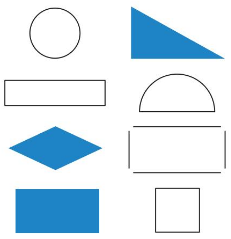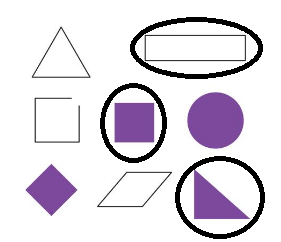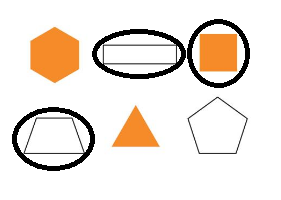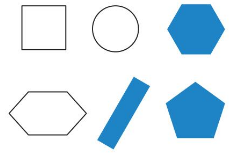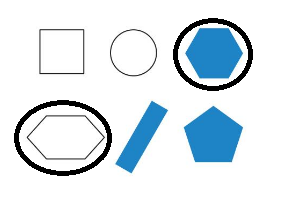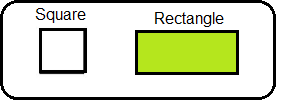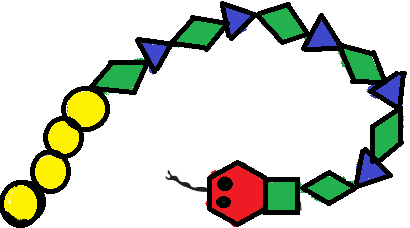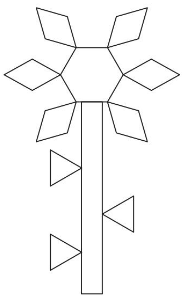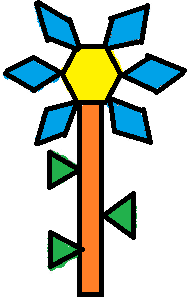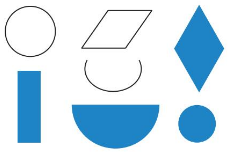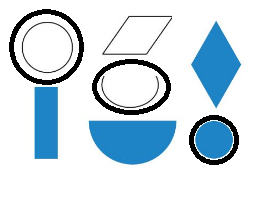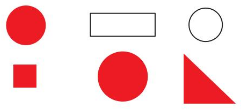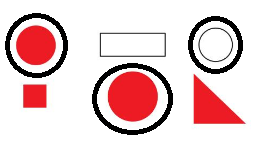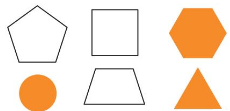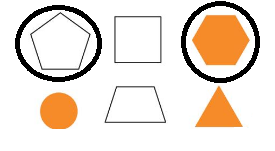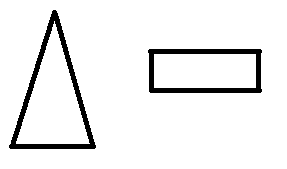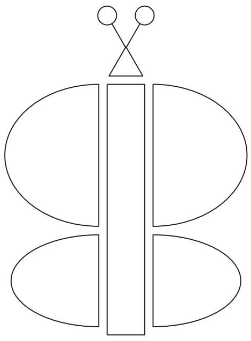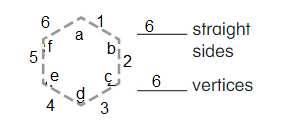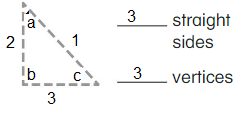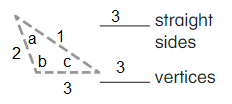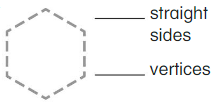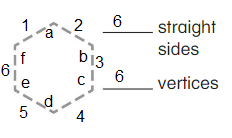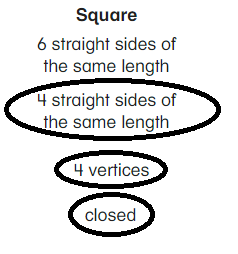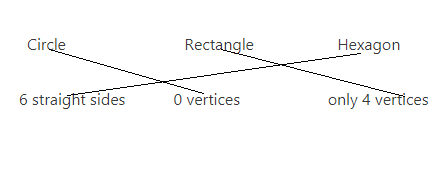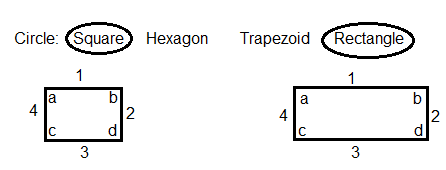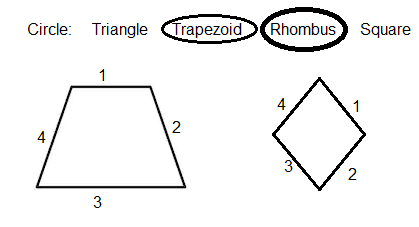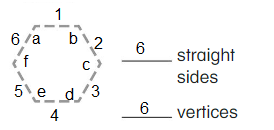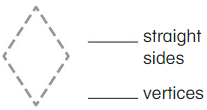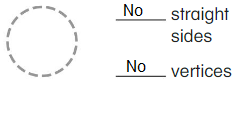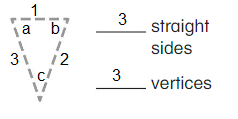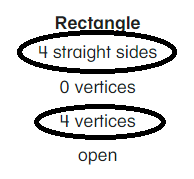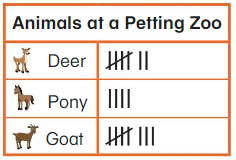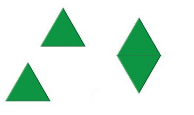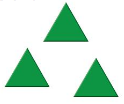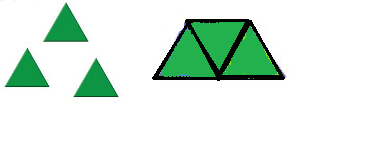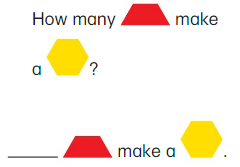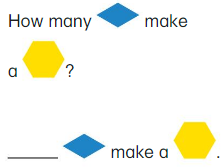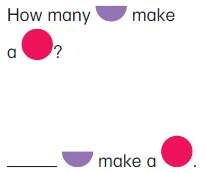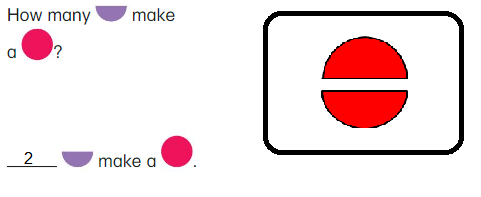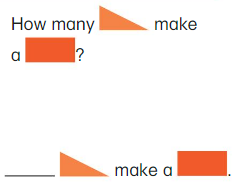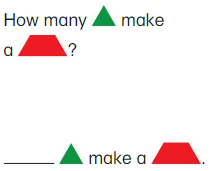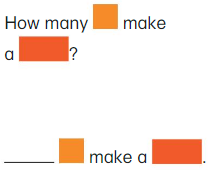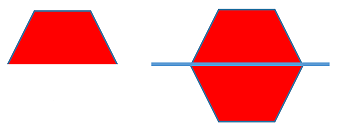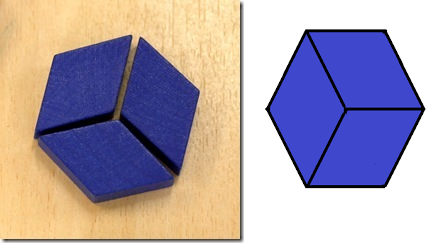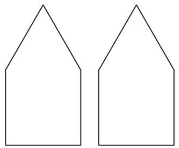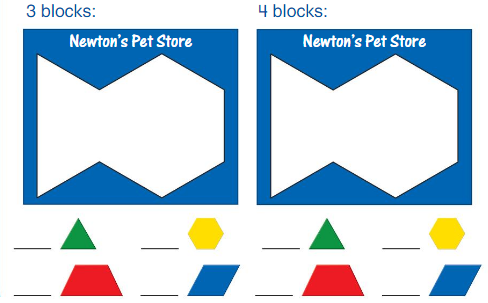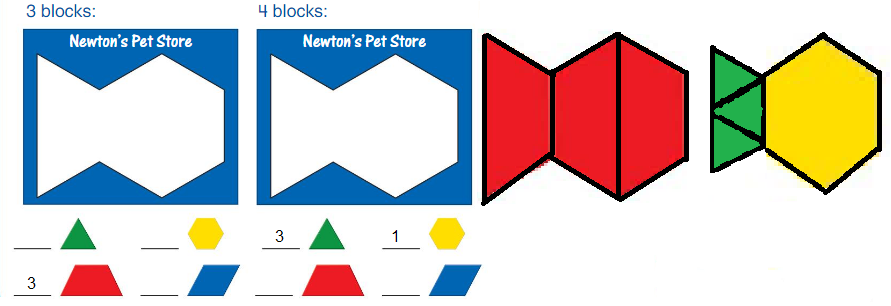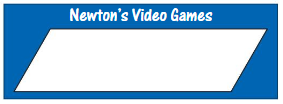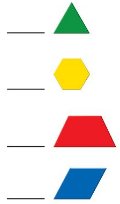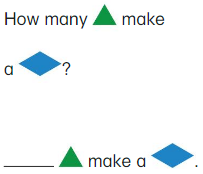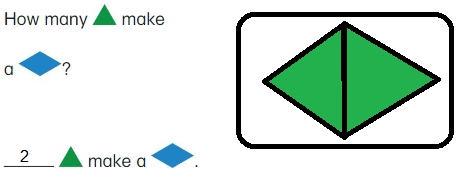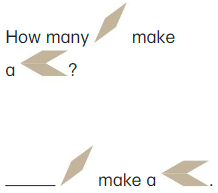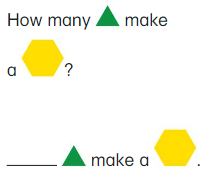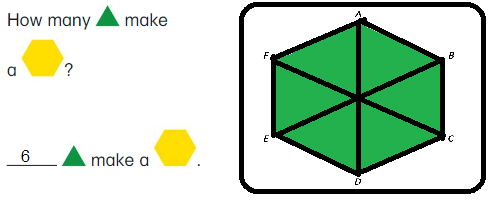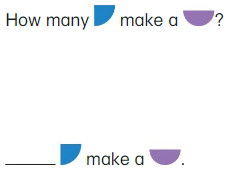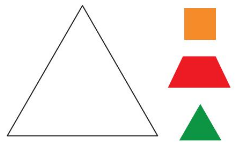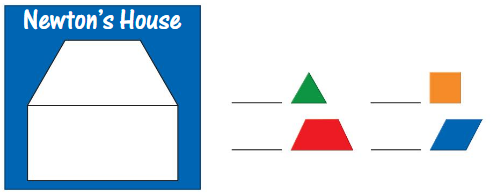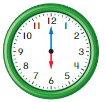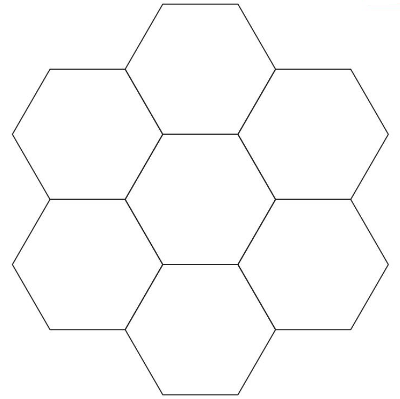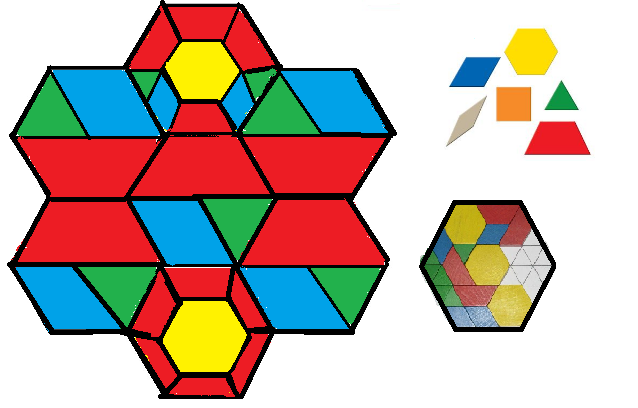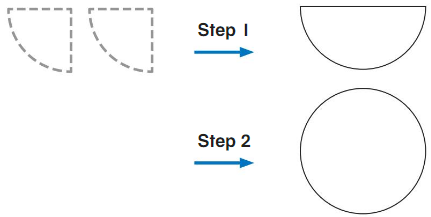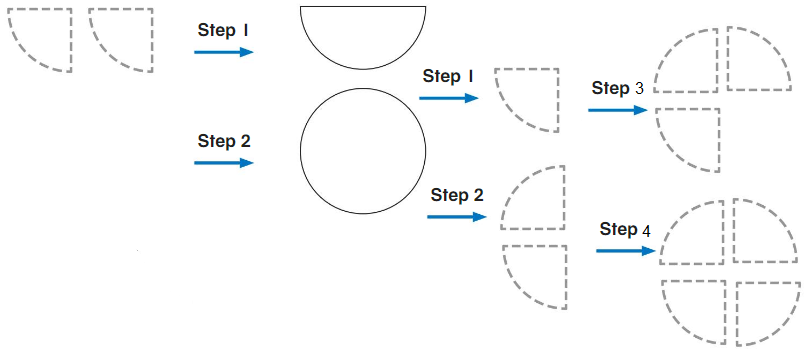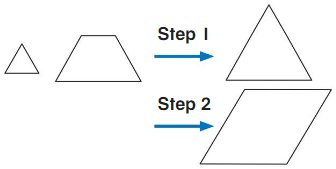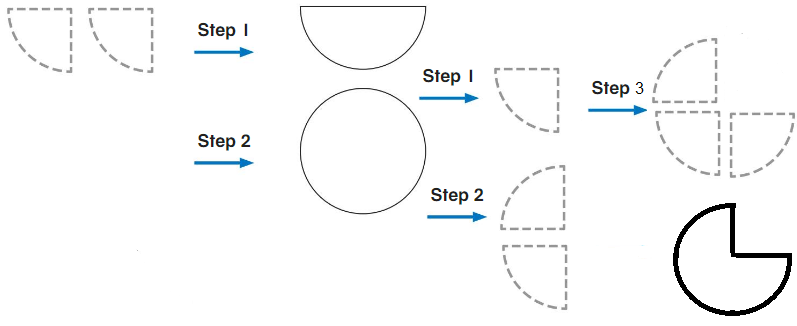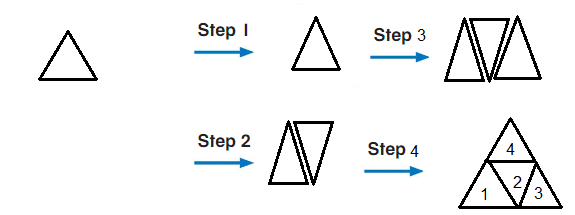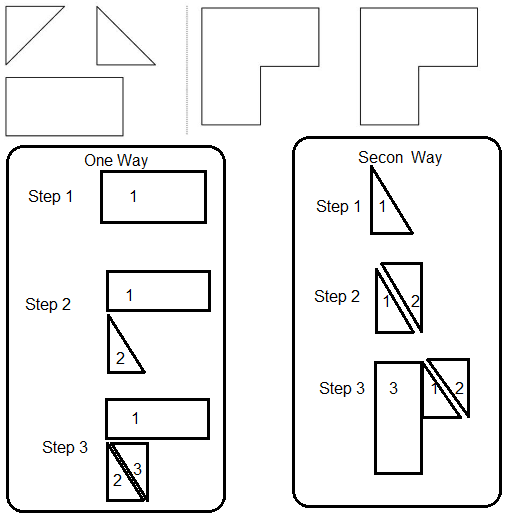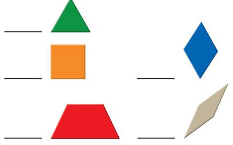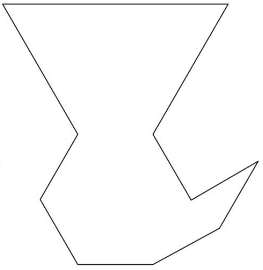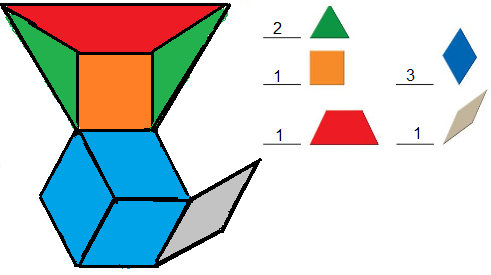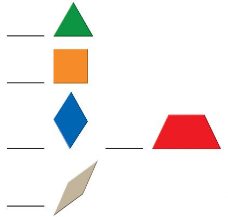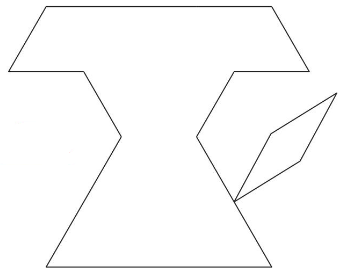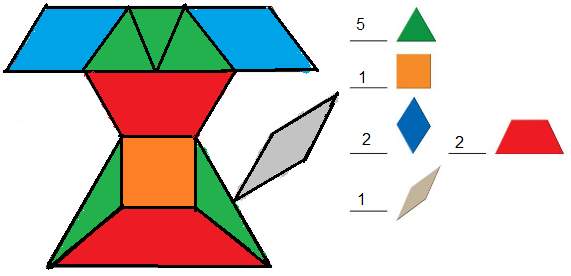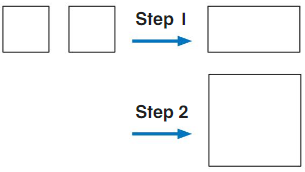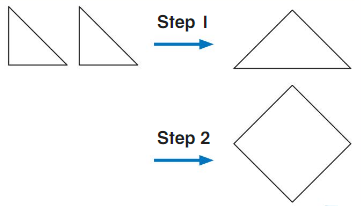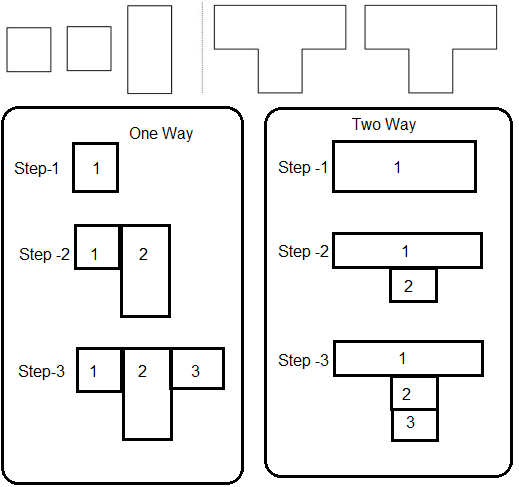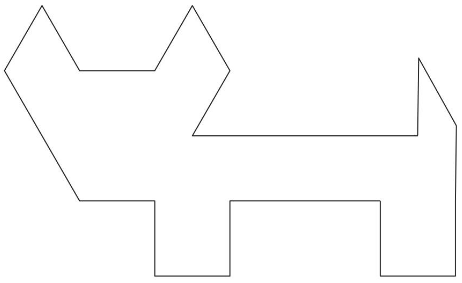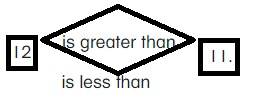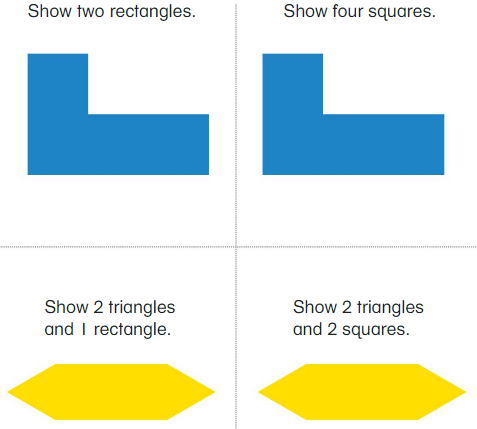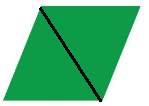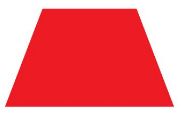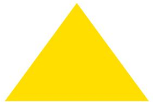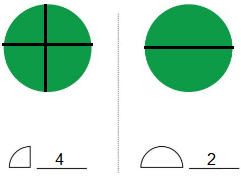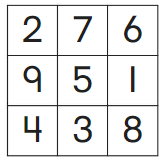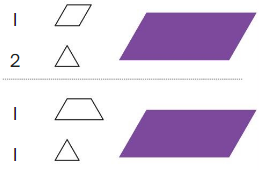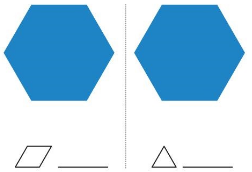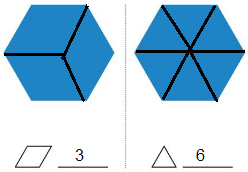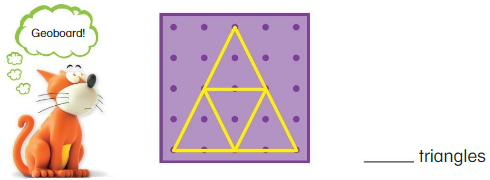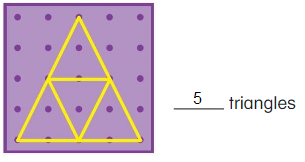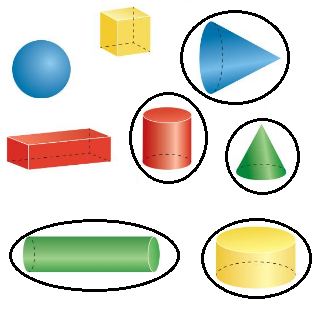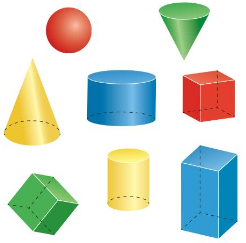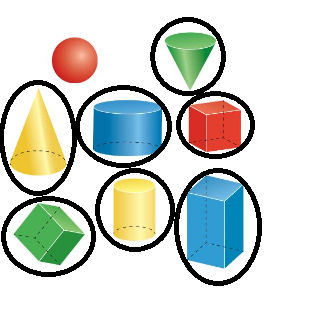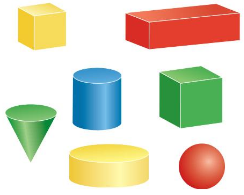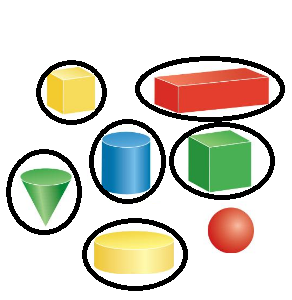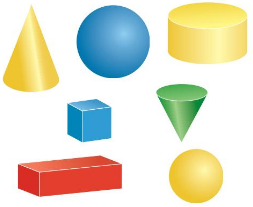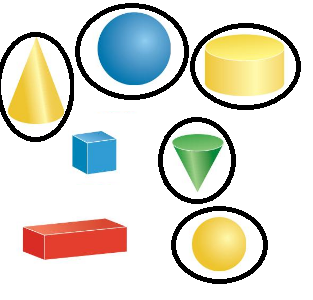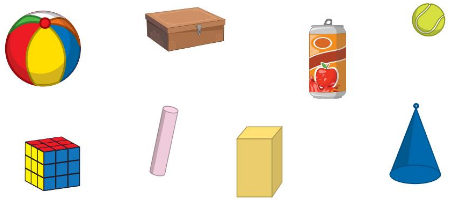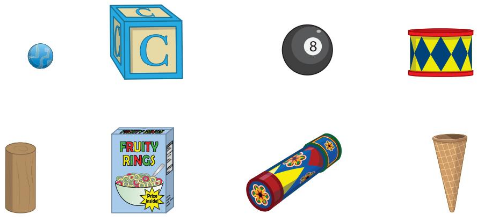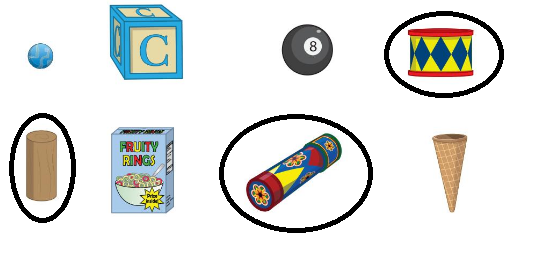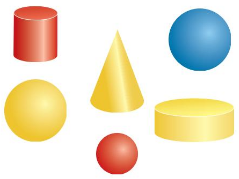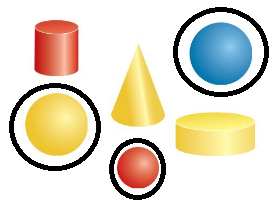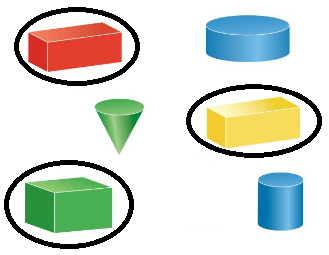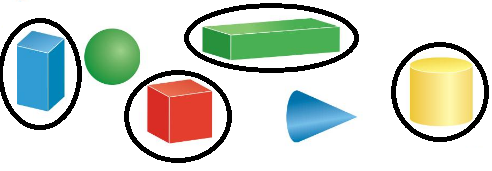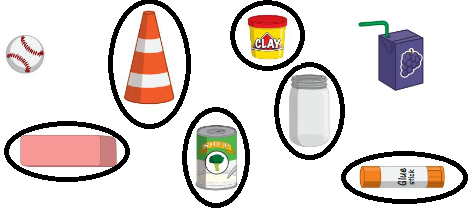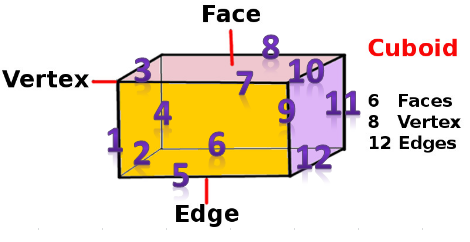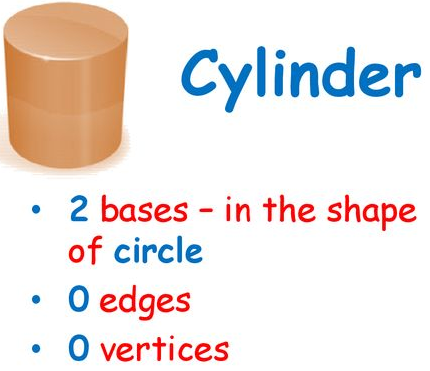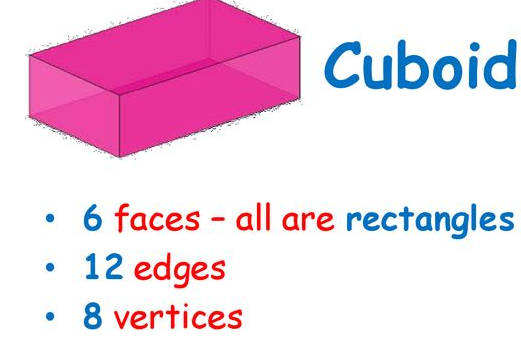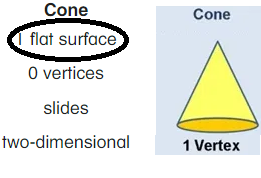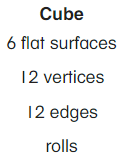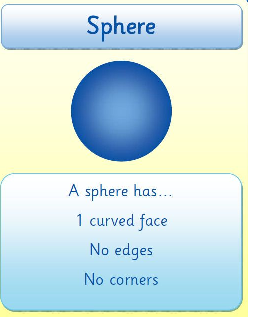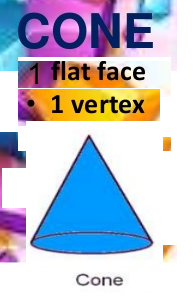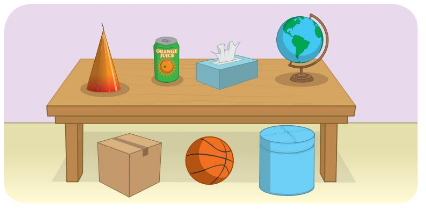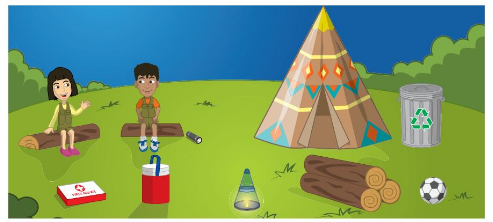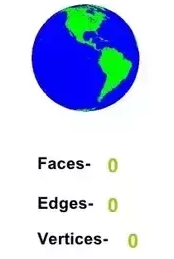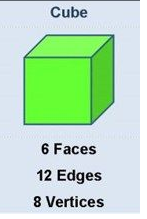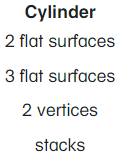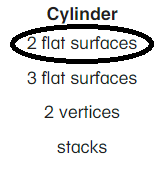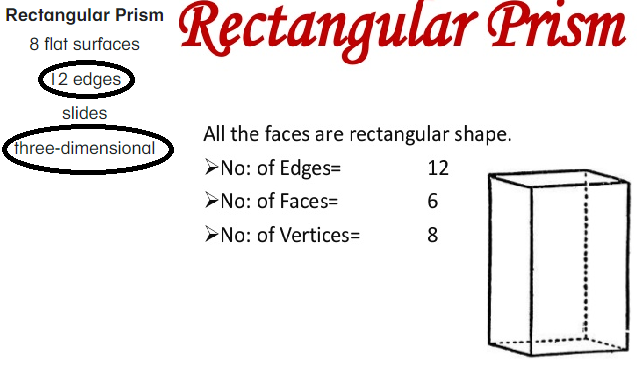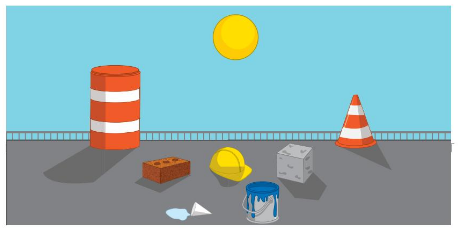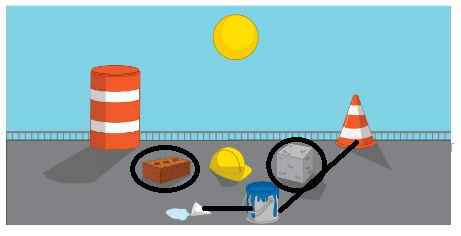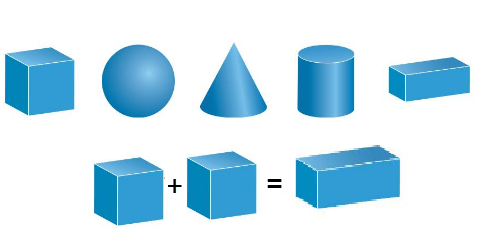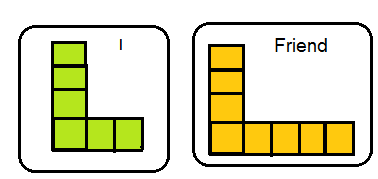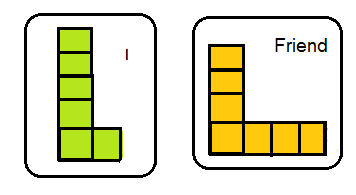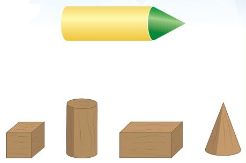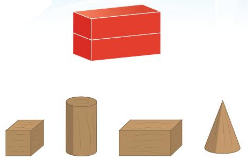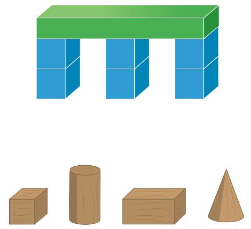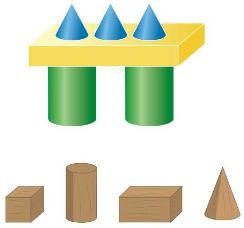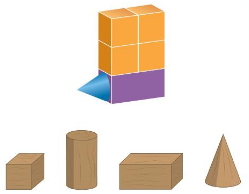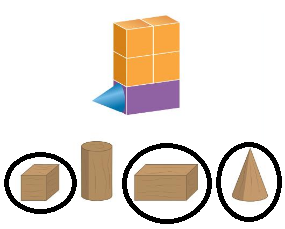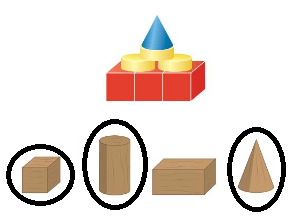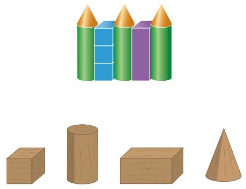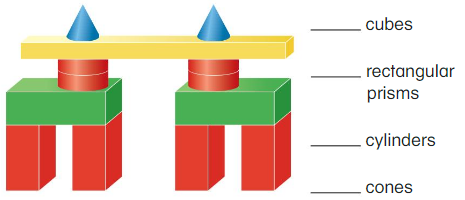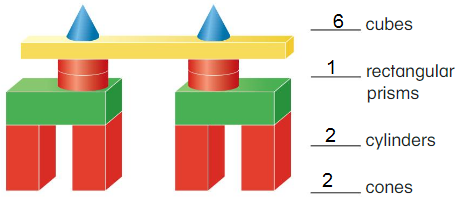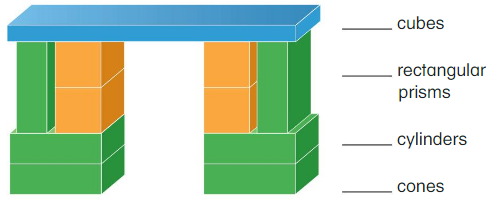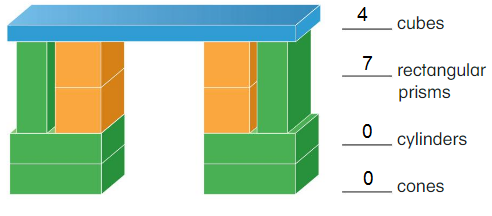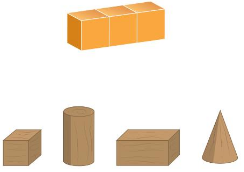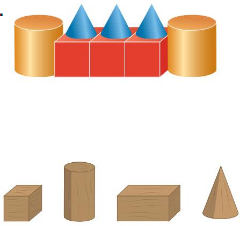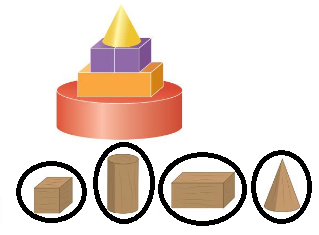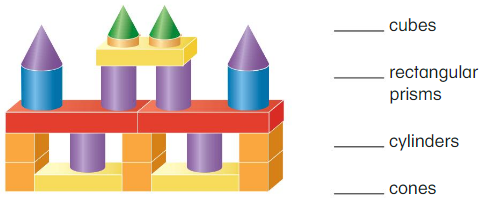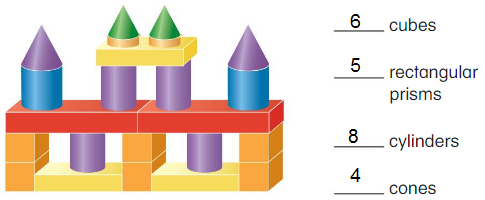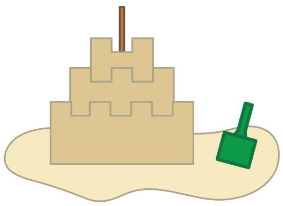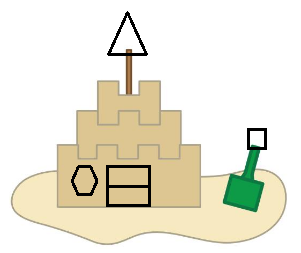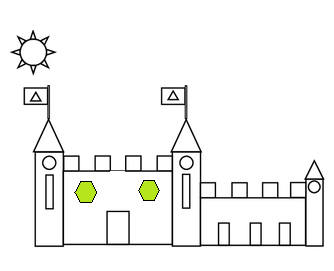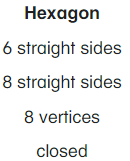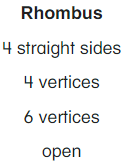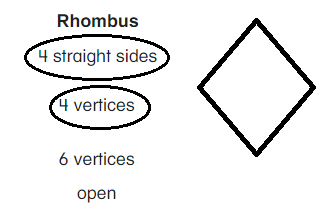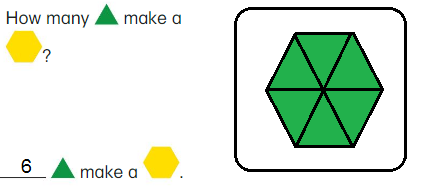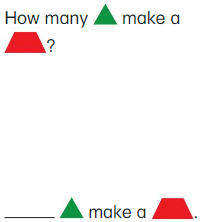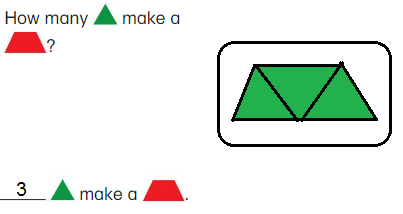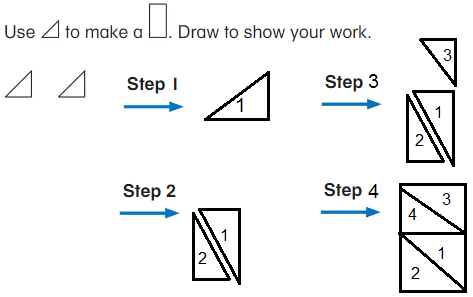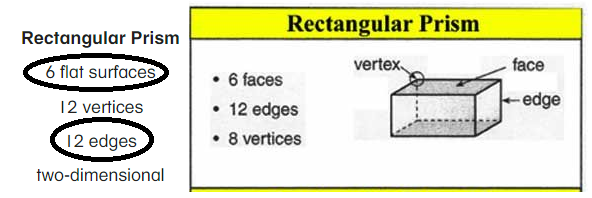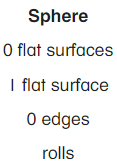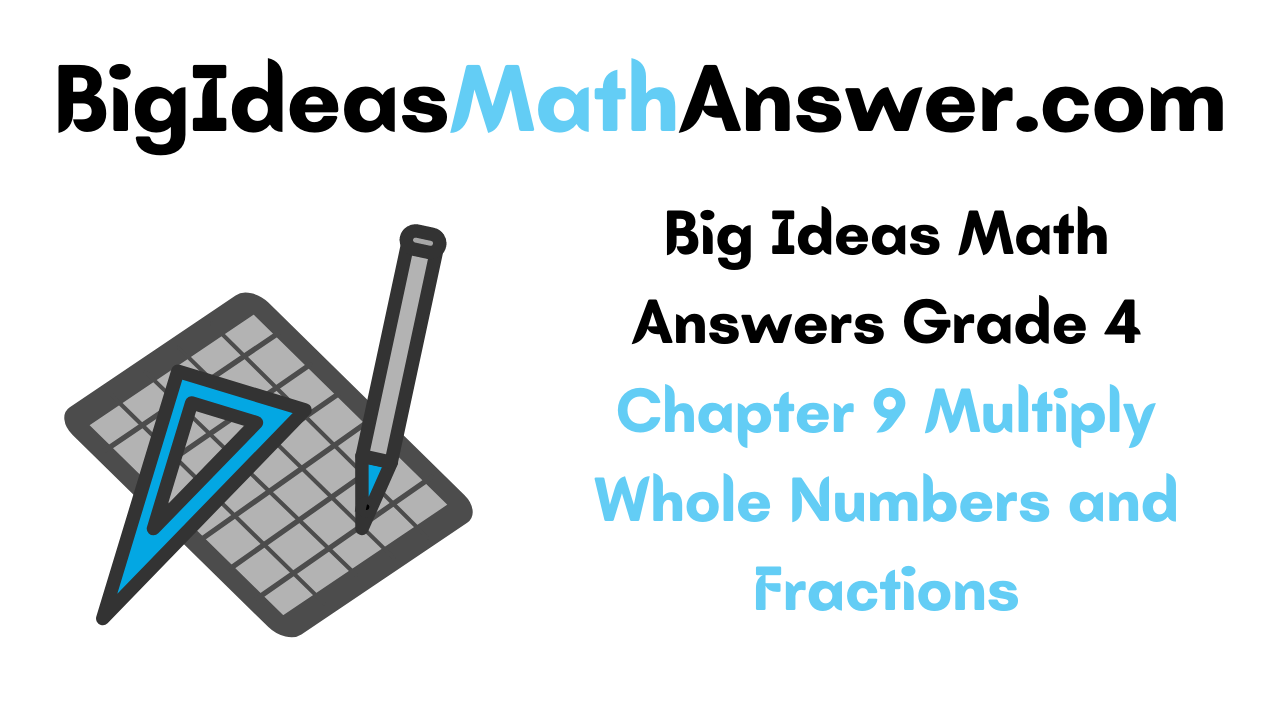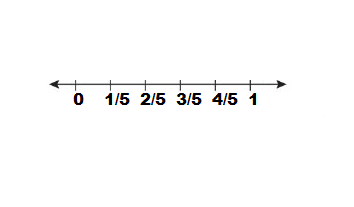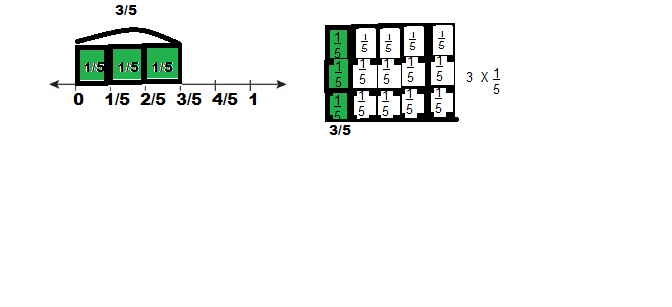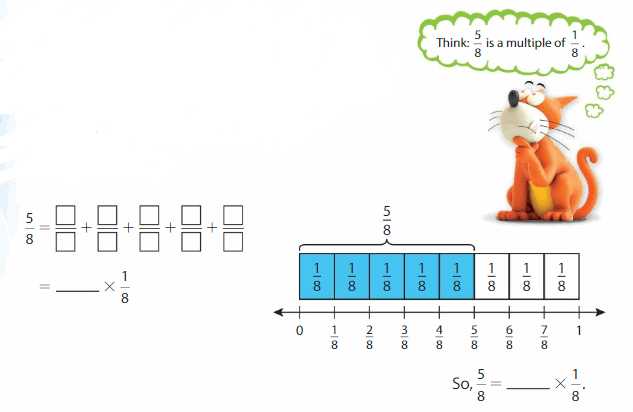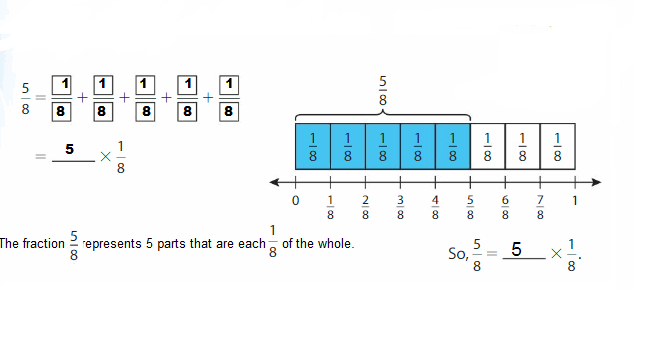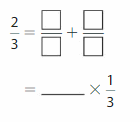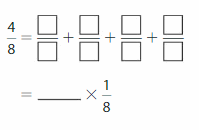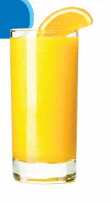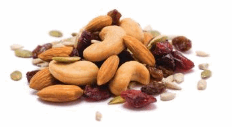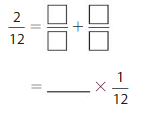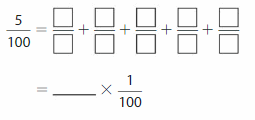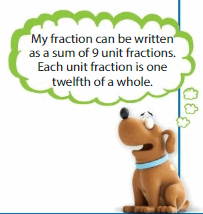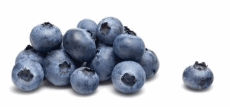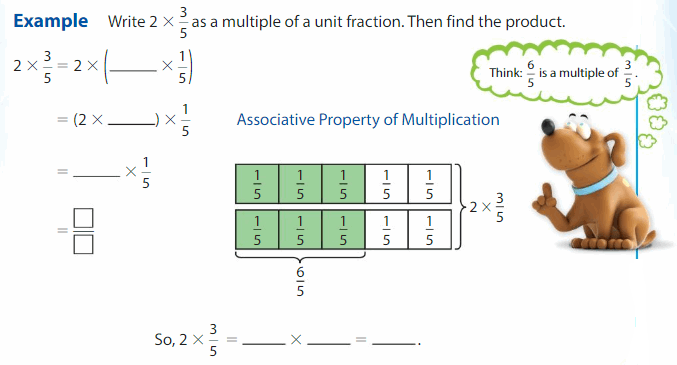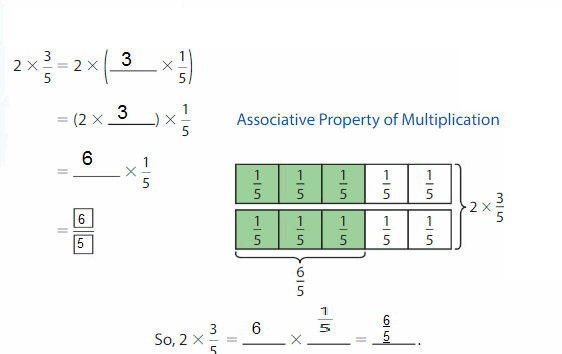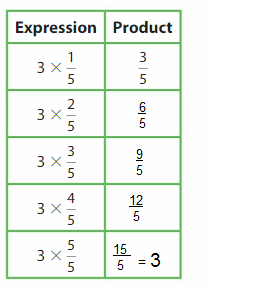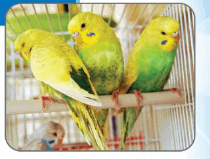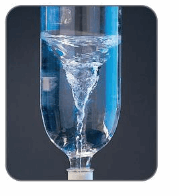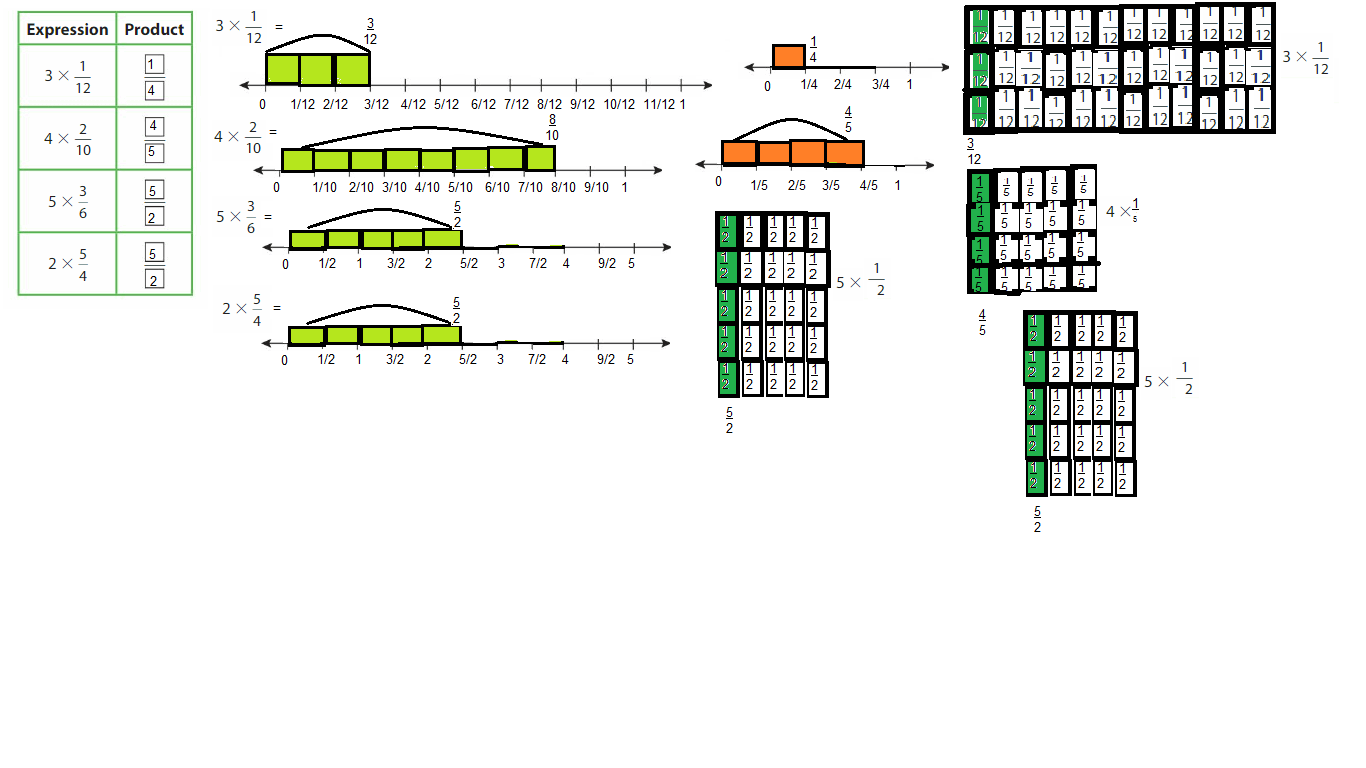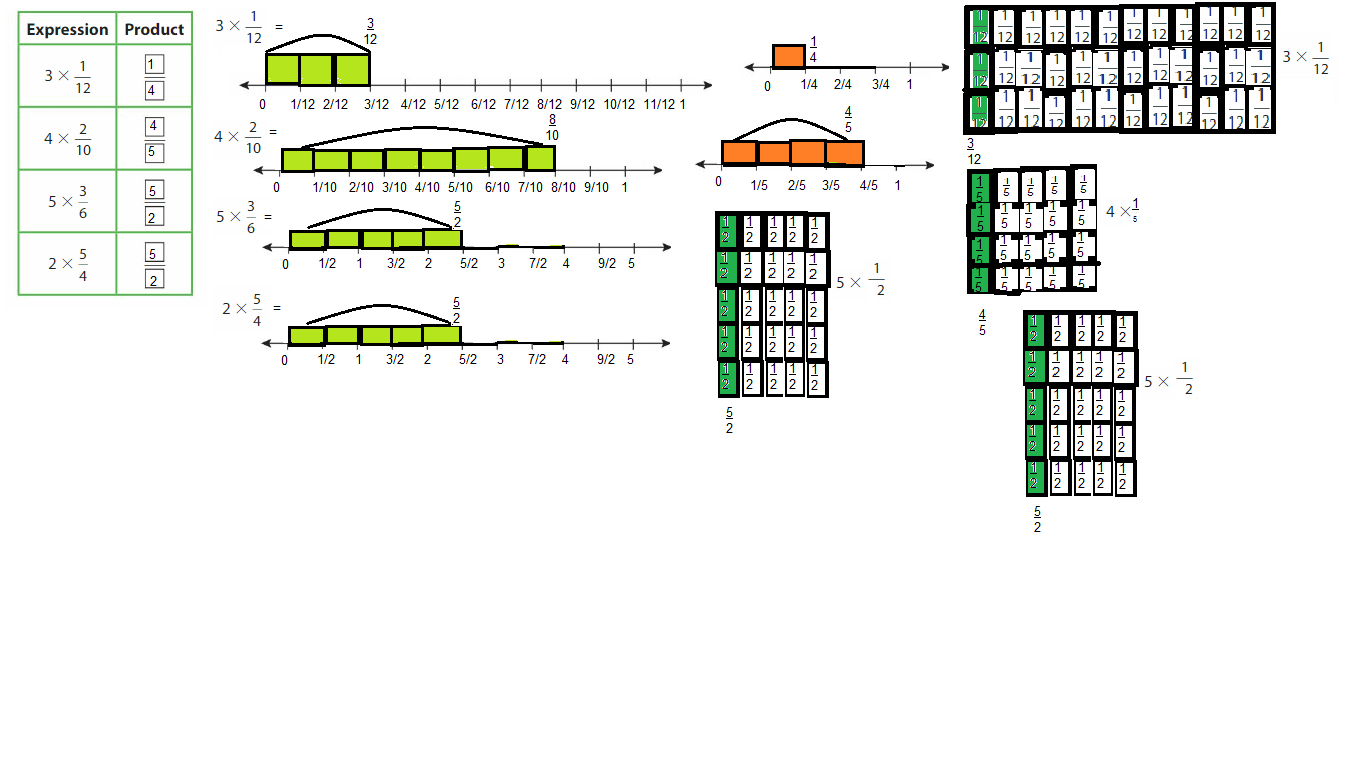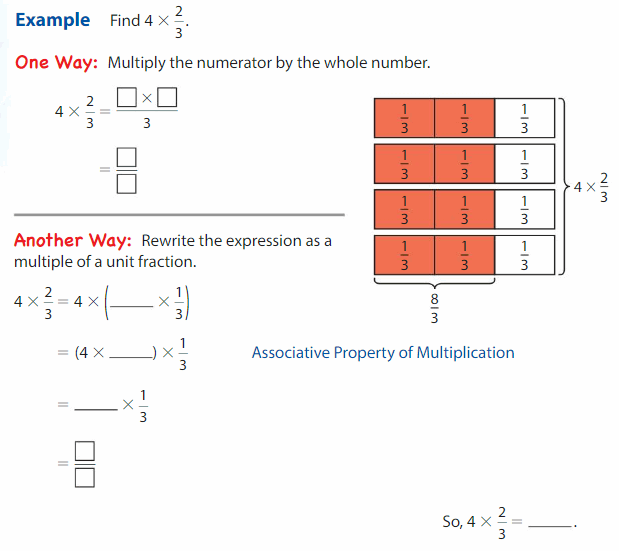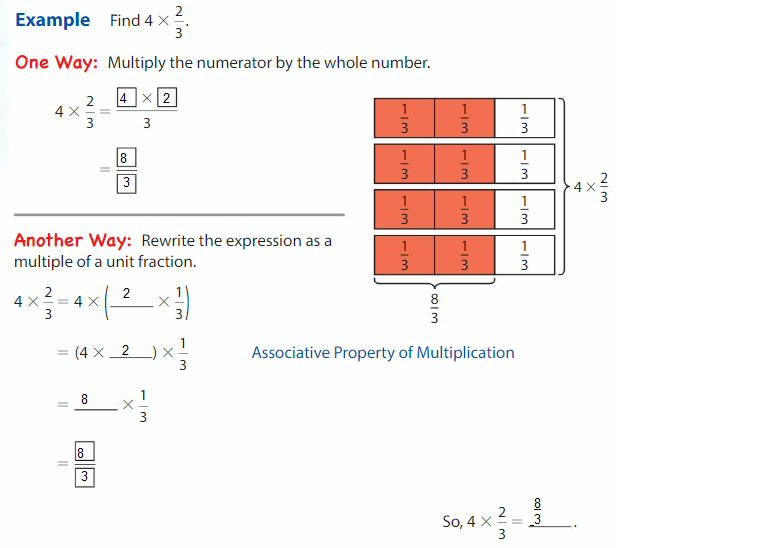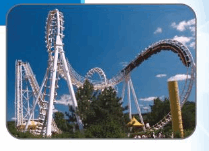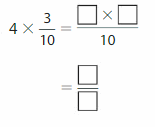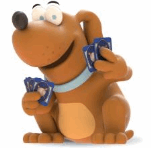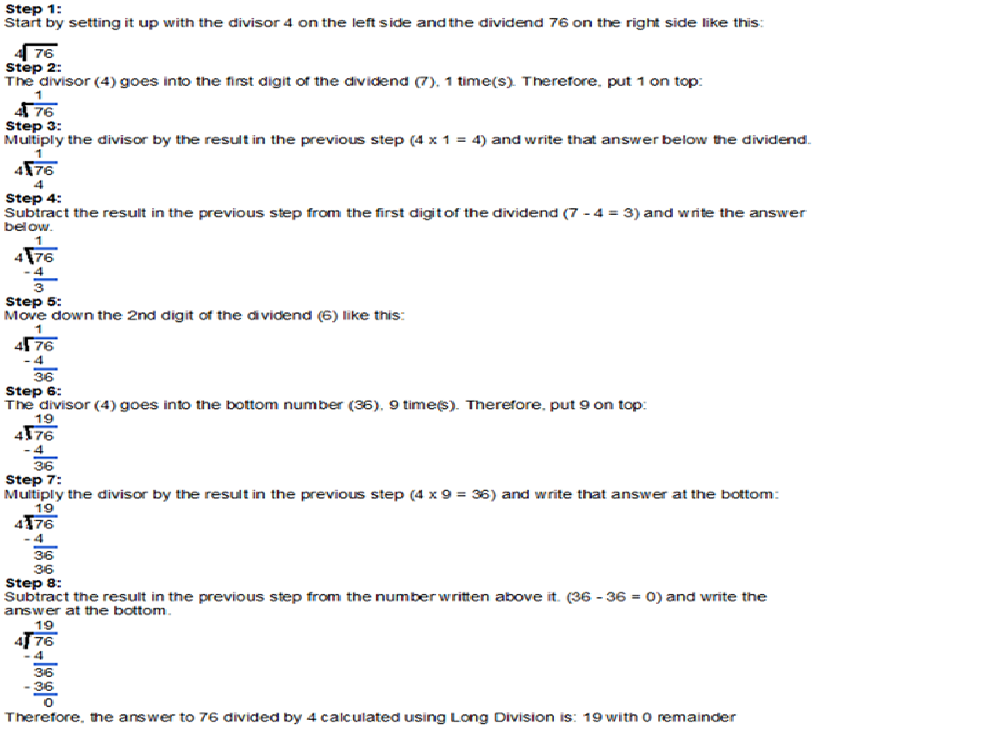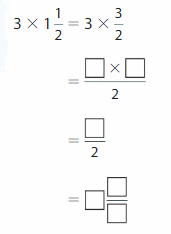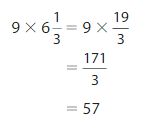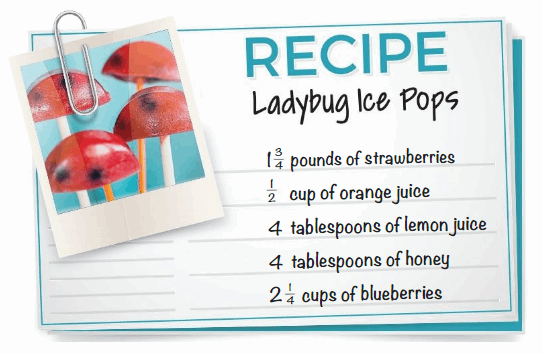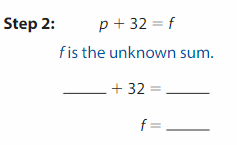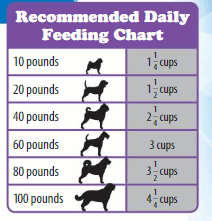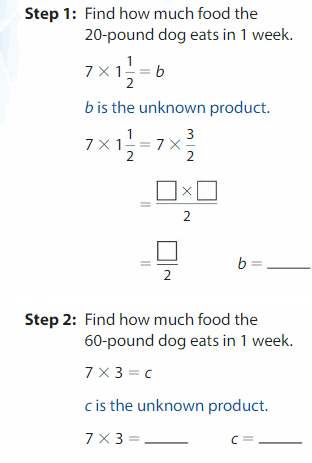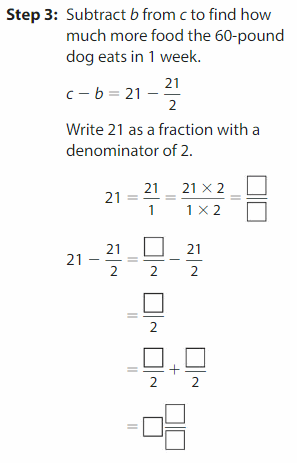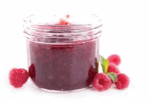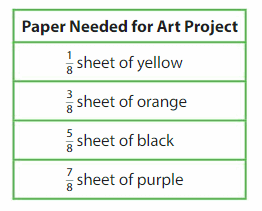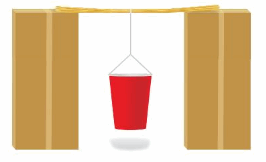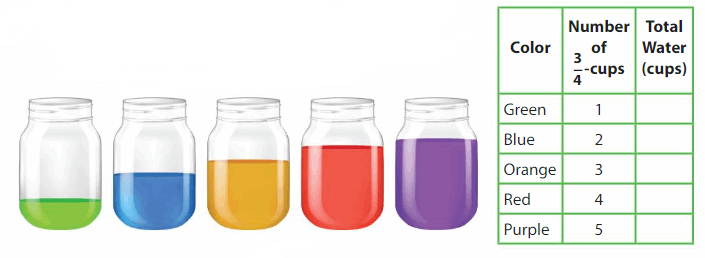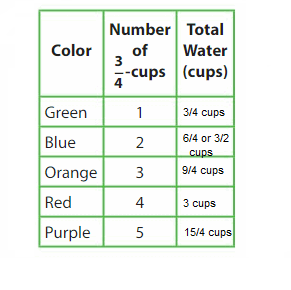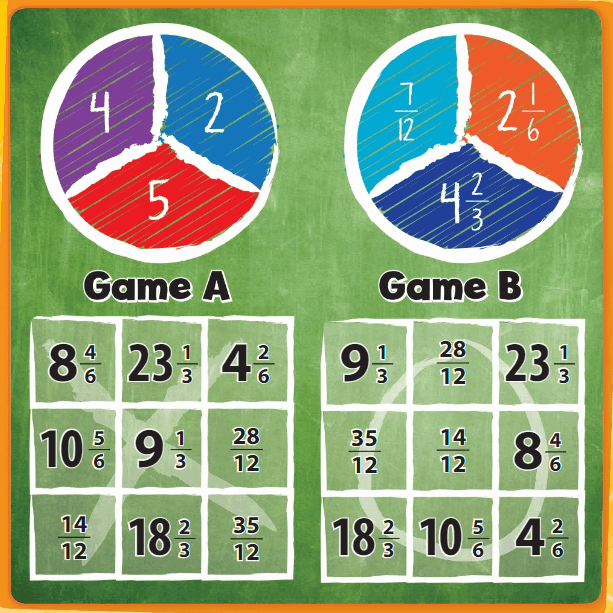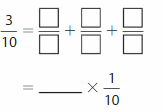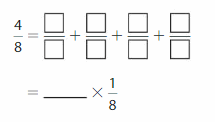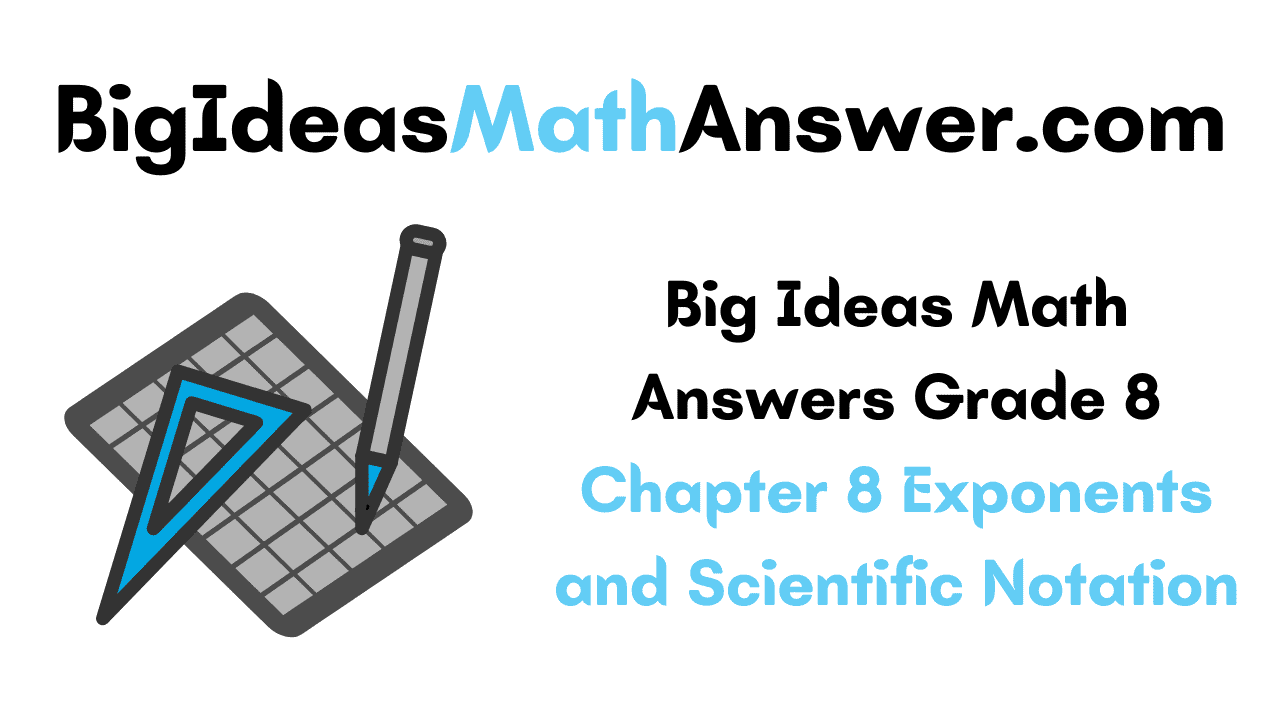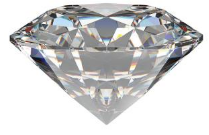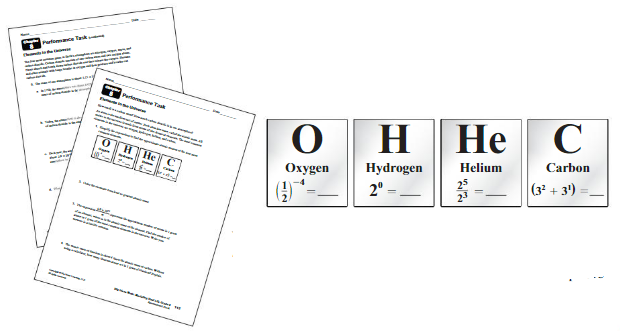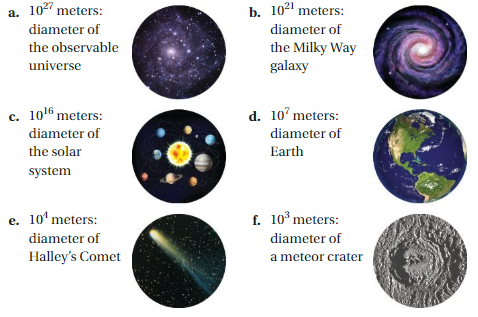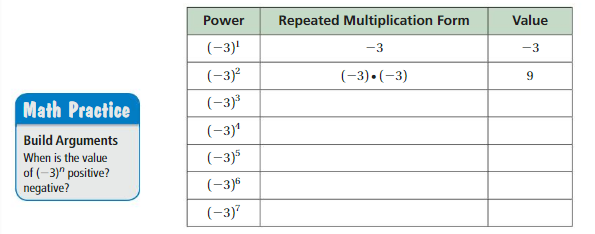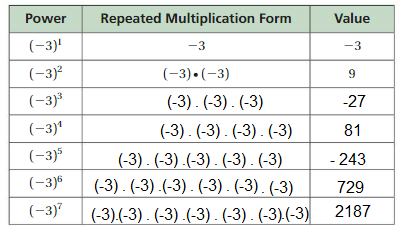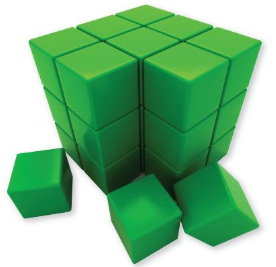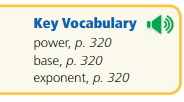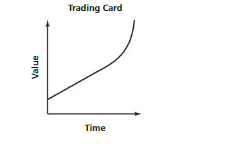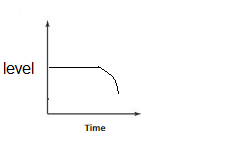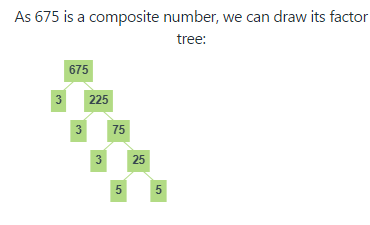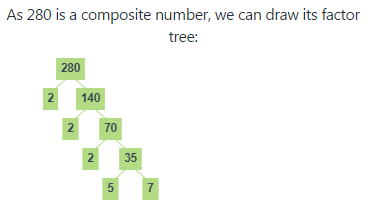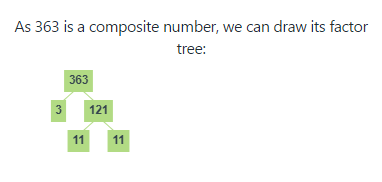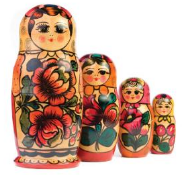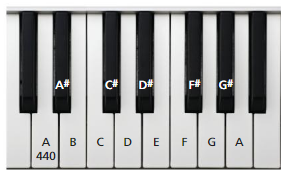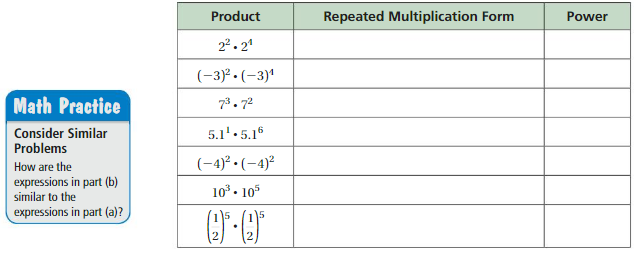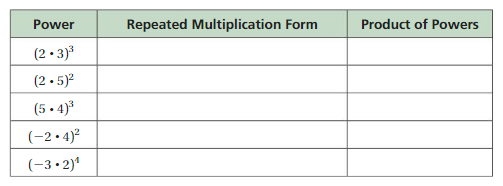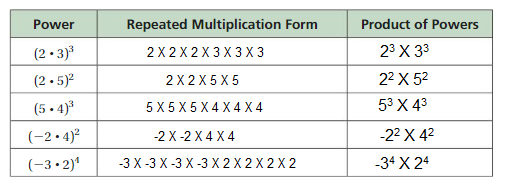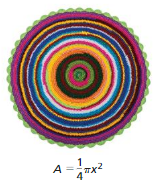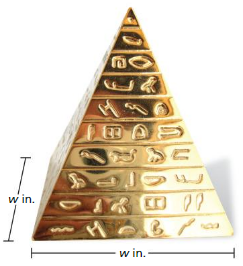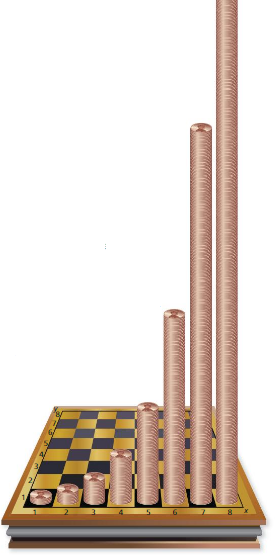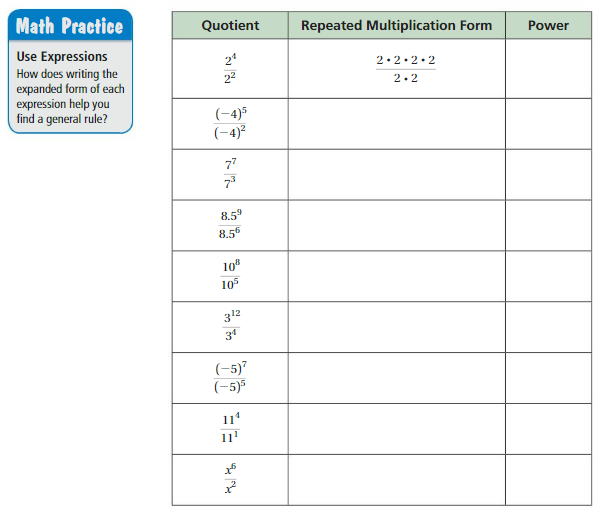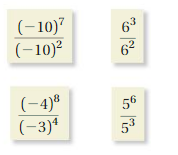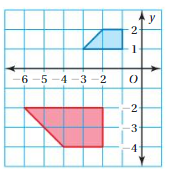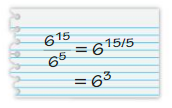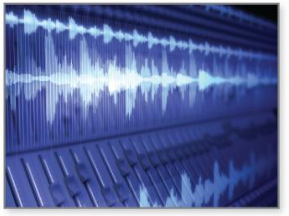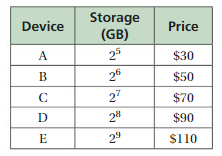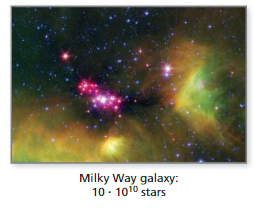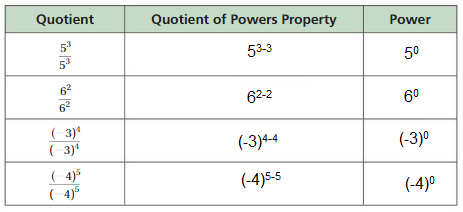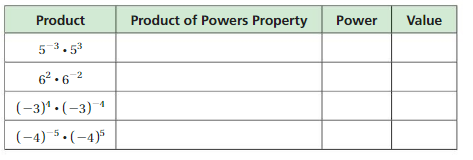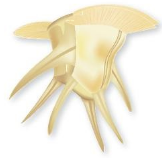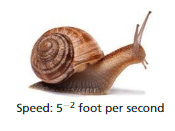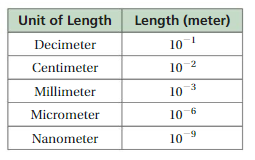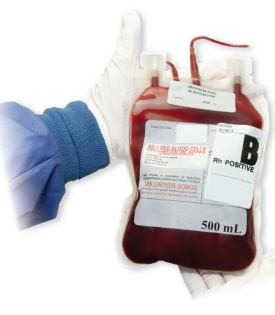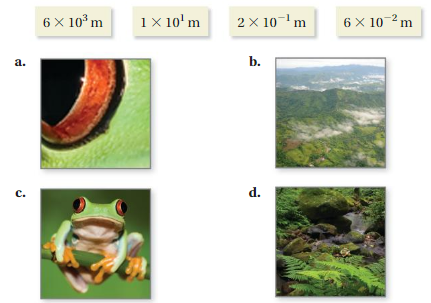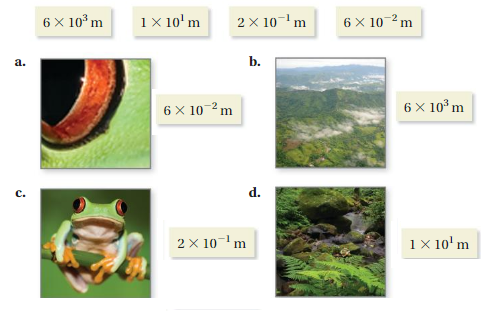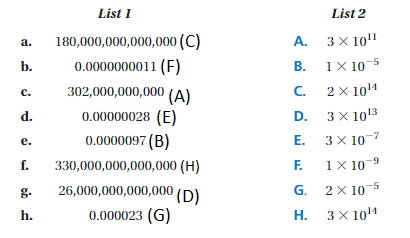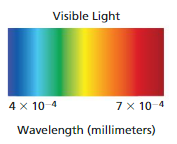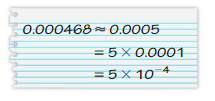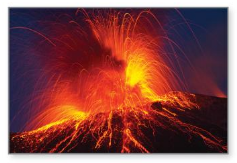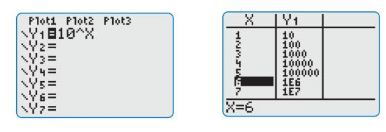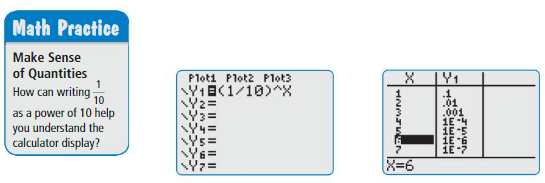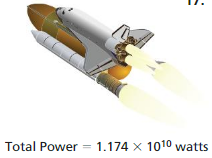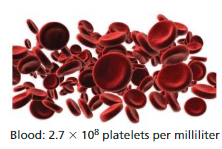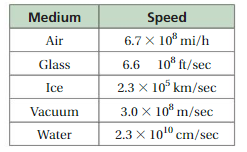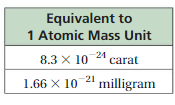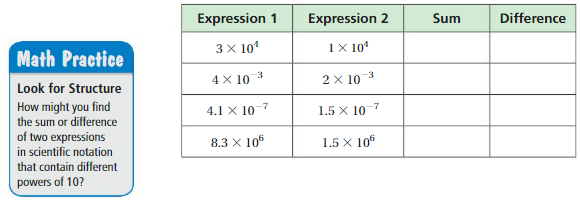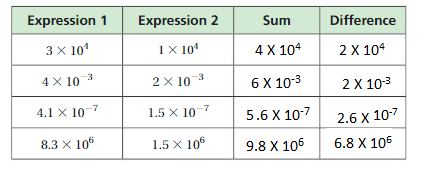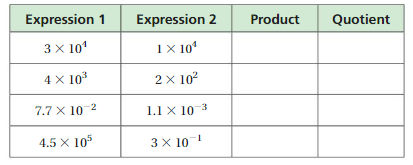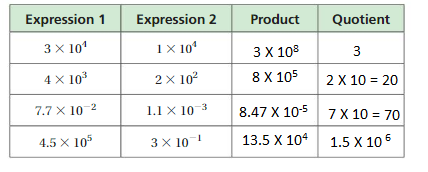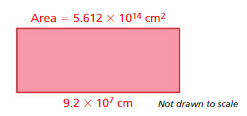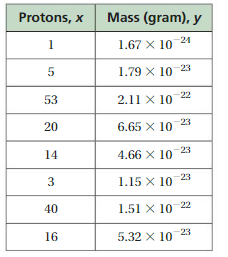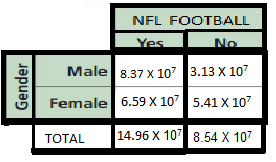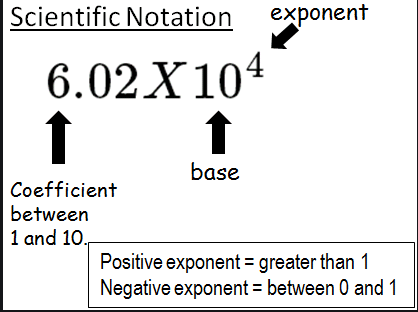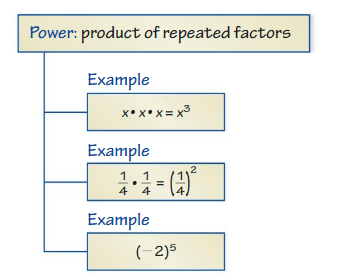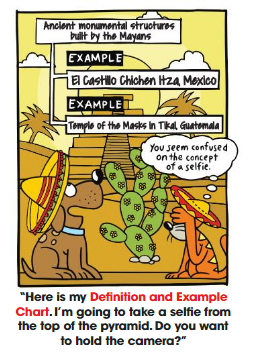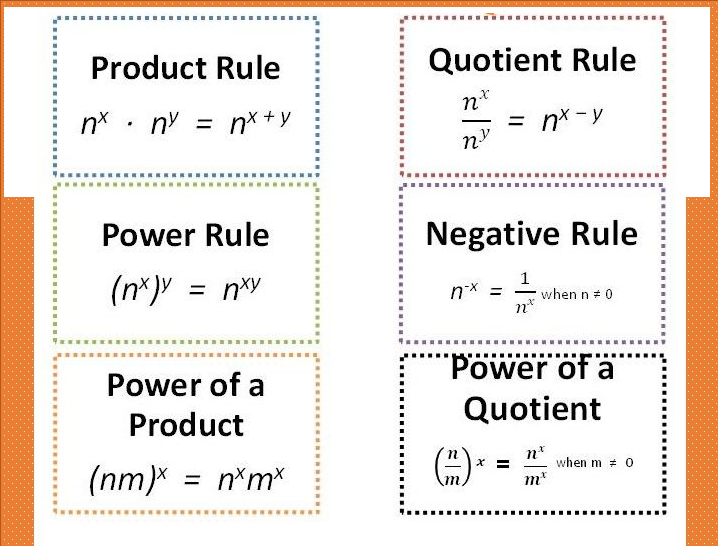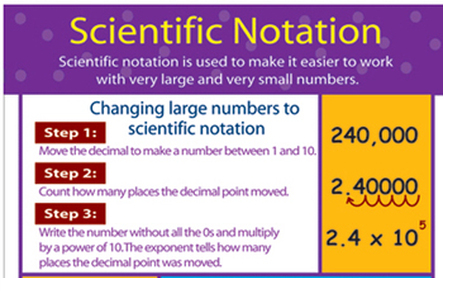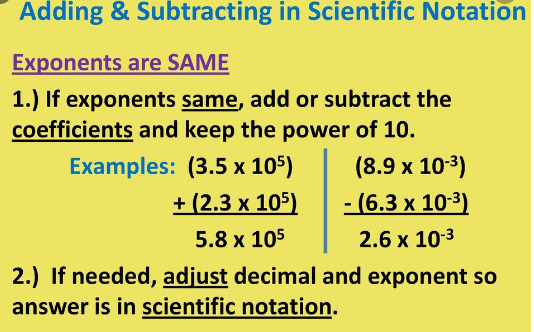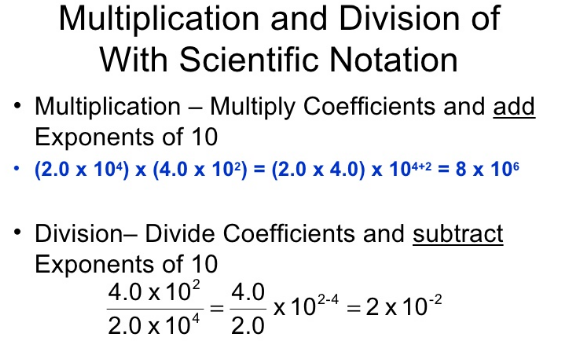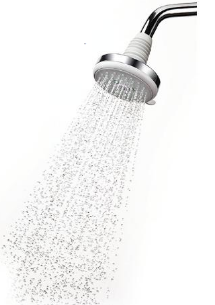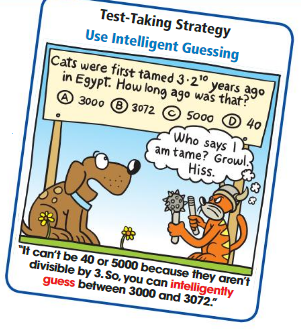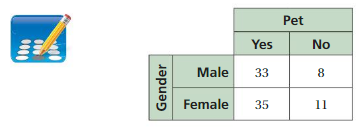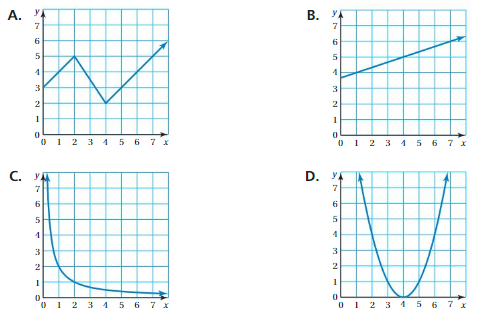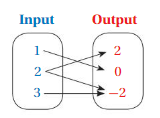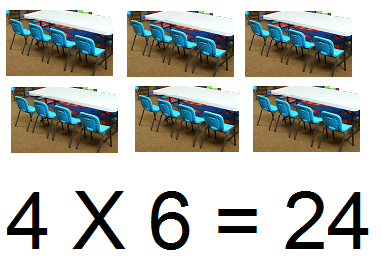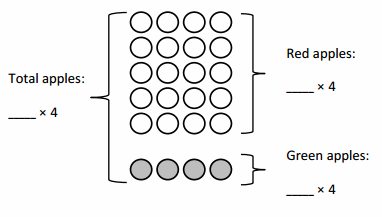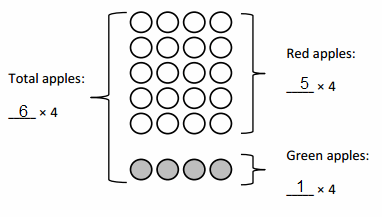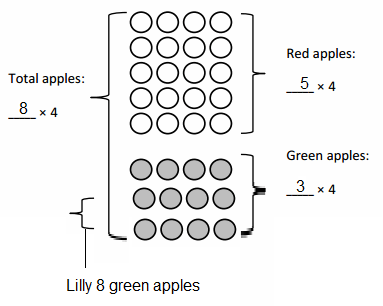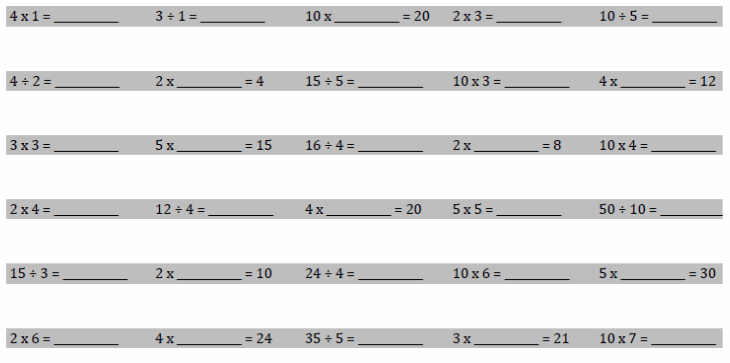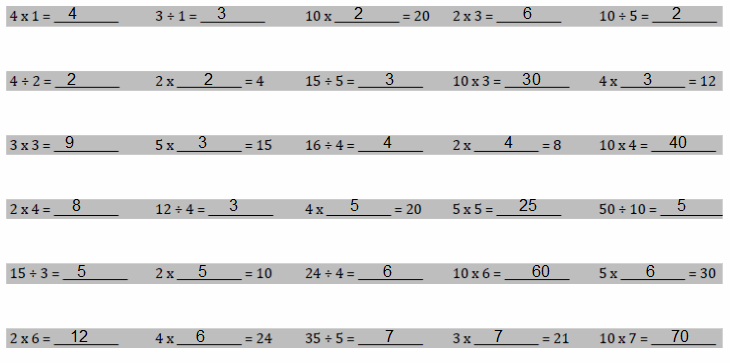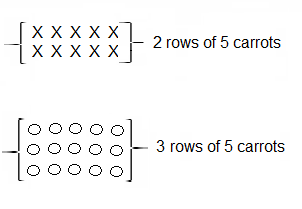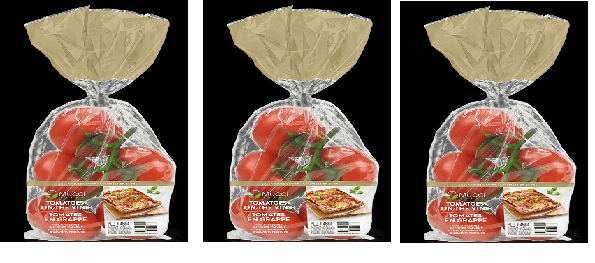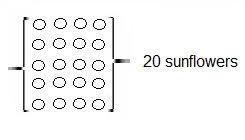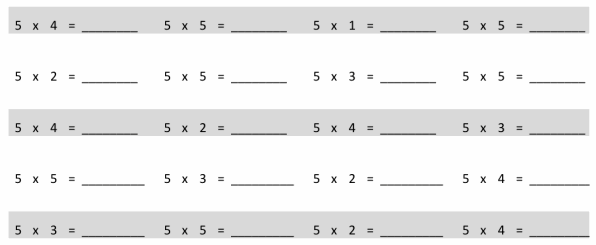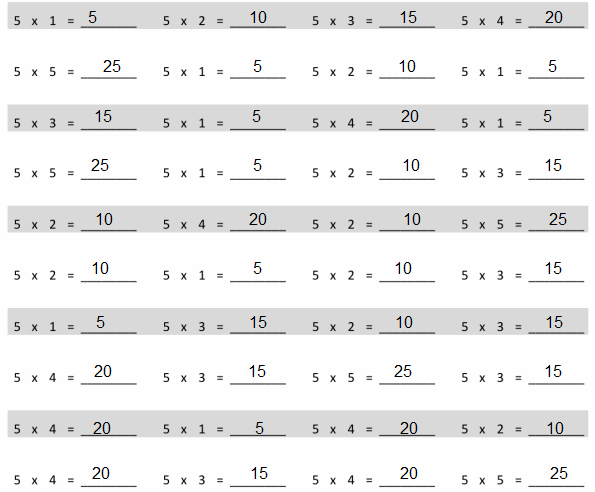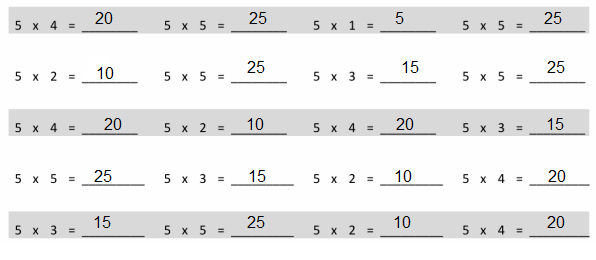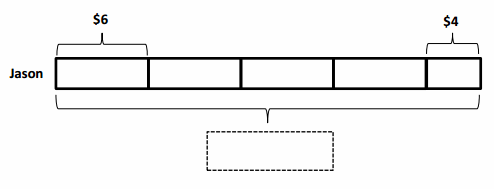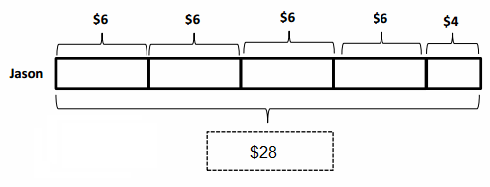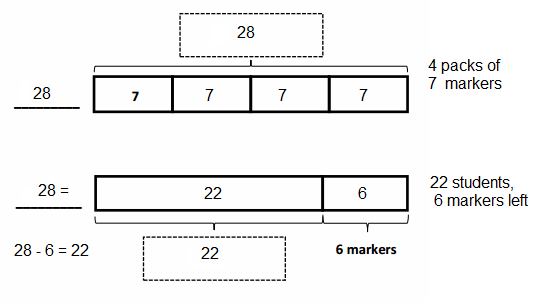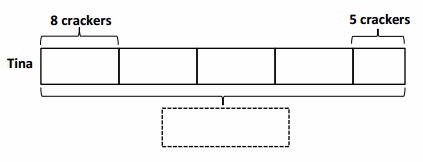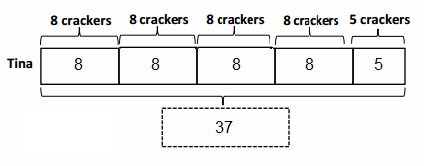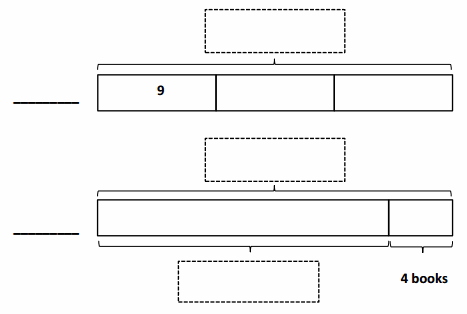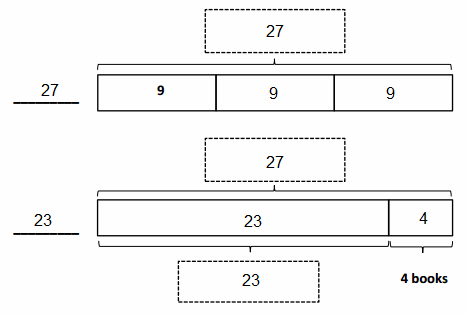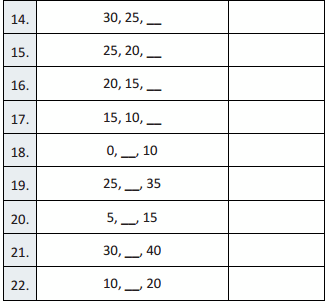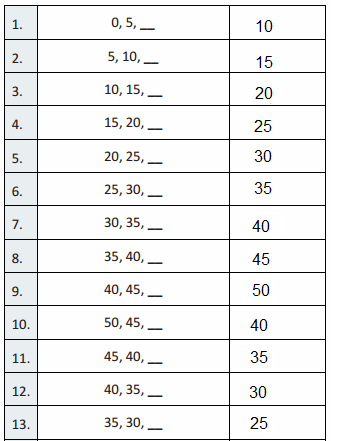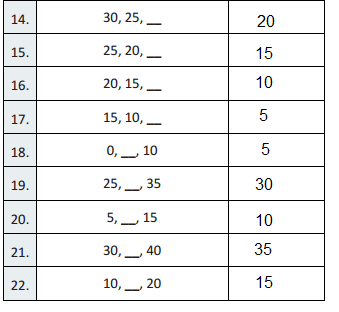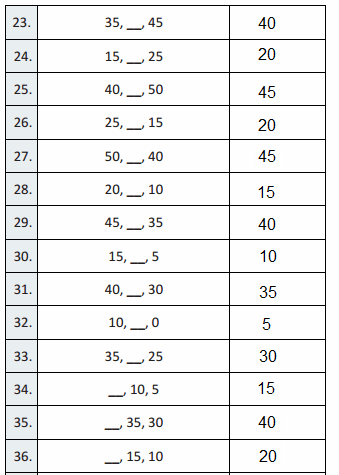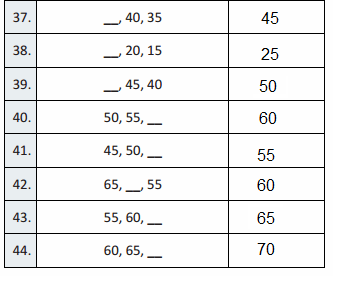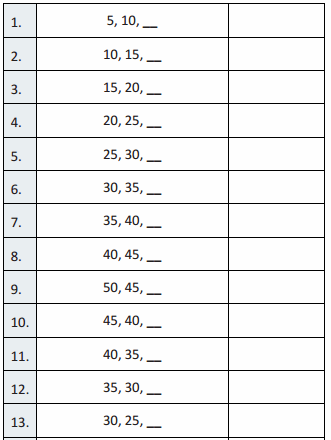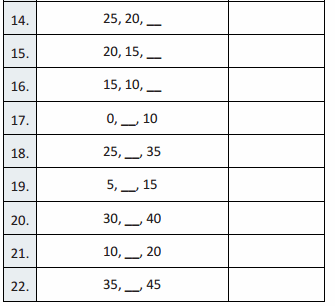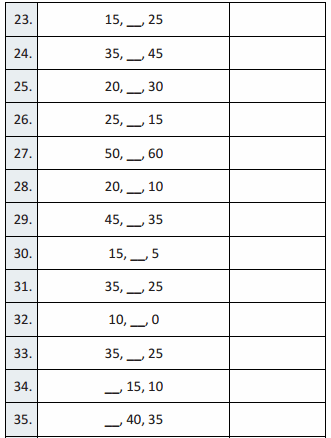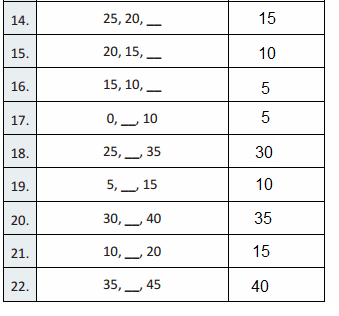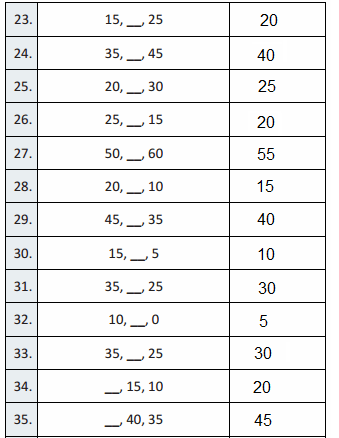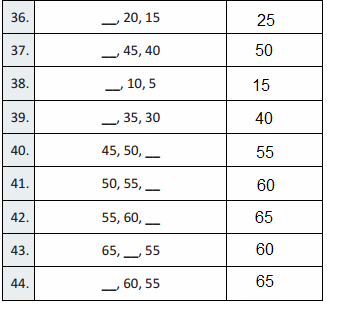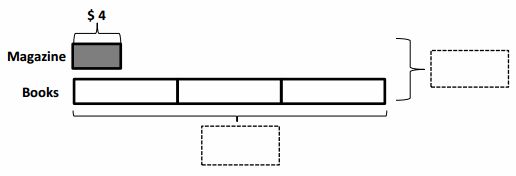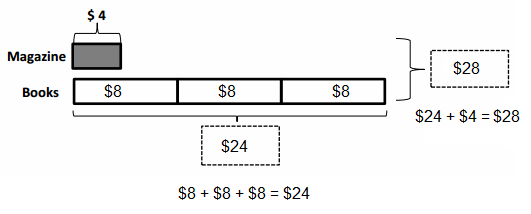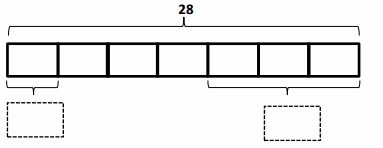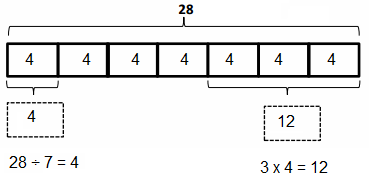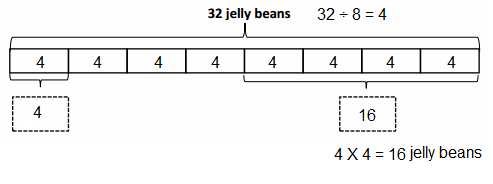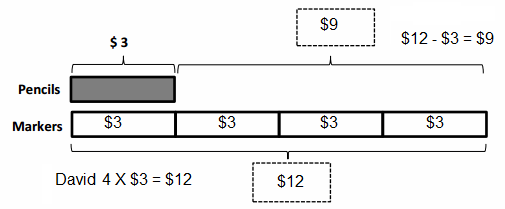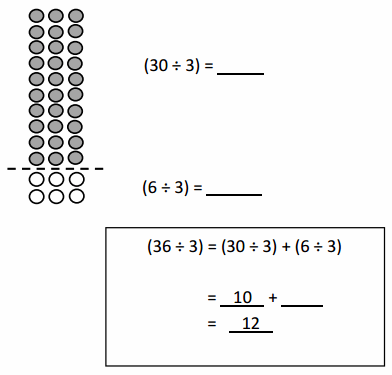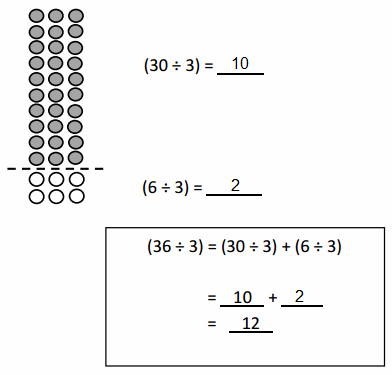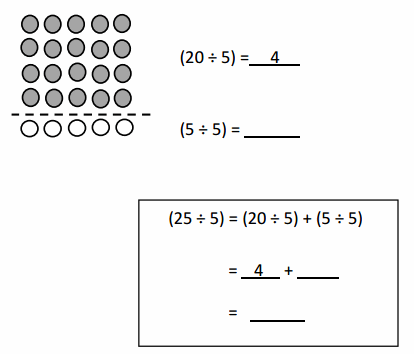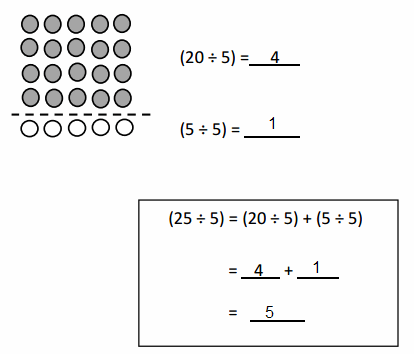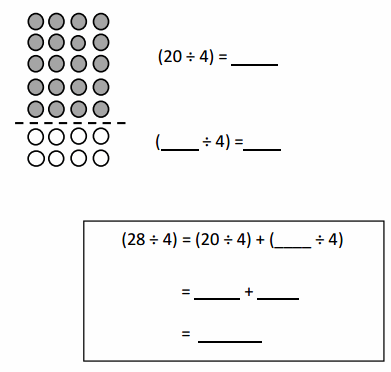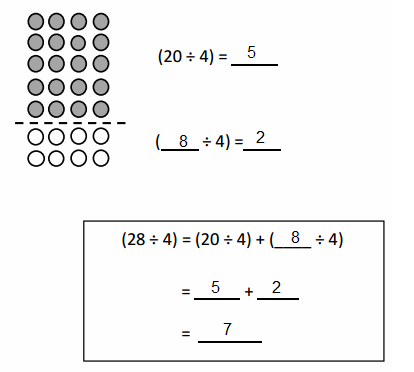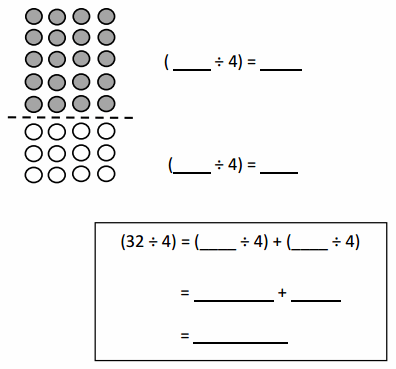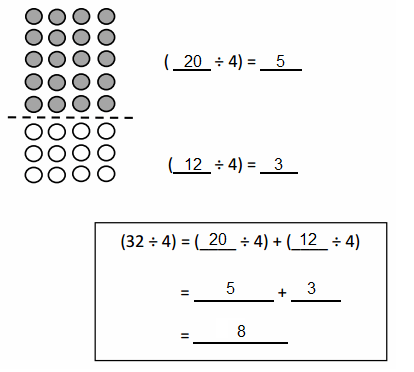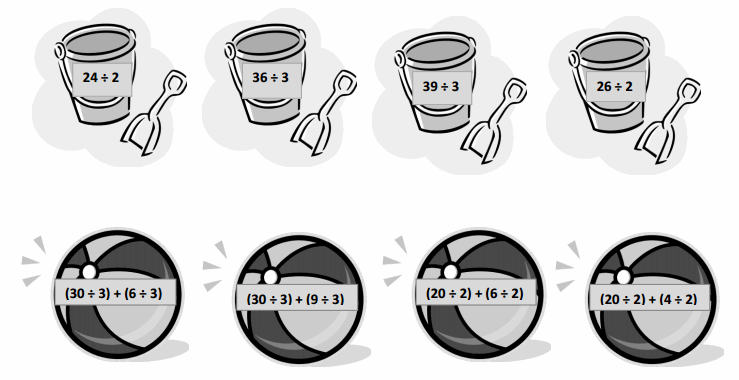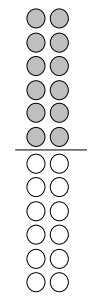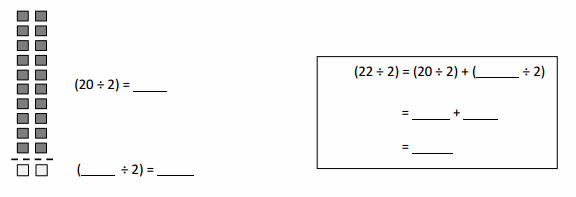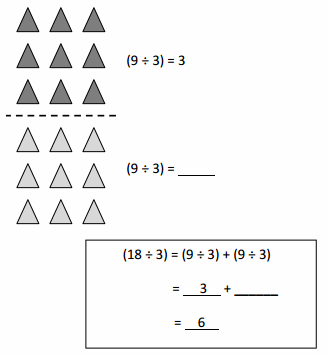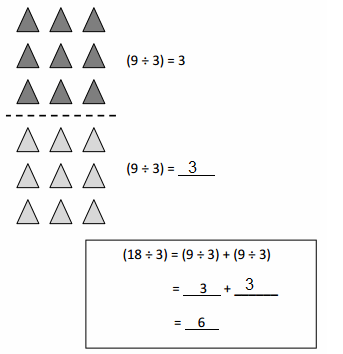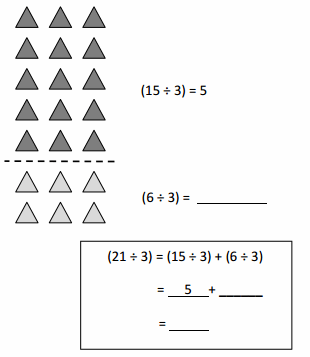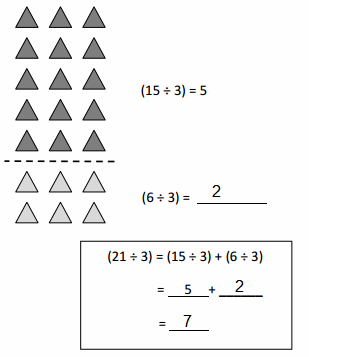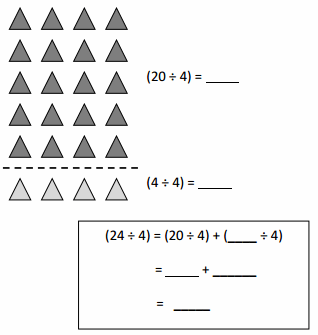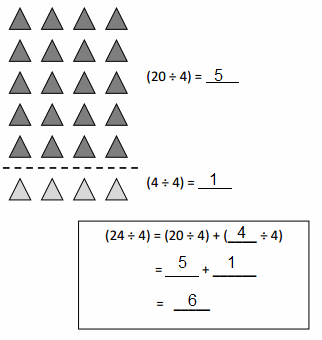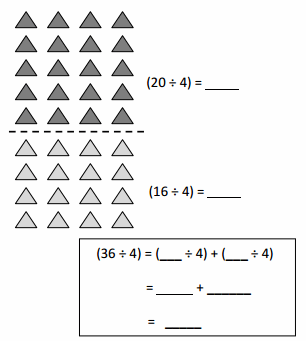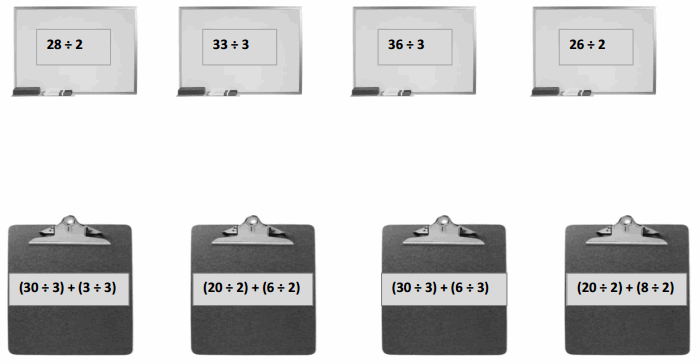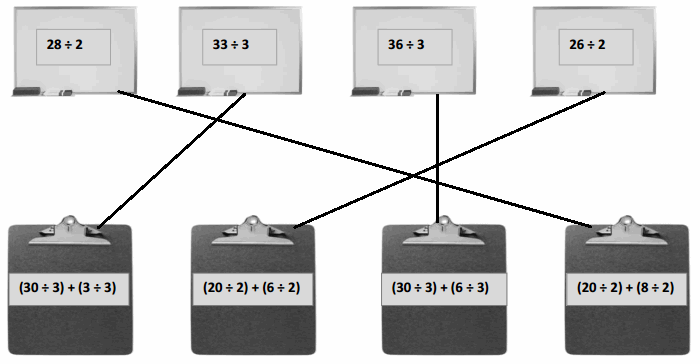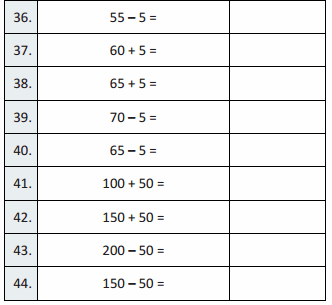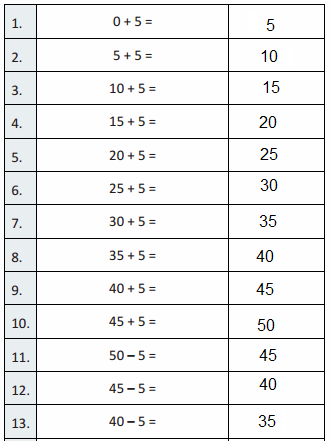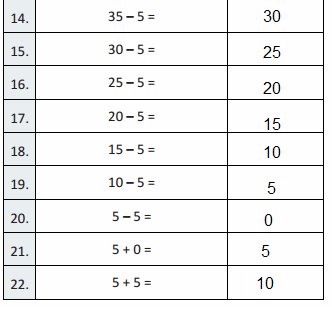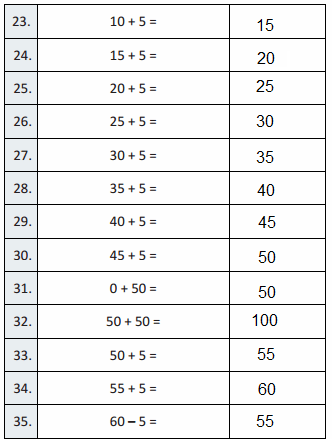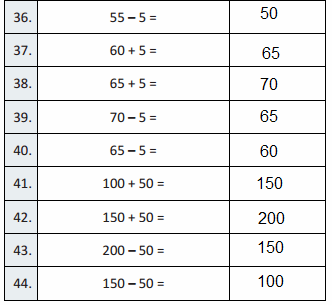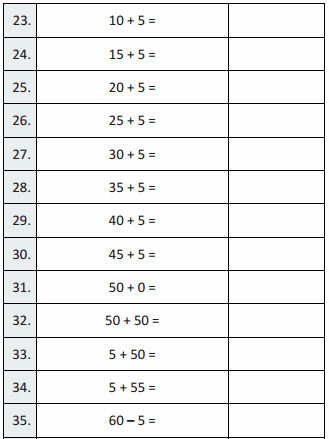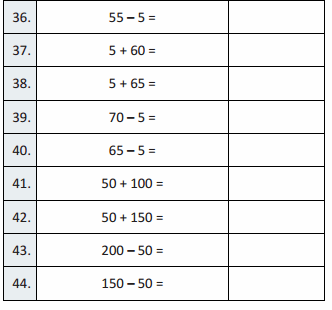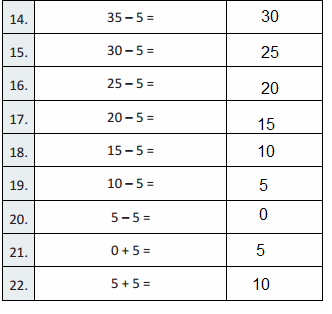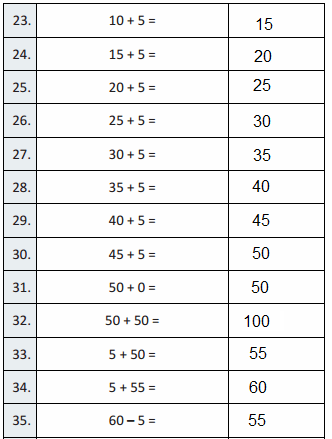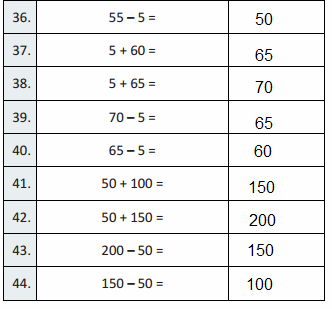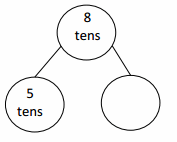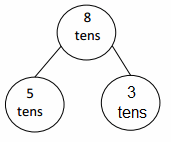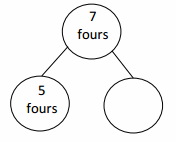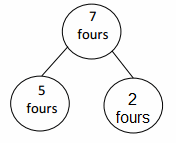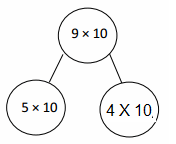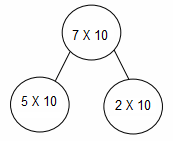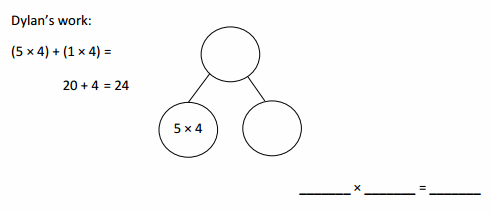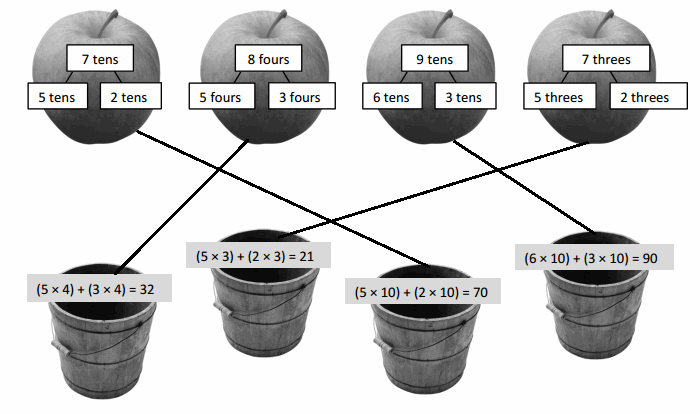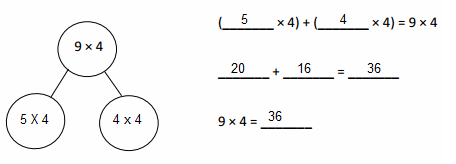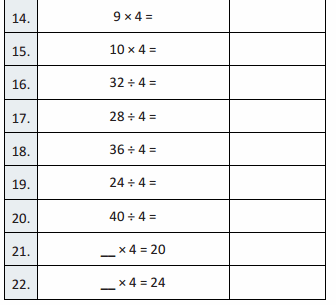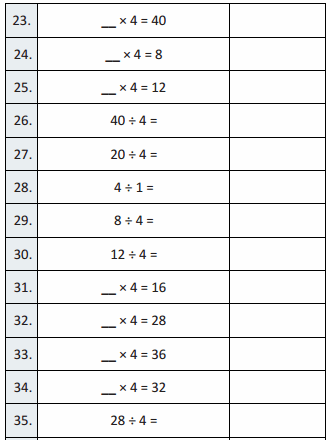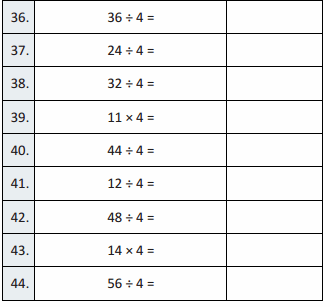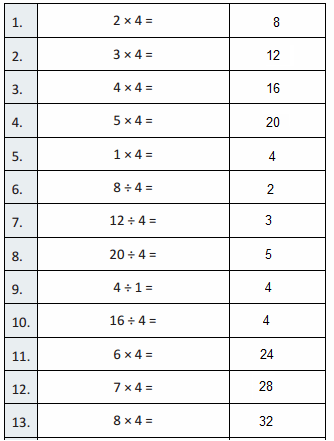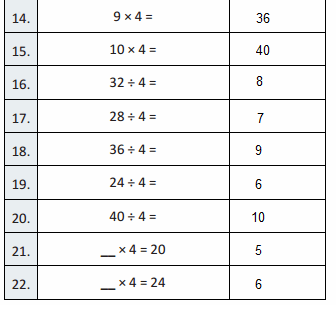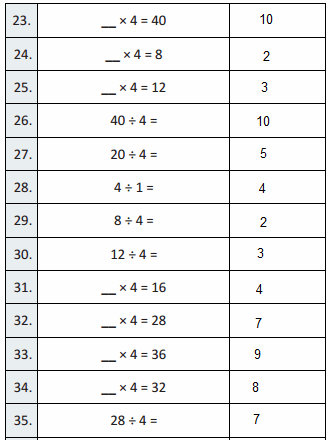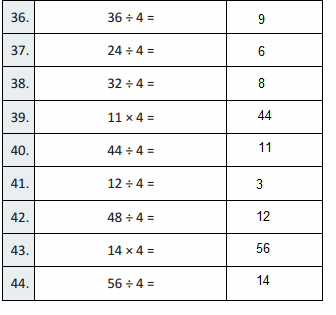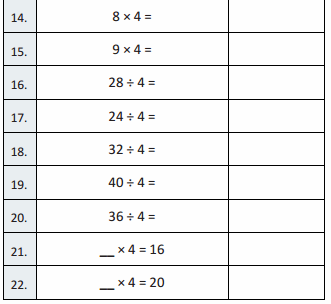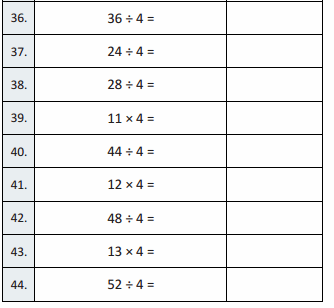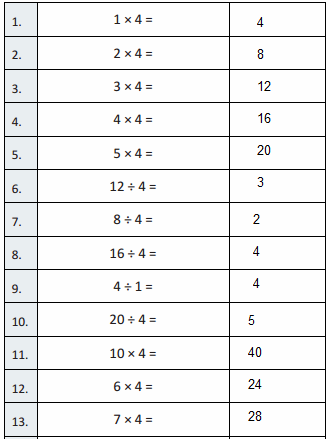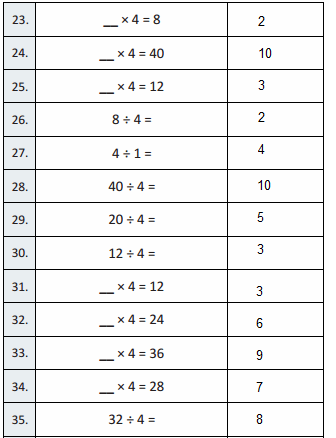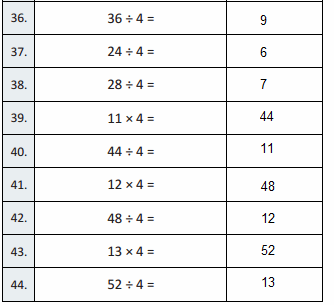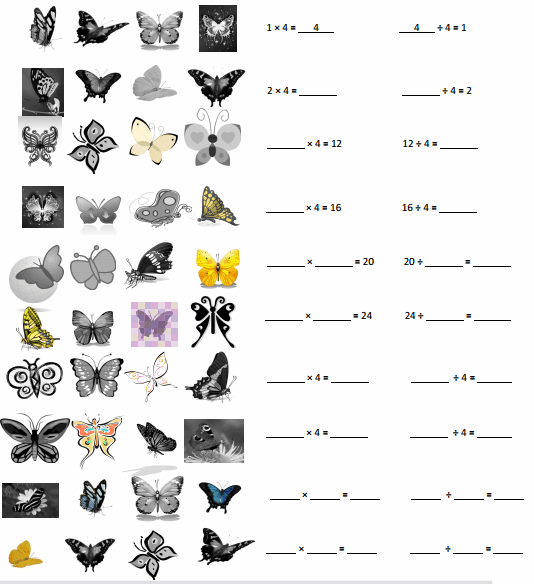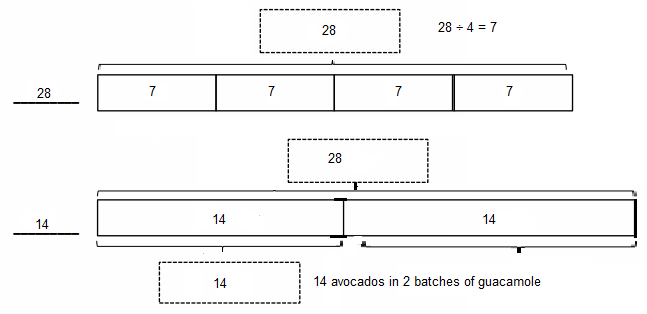Clearing the math exams without proper guidance and preparation is really tough. Big Ideas Math Answers Grade 6 Chapter 2 Fractions and Decimals preparatory material is prepared by highly experienced subject experts. After great research and easy-to-understand concepts, the material is prepared which helps the candidates in all-over preparation. While practicing the various questions, Big Ideas Math Book 6th Grade Answer Key Chapter 2 Fractions and Decimals helps you. You can find all the questions and cross-check them with the solutions present in the book.
Big Ideas Math Book 6th Grade Answer Key Chapter 2 Fractions and Decimals
Regular practice of all questions present in Big Ideas Math Book 6th Grade Answer Key Chapter 2 Fractions and Decimals will indulge confidence in you. To attempt the exam with confidence and to score better marks, practice all the questions given in that book. All the topics in Big Ideas Math Answers Grade 6 Chapter 2 Fractions and Decimals are prepared in a certain way that all the candidates can understand them easily. Follow all the material given in here and click on the links below to kickstart your preparation and to score the expected marks.
Fractions and Decimals
Lesson: 1 Multiplying Fractions
Lesson: 2 Dividing Fractions
Lesson: 3 Dividing Mixed Numbers
Lesson: 4 Adding and Subtracting Decimals
Lesson: 5 Multiplying Decimals
Lesson: 6 Dividing Whole Numbers
Lesson: 7 Dividing Decimals
Chapter: 2 – Fractions and Decimals
Fractions and Decimals STEAM VIDEO/Performance
STEAM Video
Space is Big
An astronomical unit (AU) is the average distance between Earth and the Sun, about 93 million miles. Why do astronomers use astronomical units to measure distances in space? In what different ways can you compare the distances between objects and the locations of objects using the four mathematical operations?
Answer:
The space beyond Earth is so incredibly vast that units of measure
which are convenient for us in our everyday lives can become GIGANTIC.
Distances between the planets, and especially between the stars,
can become so big when expressed in miles and kilometers that they’re unwieldy.
So for cosmic distances, we switch to whole other types of units:
astronomical units, light years and parsecs.
Astronomical units, abbreviated AU, are a useful unit of measure
within our solar system. One AU is the distance from the Sun to Earth’s orbit,
which is about 93 million miles (150 million kilometers).
Watch the STEAM Video “Space is Big.” Then answer the following questions.
1. You know the distances between the Sun and each planet.
How can you find the minimum and maximum distances between
two planets as they rotate around the Sun?

Given the distances between the sun and each planet we
can find the minimum and maximum approximately distances
between two planets around the sun, we have each
planet distance now we will see which is farthest and
which planet is near to sun, then subtract the larger one
from smaller and tell the distances from them,
Example the distance from sun to mars is 5 AU and
sun to mercury is 2 AU,
then the distance from mercury to mars is 5 – 2 = 3 AU.
2. The table shows the distances of three celestial bodies from Earth.
It takes about three days to travel from Earth to the Moon.
How can you estimate the amount of time it would take to travel from
Earth to the Sun or to Venus?

Earth to the Sun ≈ 1190 days ,
Earth to Venus ≈ 330 days
Explanation:
Speed = Distance ÷ Time ,
We have distance from Earth to Moon is 0.00256 and
time is 3 days = 3 X 24 = 72 hours
now speed is = 0.00256 ÷ 72 = 0.0000355 AU per hour,
now we have distance from Earth to Sun is 1 AU and speed as
0.000035 per hour, Time taken is distance by speed =
1 ÷ 0.000035 = 28571.428 hours, now we divide by 24 to get days as
28571.428 ÷ 24 = 1190.4 days ≈ 1190 days to travel from Earth to Sun,
now we have distance from Earth to Venus as 0.277 Au and speed as
0.000035 per hour, Time taken is 0.277 ÷ 0.000035 = 7914.28 hours,
now we divide by 24 to get number of days as 7914.28 ÷ 24 = 329.7 ≈
330 days to travel from Earth to Venus.
Performance Task
Space Explorers
After completing this chapter, you will be able to use the concepts you learned to answer the questions in the STEAM Video Performance Task.

You will use a table that shows the average distances between the Sun and each planet in our solar system to find several distances in space. Then you will use the speed of the Orion spacecraft to answer questions about time and distance.
Is it realistic for a manned spacecraft to travel to each planet in our solar system? Explain why or why not.
Fractions and Decimals Getting Ready for Chapter 2
Chapter Exploration
Work with a partner. The area model represents the multiplication of two fractions. Copy and complete the statement.
Question 1.
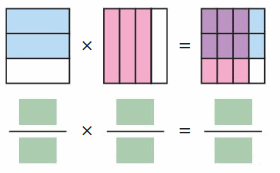
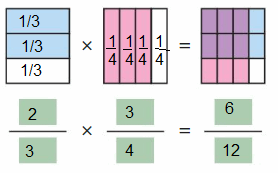
\(\frac{2}{3}\) X \(\frac{3}{4}\) = \(\frac{6}{12}\)
Explanation:
Step I: We multiply the numerators as 2 X 3 = 6
Step II: We multiply the denominators as 3 X 4 =12
Step III: We write the fraction in the simplest form as
\(\frac{6}{12}\),
So \(\frac{2}{3}\) X \(\frac{3}{4}\) = \(\frac{6}{12}\)
Question 2.


\(\frac{1}{2}\) X \(\frac{2}{3}\) = \(\frac{2}{6}\)
Explanation:
First part is \(\frac{1}{2}\) and second part is \(\frac{2}{3}\)
Step I: We multiply the numerators as 1 X 2 = 2
Step II: We multiply the denominators as 2 X 3 = 6
Step III: We write the fraction in the simplest form as
\(\frac{2}{6}\),
So \(\frac{1}{2}\) X \(\frac{2}{3}\) = \(\frac{2}{6}\)
Question 3.
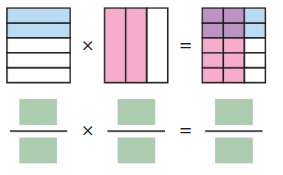
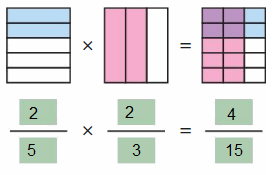
\(\frac{2}{5}\) X \(\frac{2}{3}\) = \(\frac{4}{15}\)
Explanation:
First part is \(\frac{2}{5}\) and second part is \(\frac{2}{3}\)
Step I: We multiply the numerators as 2 X 2 = 4
Step II: We multiply the denominators as 5 X 3 = 15
Step III: We write the fraction in the simplest form as
\(\frac{4}{15}\),
So \(\frac{2}{5}\) X \(\frac{2}{3}\) = \(\frac{4}{15}\)
Question 4.
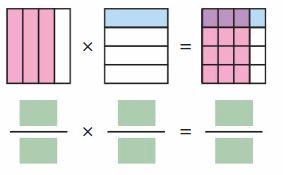
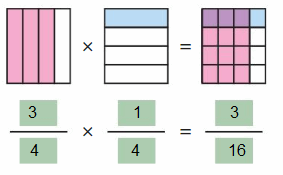
\(\frac{3}{4}\) X \(\frac{1}{4}\) = \(\frac{3}{16}\)
Explanation:
First part is \(\frac{3}{4}\) and second part is \(\frac{1}{4}\)
Step I: We multiply the numerators as 3 X 1 = 3
Step II: We multiply the denominators as 4 X 4 = 16
Step III: We write the fraction in the simplest form as \(\frac{3}{16}\),
So \(\frac{3}{4}\) X \(\frac{1}{4}\) = \(\frac{3}{16}\)
Work with a partner. Use an area model to find the product.
Question 5.

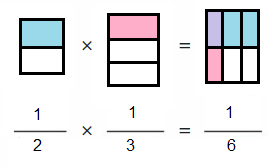
So \(\frac{1}{2}\) X \(\frac{1}{3}\) = \(\frac{1}{6}\)
Explanation:
We draw an area model to find the product
Step 1: We are given with \(\frac{1}{2}\) so
we take shade 1 part out of 2 ,
Step 2: We have \(\frac{1}{3}\) now we shade
1 part out of 3
Step 4 : We multiply the numerators as 1 X 1 = 1
Step 5: We multiply the denominators as 2 X 3 = 6
Step 6 : The purple area came through overlapping which is the product as
1 part out of 6 and write the fraction
in the simplest form as \(\frac{1}{6}\).
So \(\frac{1}{2}\) X \(\frac{1}{3}\) = \(\frac{1}{6}\)
Question 6.

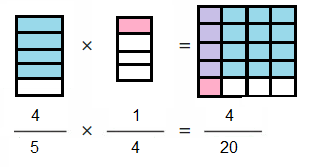
So \(\frac{4}{5}\) X \(\frac{1}{4}\) = \(\frac{4}{20}\)
Explanation:
We draw an area model to find the product
Step 1: We are given with \(\frac{4}{5}\) so
we take shade 4 parts out of 5 ,
Step 2: We have \(\frac{1}{4}\) now we shade
1 part out of 4
Step 4 : We multiply the numerators as 4 X 1 = 4
Step 5: We multiply the denominators as 5 X 4 = 20
Step 6 : The purple area came through overlapping which is the product as
4 parts out of 20 and write the fraction
in the simplest form as \(\frac{4}{20}\).
So \(\frac{4}{5}\) X \(\frac{1}{4}\) = \(\frac{4}{20}\).
Question 7.


So \(\frac{1}{6}\) X \(\frac{3}{4}\) = \(\frac{3}{24}\)
Explanation:
We draw an area model to find the product
Step 1: We are given with \(\frac{1}{6}\) so
we take shade 1 part out of 6 ,
Step 2: We have \(\frac{3}{4}\) now we shade
3 parts out of 4
Step 4 : We multiply the numerators as 1 X 3 = 3
Step 5: We multiply the denominators as 6 X 4 = 24
Step 6 : The purple area came through overlapping which is the product as
3 parts out of 24 and write the fraction
in the simplest form as \(\frac{3}{24}\).
So \(\frac{1}{6}\) X \(\frac{3}{4}\) = \(\frac{3}{24}\).
Question 8.

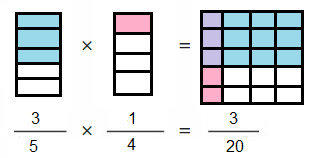
So \(\frac{3}{5}\) X \(\frac{1}{4}\) = \(\frac{3}{20}\)
Explanation:
We draw an area model to find the product
Step 1: We are given with \(\frac{3}{5}\) so
we take shade 3 parts out of 5 ,
Step 2: We have \(\frac{1}{4}\) now we shade
1 part out of 4
Step 4 : We multiply the numerators as 3 X 1 = 3
Step 5: We multiply the denominators as 5 X 4 = 20
Step 6 : The purple area came through overlapping which is the product as
3 parts out of 20 and write the fraction
in the simplest form as \(\frac{3}{20}\).
So \(\frac{3}{5}\) X \(\frac{1}{4}\) = \(\frac{3}{20}\).
Question 9.
MODELING REAL LIFE
You have a recipe that serves 6 people. The recipe uses three-fourths of a cup of milk.
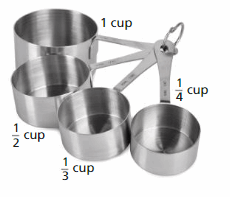
a. How can you use the recipe to serve more people? How much milk would you need? Give 2 examples.
b. How can you use the recipe to serve fewer people? How much milk would you need? Give 2 examples.
a. Example 1: To serve 8 people we need
\(\frac{8}{6}\) recipe + \(\frac{24}{4}\) milk
Example 2 : To serve 10 people we need
\(\frac{10}{6}\) recipe + \(\frac{30}{4}\) milk.
b. Example 1: To serve 5 people we need
\(\frac{5}{6}\) recipe + \(\frac{15}{4}\) milk
Example 2 : To serve 4 people we need
\(\frac{4}{6}\) recipe + \(\frac{12}{4}\) milk.
Explanation:
Given 1 recipe serves 6 people and uses three-fourths of a cup of milk,
a. We can use the recipe to serve more people and milk would we need are
6 persons = 1 recipe + \(\frac{3}{4}\) milk
1 person = \(\frac{1}{6}\) recipe + \(\frac{3}{4}\) milk
Example 1 : 8 persons = \(\frac{8}{6}\) recipe + \(\frac{24}{4}\) milk
Example 2 : 10 persons = \(\frac{10}{6}\) recipe + \(\frac{30}{4}\) milk
b. We can use the recipe to serve fewer people and milk would we need are
6 persons = 1 recipe + \(\frac{3}{4}\) milk
1 person = \(\frac{1}{6}\) recipe + \(\frac{3}{4}\) milk
5 persons = \(\frac{5}{6}\) recipe + \(\frac{15}{4}\) milk
4 persons = \(\frac{4}{6}\) recipe + \(\frac{12}{4}\) milk.
Vocabulary
The following vocabulary terms are defined in this chapter. Think about what each term might mean and record your thoughts.

Reciprocals : In mathematics, the reciprocal, also known as multiplicative inverse,
is the inverse of a number x. denoted as 1/x or x-1.
This means that the product of a number x and its reciprocal yields 1.
The reciprocal of a number is simply the number that has been flipped or
inverted upside-down. This entails transposing a number such that
the numerator and denominator are placed at the bottom and top respectively.
To find the reciprocal of a whole number, just convert it into a fraction in
which the original number is the denominator and the numerator is 1.
The reciprocal of 2/3 is 3/2.
The product of 2/3 and its reciprocal 3/2 is 1.
2/3 x 3/2 = 1.
Lesson 2.1 Multiplying Fractions
EXPLORATION 1
Using Models to Solve a Problem
Work with a partner. A bottle of water is \(\frac{1}{2}\) full. You drink \(\frac{2}{3}\) of the water. Use one of the models to find the portion of the bottle of water that you drink. Explain your steps.
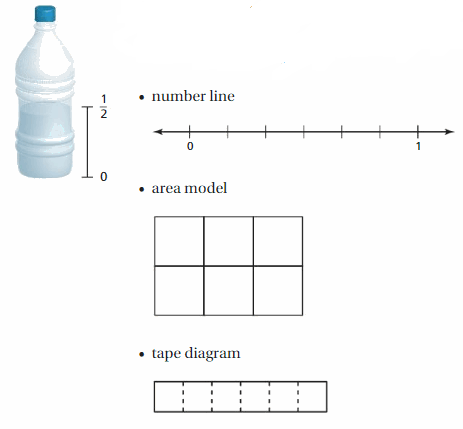
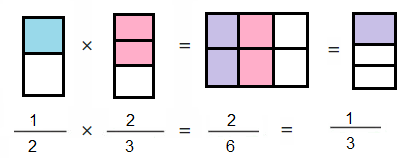
We use area model to give the portion of the bottle of water
that I drink is \(\frac{1}{3}\) of the bottle.
Explanation:
Given a bottle of water is \(\frac{1}{2}\) full.
I drink \(\frac{2}{3}\) of the water. So the portion of the bottle of water
that I drink is \(\frac{1}{2}\) X \(\frac{2}{3}\) = \(\frac{2}{6}\) =
\(\frac{1}{3}\) of the bottle.
We draw an area model to find the product
Step 1: We are given with \(\frac{1}{2}\) so
we take shade 1 part out of 2,
Step 2: We have \(\frac{2}{3}\) now we shade
2 parts out of 3
Step 4 : We multiply the numerators as 1 X 2 = 2
Step 5: We multiply the denominators as 2 X 3 = 6
Step 6 : The purple area came through overlapping which is the product as
2 parts out of 6 or 1 part out of 3 and write the fraction
in the simplest form as \(\frac{2}{6}\) or \(\frac{1}{3}\)
So the portion of the bottle of water that I drink is
\(\frac{2}{6}\) = \(\frac{1}{3}\) of the bottle.
EXPLORATION 2
Work with a partner. A park has a playground that is \(\frac{3}{4}\) of its width and \(\frac{4}{5}\) of its length.

a. Use a model to find the portion of the park that is covered by the playground. Explain your steps.
b. How can you find the solution of part(a) without using a model?
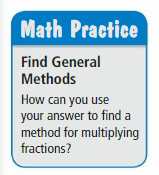
a.
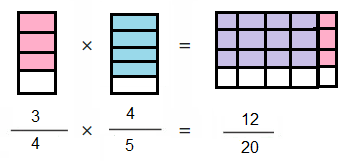
The portion of the park that is covered by the playground is
\(\frac{12}{20}\) = \(\frac{3}{5}\)
b. Without using a model the portion of the park that is covered by the playground is \(\frac{12}{20}\) = \(\frac{3}{5}\).
Explanation:
a. Used area model to find the portion of the park that is covered by the playground.
Given a park has a playground that is \(\frac{3}{4}\) of its width and
\(\frac{4}{5}\) of its length. So the portion of the park
that is covered by the playground is \(\frac{3}{4}\) X \(\frac{4}{5}\)
we explain this by an area model as
Step 1: We are given with \(\frac{3}{4}\) so we take shade 3 parts out of 4,
Step 2: We have \(\frac{4}{5}\) now we shade 4 parts out of 5
Step 4 : We multiply the numerators as 3 X 4 = 12
Step 5: We multiply the denominators as 4 X 5 = 20
Step 6 : The purple area came through overlapping which is the product as
12 parts out of 20 or 3 part out of 5 and write the fraction
in the simplest form as \(\frac{12}{20}\) or \(\frac{3}{5}\)
The portion of the park that is covered by the playground is
\(\frac{12}{20}\) = \(\frac{3}{5}\).
b. Without using a model we have first part is \(\frac{3}{4}\) and
second part is \(\frac{4}{5}\)
Step I: We multiply the numerators as 3 X 4 = 12
Step II: We multiply the denominators as 4 X 5 = 20
Step III: We write the fraction in the simplest form as
\(\frac{12}{20}\) or \(\frac{3}{5}\),
The portion of the park that is covered by the playground is \(\frac{12}{20}\) =
\(\frac{3}{5}\).
2.1 Lesson
Try It
Multiply.
Question 1.

\(\frac{1}{3}\) X \(\frac{1}{5}\) = \(\frac{1}{15}\)
Explanation:
Step I: We multiply the numerators as 1 X 1 = 1
Step II: We multiply the denominators as 3 X 5 =15
Step III: We write the fraction in the simplest form as
\(\frac{1}{15}\),
So \(\frac{1}{3}\) X \(\frac{1}{5}\) = \(\frac{1}{15}\).
Question 2.

\(\frac{2}{3}\) X \(\frac{3}{4}\) = \(\frac{6}{12}\)
= \(\frac{2}{4}\) = \(\frac{1}{2}\)
Explanation:
Step I: We multiply the numerators as 2 X 3 = 6
Step II: We multiply the denominators as 3 X 4 =12
Step III: We write the fraction in the simplest form as \(\frac{6}{12}\),
So \(\frac{2}{3}\) X \(\frac{3}{4}\) = \(\frac{6}{12}\)=
= \(\frac{2}{4}\) as both can go in 2 we get latex]\frac{1}{2}[/latex].
Question 3.

So \(\frac{1}{2}\) X \(\frac{5}{6}\) = \(\frac{5}{12}\)
Explanation:
Step I: We multiply the numerators as 1 X 5 = 5
Step II: We multiply the denominators as 2 X 6 =12
Step III: We write the fraction in the simplest form as \(\frac{5}{12}\),
So \(\frac{1}{2}\) X \(\frac{5}{6}\) = \(\frac{5}{12}\).
Key Idea
Multiplying Fractions

Try It
Multiply. Write the answer in simplest form.
Question 4.

\(\frac{3}{7}\) X \(\frac{2}{3}\) = \(\frac{6}{21}\) = \(\frac{2}{7}\)
Explanation:
Step I: We multiply the numerators as 3 X 2 = 6
Step II: We multiply the denominators as 7 X 3 =21
Step III: We write the fraction in the simplest form as \(\frac{6}{21}\),
So \(\frac{3}{7}\) X \(\frac{2}{3}\) = \(\frac{6}{21}\) =
further simplified as both go in 3 we get \(\frac{2}{7}\).
Question 5.

\(\frac{4}{9}\) X \(\frac{3}{10}\) = \(\frac{12}{90}\) =
\(\frac{2}{15}\)
Explanation:
Step I: We multiply the numerators as 4 X 3 = 12
Step II: We multiply the denominators as 9 X 10 =90
Step III: We write the fraction in the simplest form as \(\frac{12}{90}\),
So \(\frac{4}{9}\) X \(\frac{3}{10}\) = \(\frac{12}{90}\)
further can be simplified as both can be divided by 6 we get 2 X 6 = 12 and
15 x 6 = 90, (2, 15) So \(\frac{12}{90}\) = \(\frac{2}{15}\).
Question 6.

\(\frac{6}{5}\) X \(\frac{5}{8}\) = \(\frac{30}{40}\) =\(\frac{3}{4}\)
Explanation:
Step I: We multiply the numerators as 6 X 5 = 30
Step II: We multiply the denominators as 5 X 8 =40
Step III: We write the fraction in the simplest form as \(\frac{30}{40}\),
So \(\frac{6}{5}\) X \(\frac{5}{8}\) = \(\frac{30}{40}\)
further can be simplified as both can be divided by 10 we get 3 X 10 = 30 and
4 x 10 = 40,(3,4) So \(\frac{30}{40}\) = \(\frac{3}{4}\).
Try It
Question 7.
WHAT IF?
You use \(\frac{1}{4}\) of the flour to make the dough.
How much of the entire bag do you use to make the dough?
\(\frac{1}{4}\) of the entire bag we do use to make the dough
Explanation:
Given we use \(\frac{1}{4}\) of the flour to make the dough,
We take entire bag as 1 which has flour , So we use
\(\frac{1}{4}\) out of 1 means \(\frac{1}{4}\) X 1 = \(\frac{1}{4}\)
of the entire bag we do use to make the dough.
Key Idea
Multiplying Mixed Numbers
Write each mixed number as an improper fraction. Then multiply as you would with fractions.
Try It
Multiply. Write the answer in simplest form.
Question 8.

\(\frac{1}{3}\) X \(\frac{7}{6}\) = \(\frac{7}{18}\)
Explanation:
Given \(\frac{1}{3}\) X 1 \(\frac{1}{6}\) so
first we write mixed number 1 \(\frac{1}{6}\) as 1 X 6 + 1 by 6 = \(\frac{7}{6}\) now
we multiply \(\frac{1}{3}\) X \(\frac{7}{6}\),
Step I: We multiply the numerators as 1 X 7 = 7
Step II: We multiply the denominators as 3 X 6 =18
Step III: We write the fraction in the simplest form as \(\frac{7}{18}\),
So \(\frac{1}{3}\) X \(\frac{7}{6}\) = \(\frac{7}{18}\).
Question 9.

\(\frac{7}{2}\) X \(\frac{4}{9}\) = \(\frac{28}{18}\) = \(\frac{14}{9}\) = 1 \(\frac{5}{9}\)
Explanation:
Given 3 \(\frac{1}{2}\) X \(\frac{4}{9}\) so
first we write mixed number 3 \(\frac{1}{2}\) as 3 X 2 + 1 by 2 = \(\frac{7}{2}\) now we multiply \(\frac{7}{2}\) X \(\frac{4}{9}\),
Step I: We multiply the numerators as 7 X 4 = 28
Step II: We multiply the denominators as 2 X 9 =18
Step III: We write the fraction in the simplest form as \(\frac{28}{18}\),
we can further simplify as both goes in 2, 14 X 2 = 28 and 9 X 2 = 18, (14,9)
So 3 \(\frac{1}{2}\) X \(\frac{4}{9}\) = \(\frac{28}{18}\) = \(\frac{14}{9}\). As numerator is greater than denominator we write in mixed fraction also as (1 X 9 + 5 by 9 ), 1\(\frac{5}{9}\).
Question 10.

4 \(\frac{2}{3}\) X \(\frac{3}{4}\) = \(\frac{42}{12}\) = \(\frac{7}{2}\) = 3 \(\frac{1}{2}\).
Explanation:
Given 4 \(\frac{2}{3}\) X \(\frac{3}{4}\) so
first we write mixed number 4 \(\frac{2}{3}\) as 4 X 3 + 2 by 3 = \(\frac{14}{3}\) now we multiply \(\frac{14}{3}\) X \(\frac{3}{4}\),
Step I: We multiply the numerators as 14 X 3 = 42
Step II: We multiply the denominators as 3 X 4 =12
Step III: We write the fraction in the simplest form as \(\frac{42}{12}\),
we can further simplify as both goes in 6, 6 X 7 = 42 and 6 X 2 = 12, (7,2)
So 4 \(\frac{2}{3}\) X \(\frac{3}{4}\) = \(\frac{42}{12}\) = \(\frac{7}{2}\). As numerator is greater than denominator we write in
mixed fraction also as (3 X 2 + 1 by 2 ), 3 \(\frac{1}{2}\).
Try It
Multiply. Write the answer in simplest form.
Question 11.

1 \(\frac{7}{8}\) X 2 \(\frac{2}{5}\) = \(\frac{180}{40}\) = \(\frac{9}{2}\) = 4 \(\frac{1}{2}\).
Explanation :
1 \(\frac{7}{8}\) X 2 \(\frac{2}{5}\) , We write mixed fractions
1 \(\frac{7}{8}\) as 1 X 8 + 7 by 8 = \(\frac{15}{8}\) and 2 \(\frac{2}{5}\) as 2 X 5 + 2 by 5 = \(\frac{12}{5}\) Now we multiply
\(\frac{15}{8}\) X \(\frac{12}{5}\),
Step I: We multiply the numerators as 15 X 12 = 180
Step II: We multiply the denominators as 8 X 5 =40
Step III: We write the fraction in the simplest form as \(\frac{180}{40}\),
we can further simplify as both goes in 20, 20 X 9 = 180 and 20 X 2 = 40, (9,2),
1 \(\frac{7}{8}\) X 2 \(\frac{2}{5}\) = \(\frac{180}{40}\) = \(\frac{9}{2}\) , As numerator is greater than denominator we write in
mixed fraction also as (4 X 2 + 1 by 2 ), 4 \(\frac{1}{2}\).
Question 12.

5 \(\frac{5}{7}\) X 2 \(\frac{1}{10}\) = \(\frac{840}{70}\) = 12
Explanation :
5 \(\frac{5}{7}\) X 2 \(\frac{1}{10}\) , We write mixed fractions
5 \(\frac{5}{7}\) as 5 X 7 + 5 by 7 = \(\frac{40}{7}\) and 2 \(\frac{1}{10}\) as 2 X 10 + 1 by 10 = \(\frac{21}{10}\) Now we multiply
\(\frac{40}{7}\) X \(\frac{21}{10}\),
Step I: We multiply the numerators as 40 X 21 = 840
Step II: We multiply the denominators as 7 X 10 =70
Step III: We write the fraction in the simplest form as \(\frac{840}{70}\),
we can further simplify as both goes in 70, 70 X 12 = 840 and 70 X 1 = 70, (12,1), therefore
5 \(\frac{5}{7}\) X 2 \(\frac{1}{10}\) = \(\frac{840}{70}\) = 12 .
Question 13.

2 \(\frac{1}{3}\) X 7 \(\frac{2}{3}\) = \(\frac{161}{9}\) = 17 \(\frac{8}{9}\)
Explanation:
2 \(\frac{1}{3}\) X 7 \(\frac{2}{3}\) , We write mixed fractions
2 \(\frac{1}{3}\) as 2 X 3 + 1 by 3 = \(\frac{7}{3}\) and 7 \(\frac{2}{3}\) as 7 X 3 + 2 by 3 = \(\frac{23}{3}\) Now we multiply
\(\frac{7}{3}\) X \(\frac{23}{3}\),
Step I: We multiply the numerators as 7 X 23 = 161
Step II: We multiply the denominators as 3 X 3 =9
Step III: We write the fraction in the simplest form as \(\frac{161}{9}\),
therefore 2 \(\frac{1}{3}\) X 7 \(\frac{2}{3}\) = \(\frac{161}{9}\),
As numerator is greater than denominator we write in
mixed fraction also as (17 X 9 + 8 by 9 ), 17 \(\frac{8}{9}\).
Self-Assessment for Concepts & Skills
Solve each exercise. Then rate your understanding of the success criteria in your journal.
MULTIPLYING FRACTIONS AND MIXED NUMBERS
Multiply. Write the answer in simplest form.
Question 14.

\(\frac{1}{8}\) X \(\frac{1}{6}\) = \(\frac{1}{48}\)
Explanation:
Step I: We multiply the numerators as 1 X 1 = 1
Step II: We multiply the denominators as 8 X 6 =48
Step III: We write the fraction in the simplest form as \(\frac{1}{48}\),
So \(\frac{1}{8}\) X \(\frac{1}{6}\) = \(\frac{1}{48}\).
Question 15.

\(\frac{3}{8}\) X \(\frac{2}{3}\) = \(\frac{6}{24}\) = \(\frac{1}{4}\)
Explanation:
Step I: We multiply the numerators as 3 X 2 = 6
Step II: We multiply the denominators as 8 X 3 =24
Step III: We write the fraction in the simplest form as \(\frac{6}{24}\),
we can further simplify as both goes in 6, 6 X 1 = 6 and 6 X 4 = 24, (1,4),
So \(\frac{3}{8}\) X \(\frac{2}{3}\) = \(\frac{6}{24}\) = \(\frac{1}{4}\).
Question 16.

2 \(\frac{1}{6}\) X 4 \(\frac{2}{5}\) = \(\frac{286}{30}\) = \(\frac{143}{15}\) = 9 \(\frac{8}{15}\)
Explanation:
2 \(\frac{1}{6}\) X 4 \(\frac{2}{5}\) , We write mixed fractions
2 \(\frac{1}{6}\) as 2 X 6 + 1 by 6 = \(\frac{13}{6}\) and 4 \(\frac{2}{5}\) as 4 X 5 + 2 by 5 = \(\frac{22}{5}\) Now we multiply
\(\frac{13}{6}\) X \(\frac{22}{5}\),
Step I: We multiply the numerators as 13 X 22 = 286
Step II: We multiply the denominators as 6 X 5 =30
Step III: We write the fraction in the simplest form as \(\frac{286}{30}\),
we can further simplify as both goes in 2, 2 X 143 = 286 and 2 X 15 = 30, (143,15),
therefore 2 \(\frac{1}{6}\) X 4 \(\frac{2}{5}\) = \(\frac{286}{30}\) =
\(\frac{143}{15}\). As numerator is greater than denominator we write in
mixed fraction also as (9 X 15 + 8 by 15 ), 9 \(\frac{8}{15}\).
Question 17.
REASONING
What is the missing denominator?

The missing denominator is 4
Explanation:
Let us take the missing denominator as x now we have
denominators as 7 X x = 28, so x = \(\frac{28}{7}\) = 4.
Question 18.
USING TOOLS
Write a multiplication problem involving fractions that is represented by the model. Explain your reasoning.
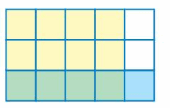
The multiplication problem involving fractions that is represented by the model
\(\frac{4}{5}\) X \(\frac{1}{3}\) = \(\frac{4}{15}\)
Explanation:
Given the area model as shown in figure we take the first fraction part
as 4 out of 5 as yellow area represents 4 parts out of 5 and the second fraction
part is 1 out of 3 with blue now the products of fraction is
\(\frac{4}{5}\) X \(\frac{1}{3}\) =
Step I: We multiply the numerators as 4 X 1 = 4
Step II: We multiply the denominators as 5 X 3 = 15
Step III: We write the fraction in the simplest form as \(\frac{4}{15}\),
which is the green area came through overlapping which is the product as
4 parts out of 15, Therefore the multiplication problem involving fractions
that is represented by the model is \(\frac{4}{5}\) X \(\frac{1}{3}\) = \(\frac{4}{15}\).
Question 19.
USING TOOLS
Use the number line to find  Explain your reasoning.
Explain your reasoning.


\(\frac{3}{4}\) X \(\frac{1}{2}\) = \(\frac{3}{8}\)
Explanation:
We write 1/2 as 4 by 8 on the number line,
now we take 3 parts of 4 from 4/8 we get results as
\(\frac{3}{8}\) on the number line or we take 3 times \(\frac{1}{8}\) on
number line we get \(\frac{3}{8}\).
Therefore \(\frac{3}{4}\) X \(\frac{1}{2}\) = \(\frac{3}{8}\).
Self-Assessment for Problem Solving
Solve each exercise. Then rate your understanding of the success criteria in your journal.
Question 20.
You spend \(\frac{5}{12}\) of a day at an amusement park. You spend \(\frac{2}{5}\) of that time riding waterslides. How many hours do you spend riding waterslides? Draw a model to show why your answer makes sense.
I spent 4 hours for riding waterslides

Explanation:
Given I spend \(\frac{5}{12}\) of a day at an amusement park means
out of 24 hours so hours spent at the park is \(\frac{5}{12}\) X 24 = 10 hours.
Now in 10 hours we spend \(\frac{2}{5}\) of that time riding waterslides means
number of hours spent riding waterslides is 10 X \(\frac{2}{5}\) = 4 hours.
So I spent 4 hours for riding waterslides.
We take area model as shown in the picture first part as 5 out of 12 and second part as 24
we get 120 by 12 as 10 hours and from 10 hours we spent 2 out of 5 we get 4 hours.
Question 21.
A venue is preparing for a concert on the floor shown. The width of the red carpet is \(\frac{1}{6}\) of the width of the floor. What is the area of the red carpet?

The area of the red carpet is 1057 square feet
Explanation:
Given the width of floor is 63 feet, So width of the red carpet is \(\frac{1}{6}\) X 63 =
\(\frac{63}{6}\) we can simplify as both goes in 3we get \(\frac{21}{2}\),
Now we write length of floor 100 \(\frac{2}{3}\) as 100 X 3 + 2 by 3 as \(\frac{302}{3}\), Now we has width and length of the carpet so area of the carpet is
\(\frac{302}{3}\) X \(\frac{21}{2}\) = \(\frac{6342}{6}\)
both goes in 6 so we get 1057 square feet.
Question 22.
You travel 9\(\frac{3}{8}\) miles from your house to a shopping mall. You travel \(\frac{2}{3}\) of that distance on an interstate. The only road construction you encounter is on the first \(\frac{2}{5}\) of the interstate. On how many miles of your trip do you encounter construction?
I encounter \(\frac{5}{2}\) or 2 \(\frac{1}{2}\) miles of construction of my trip.
Explanation:
Given I travel 9\(\frac{3}{8}\) we write mixed fraction as fraction as
9 X 8 + 3 by 8 = \(\frac{75}{8}\) now I travel \(\frac{2}{3}\) of that distance on an interstate,
So the distance on the interstate is \(\frac{2}{3}\) X \(\frac{75}{8}\) = \(\frac{150}{24}\) both goes in 6 we get \(\frac{25}{4}\) miles.
Now in \(\frac{25}{4}\) the only construction I encounter is \(\frac{2}{5}\) of
\(\frac{25}{4}\),
So \(\frac{2}{5}\) X \(\frac{25}{4}\) =
\(\frac{50}{20}\) = \(\frac{5}{2}\) miles,
As numerator is greater than denominator we write in mixed fraction
also as (2 X 2 + 1 by 2 ), 2 \(\frac{1}{2}\) miles.
Multiplying Fractions Homework & Practice 2.1
Review & Refresh
Find the LCM of the numbers.
Question 1.
8, 10
The LCM of 8, 10 is 40
Explanation:
The LCM is the smallest positive number that all of the numbers divide into evenly.
One way is to list the multiples of each number, then choose the common multiples,
then the least one.
Multiples of 8:{8,16,24,32,40,48,56,64,72,80,…}
Multiples of 10:{10,20,30,40,50,60,70,80,90,…}
Common Multiples are {40,80,..}
therefore LCM(8,10)=40.
Question 2.
5, 7
The LCM of 5, 7 is 35
Explanation:
The LCM is the smallest positive number that all of the numbers divide into evenly.
One way is to list the multiples of each number, then choose the common multiples,
then the least one.
Multiples of 5:{5,10,15,20,25,30,35,40,45,50,…}
Multiples of 7:{7,14,21,28,35,42,49,56,…}
Common Multiples {35,..}
therefore LCM(5,7)=35.
Question 3.
2, 5, 7
The LCM of 2,5,7 is 70
Explanation:
The LCM is the smallest positive number that all of the numbers divide into evenly.
1. List the prime factors of each number.
2. Multiply each factor the greatest number of times it occurs in either number.
Since 2 has no factors besides 1 and 2,
2 is a prime number,
Since 7 has no factors besides 1 and 7.
7 is a prime number,
Since 5 has no factors besides 1 and 5.
5 is a prime number,
The LCM of 2,5,7 is the result of multiplying all prime factors
the greatest number of times they occur in either number 2 X 5 X 7 = 70,
So the LCM of 2,5,7 is 70.
Question 4.
6, 7, 10
The LCM of 6, 7, 10 is 210
Explanation:
Common division of 6 ,7, 10 is
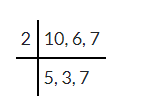
∴ So the LCM of the given numbers is 2 X 5 X 3 X 7 = 210.
Divide. Use a diagram to justify your answer.
Question 5.

 = 6 X 2 = 12
= 6 X 2 = 12
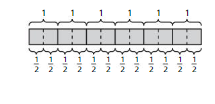
Explanation:
Given 6 divides \(\frac{5}{2}\) we get 6 X 2 = 12,
we take 6 parts in that we are dividing by \(\frac{1}{2}\) we
are getting 12 parts of a whole.
Question 6.

 = 8 X 4 = 32
= 8 X 4 = 32

Explanation:
Given 8 divides \(\frac{1}{4}\) we get 8 X 4 = 32,
we take 8 parts in that we are dividing by \(\frac{1}{4}\) we
are getting 32 parts of a whole.
Question 7.

 = 12
= 12
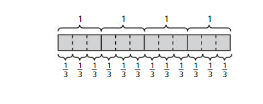
Explanation:
Given 4 divides \(\frac{1}{3}\) we get 4 X 3 = 12,
we take 4 parts in that we are dividing by \(\frac{1}{3}\) we
are getting 12 parts of a whole.
Question 8.

 = 4 X 5 = 20
= 4 X 5 = 20

Explanation:
Given 4 divides \(\frac{1}{5}\) we get 4 X 5 = 20,
we take 4 parts in that we are dividing by \(\frac{1}{5}\) we
are getting 20 parts of a whole.
Write the product as a power.
Question 9.
10 × 10 × 10
10 X 10 X 10 =103
Explanation:
Given expression as 10 X 10 X 10 as 10 is multiplied by 3 times we write it as
power of 10 as 103.
Question 10.
5 × 5 × 5 × 5
5 × 5 × 5 × 5 = 54
Explanation:
Given expression as 5 X 5 X 5 X 5 as 5 is multiplied by 4 times we write it as
power of 5 as 54.
Question 11.
How many inches are in 5\(\frac{1}{2}\) yards?
A. 15\(\frac{1}{2}\)
B. 16\(\frac{1}{2}\)
C. 66
D. 198
D, 5\(\frac{1}{2}\) yards = 198
Explanation:
Given 5\(\frac{1}{2}\) yards first we write mixed fractions into
fractions as 5 X 2 + 1 by 2 as \(\frac{11}{2}\) yards as we know 1 yard is equal to
36 inches so \(\frac{11}{2}\) = \(\frac{11}{2}\) X 36 = \(\frac{396}{2}\) = 198 , So it matches with D bit.
Concepts, Skills, & Problem Solving
CHOOSE TOOLS A bottle of water is \(\frac{2}{3}\) full. You drink the given portion of the water. Use a model to find the portion of the bottle of water that you drink. (See Exploration 1, p. 45.)
Question 12.
\(\frac{1}{2}\)
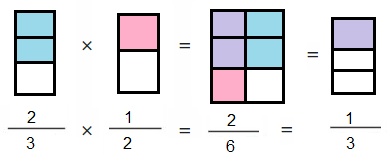
We use area model to give the portion of the bottle of water
that I drink is \(\frac{1}{3}\) of the bottle.
Explanation:
Given a bottle of water is \(\frac{2}{3}\) full.
I drink \(\frac{1}{2}\) of the water. So the portion of the bottle of water
that I drink is \(\frac{2}{3}\) X \(\frac{1}{2}\) = \(\frac{2}{6}\) =
\(\frac{1}{3}\) of the bottle.
We draw an area model to find the product
Step 1: We are given with \(\frac{2}{3}\) so
we take shade 2 part out of 3,
Step 2: We have \(\frac{1}{2}\) now we shade
1 part out of 2
Step 4 : We multiply the numerators as 2 X 1 = 2
Step 5: We multiply the denominators as 3 X 2 = 6
Step 6 : The purple area came through overlapping which is the product as
2 parts out of 6 or 1 part out of 3 and write the fraction
in the simplest form as \(\frac{2}{6}\) or \(\frac{1}{3}\)
So the portion of the bottle of water that I drink is \(\frac{2}{6}\) =
\(\frac{1}{3}\) of the bottle.
Question 13.
\(\frac{1}{4}\)

We use area model to give the portion of the bottle of water
that I drink is \(\frac{1}{6}\) of the bottle.
Explanation:
Given a bottle of water is \(\frac{2}{3}\) full.
I drink \(\frac{1}{4}\) of the water. So the portion of the bottle of water
that I drink is \(\frac{2}{3}\) X \(\frac{1}{4}\) = \(\frac{2}{12}\) =
\(\frac{1}{6}\) of the bottle.
We draw an area model to find the product
Step 1: We are given with \(\frac{2}{3}\) so
we take shade 2 part out of 3,
Step 2: We have \(\frac{1}{4}\) now we shade
1 part out of 4
Step 4 : We multiply the numerators as 2 X 1 = 2
Step 5: We multiply the denominators as 3 X 4 = 12
Step 6 : The purple area came through overlapping which is the product as
2 parts out of 12 or 1 part out of 6 and write the fraction
in the simplest form as \(\frac{2}{12}\) or \(\frac{1}{6}\)
So the portion of the bottle of water that I drink is \(\frac{2}{12}\) =
\(\frac{1}{6}\) of the bottle.
Question 14.
\(\frac{3}{4}\)
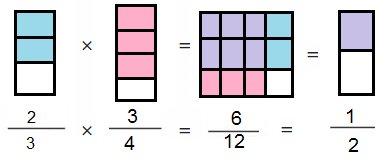
We use area model to give the portion of the bottle of water
that I drink is \(\frac{1}{2}\) of the bottle.
Explanation:
Given a bottle of water is \(\frac{2}{3}\) full.
I drink \(\frac{3}{4}\) of the water. So the portion of the bottle of water
that I drink is \(\frac{2}{3}\) X \(\frac{3}{4}\) = \(\frac{6}{12}\) =
\(\frac{1}{2}\) of the bottle.
We draw an area model to find the product
Step 1: We are given with \(\frac{2}{3}\) so
we take shade 2 part out of 3,
Step 2: We have \(\frac{3}{4}\) now we shade
3 parts out of 4
Step 4 : We multiply the numerators as 2 X 3 = 6
Step 5: We multiply the denominators as 3 X 4 = 12
Step 6 : The purple area came through overlapping which is the product as
6 parts out of 12 or 1 part out of 2 and write the fraction
in the simplest form as \(\frac{6}{12}\) or \(\frac{1}{2}\)
So the portion of the bottle of water that I drink is \(\frac{6}{12}\) =
\(\frac{1}{2}\) of the bottle.
MULTIPLYING FRACTIONS
Multiply. Write the answer in simplest form.
Question 15.

 = \(\frac{2}{21}\)
= \(\frac{2}{21}\)
\(\frac{1}{7}\) X \(\frac{2}{3}\) = \(\frac{2}{21}\)
Explanation:
Given expression as \(\frac{1}{7}\) X \(\frac{2}{3}\)
Step I: We multiply the numerators as 1 X 2 = 2
Step II: We multiply the denominators as 7 X 3 = 21
Step III: We write the fraction in the simplest form as \(\frac{2}{21}\),
So \(\frac{1}{7}\) X \(\frac{2}{3}\) = \(\frac{2}{21}\).
Question 16.

 = \(\frac{5}{16}\)
= \(\frac{5}{16}\)
\(\frac{5}{8}\) X \(\frac{1}{2}\) = \(\frac{5}{16}\)
Explanation:
Given expression as \(\frac{5}{8}\) X \(\frac{1}{2}\)
Step I: We multiply the numerators as 5 X 1 = 5
Step II: We multiply the denominators as 8 X 2 = 16
Step III: We write the fraction in the simplest form as \(\frac{5}{16}\),
So \(\frac{5}{8}\) X \(\frac{1}{2}\) = \(\frac{5}{16}\).
Question 17.

 = \(\frac{1}{10}\)
= \(\frac{1}{10}\)
\(\frac{1}{4}\) X \(\frac{2}{5}\) = \(\frac{2}{20}\) = \(\frac{1}{10}\)
Explanation:
Given expression as \(\frac{1}{4}\) X \(\frac{2}{5}\)
Step I: We multiply the numerators as 1 X 2 = 2
Step II: We multiply the denominators as 4 X 5 = 20
Step III: We write the fraction in the simplest form as \(\frac{2}{20}\),
we can further simplify as both goes in 2, 2 X 1 = 2 and 2 X 10 = 20, (1,10),
So \(\frac{1}{4}\) X \(\frac{2}{5}\) = \(\frac{2}{20}\) = \(\frac{1}{10}\)
Question 18.

 = \(\frac{3}{28}\)
= \(\frac{3}{28}\)
\(\frac{3}{7}\) X \(\frac{1}{4}\) = \(\frac{3}{28}\)
Explanation:
Given expression as \(\frac{3}{7}\) X \(\frac{1}{4}\)
Step I: We multiply the numerators as 3 X 1 = 3
Step II: We multiply the denominators as 7 X 4 = 28
Step III: We write the fraction in the simplest form as \(\frac{3}{28}\),
So \(\frac{3}{7}\) X \(\frac{1}{4}\) = \(\frac{3}{28}\).
Question 19.

 = \(\frac{8}{21}\)
= \(\frac{8}{21}\)
\(\frac{2}{3}\) X \(\frac{4}{7}\) = \(\frac{8}{21}\)
Explanation:
Given expression as \(\frac{2}{3}\) X \(\frac{4}{7}\)
Step I: We multiply the numerators as 3 X 1 = 3
Step II: We multiply the denominators as 7 X 4 = 28
Step III: We write the fraction in the simplest form as \(\frac{3}{28}\),
So \(\frac{2}{3}\) X \(\frac{4}{7}\) = \(\frac{8}{21}\).
Question 20.

 = \(\frac{5}{8}\)
= \(\frac{5}{8}\)
\(\frac{5}{7}\) X \(\frac{7}{8}\) = \(\frac{35}{56}\) = \(\frac{5}{8}\)
Explanation:
Given expression as \(\frac{5}{7}\) X \(\frac{7}{8}\)
Step I: We multiply the numerators as 5 X 7 = 35
Step II: We multiply the denominators as 7 X 8 = 56
Step III: We write the fraction in the simplest form as \(\frac{35}{56}\),
we can further simplify as both goes in 7, 7 X 5 = 35 and 7 X 8 = 56, (5,8),
So \(\frac{5}{7}\) X \(\frac{7}{8}\) = \(\frac{35}{56}\) = \(\frac{5}{8}\).
Question 21.

 = \(\frac{1}{24}\)
= \(\frac{1}{24}\)
\(\frac{3}{8}\) X \(\frac{1}{9}\) = \(\frac{3}{72}\) = \(\frac{1}{24}\)
Explanation:
Given expression as \(\frac{3}{8}\) X \(\frac{1}{9}\)
Step I: We multiply the numerators as 3 X 1 = 3
Step II: We multiply the denominators as 8 X 9 = 72
Step III: We write the fraction in the simplest form as \(\frac{3}{72}\),
we can further simplify as both goes in 3, 3 X 1 = 3 and 3 X 24 = 72, (1,24),
So \(\frac{3}{8}\) X \(\frac{1}{9}\) = \(\frac{3}{72}\) = \(\frac{1}{24}\).
Question 22.

 = \(\frac{1}{3}\)
= \(\frac{1}{3}\)
\(\frac{5}{6}\) X \(\frac{2}{5}\) = \(\frac{10}{30}\) = \(\frac{1}{3}\)
Explanation:
Given expression as \(\frac{5}{6}\) X \(\frac{2}{5}\)
Step I: We multiply the numerators as 5 X 2 = 10
Step II: We multiply the denominators as 6 X 5 = 30
Step III: We write the fraction in the simplest form as \(\frac{10}{30}\),
we can further simplify as both goes in 10, 10 X 1 = 10 and 10 X 3 = 30, (1,3),
So \(\frac{5}{6}\) X \(\frac{2}{5}\) = \(\frac{10}{30}\) = \(\frac{1}{3}\).
Question 23.

 = \(\frac{25}{6}\) = 4 \(\frac{1}{6}\)
= \(\frac{25}{6}\) = 4 \(\frac{1}{6}\)
\(\frac{5}{12}\) X 10 = \(\frac{50}{12}\) = \(\frac{25}{6}\) =
4 \(\frac{1}{6}\)
Explanation:
Given expression as \(\frac{5}{12}\) X 10
Step I: We multiply the numerators as 5 X 10 = 50
Step II: Denominators will be same as 12
Step III: We write the fraction in the simplest form as \(\frac{50}{12}\),
we can further simplify as both goes in 2, 2 X 25 = 50 and 2 X 6 = 12, (25,6),
\(\frac{25}{6}\) . As numerator is greater than denominator we write in mixed fraction also as ( 4 X 6 + 1 by 6 ), 4 \(\frac{1}{6}\). So \(\frac{5}{12}\) X 10 = \(\frac{50}{12}\) = \(\frac{25}{6}\) = 4 \(\frac{1}{6}\).
Question 24.

 = \(\frac{21}{4}\) = 5\(\frac{1}{4}\)
= \(\frac{21}{4}\) = 5\(\frac{1}{4}\)
Explanation:
Given expression as 6 X \(\frac{7}{8}\)
Step I: We multiply the numerators as 6 X 7 = 42
Step II: Denominators will be same as 8
Step III: We write the fraction in the simplest form as \(\frac{42}{8}\),
we can further simplify as both goes in 2, 2 X 21 = 42 and 2 X 4 = 8, (21,4),
\(\frac{21}{4}\). So 6 X \(\frac{7}{8}\) = \(\frac{42}{8}\) = \(\frac{21}{4}\) as numerator is greater we write as (5 X 4 + 1 by 4), 5\(\frac{1}{4}\).
Question 25.

 = \(\frac{2}{5}\)
= \(\frac{2}{5}\)
\(\frac{3}{4}\) X \(\frac{8}{15}\) = \(\frac{24}{60}\) = \(\frac{2}{5}\)
Explanation:
Given expression as \(\frac{3}{4}\) X \(\frac{8}{15}\)
Step I: We multiply the numerators as 3 X 8 = 24
Step II: We multiply the denominators as 4 X 15 = 60
Step III: We write the fraction in the simplest form as \(\frac{24}{60}\),
we can further simplify as both goes in 12, 12 X 2 = 24 and 12 X 5 = 60, (2,5),
So \(\frac{3}{4}\) X \(\frac{8}{15}\) = \(\frac{24}{60}\) = \(\frac{2}{5}\).
Question 26.

 = \(\frac{16}{45}\)
= \(\frac{16}{45}\)
\(\frac{4}{9}\) X \(\frac{4}{5}\) = \(\frac{16}{45}\)
Explanation:
Given expression as \(\frac{4}{9}\) X \(\frac{4}{5}\)
Step I: We multiply the numerators as 4 X 4 = 16
Step II: We multiply the denominators as 9 X 5 = 45
Step III: We write the fraction in the simplest form as \(\frac{16}{45}\),
So \(\frac{4}{9}\) X \(\frac{4}{5}\) = \(\frac{16}{45}\).
Question 27.

 = \(\frac{9}{49}\)
= \(\frac{9}{49}\)
\(\frac{3}{7}\) X \(\frac{3}{7}\) = \(\frac{9}{49}\)
Explanation:
given expression as \(\frac{3}{7}\) X \(\frac{3}{7}\)
Step I: We multiply the numerators as 3 X 3 = 9
Step II: We multiply the denominators as 7 X 7 = 49
Step III: We write the fraction in the simplest form as \(\frac{9}{49}\),
So \(\frac{3}{7}\) X \(\frac{3}{7}\) = \(\frac{9}{49}\).
Question 28.

 = \(\frac{5}{27}\)
= \(\frac{5}{27}\)
\(\frac{5}{6}\) X \(\frac{2}{9}\) = \(\frac{10}{54}\) = \(\frac{5}{27}\)
Explanation:
given expression as \(\frac{5}{6}\) X \(\frac{2}{9}\)
Step I: We multiply the numerators as 5 X 2 = 10
Step II: We multiply the denominators as 6 X 9 = 54
Step III: We write the fraction in the simplest form as \(\frac{10}{54}\),
we can further simplify as both goes in 2, 2 X 5 = 10 and 2 X 27 = 54, (5,27),
So \(\frac{5}{6}\) X \(\frac{2}{9}\) = \(\frac{10}{54}\) = \(\frac{5}{27}\).
Question 29.

 = \(\frac{13}{21}\)
= \(\frac{13}{21}\)
\(\frac{13}{18}\) X \(\frac{6}{7}\) = \(\frac{78}{126}\) = \(\frac{13}{21}\)
Explanation:
Given expression as \(\frac{13}{18}\) X \(\frac{6}{7}\)
Step I: We multiply the numerators as 13 X 6 = 78
Step II: We multiply the denominators as 18 X 7 = 126
Step III: We write the fraction in the simplest form as \(\frac{78}{126}\),
we can further simplify as both goes in 6, 6 X 13 = 78 and 6 X 21 = 126, (13,21),
So \(\frac{13}{18}\) X \(\frac{6}{7}\) = \(\frac{78}{126}\) = \(\frac{13}{21}\).
Question 30.

 = \(\frac{49}{30}\) = 1 \(\frac{19}{30}\)
= \(\frac{49}{30}\) = 1 \(\frac{19}{30}\)
\(\frac{7}{9}\) X \(\frac{21}{10}\) = \(\frac{147}{90}\) = \(\frac{49}{30}\) = 1 \(\frac{19}{30}\)
Explanation:
Given expression as \(\frac{7}{9}\) X \(\frac{21}{10}\)
Step I: We multiply the numerators as 7 X 21 = 147
Step II: We multiply the denominators as 9 X 10 = 90
Step III: We write the fraction in the simplest form as \(\frac{147}{90}\),
we can further simplify as both goes in 3, 3 X 49 = 147 and 3 X 30 = 90, (147,90),
\(\frac{49}{30}\). As numerator is greater than denominator we write in mixed fraction also as (1 X 30 + 19 by 30 ), 1 \(\frac{19}{30}\). Therefore \(\frac{7}{9}\) X \(\frac{21}{10}\) = \(\frac{147}{90}\) = \(\frac{49}{30}\) =
1 \(\frac{19}{30}\).
Question 31.
MODELING REAL LIFE
In an aquarium, \(\frac{2}{5}\) of the fish are surgeonfish. Of these, \(\frac{3}{4}\) are yellow tangs. What portion of all fish in the aquarium are yellow tangs?

\(\frac{3}{10}\) portion of all fish in the aquarium are yellow tangs
Explanation:
Given in an aquarium, \(\frac{2}{5}\) of the fish are surgeonfish. Of these, \(\frac{3}{4}\) are yellow tangs. So the portion of all fish in the aquarium yellow tangs are
\(\frac{2}{5}\) X \(\frac{3}{4}\),
Step I: We multiply the numerators as 2 X 3 = 6
Step II: We multiply the denominators as 5 X 4 = 20
Step III: We write the fraction in the simplest form as \(\frac{6}{20}\),
we can further simplify as both goes in 2, 2 X 3 = 6 and 2 X 10 = 20, (3,10),\(\frac{3}{10}\).
So \(\frac{2}{5}\) X \(\frac{3}{4}\) = \(\frac{3}{10}\), therefore \(\frac{3}{10}\) portion of all fish in the aquarium are yellow tangs.
Question 32.
MODELING REAL LIFE
You exercise for \(\frac{3}{4}\) of an hour. You jump rope for \(\frac{1}{3}\) of that time. What portion of the hour do you spend jumping rope?
\(\frac{1}{4}\) of the hour I do spend jumping rope
Explanation:
Given I exercise for \(\frac{3}{4}\) of an hour and I jump rope for \(\frac{1}{3}\) of that time.
So portion of the hour I do spend jumping rope is
\(\frac{3}{4}\) X \(\frac{1}{3}\),
Step I: We multiply the numerators as 3 X 1 = 3
Step II: We multiply the denominators as 4 X 3 = 12
Step III: We write the fraction in the simplest form as \(\frac{3}{12}\),
we can further simplify as both goes in 3, 3 X 1 = 3 and 3 X 4 = 12, (1,4),
\(\frac{1}{4}\). So \(\frac{3}{4}\) X \(\frac{1}{3}\) = \(\frac{1}{4}\), Therefore \(\frac{1}{4}\) of the hour I do spend jumping rope.
REASONING
Without finding the product, copy and complete the statement using <, >, or =. Explain your reasoning.
Question 33.

> as \(\frac{9}{10}\) < 1
Explanation:
As both sides we have \(\frac{4}{7}\) both gets cancelled and we get 1 in left side
and \(\frac{9}{10}\) in right side as we know 1 is greater than \(\frac{9}{10}\)
so \(\frac{4}{7}\) > \(\frac{9}{10}\) X \(\frac{4}{7}\).
Question 34.

> as \(\frac{22}{15}\) > 1
Explanation:
As both sides we have \(\frac{5}{8}\) both gets cancelled and we get 1 in right side
and \(\frac{22}{15}\) in left side as we know 1 is less than \(\frac{22}{15}\)
as numerator is greater than denominator so \(\frac{5}{8}\) X \(\frac{22}{15}\) > \(\frac{5}{8}\).
Question 35.

= as \(\frac{7}{7}\) = 1
Explanation:
As both sides we have \(\frac{5}{6}\) both gets cancelled and we get 1 in left side
and \(\frac{7}{7}\) = 1 in right side as both are equal to 1, so \(\frac{5}{6}\) = \(\frac{5}{6}\) X \(\frac{7}{7}\).
MULTIPLYING FRACTIONS AND MIXED NUMBERS
Multiply. Write the answer in simplest form.
Question 36.

 = \(\frac{8}{9}\)
= \(\frac{8}{9}\)
1\(\frac{1}{3}\) X \(\frac{2}{3}\) = \(\frac{8}{9}\)
Explanation:
Given 1 \(\frac{1}{3}\) X \(\frac{2}{3}\) so
first we write mixed number 1 \(\frac{1}{3}\) as 1 X 3 + 1 by 3 = \(\frac{4}{3}\) now we multiply \(\frac{4}{3}\) X \(\frac{2}{3}\),
Step I: We multiply the numerators as 4 X 2 = 8
Step II: We multiply the denominators as 3 X 3 = 9
Step III: We write the fraction in the simplest form as \(\frac{8}{9}\),
So 1\(\frac{1}{3}\) X \(\frac{2}{3}\) = \(\frac{8}{9}\).
Question 37.

 = 2
= 2
6\(\frac{2}{3}\) X \(\frac{3}{10}\) = 2
Explanation:
Given 6\(\frac{2}{3}\) X \(\frac{3}{10}\) so
first we write mixed number 6\(\frac{2}{3}\) as 6 X 3 + 2 by 3 = \(\frac{20}{3}\) now we multiply \(\frac{20}{3}\) X \(\frac{3}{10}\),
Step I: We multiply the numerators as 20 X 3 = 60
Step II: We multiply the denominators as 3 X 10 = 30
Step III: We write the fraction in the simplest form as \(\frac{60}{30}\),
we can further simplify as both goes in 30, 30 X 2 = 60 and 30 X 10 = 30, (2,1),
So 6\(\frac{2}{3}\) X \(\frac{3}{10}\) = 2.
Question 38.

 = 2
= 2
2\(\frac{1}{2}\) X \(\frac{4}{5}\) = 2
Explanation:
Given 2\(\frac{1}{2}\) X \(\frac{4}{5}\) so
first we write mixed number 6\(\frac{2}{3}\) as 2 X 2 + 1 by 2 = \(\frac{5}{2}\) now we multiply \(\frac{5}{2}\) X \(\frac{4}{5}\),
Step I: We multiply the numerators as 5 X 4 = 20
Step II: We multiply the denominators as 2 X 5 = 10
Step III: We write the fraction in the simplest form as \(\frac{20}{10}\),
we can further simplify as both goes in 10, 10 X 2 = 20 and 10 X 1 = 10, (2,1),
So 2\(\frac{1}{2}\) X \(\frac{4}{5}\) = 2.
Question 39.

 = 2
= 2
\(\frac{3}{5}\) X 3\(\frac{1}{3}\) = \(\frac{30}{15}\) = 2.
Explanation:
Given \(\frac{3}{5}\) X 3\(\frac{1}{3}\) so
first we write mixed number 3\(\frac{1}{3}\) as 3 X 3 + 1 by 3 = \(\frac{10}{3}\) now we multiply \(\frac{3}{5}\) X \(\frac{10}{3}\),
Step I: We multiply the numerators as 3 X 10 = 30
Step II: We multiply the denominators as 5 X 3 = 15
Step III: We write the fraction in the simplest form as \(\frac{30}{15}\),
we can further simplify as both goes in 15, 15 X 2 = 30 and 15 X 1 = 15, (2,1),
So \(\frac{3}{5}\) X 3\(\frac{1}{3}\) = \(\frac{30}{15}\) = 2.
Question 40.

 = 5
= 5
7\(\frac{1}{2}\) X \(\frac{2}{3}\) = \(\frac{30}{6}\) = 5
Explanation:
Given 7\(\frac{1}{2}\) X \(\frac{2}{3}\) so
first we write mixed number 7\(\frac{1}{2}\) as 7 X 2 + 1 by 2 = \(\frac{15}{2}\) now we multiply \(\frac{15}{2}\) X \(\frac{2}{3}\),
Step I: We multiply the numerators as 15 X 2 = 30
Step II: We multiply the denominators as 2 X 3 = 6
Step III: We write the fraction in the simplest form as \(\frac{30}{6}\),
we can further simplify as both goes in 6, 6 X 5 = 30 and 6 X 1 = 6, (5,1),
So 7\(\frac{1}{2}\) X \(\frac{2}{3}\) = \(\frac{30}{6}\) = 5.
Question 41.

 = 2
= 2
\(\frac{5}{9}\) X 3\(\frac{3}{5}\) = \(\frac{90}{45}\) = 2.
Explanation:
Given \(\frac{5}{9}\) X 3\(\frac{3}{5}\) so
first we write mixed number 3\(\frac{3}{5}\) as 3 X 5 + 3 by 5 = \(\frac{18}{5}\) now we multiply \(\frac{5}{9}\) X \(\frac{18}{5}\),
Step I: We multiply the numerators as 5 X 18 = 90
Step II: We multiply the denominators as 9 X 5 = 45
Step III: We write the fraction in the simplest form as \(\frac{90}{45}\),
we can further simplify as both goes in 45, 45 X 2 = 90 and 45 X 1 = 45, (2,1),
So \(\frac{5}{9}\) X 3\(\frac{3}{5}\) = \(\frac{90}{45}\) = 2.
Question 42.

 = 1
= 1
\(\frac{3}{4}\) X 1\(\frac{1}{3}\) = \(\frac{12}{12}\) = 1
Explanation:
Given \(\frac{3}{4}\) X 1\(\frac{1}{3}\) so
first we write mixed number 1\(\frac{1}{3}\) as 1 X 3 + 1 by 3 = \(\frac{4}{3}\) now we multiply \(\frac{3}{4}\) X \(\frac{4}{3}\),
Step I: We multiply the numerators as 3 X 4 = 12
Step II: We multiply the denominators as 4 X 3 = 12
Step III: We write the fraction in the simplest form as \(\frac{12}{12}\),
we can further simplify as both goes in 12, 12 X 1 = 12 and 12 X 1 = 12, (1,1),
So \(\frac{3}{4}\) X 1\(\frac{1}{3}\) = \(\frac{12}{12}\) = 1.
Question 43.

 = \(\frac{3}{2}\) = 1\(\frac{1}{2}\)
= \(\frac{3}{2}\) = 1\(\frac{1}{2}\)
3\(\frac{3}{4}\) X \(\frac{2}{5}\) = \(\frac{3}{2}\) = 1\(\frac{1}{2}\)
Explanation:
Given 3\(\frac{3}{4}\) X \(\frac{2}{5}\) so
first we write mixed number 3\(\frac{3}{4}\) as 3 X 4 + 3 by 4 = \(\frac{15}{4}\) now we multiply \(\frac{15}{2}\) X \(\frac{2}{5}\),
Step I: We multiply the numerators as 15 X 2 = 30
Step II: We multiply the denominators as 4 X 5 = 20
Step III: We write the fraction in the simplest form as \(\frac{30}{20}\),
we can further simplify as both goes in 10, 10 X 3 = 30 and 10 X 2 = 20, (3,2),
So 3\(\frac{3}{4}\) X \(\frac{2}{5}\) = \(\frac{3}{2}\).
As numerator is greater than denominator we write in mixed fraction
also as (1 X 2 + 1 by 2), 1 \(\frac{1}{2}\).
Question 44.

 = \(\frac{7}{2}\) = 3\(\frac{1}{2}\)
= \(\frac{7}{2}\) = 3\(\frac{1}{2}\)
4 \(\frac{3}{8}\) X \(\frac{4}{5}\) = \(\frac{7}{2}\) = 3\(\frac{1}{2}\)
Explanation:
Given 4\(\frac{3}{8}\) X \(\frac{4}{5}\) so
first we write mixed number 4\(\frac{3}{8}\) as 8 X 4 + 3 by 8 = \(\frac{35}{8}\) now we multiply \(\frac{35}{8}\) X \(\frac{4}{5}\),
Step I: We multiply the numerators as 35 X 4 = 140
Step II: We multiply the denominators as 8 X 5 = 40
Step III: We write the fraction in the simplest form as \(\frac{140}{40}\),
we can further simplify as both goes in 20, 20 X 7 = 140 and 20 X 2 = 40, (7,2),
So 4\(\frac{3}{8}\) X \(\frac{4}{5}\) = \(\frac{7}{2}\).
As numerator is greater than denominator we write in mixed fraction
also as (3 X 2 + 1 by 2), 3\(\frac{1}{2}\).
Question 45.

 = \(\frac{17}{14}\) = 1\(\frac{3}{14}\)
= \(\frac{17}{14}\) = 1\(\frac{3}{14}\)
\(\frac{3}{7}\) X 2\(\frac{5}{6}\) = \(\frac{17}{14}\) = 1\(\frac{3}{14}\)
Explanation:
Given \(\frac{3}{7}\) X 2\(\frac{5}{6}\) so
first we write mixed number 2\(\frac{5}{6}\) as 2 X 6 + 5 by 6 = \(\frac{17}{6}\) now we multiply \(\frac{3}{7}\) X \(\frac{17}{6}\),
Step I: We multiply the numerators as 17 X 3 = 51
Step II: We multiply the denominators as 7 X 6 = 42
Step III: We write the fraction in the simplest form as \(\frac{51}{42}\),
we can further simplify as both goes in 3, 3 X 17 = 51 and 3 X 14 = 12, (17,14),
So \(\frac{3}{7}\) X 2\(\frac{5}{6}\) = \(\frac{17}{14}\),
As numerator is greater than denominator we write in mixed fraction
also as (1 X 14 + 3 by 14), 1\(\frac{3}{14}\).
Question 46.

 = \(\frac{117}{5}\) = 23\(\frac{2}{5}\)
= \(\frac{117}{5}\) = 23\(\frac{2}{5}\)
1\(\frac{3}{10}\) X 18 = \(\frac{117}{5}\) = 23\(\frac{2}{5}\)
Explanation:
Given 1\(\frac{3}{10}\) X 18 so
first we write mixed number 1\(\frac{3}{10}\) as 1 X 10 + 3 by 10 = \(\frac{13}{10}\) now we multiply \(\frac{13}{10}\) X 18,
Step I: We multiply the numerators as 13 X 18 = 234
Step II: Denominators will be same as 10
Step III: We write the fraction in the simplest form as \(\frac{234}{18}\),
we can further simplify as both goes in 2, 2 X 117 = 234 and 2 X 5 = 10, (117,5)
So 1\(\frac{3}{10}\) X 18 = \(\frac{117}{5}\).
As numerator is greater than denominator we write in mixed fraction
also as (23 X 5 + 2 by 5), 23\(\frac{2}{5}\).
Question 47.

 = \(\frac{110}{3}\) = 36\(\frac{2}{3}\)
= \(\frac{110}{3}\) = 36\(\frac{2}{3}\)
15 X 2\(\frac{4}{9}\) = \(\frac{110}{3}\) = 36\(\frac{2}{3}\)
Explanation:
Given 15 X 2\(\frac{5}{6}\) so first we write mixed number
2\(\frac{4}{9}\) as 2 X 9 + 4 by 9 = \(\frac{22}{9}\) now we multiply 15 X \(\frac{22}{9}\),
Step I: We multiply the numerators as 15 X 22 = 330
Step II: Denominator will be same as 9
Step III: We write the fraction in the simplest form as \(\frac{330}{9}\),
we can further simplify as both goes in 3, 3 X 110 = 330 and 3 X 3 = 9, (110,3),
So 15 X 2\(\frac{4}{9}\) = \(\frac{110}{3}\),
As numerator is greater than denominator we write in mixed fraction
also as (36 X 3 + 2 by 3), 36\(\frac{2}{3}\).
Question 48.

 = \(\frac{63}{8}\) = 7\(\frac{7}{8}\)
= \(\frac{63}{8}\) = 7\(\frac{7}{8}\)
Explanation:
Given 1\(\frac{1}{6}\) X 6\(\frac{3}{4}\) so
first we write mixed numbers 1\(\frac{1}{6}\) as 6 X 1 + 1 by 6 = \(\frac{7}{6}\) and 6\(\frac{3}{4}\) as 4 X 6 + 3 by 4 = \(\frac{27}{4}\)
now we multiply \(\frac{7}{6}\) X \(\frac{27}{4}\),
Step I: We multiply the numerators as 7 X 27 = 189
Step II: We multiply the denominators as 6 X 4 = 24
Step III: We write the fraction in the simplest form as \(\frac{189}{24}\),
we can further simplify as both goes in 3, 3 X 63 = 189 and 3 X 8 = 24, (63,8),
So 1\(\frac{1}{6}\) X 6\(\frac{3}{4}\) = \(\frac{63}{8}\).
As numerator is greater than denominator we write in mixed fraction
also as (7 X 8 + 7 by 8 ), 7\(\frac{7}{8}\).
Question 49.

 = \(\frac{58}{9}\) = 6\(\frac{4}{9}\)
= \(\frac{58}{9}\) = 6\(\frac{4}{9}\)
Explanation:
Given 2\(\frac{5}{12}\) X 2\(\frac{2}{3}\) so
first we write mixed numbers 2\(\frac{5}{12}\) as 12 X 2 + 5 by 12 = \(\frac{29}{12}\) and 2\(\frac{2}{3}\) as 3 X 2 + 2 by 3 = \(\frac{8}{3}\)
now we multiply \(\frac{29}{12}\) X \(\frac{8}{3}\),
Step I: We multiply the numerators as 29 X 8 = 232
Step II: We multiply the denominators as 12 X 3 = 36
Step III: We write the fraction in the simplest form as \(\frac{232}{36}\),
we can further simplify as both goes in 4, 4 X 58 = 232 and 4 X 9 = 36, (58,9),
So 2\(\frac{5}{12}\) X 2\(\frac{2}{3}\) = \(\frac{58}{9}\).
As numerator is greater than denominator we write in mixed fraction
also as (6 X 9 + 4 by 9), 6\(\frac{4}{9}\).
Question 50.

 = \(\frac{125}{7}\) = 17\(\frac{6}{7}\)
= \(\frac{125}{7}\) = 17\(\frac{6}{7}\)
Explanation:
Given 5\(\frac{5}{7}\) X 3\(\frac{1}{8}\) so
first we write mixed numbers 5\(\frac{5}{7}\) as 7 X 5 + 5 by 7 = \(\frac{40}{7}\) and 3\(\frac{1}{8}\) as 8 X 3 + 1 by 8 = \(\frac{25}{8}\)
now we multiply \(\frac{40}{7}\) X \(\frac{25}{8}\),
Step I: We multiply the numerators as 40 X 25 = 1000
Step II: We multiply the denominators as 7 X 8 = 56
Step III: We write the fraction in the simplest form as \(\frac{1000}{56}\),
we can further simplify as both goes in 8, 8 X 125 = 1000 and 8 X 7 = 56, (125,7),
So 5\(\frac{5}{7}\) X 3\(\frac{1}{8}\) = \(\frac{125}{7}\).
As numerator is greater than denominator we write in mixed fraction
also as (17 X 7 + 6 by 7), 17\(\frac{6}{7}\).
Question 51.

 = \(\frac{91}{8}\) = 11\(\frac{3}{8}\)
= \(\frac{91}{8}\) = 11\(\frac{3}{8}\)
Explanation:
Given 2\(\frac{4}{5}\) X 4\(\frac{1}{16}\) so
first we write mixed numbers 2\(\frac{4}{5}\) as 2 X 5 + 4 by 5 = \(\frac{14}{5}\) and 4\(\frac{1}{16}\) as 4 X 16 + 1 by 16 = \(\frac{65}{16}\)
now we multiply \(\frac{14}{5}\) X \(\frac{65}{16}\),
Step I: We multiply the numerators as 14 X 65 = 910
Step II: We multiply the denominators as 5 X 16 = 80
Step III: We write the fraction in the simplest form as \(\frac{910}{80}\),
we can further simplify as both goes in 10, 10 X 91 = 910 and 10 X 8 = 80, (91,8),
So 2\(\frac{4}{5}\) X 4\(\frac{1}{16}\) = \(\frac{91}{8}\).
As numerator is greater than denominator we write in mixed fraction
also as (11 X 8 + 3 by 8 ), 11\(\frac{3}{8}\).
YOU BE THE TEACHER
Your friend finds the product. Is your friend correct? Explain your reasoning.
Question 52.

No friend is incorrect.
4 X 3\(\frac{7}{10}\) = 14\(\frac{8}{10}\) ≠ 12\(\frac{7}{10}\)
Explanation:
4 X 3\(\frac{7}{10}\) so first we write mixed numbers 3\(\frac{7}{10}\)
as 3 X 10 + 7 by 10 = \(\frac{37}{10}\)
now we multiply 4 X \(\frac{37}{10}\)
Step I: We multiply the numerators as 4 X 37 = 148
Step II: Denominator will be same as 10
Step III: We write the fraction in the simplest form as \(\frac{148}{10}\),
So 4 X 3\(\frac{7}{10}\) = \(\frac{148}{10}\),As numerator is greater than denominator we write in mixed fraction also as (14 X 10 + 8 by 10), 14\(\frac{8}{10}\). As friend says 4 X 3\(\frac{7}{10}\) =12\(\frac{7}{10}\) which is incorrect
because 4 X 3\(\frac{7}{10}\) = 14\(\frac{8}{10}\). No friend is incorrect as
4 X 3\(\frac{7}{10}\) = 14\(\frac{8}{10}\) ≠ 12\(\frac{7}{10}\)
Question 53.
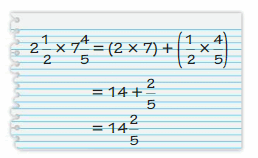
No friend is incorrect.
2\(\frac{1}{2}\) X 7\(\frac{4}{5}\) = 19\(\frac{1}{2}\) ≠ 14\(\frac{2}{5}\)
Explanation:
Given 2\(\frac{1}{2}\) X 7\(\frac{4}{5}\) so
first we write mixed numbers 2\(\frac{1}{2}\) as 2 X 2 + 1 by 2 = \(\frac{5}{2}\) and 7\(\frac{4}{5}\) as 7 X 5 + 4 by 5 = \(\frac{39}{5}\)
now we multiply \(\frac{5}{2}\) X \(\frac{39}{5}\),
Step I: We multiply the numerators as 5 X 39 = 195
Step II: We multiply the denominators as 2 X 5 = 10
Step III: We write the fraction in the simplest form as \(\frac{195}{10}\),
we can further simplify as both goes in 5, 5 X 39 = 195 and 5 X 2 = 10, (39,2),
So 2\(\frac{1}{2}\) X 7\(\frac{4}{5}\) = \(\frac{39}{2}\).
As numerator is greater than denominator we write in mixed fraction
also as (19 X 2 + 1 by 2), 19\(\frac{1}{2}\).
As friend says 2\(\frac{1}{2}\) X 7\(\frac{4}{5}\) =14\(\frac{2}{5}\) which is incorrect because 2\(\frac{1}{2}\) X 7\(\frac{4}{5}\) = 19\(\frac{1}{2}\). No friend is incorrect as 2\(\frac{1}{2}\) X 7\(\frac{4}{5}\) = 19\(\frac{1}{2}\) ≠ 14\(\frac{2}{5}\).
Question 54.
MODELING REAL LIFE
A vitamin C tablet contains \(\frac{1}{4}\) of a gram of vitamin C. You take 1\(\frac{1}{2}\) tablets every day. How many grams of vitamin C do you take every day?
\(\frac{3}{8}\) grams of vitamin C I do take every day.
Explanation:
Given a vitamin C tablet contains \(\frac{1}{4}\) of a gram of vitamin C.
I take 1\(\frac{1}{2}\) tablets every day. So number of grams of vitamin C
I do take every day is 1\(\frac{1}{2}\) X \(\frac{1}{4}\) so
first we write mixed number 1\(\frac{1}{2}\) as 1 X 2 + 1 by 2 =
\(\frac{3}{2}\) now we multiply \(\frac{3}{2}\) X \(\frac{1}{4}\)
Step I: We multiply the numerators as 3 X 1 = 3
Step II: We multiply the denominators as 2 X 4 = 8
Step III: We write the fraction in the simplest form as \(\frac{3}{8}\),
So 1\(\frac{1}{2}\) X \(\frac{1}{4}\) = \(\frac{3}{8}\).
Therefore \(\frac{3}{8}\) grams of vitamin C I do take every day.
Question 55.
PROBLEM SOLVING
You make a banner for a football rally.
a. What is the area of the banner?
b. You add a \(\frac{1}{4}\)-foot border on each side. What is the area of the new banner?
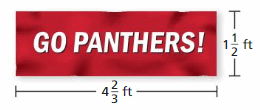
a. Area of the banner is 7 square feet
b. The area of new banner is 10\(\frac{15}{16}\) square feet
Explanation:
a. Given width of banner as 4\(\frac{2}{3}\) ft and height as 1\(\frac{1}{2}\) feet,Therefore the area of banner is 4\(\frac{2}{3}\) X 1\(\frac{1}{2}\) so
first we write mixed numbers 4\(\frac{2}{3}\) as 4 X 3 + 2 by 3 = \(\frac{14}{3}\) and 1\(\frac{1}{2}\) as 1 X 2 + 1 by 2 = \(\frac{3}{2}\)
now we multiply \(\frac{14}{3}\) X \(\frac{3}{2}\),
Step I: We multiply the numerators as 14 X 3 = 42
Step II: We multiply the denominators as 3 X 2 = 6
Step III: We write the fraction in the simplest form as \(\frac{42}{6}\),
we can further simplify as both goes in 6, 6 X 7 = 42 and 6 X 1 = 6, (7,1),
4\(\frac{2}{3}\) X 1\(\frac{1}{2}\) = 7 square feet.
b. Now we add a \(\frac{1}{4}\)-foot border on each side now the width changes to
\(\frac{14}{3}\) X \(\frac{1}{4}\) =\(\frac{14 x 1}{3 X 4}\)= \(\frac{14}{12}\) on simplification both goes in 2 we get \(\frac{7}{6}\),
the new width is \(\frac{14}{3}\) + \(\frac{7}{6}\) we get 14 x 2 + 7 by 6 = \(\frac{35}{6}\) and new height changes to \(\frac{3}{2}\) X \(\frac{1}{4}\) = \(\frac{3}{8}\) now the new height becomes \(\frac{3}{2}\) + \(\frac{3}{8}\) we get (3 X 4 + 3 by 8) = \(\frac{15}{8}\), Now the area of the new banner is \(\frac{35}{6}\) X \(\frac{15}{8}\)
Step I: We multiply the numerators as 35 X 15 = 525
Step II: We multiply the denominators as 6 X 8 = 48
Step III: We write the fraction in the simplest form as \(\frac{525}{48}\),
we can further simplify as both goes in 3, 3 X 175 = 525 and 3 X 16 = 48, (175,16),
\(\frac{175}{16}\), As numerator is greater than denominator we write in mixed fraction also as (10 X 16 + 15 by 16), 10\(\frac{15}{16}\) square feet.
MULTIPLYING FRACTIONS AND MIXED NUMBERS
Multiply. Write the answer in simplest form.
Question 56.

 = \(\frac{2}{15}\)
= \(\frac{2}{15}\)
Explanation:
Step I: We multiply the numerators as 1 X 3 X 4 = 12
Step II: We multiply the denominators as 2 X 5 X 9 = 90
Step III: We write the fraction in the simplest form as \(\frac{12}{90}\),
we can further simplify as both goes in 6, 6 X 2 = 12 and 6 X 15 = 90, (2,15),
So \(\frac{1}{2}\) X \(\frac{3}{5}\) X \(\frac{4}{9}\) = \(\frac{2}{15}\).
Question 57.

 = \(\frac{25}{12}\) = 2\(\frac{1}{12}\)
= \(\frac{25}{12}\) = 2\(\frac{1}{12}\)
Explanation:
Given expression as \(\frac{4}{7}\) X 4\(\frac{3}{8}\) X \(\frac{5}{6}\),
first we write mixed numbers 4\(\frac{3}{8}\) as 4 X 8 + 3 by 8 = \(\frac{35}{8}\) now we multiply \(\frac{4}{7}\) X \(\frac{35}{8}\) X \(\frac{5}{6}\)
Step I: We multiply the numerators as 4 X 35 X 5 = 700
Step II: We multiply the denominators as 7 X 8 X 6 = 336
Step III: We write the fraction in the simplest form as \(\frac{700}{336}\),
we can further simplify as both goes in 28, 28 X 25 = 700 and 28 X 12 = 336, (25,12),
So \(\frac{4}{7}\) X 4\(\frac{3}{8}\) X \(\frac{5}{6}\) = \(\frac{25}{12}\), As numerator is greater than denominator we write in mixed fraction
also as (2 X12 + 1 by 12), 2\(\frac{1}{12}\).
Question 58.

 = \(\frac{132}{5}\) = 26\(\frac{2}{5}\).
= \(\frac{132}{5}\) = 26\(\frac{2}{5}\).
Explanation:
Given expression as 1\(\frac{1}{15}\) X 5\(\frac{2}{5}\) X 4\(\frac{7}{12}\),first we write mixed numbers 1\(\frac{1}{15}\) as 1 X 15 + 1 by 15 = \(\frac{16}{15}\), 5\(\frac{2}{5}\) as 5 X 5 + 2 by 5 = \(\frac{27}{5}\),
4\(\frac{7}{12}\) as 4 X 12 + 7 by 12 = 55 by 12 = \(\frac{55}{12}\)
now we multiply \(\frac{16}{15}\) X \(\frac{27}{5}\) X \(\frac{55}{12}\)
Step I: We multiply the numerators as 16 X 27 X 55 = 23760
Step II: We multiply the denominators as 15 X 5 X 12 = 900
Step III: We write the fraction in the simplest form as \(\frac{23760}{900}\),
we can further simplify as both goes in 180, 180 X 132 = 23760 and 180 X 5 = 900, (132,5),
So 1\(\frac{1}{15}\) X 5\(\frac{2}{5}\) X 4\(\frac{7}{12}\) =
\(\frac{132}{5}\). As numerator is greater than denominator we write in
mixed fraction also as (26 X 5 + 2 by 5), 26\(\frac{2}{5}\).
Question 59.

 = \(\frac{27}{125}\)
= \(\frac{27}{125}\)
Explanation:
Given expression as (\(\frac{3}{5}\))3 we write as \(\frac{3}{5}\) X \(\frac{3}{5}\) X \(\frac{3}{5}\) now
Step I: We multiply the numerators as 3 X 3 X 3 = 27
Step II: We multiply the denominators as 5 X 5 X 5 = 125
Step III: We write the fraction in the simplest form as \(\frac{27}{125}\).
therefore (\(\frac{3}{5}\))3 = (\(\frac{27}{125}\)).
Question 60.

 = \(\frac{9}{25}\)
= \(\frac{9}{25}\)
Explanation :
Now we write the expression as (\(\frac{4}{5}\))2 X (\(\frac{3}{4}\))2 =
\(\frac{4}{5}\) X \(\frac{4}{5}\) X \(\frac{3}{4}\) X \(\frac{3}{4}\) now Step I: We multiply the numerators as 4 X 4 X 3 X 3 = 144
Step II: We multiply the denominators as 5 X 5 X 4 X 4 = 400
Step III: We write the fraction in the simplest form as \(\frac{144}{400}\)
we can further simplify as both goes in 16, 16 X 9 = 144 and 16 X 25 = 400, (9,25),
therefore (\(\frac{4}{5}\))2 X (\(\frac{3}{4}\))2 = \(\frac{9}{25}\).
Question 61.

 = \(\frac{121}{144}\)
= \(\frac{121}{144}\)
Explanation:
First we write mixed fraction into fraction as 1\(\frac{1}{10}\) = 1 X 10 +1 by 10 =
\(\frac{11}{10}\), Now we write (\(\frac{5}{6}\))2 X (\(\frac{11}{10}\))2 = \(\frac{5}{6}\) X \(\frac{5}{6}\) X \(\frac{11}{10}\) X \(\frac{11}{10}\) now Step I: We multiply the numerators as 5 X 5 X 11 X 11 = 3025
Step II: We multiply the denominators as 6 X 6 X 10 X 10 = 3600
Step III: We write the fraction in the simplest form as \(\frac{3025}{3600}\),
we can further simplify as both goes in 25, 25 X 121 = 3025 and 25 X 144 = 3600, (121,144),
therefore (\(\frac{5}{6}\))2 X (1\(\frac{1}{10}\))2 = \(\frac{121}{144}\).
Question 62.
OPEN-ENDED
Find a fraction that, when multiplied by \(\frac{1}{2}\), is less than \(\frac{1}{4}\).
\(\frac{1}{3}\)
Explanation:
Let us take on fraction as \(\frac{1}{3}\) which when multiplied by \(\frac{1}{2}\) we get numerator as 1 X 1 = 1 and denominator as 3 X 2 = 6 as \(\frac{1}{6}\) < \(\frac{1}{4}\), So we take \(\frac{1}{3}\) as
\(\frac{1}{3}\) X \(\frac{1}{2}\) < \(\frac{1}{4}\).
Question 63.
LOGIC
You are in a bike race. When you get to the first checkpoint, you are \(\frac{2}{5}\) of the distance to the second checkpoint. When you get to the second checkpoint, you are \(\frac{1}{4}\) of the distance to the finish. What is the distance from the start to the first checkpoint?

The distance from the start to the first checkpoint is 4 miles
Explanation:
Given total distance is 40 miles and first check point is \(\frac{2}{5}\)
of the distance to the second checkpoint and second checkpoint is
\(\frac{1}{4}\) of the distance to the finish, So second checkpoint is \(\frac{1}{4}\) X 40 as both goes in 4 we get 10 miles, At 10 miles we have second checkpoint,
now the distance from the start to the first checkpoint is \(\frac{2}{5}\) X Second checkpoint \(\frac{2}{5}\) X 10,
Step 1 : We multiply the numerators as 2 X 10
Step II: Denominator is 5,
Step III: We write the fraction in the simplest form as \(\frac{20}{5}\)
we can further simplify as both goes in 5, 5 X 4 = 20 and 5 X 1 = 5, (4,1) = 4 miles,
therefore the distance from the start to the first checkpoint is 4 miles.
Question 64.
NUMBER SENSE
Is the product of two positive mixed numbers ever less than 1? Explain.
No, the product of two positive mixed numbers never ever be less than 1,
Explanation:
We know a mixed must be greater than 1 and two numbers
that are greater than one that are multiplied together end up
being greater that either number by itself. So the product of two
positive mixed numbers never ever be less than 1.
Question 65.
REASONING
You plan to add a fountain to your garden.
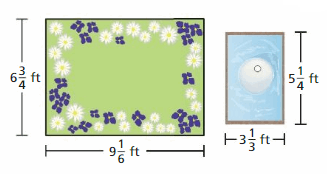
a. Draw a diagram of the fountain in the garden. Label the dimensions.
b. Describe two methods for finding the area of the garden that surrounds the fountain.
c. Find the area. Which method did you use, and why?
a.
b. 1. Subtract area of the fountain from the total area of the garden or
2. We use rectangles to find the area of each piece of the garden and add these areas.
c. Area of the garden is 44\(\frac{3}{8}\) square feet, Used
Subtract method because of fewer calculations.
Explanation:
a. We have taken measurements of fountain and drawn the fountain in the
garden as shown with labels of width of fountain as 3\(\frac{1}{3}\) and
height of the fountain as 5\(\frac{1}{4}\).
b. To find the area of the garden that surrounds the fountain first we
subtract area of the fountain from the total area of the garden or
We use rectangles to find the area of each piece of the garden and add these areas.
c. We use subtraction method first we calculate area of garden as
9\(\frac{1}{6}\) X 6\(\frac{3}{4}\)
First we write mixed fraction into fraction as 9\(\frac{1}{6}\) = 9 X 6 + 1 by 6 =
\(\frac{55}{6}\), 6\(\frac{3}{4}\) = 6 X 4 + 3 by 4 = \(\frac{27}{4}\) Now we multiply \(\frac{55}{6}\) X \(\frac{27}{4}\)
Step I: We multiply the numerators as 55 X 27 = 1485
Step II: We multiply the denominators as 6 X 4 = 24
Step III: We write the fraction in the simplest form as \(\frac{1485}{24}\),
we can further simplify as both goes in 3, 3 X 495 = 1485 and 3 X 8 = 24, (495,8),
9\(\frac{1}{6}\) X 6\(\frac{3}{4}\) = \(\frac{495}{8}\).
Now we calculate area of fountain as 5\(\frac{1}{4}\) X 3 \(\frac{1}{3}\),
First we write mixed fraction into fraction as 5\(\frac{1}{4}\) = 5 X 4 + 1 by 4 =
\(\frac{21}{4}\) and 3 \(\frac{1}{3}\) = 3 X 3 + 1 by 3 = \(\frac{10}{3}\) ,Step I: We multiply the numerators as 21 X 10 = 210
Step II: We multiply the denominators as 4 X 3 = 12
Step III: We write the fraction in the simplest form as \(\frac{210}{12}\),
we can further simplify as both goes in 6, 6 X 35 = 210 and 6 X 2 = 12, (35,2),
5\(\frac{1}{4}\) X 3\(\frac{1}{3}\) = \(\frac{35}{2}\).
Therefore area of garden is total area of garden – area of fountain so
\(\frac{495}{8}\) – \(\frac{35}{2}\) = (495 – 35 X 4) by 8 = \(\frac{355}{8}\) ,As numerator is greater than denominator we write in
mixed fraction also as (44 X 8 + 3 by 8), 44\(\frac{3}{8}\) square feet,
Therefore area of the garden is 44\(\frac{3}{8}\) square feet,
Here we have used subtraction method because we can do fewer calculations.
Question 66.
PROBLEM SOLVING
The cooking time for a ham is \(\frac{2}{5}\) of an hour for each pound. What time should you start cooking a ham that weighs 12\(\frac{3}{4}\) pounds so that it is done at 4:45 P.M.?
We should start cooking at 11:39 am so that it is done at 4:45pm
Explanation:
Given the cooking time for a ham is \(\frac{2}{5}\) of an hour for each pound,
The minutes required is \(\frac{2}{5}\) X 60 = 24 minutes,
so 24 minutes for each pound, Now we multiply minutes by pounds
First we write 12\(\frac{3}{4}\) as 12 X 4 + 3 by 4 is \(\frac{51}{4}\) X 24
Step I: We multiply the numerators as 51 X 24 =1224
Step II: Denominators is same 4
Step III: We write the fraction in the simplest form as \(\frac{1224}{4}\), we get
306 as both goes in 4, Now we convert 306 minutes into hours as
\(\frac{306}{60}\) = 5.1 and .1 in an hour is 6 minutes, Therefore
we cook the ham for 5 hours and 6 minutes. As it is done at 4:45 pm means
16 hours,45 minutes – 5 hours 6 minutes = 11 : 39 am,
So we should start cooking at 11:39 am.
Question 67.
PRECISION
Complete the Four Square for \(\frac{7}{8}\) × \(\frac{1}{3}\).
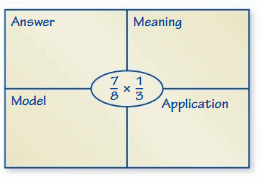
Answer is \(\frac{7}{24}\)
Meaning is \(\frac{7}{8}\) of \(\frac{1}{3}\)
Model is
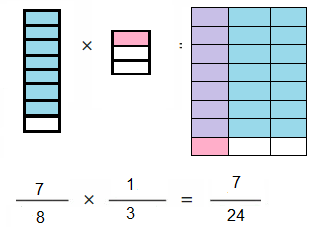
Application : The path around a park is \(\frac{1}{3}\) mile long,
I walk \(\frac{7}{8}\) of the path, How far did I walk?
Explanation:
First we write answer as \(\frac{7}{8}\) × \(\frac{1}{3}\) =
Step I: We multiply the numerators as 7 X 1 = 7
Step II: We multiply denominators as 8 X 3 = 24
Step III: We write the fraction in the simplest form as \(\frac{7}{24}\),
So \(\frac{7}{8}\) × \(\frac{1}{3}\) = \(\frac{7}{24}\)
The meaning is \(\frac{7}{8}\) of \(\frac{1}{3}\) and Model is
as shown above the product is purple color overlapping 7 out of 24,
Applying the question as The path around a park is \(\frac{1}{3}\) mile long,
I walk \(\frac{7}{8}\) of the path, How far did I walk?
Question 68.
DIG DEEPER!
You ask 150 people about their pets. The results show that \(\frac{9}{25}\) of the people own a dog. Of the people who own a dog, \(\frac{1}{6}\) of them also own a cat.
a. What portion of the people own a dog and a cat?
b. How many people own a dog but not a cat? Explain.
a. 54 people, 36% portion of the people own a dog and a cat.
b. 45 people own a dog but not a cat.
Explanation:
Given I ask 150 people about their pets, in that \(\frac{9}{25}\) of the people own a dog means 150 X \(\frac{9}{25}\) = \(\frac{1350}{25}\) = 54 people own a dog. So portion of the people own a dog and cat in 150 are 54 X 100 by 150 = 36%.
Now Of the people who own a dog, \(\frac{1}{6}\) of them also own a cat,
Number of them also own a cat are 54 X \(\frac{1}{6}\) = \(\frac{54}{6}\)= 9
So 9 people owns a cat. We have 54 people owns dog and cat ,
so only own a dog but not cat are 54 – 9 = 45 people own a dog but not a cat.
Question 69.
NUMBER SENSE
Use each of the numbers from 1 to 9 exactly once to create three mixed numbers with the greatest possible product. Then use each of the numbers exactly once to create three mixed numbers with the least possible product. Find each product. Explain your reasoning. The fraction portion of each mixed number should be proper.

Greatest possible product is
9\(\frac{1}{2}\) X 8\(\frac{3}{4}\) X 7\(\frac{5}{6}\) = 651\(\frac{7}{48}\)
Least possible product is
1\(\frac{4}{9}\) X 2\(\frac{5}{8}\) X 3\(\frac{6}{7}\) = 14\(\frac{5}{8}\)
Explanation:
First we use the greatest digits for the whole numbers ,then we use
remaining digits to form the greatest(or least) fractional parts later
use the least(or greatest) digits for the whole numbers ,
to calculate greatest possible product as
9\(\frac{1}{2}\) X 8\(\frac{3}{4}\) X 7\(\frac{5}{6}\),
we write mixed fraction as 9\(\frac{1}{2}\) = 9 X 2 + 1 by 2 = \(\frac{19}{2}\),
8\(\frac{3}{4}\) = 8 X 4 + 3 by 4 = \(\frac{35}{4}\), 7\(\frac{5}{6}\) =
7 X 6 + 5 by 6 = \(\frac{47}{6}\),Now we multiply \(\frac{19}{2}\) X \(\frac{35}{4}\) X \(\frac{47}{6}\),
Step I: We multiply the numerators as 19 X 35 X 47 = 31255
Step II: We multiply denominators as 2 X 4 X 6 = 48
Step III: We write the fraction in the simplest form as \(\frac{31255}{48}\),
As numerator is greater than denominator we write in
mixed fraction also as (651 X 48 + 7 by 48), 651\(\frac{7}{48}\),
Now calculate least possible product as
1\(\frac{4}{9}\) X 2\(\frac{5}{8}\) X 3\(\frac{6}{7}\),
we write mixed fraction as 1\(\frac{4}{9}\) = 1 X 9 + 4 by 9 = \(\frac{13}{9}\),
2\(\frac{5}{8}\) = 2 X 8 + 5 by 8 = \(\frac{21}{8}\), 3\(\frac{6}{7}\) =
3 X 7 + 6 by 7 = \(\frac{27}{7}\),Now we multiply \(\frac{13}{9}\) X \(\frac{21}{8}\) X \(\frac{27}{7}\)
Step I: We multiply the numerators as 13 X 21 X 27 = 7371
Step II: we multiply denominators as 9 X 8 X 7 = 504
Step III: We write the fraction in the simplest form as \(\frac{7371}{504}\),
we can further simplify as both goes in 63, 63 X 117 = 7371 and 63 X 8 = 504, (117,8) =
\(\frac{117}{8}\),As numerator is greater than denominator we write in
mixed fraction also as (14 X 8 + 5 by 8), 14\(\frac{5}{8}\).
Therefore greatest possible product is 9\(\frac{1}{2}\) X 8\(\frac{3}{4}\) X 7\(\frac{5}{6}\) = 651\(\frac{7}{48}\),least possible product is 1\(\frac{4}{9}\) X 2\(\frac{5}{8}\) X 3\(\frac{6}{7}\) = 14\(\frac{5}{8}\).
Lesson 2.2 Dividing Fractions
EXPLORATION 1
Dividing by Fractions
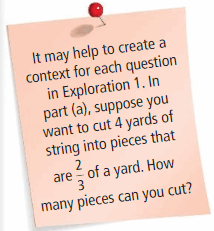
Work with a partner. Answer each question using a model.
a. How many two-thirds are in four?

b. How many three-fourths are in three?
c. How many two-fifths are in four-fifths?
d. How many two-thirds are in three?

e. How many one-thirds are in five-sixths?
a.
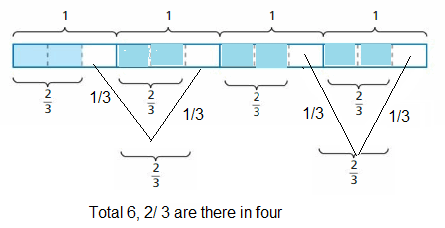
Six, two-thirds are there in four,
b.

Four, three-fourths are there in three,
c.
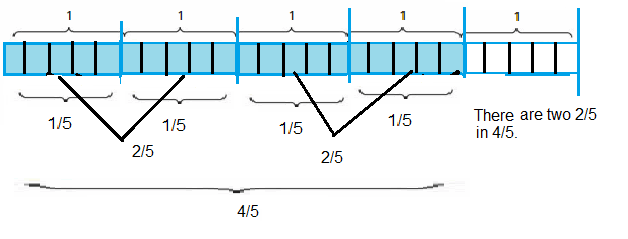
Two, two-fifths are in four-fifths,
d.

4\(\frac{1}{2}\), two-thirds are there in three,
e.

2\(\frac{1}{2}\), one-thirds are in five-sixths
Explanation:
There are
a. Given to find Two-Thirds are there in four is four divides \(\frac{2}{3}\)
we write reciprocal of the fraction \(\frac{2}{3}\) as \(\frac{3}{2}\)=
4 X \(\frac{3}{2}\) = \(\frac{12}{2}\) =6,
Six, Two-Thirds are there in four as shown in the model above,
b. Given to find three-fourths are there in three is 3 divides \(\frac{3}{4}\)
we write reciprocal of the fraction \(\frac{3}{4}\) as \(\frac{4}{3}\)=
3 X \(\frac{4}{3}\)= \(\frac{12}{3}\) = 4
Four, three-fourths are there in three shown in the model above,
c. Given to find two-fifths are in four-fifths so four-fifths divides two -fifths,first we write
\(\frac{2}{5}\) as reciprocal \(\frac{5}{2}\) now multiply as
\(\frac{4}{5}\) X \(\frac{5}{2}\) = \(\frac{4 X 5}{5 X 2}\) = 2
Two, two-fifths are in four-fifths shown in the model above,
d. Given to find Two-Thirds are there in three is three divides \(\frac{2}{3}\)
we write reciprocal of the fraction \(\frac{2}{3}\) as \(\frac{3}{2}\)=
3 X \(\frac{3}{2}\) = \(\frac{9}{2}\) as numerator is greater we write as
4 X 2 + 1 by 2 = 4\(\frac{1}{2}\) 4\(\frac{1}{2}\), two-thirds are there in three shown in the model above,
e. Given to find one-thirds are in five-sixths first we write
\(\frac{1}{3}\) as reciprocal \(\frac{3}{1}\) now multiply as
\(\frac{5}{6}\) X \(\frac{3}{1}\) = \(\frac{5 X 3}{6 X 1}\) = \(\frac{5}{2}\)] as numerator is greater we write as
(2 X 2 + 1 by 2) = 2\(\frac{1}{2}\),So 2\(\frac{1}{2}\), one-thirds are in five-sixths as shown in the model above.
EXPLORATION 2
Finding a Pattern
Work with a partner. The table shows the division expressions from Exploration 1. Complete each multiplication expression so that it has the same value as the division expression above it. What can you conclude about dividing by fractions?

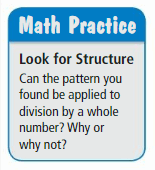

Explanation:
Dividing a fraction by another fraction is the same as multiplying the fraction
by the reciprocal (inverse) of the other. We get the reciprocal of a fraction
by interchanging its numerator and denominator.
Yes the pattern found can be applied to division by a whole number as
Step 1: The whole number is converted into the fraction by
applying the denominator value as 1
Step 2: Take the reciprocal of the number
Step 3: Now, multiply the fractional value by a given fraction
Step 4: Simplify the given expression
Example: Divide \(\frac{6}{5}\) by 10
Step 1: Convert 10 into a fraction: \(\frac{10}{1}\)
Step 2: Take reciprocal: \(\frac{1}{10}\)
Step 3: Multiply \(\frac{6}{5}\) and \(\frac{1}{10}\)
we get \(\frac{6}{50}\) on simplification as both goes in 2, 2 X 3 = 6 and 2 x 25 = 50,(3,25), So we get \(\frac{3}{25}\).
2.2 Lesson
Two numbers whose product is 1 are reciprocals, or multiplicative inverses. To write the reciprocal of a number, first write the number as a fraction. Then invert the fraction. So, the reciprocal of a fraction \(\frac{a}{b}\) is \(\frac{b}{a}\), where a ≠ 0 and b ≠ 0.
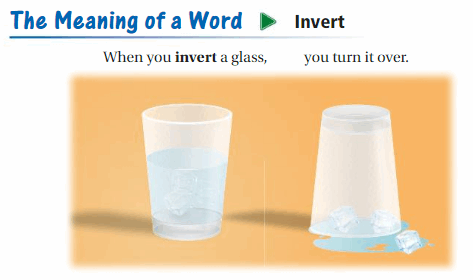
Try It
Question 1.
\(\frac{3}{4}\)
\(\frac{3}{4}\) the reciprocals is \(\frac{4}{3}\)
Explanation:
We write the reciprocals of \(\frac{3}{4}\) as the number is already in fraction
we write as \(\frac{4}{3}\)
Question 2.
5
5 the reciprocals is \(\frac{1}{5}\)
Explanation:
We write the reciprocals of 5 as the number is whole number we convert
into the fraction by applying the denominator value as 1 and take
the reciprocal of the number as \(\frac{1}{5}\).
Question 3.
\(\frac{7}{2}\)
\(\frac{7}{2}\) the reciprocals is \(\frac{2}{7}\)
Explanation:
We write the reciprocals of \(\frac{7}{2}\) as the number is already in fraction
we write as \(\frac{2}{7}\).
Question 4.
\(\frac{4}{9}\)
\(\frac{4}{9}\) the reciprocals is \(\frac{9}{4}\)
Explanation:
We write the reciprocals of \(\frac{4}{9}\) as the number is already in fraction
we write as \(\frac{9}{4}\).
Key Idea
Dividing Fractions
Words
To divide a number by a fraction, multiply the number by the reciprocal of the fraction.

Divide. Write the answer in simplest form. Use a model to justify your answer.
Question 5.

 = 4
= 4
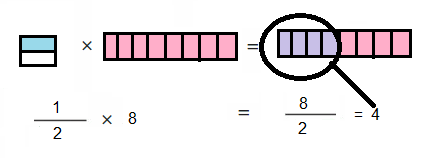
Explanation:
Given \(\frac{1}{2}\) ÷ \(\frac{1}{8}\) we write reciprocal of the fraction \(\frac{1}{8}\) as \(\frac{8}{1}\) and multiply as \(\frac{1}{2}\) X 8 =\(\frac{8}{2}\) = 4. As shown in the model we take half of 8 we get 4.
Question 6.

 = 1\(\frac{1}{3}\)
= 1\(\frac{1}{3}\)
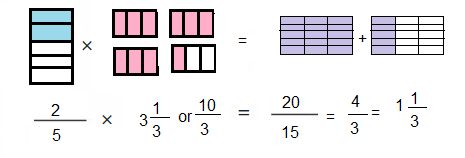
Explanation:
Given \(\frac{2}{5}\) ÷ \(\frac{3}{10}\) we write reciprocal of the fraction \(\frac{3}{10}\) as \(\frac{10}{3}\) and multiply as \(\frac{2}{5}\) X
\(\frac{10}{3}\)=\(\frac{2 X 10 }{5 X 3}\) = \(\frac{4}{3}\) = 1\(\frac{1}{3}\) and we have shown in the area model above.
Question 7.

 = \(\frac{1}{2}\)
= \(\frac{1}{2}\)
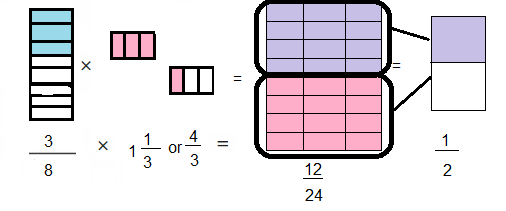
Explanation:
Given \(\frac{3}{8}\) ÷ \(\frac{3}{4}\) we write reciprocal of the fraction \(\frac{3}{4}\) as \(\frac{4}{3}\) and multiply as \(\frac{3}{8}\) X
\(\frac{4}{3}\) = \(\frac{3 X 4 }{8 X 3}\) = \(\frac{1}{2}\)
and we have shown in the area model as above.
Question 8.

 = \(\frac{4}{9}\)
= \(\frac{4}{9}\)

Explanation:
Given \(\frac{2}{7}\) ÷ \(\frac{9}{14}\) we write reciprocal of the fraction \(\frac{9}{14}\) as \(\frac{14}{9}\) and multiply as \(\frac{2}{7}\) X
\(\frac{14}{9}\) = \(\frac{2 X 14 }{7 X 9}\) = \(\frac{4}{9}\)
and we have shown in the area model above.
Try It
Divide. Write the answer in simplest form.
Question 9.

 = \(\frac{1}{9}\)
= \(\frac{1}{9}\)
Explanation:
\(\frac{1}{3}\)÷ 3 as the number 3 is whole number we convert
into the fraction by applying the denominator value as 1 and take
the reciprocal of the number as \(\frac{1}{3}\) and multiply as \(\frac{1}{3}\) X \(\frac{1}{3}\) Step I: We multiply the numerators as 1 X 1 = 1
Step II: We multiply denominators as 3 X 3 = 9
Step III: We write the fraction in the simplest form as \(\frac{1}{9}\),
So \(\frac{1}{3}\)÷ 3 = \(\frac{1}{9}\).
Question 10.

 = \(\frac{1}{15}\)
= \(\frac{1}{15}\)
Explanation:
\(\frac{2}{3}\)÷ 10 as the number 10 is whole number we convert
into the fraction by applying the denominator value as 1 and take
the reciprocal of the number as \(\frac{1}{10}\) and multiply as \(\frac{2}{3}\) X \(\frac{1}{10}\) Step I: We multiply the numerators as 2 X 1 = 2
Step II: We multiply denominators as 3 X 10 = 30
Step III: We write the fraction in the simplest form as \(\frac{2}{30}\),
we can further simplify as both goes in 2, 2 X 1 = 2 and 2 X 15 = 30, (1,15) =
So \(\frac{2}{3}\)÷ 10 = \(\frac{1}{15}\).
Question 11.

 = \(\frac{5}{32}\)
= \(\frac{5}{32}\)
Explanation:
\(\frac{5}{8}\)÷ 4 as the number 4 is whole number we convert
into the fraction by applying the denominator value as 1 and take
the reciprocal of the number as \(\frac{1}{4}\) and multiply as \(\frac{5}{8}\) X \(\frac{1}{4}\) Step I: We multiply the numerators as 5 X 1 = 5
Step II: We multiply denominators as 8 X 4 = 32
Step III: We write the fraction in the simplest form as \(\frac{5}{32}\),
So \(\frac{5}{8}\)÷ 4 = \(\frac{5}{32}\).
Question 12.

 = \(\frac{3}{14}\)
= \(\frac{3}{14}\)
Explanation:
\(\frac{6}{7}\)÷ 4 as the number 4 is whole number we convert
into the fraction by applying the denominator value as 1 and take
the reciprocal of the number as \(\frac{1}{4}\) and multiply as \(\frac{6}{7}\) X \(\frac{1}{4}\) Step I: We multiply the numerators as 6 X 1 = 6
Step II: We multiply denominators as 7 X 4 = 28
Step III: We write the fraction in the simplest form as \(\frac{6}{28}\),
we can further simplify as both goes in 2, 2 X 3 = 6 and 2 X 14 = 28, (3,14) =
So \(\frac{6}{7}\)÷ 4 = \(\frac{3}{14}\).
Self-Assessment for Concepts & Skills
Solve each exercise. Then rate your understanding of the success criteria in your journal.
DIVIDING FRACTIONS
Divide. Write the answer in simplest form. Draw a model to justify your answer.
Question 13.

 =\(\frac{12}{15}\)= \(\frac{4}{5}\)
=\(\frac{12}{15}\)= \(\frac{4}{5}\)

Explanation:
Given \(\frac{2}{3}\) ÷ \(\frac{5}{6}\) we write reciprocal of the fraction \(\frac{5}{6}\) as \(\frac{6}{5}\) and multiply as \(\frac{2}{3}\) X
\(\frac{6}{5}\) = \(\frac{2 X 6}{3 X 5}\) = \(\frac{12}{15}\)
we can further simplify as both goes in 3, 3 X 4 = 12 and 3 X 5 = 15, (4,5) = \(\frac{4}{5}\).
Question 14.

 = \(\frac{2}{7}\)
= \(\frac{2}{7}\)
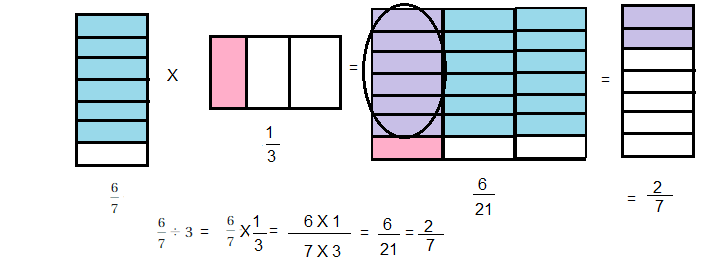
Explanation:
\(\frac{6}{7}\)÷ 3 as the number 3 is whole number we convert
into the fraction by applying the denominator value as 1 and take
the reciprocal of the number as \(\frac{1}{3}\) and multiply as \(\frac{6}{7}\) X \(\frac{1}{3}\) Step I: We multiply the numerators as 6 X 1 = 6
Step II: We multiply denominators as 7 X 3 = 21
Step III: We write the fraction in the simplest form as \(\frac{6}{21}\),
we can further simplify as both goes in 3, 3 X 2 = 6 and 3 X 7 = 21, (2,7),
So \(\frac{6}{7}\)÷ 3 = \(\frac{2}{7}\).
Question 15.
WHICH ONE DOESN’T BELONG?
Which of the following does not belong with the other three? Explain your reasoning.

\(\frac{3}{2}\) X \(\frac{4}{5}\) does not belong with the other three
Explanation:
a. \(\frac{2}{3}\) ÷ \(\frac{4}{5}\) we write reciprocal of the fraction \(\frac{4}{5}\) as \(\frac{5}{4}\) and multiply as \(\frac{2}{3}\) X
\(\frac{5}{4}\) = \(\frac{2 X 5}{3 X 4}\) = \(\frac{10}{12}\)
we can further simplify as both goes in 2, 2 X 5 = 10 and 2 X 6 = 12, (5,6),
\(\frac{2}{3}\) ÷ \(\frac{4}{5}\) = \(\frac{5}{6}\).
b. \(\frac{3}{2}\) X \(\frac{4}{5}\) = \(\frac{3 X 4}{2 X 5}\) =\(\frac{12}{10}\) we can further simplify as both goes in 2, 2 X 6 = 12 and 2 X 5 = 10, (6,5), \(\frac{6}{5}\).
c. \(\frac{5}{4}\) X \(\frac{2}{3}\) = \(\frac{5 X 2}{4 X 3}\) =
\(\frac{10}{12}\) we can further simplify as both goes in 2, 2 X 5 = 10 and 2 X 6 = 12, (5,6),\(\frac{5}{4}\) X \(\frac{2}{3}\) = \(\frac{5}{6}\).
d. \(\frac{5}{4}\) ÷ \(\frac{3}{2}\) we write reciprocal of the fraction \(\frac{3}{2}\) as \(\frac{2}{3}\) and multiply as \(\frac{5}{4}\) X
\(\frac{2}{3}\) = \(\frac{5 X 2}{4 X 3}\) = \(\frac{10}{12}\)
we can further simplify as both goes in 2, 2 X 5 = 10 and 2 X 6 = 12, (5,6),
\(\frac{5}{4}\) ÷ \(\frac{3}{2}\) = \(\frac{5}{6}\).
As \(\frac{2}{3}\) ÷ \(\frac{4}{5}\), \(\frac{5}{4}\) X \(\frac{2}{3}\), \(\frac{5}{4}\) ÷ \(\frac{3}{2}\) = \(\frac{5}{6}\) only
\(\frac{3}{2}\) X \(\frac{4}{5}\) = \(\frac{6}{5}\),
so \(\frac{3}{2}\) X \(\frac{4}{5}\) does not belong with the other three.
MATCHING
Match the expression with its value.
Question 16.

\(\frac{2}{5}\) ÷ \(\frac{8}{15}\) =\(\frac{3}{4}\) matches with B
Explanation:
Given expressions as \(\frac{2}{5}\) ÷ \(\frac{8}{15}\) we write reciprocal of the fraction \(\frac{8}{15}\) as \(\frac{15}{8}\) and multiply as \(\frac{2}{5}\) X \(\frac{15}{8}\) = \(\frac{2 X 15}{5 X 8}\) = \(\frac{30}{40}\),we can further simplify as both goes in 10, 10 X 3 = 30 and 10 X 4 = 40, (3,4),
\(\frac{3}{4}\) therefore \(\frac{2}{5}\) ÷ \(\frac{8}{15}\) =\(\frac{3}{4}\) matches with B.
Question 17.

\(\frac{8}{15}\) ÷ \(\frac{2}{5}\) = 1\(\frac{1}{3}\) matches with D
Explanation:
Given expressions as \(\frac{8}{15}\) ÷ \(\frac{2}{5}\) we write reciprocal of the fraction \(\frac{2}{5}\) as \(\frac{5}{2}\) and multiply as \(\frac{8}{15}\) X \(\frac{5}{2}\) = \(\frac{8 X 5}{15 X 2}\) = \(\frac{40}{30}\),we can further simplify as both goes in 10, 10 X 4 = 40 and 10 X 3 = 30, (4,3),
\(\frac{4}{3}\) As numerator is greater than denominator we write in
mixed fraction also as (1 X 3 + 1 by 3), 1\(\frac{1}{3}\), therefore \(\frac{8}{15}\) ÷ \(\frac{2}{5}\) = 1\(\frac{1}{3}\) matches with D.
Question 18.

\(\frac{2}{15}\) ÷ \(\frac{8}{5}\) =\(\frac{1}{12}\) matches with A
Explanation:
Given expressions as \(\frac{2}{15}\) ÷ \(\frac{8}{5}\) we write reciprocal of the fraction \(\frac{8}{5}\) as \(\frac{5}{8}\) and multiply as \(\frac{2}{15}\) X \(\frac{5}{8}\) = \(\frac{2 X 5}{15 X 8}\) = \(\frac{10}{120}\),we can further simplify as both goes in 10, 10 X 1 = 10 and 10 X 12= 120, (1,12),
\(\frac{1}{12}\) ,therefore \(\frac{2}{15}\) ÷ \(\frac{8}{5}\) =\(\frac{1}{12}\) matches with A.
Question 19.

\(\frac{8}{5}\) ÷ \(\frac{2}{15}\) = 12 matches with C
Explanation:
Given expressions as \(\frac{8}{5}\) ÷ \(\frac{2}{15}\) we write reciprocal of the fraction \(\frac{2}{15}\) as \(\frac{15}{2}\) and multiply as \(\frac{8}{5}\) X \(\frac{15}{2}\) = \(\frac{8 X 15}{5 X 2}\) = \(\frac{120}{10}\),we can further simplify as both goes in 10, 10 X 12 = 120 and 10 X 1 = 10, (12,1),= 12,
So \(\frac{8}{5}\) ÷ \(\frac{2}{15}\) = 12 matches with C.
Self-Assessment for Problem Solving
Solve each exercise. Then rate your understanding of the success criteria in your journal.
Question 20.
You have 5 cups of rice to make bibimbap, a popular Korean meal. The recipe calls for \(\frac{4}{5}\) cup of rice per serving. How many full servings of bibimbap can you make? How much rice is left over?

6 full servings of bibimbap I can make, \(\frac{1}{4}\) cup of rice is left over
Explanation:
Given I have 5 cups of rice to make bibimbap, a popular Korean meal and
the recipe calls for \(\frac{4}{5}\) cup of rice per serving so we divide 5 cups with
\(\frac{4}{5}\) cup of rice per serving as 5 ÷ \(\frac{4}{5}\) we write reciprocal of the fraction \(\frac{4}{5}\) as \(\frac{5}{4}\) and multiply as
5 X \(\frac{5}{4}\), Step I: We multiply the numerators as 5 X 5 = 25
Step II: Denominator is same 4
Step III: We write the fraction in the simplest form as \(\frac{25}{4}\),
As numerator is greater than denominator we write in
mixed fraction also as ( 6 X 4 + 1 by 4), 6\(\frac{1}{4}\) we got whole as 6, therefore
6 full servings of bibimbap I can make and \(\frac{1}{4}\) cup of rice is left over.
Question 21.
A band earns \(\frac{2}{3}\) of their profit from selling concert tickets and \(\frac{1}{5}\) of their profit from selling merchandise. The band earns a profit of $1500 from selling concert tickets. How much profit does the band earn from selling merchandise?
$450 profit does the band earn from selling merchandise
Explanation :
Let us take the amount be x and a band earns \(\frac{2}{3}\) of their profit from selling concert tickets and makes a profit of $1500 from selling concert tickets,
So x X \(\frac{2}{3}\) = $1500, on simplification 2x = 1500 X 3 = 4500,
therefore x = \(\frac{4500}{2}\) = $2250 and \(\frac{1}{5}\) of their profit from selling merchandise means $2250 X \(\frac{1}{5}\) = \(\frac{2250}{5}\)=
$450.
Dividing Fractions Homework & Practice 2.2
Review & Refresh
Multiply. Write the answer in simplest form.
Question 1.

 = \(\frac{21}{40}\)
= \(\frac{21}{40}\)
Explanation:
Given expression as \(\frac{7}{10}\) X \(\frac{3}{4}\),
Step I: We multiply the numerators as 7 X 3 = 21
Step II: We multiply denominators as 10 X 4 = 40
Step III: We write the fraction in the simplest form as \(\frac{21}{40}\),
So \(\frac{7}{10}\) X \(\frac{3}{4}\) = \(\frac{21}{40}\).
Question 2.

 = 1\(\frac{17}{18}\)
= 1\(\frac{17}{18}\)
Explanation:
Given \(\frac{5}{6}\) X 2\(\frac{1}{3}\) so
first we write mixed number 2\(\frac{1}{3}\) as 2 X 3 + 1 by 3 =
\(\frac{7}{3}\) now
we multiply \(\frac{5}{6}\) X \(\frac{7}{3}\),
Step I: We multiply the numerators as 5 X 7 = 35
Step II: We multiply the denominators as 6 X 3 =18
Step III: We write the fraction in the simplest form as \(\frac{35}{18}\),
As numerator is greater than denominator we write in
mixed fraction also as ( 1 X 18 + 17 by 18 ), 1\(\frac{17}{18}\)
So \(\frac{5}{6}\) X 2\(\frac{1}{3}\) = 1\(\frac{17}{18}\).
Question 3.

 = \(\frac{1}{6}\).
= \(\frac{1}{6}\).
Explanation:
Given expression as \(\frac{4}{9}\) X \(\frac{3}{8}\),
Step I: We multiply the numerators as 4 X 3 = 12
Step II: We multiply denominators as 9 X 8 = 72
Step III: We write the fraction in the simplest form as \(\frac{12}{72}\),
we can further simplify as both goes in 12, 12 X 1 = 12 and 12 X 6 = 72, (1,6),
So \(\frac{4}{9}\) X \(\frac{3}{8}\) = \(\frac{1}{6}\).
Question 4.

 = 16
= 16
Explanation :
2\(\frac{2}{5}\) X 6\(\frac{2}{3}\), We write mixed fractions
2\(\frac{2}{5}\) as 2 X 5 +2 by 5 = \(\frac{12}{5}\) and
6\(\frac{2}{3}\) as 6 X 3 + 2 by 3 = \(\frac{20}{3}\) Now we multiply
\(\frac{12}{5}\) X \(\frac{20}{3}\),
Step I: We multiply the numerators as 12 X 20 = 240
Step II: We multiply the denominators as 5 X 3 = 15
Step III: We write the fraction in the simplest form as \(\frac{240}{15}\),
we can further simplify as both goes in 15, 15 X 16 = 240 and 15 X 1 = 15, (16,1),
therefore 2\(\frac{2}{5}\) X 6\(\frac{2}{3}\) = 16.
Match the expression with its value.
Question 5.

3 + 2 X 42 = 35 matches with B
Explanation:
Given expression as 3 + 2 X 42 = 3 + ( 2 X 4 X 4) = 3 + 32 = 35 which matches with B.
Question 6.

(3 + 2) X 42 = 80 matches with D
Explanation:
Given expression as (3 + 2) X 42 = 5 X (4 X 4) = 5 X 16 = 80 which matches with D.
Question 7.

2 + 3 X 42 = 50 matches with C
Explanation:
Given expression as 2 + 3 X 42 = 2 + (3 X 4 X 4) = 2 + 48 = 50 which matches with C.
Question 8.

42 + 2 X 3 = 22 matches with A
Explanation:
Given expression as 42 + 2 X 3 = 16 + 6 = 22 which matches with A.
Find the area of the rectangle.
Question 9.

The area of rectangle is 14 square feet
Explanation:
Given width as 4 ft and height as 3.5 ft, we can write 3.5 as \(\frac{35}{10}\),
the area of rectangle is 4 X \(\frac{35}{10}\) = \(\frac{140}{10}\)
as both goes in 10 we get \(\frac{140}{10}\) =14 square feet.
Question 10.

The area of rectangle is \(\frac{1}{6}\) square feet
Explanation:
Given width as \(\frac{2}{3}\) ft and height as \(\frac{1}{4}\)
the area of rectangle is \(\frac{2}{3}\) X \(\frac{1}{4}\)
Step I: We multiply the numerators as 2 X 1 = 2
Step II: We multiply the denominators as 3 X 4 = 12
Step III: We write the fraction in the simplest form as \(\frac{2}{12}\),
we can further simplify as both goes in 2, 2 X 1 = 2 and 2 X 6 = 12, (1,6),
\(\frac{1}{6}\), therefore the area of rectangle is \(\frac{1}{6}\) square feet.
Question 11.
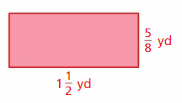
The area of rectangle is \(\frac{15}{16}\) square yards
Explanation:
Given width as 1\(\frac{1}{2}\) ft and height as \(\frac{5}{8}\)
We write mixed fractions 1\(\frac{1}{2}\) as 1 X 2 +1 by 2 =
\(\frac{3}{2}\) the area of rectangle is \(\frac{3}{2}\) X \(\frac{5}{8}\)
Step I: We multiply the numerators as 3 X 5 = 15
Step II: We multiply the denominators as 2 X 8 = 16
Step III: We write the fraction in the simplest form as \(\frac{15}{16}\),
therefore the area of rectangle is \(\frac{15}{16}\) square yards.
Concepts, Skills, & Problem Solving
CHOOSE TOOLS
Answer the question using a model. (See Exploration 1, p. 53.)
Question 12.
How many three-fifths are in three?

Five, three-fifths are in three
Explanation:
Given to find three-fifths are in three is three divides \(\frac{3}{5}\)
we write reciprocal of the fraction \(\frac{3}{5}\) as \(\frac{5}{3}\)=
3 X \(\frac{5}{3}\) = \(\frac{15}{3}\) = 5.
Question 13.
How many two-ninths are in eight-ninths?

Four, two-ninths are in eight-ninths
Explanation:
Given to find two-ninths are in eight-ninths means \(\frac{8}{9}\) ÷
\(\frac{2}{9}\) we write reciprocal of the fraction \(\frac{2}{9}\)
as \(\frac{9}{2}\)= \(\frac{8}{9}\) X \(\frac{9}{2}\) =
\(\frac{8 X 9}{9 X 2}\)= \(\frac{8}{2}\) as both goes in 2
as 2 X 4 = 8, 2 X 1= 2,(4,1), \(\frac{8}{2}\) = 4.
Question 14.
How many three-fourths are in seven-eighths?

\(\frac{7}{6}\) or 1\(\frac{1}{6}\), three-fourths are in seven-eighths
Explanation:
Given to find three-fourths are in seven-eighths means \(\frac{7}{8}\) ÷
\(\frac{3}{4}\) we write reciprocal of the fraction \(\frac{3}{4}\) as \(\frac{4}{3}\)= \(\frac{7}{8}\) X \(\frac{4}{3}\) =
\(\frac{7 X 4}{8 X 3}\)= \(\frac{28}{24}\) as both goes in 4
as 4 X 7 = 28, 4 X 6= 24,(7,6), \(\frac{7}{6}\) as numerator is
greater we write as ( 1 X 6 + 1 by 6) = 1\(\frac{1}{6}\).
WRITING RECIPROCALS
Write the reciprocal of the number.
Question 15.
8
8 the reciprocal is \(\frac{1}{8}\)
Explanation:
We write the reciprocal of a number, first write the number as a fraction.
Then invert the fraction, so reciprocal of 8 is \(\frac{8}{1}\) is \(\frac{1}{8}\).
Question 16.
\(\frac{6}{7}\)
\(\frac{6}{7}\) = \(\frac{7}{6}\)
Explanation:
Already its in fraction so the reciprocal of \(\frac{6}{7}\) is inverting the fraction
\(\frac{7}{6}\).
Question 17.
\(\frac{2}{5}\)
\(\frac{2}{5}\) = \(\frac{5}{2}\)
Explanation:
Already its in fraction so the reciprocal of \(\frac{2}{5}\) is inverting the fraction
\(\frac{5}{2}\).
Question 18.
\(\frac{11}{8}\)
\(\frac{11}{8}\) = \(\frac{8}{11}\)
Explanation:
Already its in fraction so the reciprocal of \(\frac{11}{8}\) is inverting the fraction
\(\frac{8}{11}\).
DIVIDING FRACTIONS
Divide. Write the answer in simplest form.
Question 19.

 = \(\frac{2}{3}\)
= \(\frac{2}{3}\)
Explanation:
Given expressions as \(\frac{1}{3}\) ÷ \(\frac{1}{2}\)
we write reciprocal of the fraction \(\frac{1}{2}\) as \(\frac{2}{1}\) and multiply as \(\frac{1}{3}\) X \(\frac{2}{1}\) =
\(\frac{1 X 2}{3 X 1}\) = \(\frac{2}{3}\),
therefore \(\frac{1}{3}\) ÷ \(\frac{1}{2}\) = \(\frac{2}{3}\).
Question 20.

 = \(\frac{1}{2}\)
= \(\frac{1}{2}\)
Explanation:
Given expressions as \(\frac{1}{8}\) ÷ \(\frac{1}{4}\)
we write reciprocal of the fraction \(\frac{1}{4}\) as
\(\frac{4}{1}\) and multiply as \(\frac{1}{8}\) X
\(\frac{4}{1}\) = \(\frac{1 X 4}{8 X 1}\) = \(\frac{4}{8}\),
we can further simplify as both goes in 4, 4 X 1 = 4 and 4 X 2 = 8, (1,2),
therefore \(\frac{1}{8}\) ÷ \(\frac{1}{4}\) = \(\frac{1}{2}\).
Question 21.

 = \(\frac{1}{7}\)
= \(\frac{1}{7}\)
Explanation:
Given expressions as \(\frac{2}{7}\) ÷ 2, we write reciprocal of 2 as
\(\frac{1}{2}\) and multiply as \(\frac{2}{7}\) X \(\frac{1}{2}\) = \(\frac{2 X 1}{7 X 2}\) = \(\frac{2}{14}\),we can further
simplify as both goes in 2, 2 X 1 = 2 and 2 X 7 = 14, (1,7), \(\frac{1}{7}\),
therefore \(\frac{2}{7}\) ÷ 2 = \(\frac{1}{7}\).
Question 22.

 = \(\frac{2}{5}\)
= \(\frac{2}{5}\)
Explanation:
Given expressions as \(\frac{6}{5}\) ÷ 3, we write reciprocal of 3 as
\(\frac{1}{3}\) and multiply as \(\frac{6}{5}\) X
\(\frac{1}{3}\) = \(\frac{6 X 1}{5 X 3}\) = \(\frac{6}{15}\),
we can further simplify as both goes in 3, 3 X 2 = 6 and 3 X 5 = 15, (2,5),
\(\frac{2}{5}\),therefore \(\frac{6}{5}\) ÷ 3 = \(\frac{2}{5}\).
Question 23.

 = \(\frac{3}{2}\) = 1\(\frac{1}{2}\)
= \(\frac{3}{2}\) = 1\(\frac{1}{2}\)
Explanation:
Given expressions as \(\frac{2}{3}\) ÷ \(\frac{4}{9}\),
we write reciprocal of the fraction \(\frac{4}{9}\) as \(\frac{9}{4}\)
and multiply as \(\frac{2}{3}\) X \(\frac{9}{4}\) = \(\frac{2 X 9}{3 X 4}\) = \(\frac{18}{12}\),we can further simplify as both goes in 6,
6 X 3 = 18 and 6 X 2 = 12, (3,2),
therefore \(\frac{2}{3}\) ÷ \(\frac{4}{9}\) = \(\frac{3}{2}\) as numerator is greater than denominator we can write in mixed
fraction as (1 X 2 + 1 by 2) = 1\(\frac{1}{2}\).
Question 24.

 = \(\frac{35}{12}\) = 2\(\frac{11}{12}\)
= \(\frac{35}{12}\) = 2\(\frac{11}{12}\)
Explanation:
Given expressions as \(\frac{5}{6}\) ÷ \(\frac{2}{7}\),
we write reciprocal of the fraction \(\frac{2}{7}\) as \(\frac{7}{2}\)
and multiply as \(\frac{5}{6}\) X \(\frac{7}{2}\) = \(\frac{5 X 7}{6 X 2}\) = \(\frac{35}{12}\),as numerator is greater than
denominator we can write in mixed fraction as (2 X 12 + 11) by 12 =2\(\frac{11}{12}\).Therefore \(\frac{5}{6}\) ÷ \(\frac{2}{7}\) = 2\(\frac{11}{12}\).
Question 25.

 = 16
= 16
Explanation:
Given expressions as 12 ÷ \(\frac{3}{4}\),
we write reciprocal of the fraction \(\frac{3}{4}\) as \(\frac{4}{3}\)
and multiply as 12 X \(\frac{4}{3}\) = \(\frac{12 X 4}{1 X 3}\) =
\(\frac{48}{3}\),we can further simplify as both goes in 3,
3 X 16 = 48 and 3 X 1 = 3, (16,1),therefore 12 ÷ \(\frac{3}{4}\) = 16.
Question 26.

 = 20
= 20
Explanation:
Given expressions as 8 ÷ \(\frac{2}{5}\), we write reciprocal of the fraction \(\frac{2}{5}\) as \(\frac{5}{2}\) and multiply as
8 X \(\frac{5}{2}\) = \(\frac{8 X5}{1 X 2}\) =
\(\frac{40}{2}\),we can further simplify as both goes in 2,
2 X 20 = 40 and 2 X 1 = 2, (20,1),therefore 8 ÷ \(\frac{2}{5}\) = 20.
Question 27.

 = \(\frac{1}{14}\)
= \(\frac{1}{14}\)
Explanation:
Given expressions as \(\frac{3}{7}\) ÷ 6, we write reciprocal of 6
as \(\frac{1}{6}\) and multiply as \(\frac{3}{7}\) X
\(\frac{1}{6}\) = \(\frac{3 X 1}{7 X 6}\) = \(\frac{3}{42}\),
we can further simplify as both goes in 3, 3 X 1 = 3 and 3 X 14 = 42, (1,14),
therefore \(\frac{3}{7}\) ÷ 6 = \(\frac{1}{14}\).
Question 28.

 = \(\frac{3}{25}\)
= \(\frac{3}{25}\)
Explanation:
Given expressions as \(\frac{12}{25}\) ÷ 4, we write reciprocal of 4
as \(\frac{1}{4}\) and multiply as \(\frac{12}{25}\) X \(\frac{1}{4}\) = \(\frac{12 X 1}{25 X 4}\) = \(\frac{12}{100}\),
we can further simplify as both goes in 4, 4 X 3 = 12 and 4 X 25 = 100, (3,25),
therefore \(\frac{12}{25}\) ÷ 4 = \(\frac{3}{25}\).
Question 29.

 = \(\frac{1}{3}\)
= \(\frac{1}{3}\)
Explanation:
Given expressions as \(\frac{2}{9}\) ÷ \(\frac{2}{3}\),
we write reciprocal of the fraction \(\frac{2}{3}\) as \(\frac{3}{2}\)
and multiply as \(\frac{2}{9}\) X \(\frac{3}{2}\) = \(\frac{2 X 3}{9 X 2}\) = \(\frac{6}{18}\),we can further simplify as both goes in 6,
6 X 1 = 6 and 6 X 3 = 18, (1,3)= \(\frac{1}{3}\).
Therefore \(\frac{2}{9}\) ÷ \(\frac{2}{3}\) = \(\frac{1}{3}\).
Question 30.

 = \(\frac{2}{3}\)
= \(\frac{2}{3}\)
Explanation:
Given expressions as \(\frac{8}{15}\) ÷ \(\frac{4}{5}\),
we write reciprocal of the fraction \(\frac{4}{5}\) as \(\frac{5}{4}\)
and multiply as \(\frac{8}{15}\) X \(\frac{5}{4}\) =
\(\frac{8 X 5}{15 X 4}\) = \(\frac{40}{60}\),
we can further simplify as both goes in 20, 20 X 2 = 40 and
20 X 3 = 60, (2,3)=\(\frac{2}{3}\).Therefore \(\frac{8}{15}\) ÷
\(\frac{4}{5}\) = \(\frac{2}{3}\).
Question 31.

 = 3
= 3
Explanation:
Given expressions as \(\frac{1}{3}\) ÷ \(\frac{1}{9}\),
we write reciprocal of the fraction \(\frac{1}{9}\) as \(\frac{9}{1}\)
and multiply as \(\frac{1}{3}\) X \(\frac{9}{1}\) =
\(\frac{1 X 9}{3 X 1}\) = \(\frac{9}{3}\),
we can further simplify as both goes in 3, 3 X 3 = 9 and 3 X 1 = 3, (3,1)= 3.
Therefore \(\frac{1}{3}\) ÷ \(\frac{1}{9}\) = 3.
Question 32.

 = \(\frac{28}{15}\) = 1\(\frac{13}{15}\)
= \(\frac{28}{15}\) = 1\(\frac{13}{15}\)
Explanation:
Given expressions as \(\frac{7}{10}\) ÷ \(\frac{3}{8}\),
we write reciprocal of the fraction \(\frac{3}{8}\) as \(\frac{8}{3}\)
and multiply as \(\frac{7}{10}\) X \(\frac{8}{3}\) =
\(\frac{7 X 8}{10 X 3}\) = \(\frac{56}{30}\),
we can further simplify as both goes in 2, 2 X 28 = 56 and 2 X 15 = 30,
(28,15)=\(\frac{28}{15}\),as numerator is greater than
denominator we can write in mixed fraction as (1 X 15 + 13 by 15) =
1\(\frac{13}{15}\).Therefore \(\frac{7}{10}\) ÷
\(\frac{3}{8}\) = 1\(\frac{13}{15}\).
Question 33.

 = \(\frac{2}{27}\)
= \(\frac{2}{27}\)
Explanation:
Given expressions as \(\frac{14}{27}\) ÷ 7,
we write reciprocal of 7 as \(\frac{1}{7}\) and multiply as
\(\frac{14}{27}\) X \(\frac{1}{7}\) = \(\frac{14 X 1}{27 X 7}\) = \(\frac{14}{189}\),we can further simplify as both goes in 7,
7 X 2 = 14 and 7 X 27 = 189, (2,27), \(\frac{2}{27}\),therefore
\(\frac{14}{27}\) ÷ 7 = \(\frac{2}{27}\).
Question 34.

 = \(\frac{1}{24}\)
= \(\frac{1}{24}\)
Explanation:
Given expressions as \(\frac{5}{8}\) ÷ 15, we write reciprocal of 15
as \(\frac{1}{15}\) and multiply as \(\frac{5}{8}\) X
\(\frac{1}{15}\) = \(\frac{5 X 1}{8 X 15}\) = \(\frac{5}{120}\),
we can further simplify as both goes in 5, 5 X 1 = 5 and 5 X 24 = 120, (1,24),
\(\frac{1}{24}\),therefore \(\frac{5}{8}\) ÷ 15
= \(\frac{1}{24}\).
Question 35.

 = \(\frac{27}{28}\)
= \(\frac{27}{28}\)
Explanation:
Given expressions as \(\frac{27}{32}\) ÷ \(\frac{7}{8}\),
we write reciprocal of the fraction \(\frac{7}{8}\) as \(\frac{8}{7}\)
and multiply as \(\frac{27}{32}\) X \(\frac{8}{7}\) =
\(\frac{27 X 8}{32 X 7}\) = \(\frac{216}{224}\),
we can further simplify as both goes in 8, 8 X 27 = 216 and 8 X 28 = 224,
(27,28)=\(\frac{27}{28}\).Therefore \(\frac{27}{32}\) ÷
\(\frac{7}{8}\) = \(\frac{27}{28}\).
Question 36.

 = \(\frac{26}{75}\)
= \(\frac{26}{75}\)
Explanation:
Given expressions as \(\frac{4}{15}\) ÷ \(\frac{10}{13}\),
we write reciprocal of the fraction \(\frac{10}{13}\) as
\(\frac{13}{10}\) and multiply as \(\frac{4}{15}\) X
\(\frac{13}{10}\) = \(\frac{4 X 13}{15 X 10}\) =
\(\frac{52}{150}\),we can further simplify as both goes in 2,
2 X 26 = 52 and 2 X 75 = 150, (26,75)=\(\frac{26}{75}\).
Therefore \(\frac{4}{15}\) ÷ \(\frac{10}{13}\) = \(\frac{26}{75}\).
Question 37.

 = \(\frac{81}{4}\) = 20\(\frac{1}{4}\)
= \(\frac{81}{4}\) = 20\(\frac{1}{4}\)
Explanation:
Given expressions as 9 ÷ \(\frac{4}{9}\), we write reciprocal of
the fraction \(\frac{4}{9}\) as \(\frac{9}{4}\)
and multiply as 9 X \(\frac{9}{4}\) = \(\frac{9 X 9}{1 X 4}\) =
\(\frac{81}{4}\),as numerator is greater than denominator
we can write in mixed fraction as (20 X 4 + 1 by 4) = 20\(\frac{1}{4}\),
therefore 9 ÷ \(\frac{4}{9}\) = 20\(\frac{1}{4}\).
Question 38.

 = 24
= 24
Explanation:
Given expressions as 10 ÷ \(\frac{5}{12}\), we write reciprocal
of the fraction \(\frac{5}{12}\) as \(\frac{12}{5}\) and
multiply as 10 X \(\frac{12}{5}\) = \(\frac{10 X 12}{1 X 5}\) =
\(\frac{120}{5}\),we can further simplify as both goes in 5,
5 X 24 = 120 and 5 X 1 = 5, (24,1)= 24.Therefore 10 ÷ \(\frac{5}{12}\) = 24.
YOU BE THE TEACHER
Your friend finds the quotient. Is your friend correct? Explain your reasoning.
Question 39.
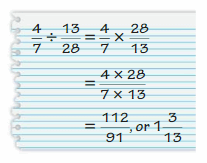
Yes, friend is correct as \(\frac{4}{7}\) ÷ \(\frac{13}{28}\) =
1\(\frac{3}{13}\).
Explanation:
Given expression as \(\frac{4}{7}\) ÷ \(\frac{13}{28}\),
we write reciprocal of the fraction \(\frac{13}{28}\) as
\(\frac{28}{13}\) and multiply as \(\frac{4}{7}\) X
\(\frac{28}{13}\) = \(\frac{4 X 28}{7 X 13}\) = \(\frac{112}{91}\),
we can further simplify as both goes in 7, 7 X 16 = 112 and 7 X 13 = 91,
(16,13) = \(\frac{16}{13}\), as numerator is greater than denominator
we can write in mixed fraction as (1 X 13 + 3 by 13) = 1\(\frac{3}{13}\).
Therefore \(\frac{4}{7}\) ÷ \(\frac{13}{28}\) = 1\(\frac{3}{13}\).
So friend is correct.
Question 40.

No, Friend is incorrect as \(\frac{2}{5}\) ÷ \(\frac{8}{9}\) =
\(\frac{9}{20}\) ≠ 2\(\frac{2}{9}\)
Explanation:
Given expression as \(\frac{2}{5}\) ÷ \(\frac{8}{9}\),
we write reciprocal of the fraction \(\frac{8}{9}\) as
\(\frac{9}{8}\) and multiply as \(\frac{2}{5}\) X
\(\frac{9}{8}\) = \(\frac{2 X 9}{5 X 8}\) = \(\frac{18}{40}\),
we can further simplify as both goes in 2, 2 X 9 = 18 and 2 X 20 = 40,
(9,20) = \(\frac{9}{20}\).Therefore \(\frac{2}{5}\) ÷
\(\frac{8}{9}\) = \(\frac{9}{20}\).
No, Friend is incorrect as \(\frac{2}{5}\) ÷ \(\frac{8}{9}\) =
\(\frac{9}{20}\) ≠ 2\(\frac{2}{9}\).
Question 41.
REASONING
You have \(\frac{3}{5}\) of an apple pie. You divide the remaining pie into 5 equal slices. What portion of the original pie is each slice?
\(\frac{3}{25}\) of the original pie is each slice
Explanation:
Given I have \(\frac{3}{5}\) of an apple pie and divide
the remaining pie into 5 equal slices. So the portion of the original pie
in each slice is \(\frac{3}{5}\) ÷ 5 we write reciprocal of 5
as \(\frac{1}{5}\) and multiply as \(\frac{3}{5}\) X
\(\frac{1}{5}\) = \(\frac{3 X 1}{5 X 5}\) = \(\frac{3}{25}\),
therefore \(\frac{3}{25}\) of the original pie is each slice.
Question 42.
PROBLEM SOLVING
How many times longer is the baby alligator than the baby gecko?

5\(\frac{5}{8}\) times longer is the baby alligator than the baby gecko
Explanation:
Given baby alligator is \(\frac{3}{4}\) long and baby gecko
is \(\frac{2}{15}\), So baby alligator is more long than the
baby gecko by \(\frac{3}{4}\) ÷ \(\frac{2}{15}\),
we write reciprocal of the fraction \(\frac{2}{15}\) as
\(\frac{15}{2}\) and multiply as \(\frac{3}{4}\) X
\(\frac{15}{2}\) = \(\frac{3 X 15}{4 X 2}\) =
\(\frac{45}{8}\),as numerator is greater than denominator
we can write in mixed fraction as (5 X 8 + 5 by 8) = 5\(\frac{5}{8}\).
Therefore 5\(\frac{5}{8}\) times longer is the baby alligator
than the baby gecko.
OPEN-ENDED
Write a real-life problem for the expression. Then solve the problem.
Question 43.

The rope of length \(\frac{5}{6}\)cm is cut into 4 equal pieces,
how long is each piece?
\(\frac{5}{24}\) cm long is each piece
Explanation:
Wrote a real -life problem, the rope of length \(\frac{5}{6}\)cm
is cut into 4 equal pieces, how long is each piece and solution is
\(\frac{5}{6}\)÷ 4,we write reciprocal of 4 as \(\frac{1}{4}\)
and multiply as \(\frac{5}{6}\) X \(\frac{1}{4}\) =
\(\frac{5 X 1}{4 X 6}\) = \(\frac{5}{24}\),
therefore each piece is of length \(\frac{5}{24}\) cm long is each piece.
Question 44.

A jug contains \(\frac{2}{5}\) of orange juice,
I drank \(\frac{3}{8}\) portion
in it, So how much portion of juice I drank?
So I drank 1\(\frac{1}{15}\) portion of orange juice.
Explanation:
Wrote a real -life problem, a jug contains \(\frac{2}{5}\) of
orange juice, I drank \(\frac{3}{8}\) portion in it,
So portion of juice I drank is \(\frac{5}{6}\) ÷ \(\frac{3}{8}\)
we write reciprocal of fraction \(\frac{3}{8}\) as
\(\frac{8}{3}\) and multiply as \(\frac{2}{5}\) X
\(\frac{8}{3}\) = \(\frac{2 X 8}{5 X 3}\) =
\(\frac{16}{15}\),as numerator is greater than denominator
we can write in mixed fraction as (1 X 15 + 1 by 15) = 1\(\frac{1}{15}\),
So I drank 1\(\frac{1}{15}\) portion of orange juice.
Question 45.

I need \(\frac{2}{3}\)ltrs of milk to feed one dog,
How many dogs I do can feed in 10 ltrs of milk.
I can feed 15 dogs.
Explanation:
Wrote a real -life problem,I need \(\frac{2}{3}\)ltrs of
milk to feed one dog, How many dogs I do can feed in 10 ltrs of milk.
So number of dogs I can feed are 10 ÷ \(\frac{2}{3}\)
we write reciprocal of fraction \(\frac{2}{3}\) as \(\frac{3}{2}\)
and multiply as 10 X \(\frac{3}{2}\) = \(\frac{30}{2}\) as
both goes in 2, 2 x 15 = 30 and 2 x 1 = 2,(15,1),So \(\frac{30}{2}\)=15,
So I can feed 15 dogs.
Question 46.

In a class there are \(\frac{2}{7}\) girls in that \(\frac{4}{9}\)
like playing chess, how many girls like playing chess ?
There are \(\frac{9}{14}\) girls like playing chess in a class
Explanation:
Wrote a real -life problem, In a class there are \(\frac{2}{7}\)
girls in that \(\frac{4}{9}\) like playing chess, how many girls like
playing chess so \(\frac{2}{7}\) ÷ \(\frac{4}{9}\),
we write reciprocal of fraction \(\frac{4}{9}\) as \(\frac{9}{4}\)
and multiply as \(\frac{2}{7}\) X \(\frac{9}{4}\) = \(\frac{2 X 9}{7 X 4}\)= \(\frac{18}{28}\) we can further simplify
as both goes 2, 2 X 9 = 18, 2 X 14 = 28,(9,14)= \(\frac{9}{14}\)
girls like playing chess in a class.
NUMBER SENSE
Copy and complete the statement.
Question 47.

The statement is \(\frac{5}{12}\) X \(\frac{12}{5}\) = 1.
Explanation:
Lets take the missing number as x, \(\frac{5}{12}\) X x = 1,
therefore when \(\frac{5}{12}\) goes other side it becomes
reciprocal, So x= 1 X \(\frac{12}{5}\), The statement is
\(\frac{5}{12}\) X \(\frac{12}{5}\) = 1.
Question 48.

The statement is 3 X \(\frac{1}{3}\) = 1.
Explanation:
Lets take the missing number as x, 3 X x = 1,therefore
when 3 goes other side it becomes reciprocal as
\(\frac{1}{3}\), So x= 1 X \(\frac{1}{3}\),
The statement is 3 X \(\frac{1}{3}\) = 1.
Question 49.

7 ÷ \(\frac{1}{8}\) = 56
Explanation:
Lets take the missing number as x, So 7 ÷ x = 56 , x = 7÷56 =
7 X \(\frac{1}{56}\)\(\frac{7}{56}\) as both goes in 7,
7 X 1 = 7, 7 X 8 = 56,(1,8) = \(\frac{1}{8}\),
x =\(\frac{1}{8}\), The statement is 7 ÷ \(\frac{1}{8}\) = 56.
REASONING
Without finding the quotient, copy and complete the statement using <, >, or =. Explain your reasoning.
Question 50.

Is <
\(\frac{7}{9}\) ÷ 5 < \(\frac{7}{9}\)
Explanation:
L.H.S is \(\frac{7}{9}\) ÷ 5 and R.H.S is \(\frac{7}{9}\)
when compared both sides we have \(\frac{7}{9}\) and
L.H.S is still 1 divided by 5 so it becomes less than R.H.S 1.
So \(\frac{7}{9}\) ÷ 5 < \(\frac{7}{9}\).
Question 51.

Is =
\(\frac{3}{7}\) ÷ 1 = \(\frac{3}{7}\)
Explanation:
L.H.S is \(\frac{3}{7}\) ÷ 1 and R.H.S is \(\frac{3}{7}\)
when compared both sides we have \(\frac{3}{7}\) and
L.H.S is still 1 divided by 1 so it becomes equal to R.H.S 1.
So \(\frac{3}{7}\) ÷ 1 < \(\frac{3}{7}\).
Question 52.

Is >
8 ÷ \(\frac{3}{4}\) > 8
Explanation:
L.H.S is 8 ÷ \(\frac{3}{4}\) and R.H.S is 8 when compared
both sides we have 8 and L.H.S is still 3 divided by 4 so it becomes
1 ÷ \(\frac{3}{4}\) ,we write reciprocal of \(\frac{3}{4}\) as
\(\frac{4}{3}\) ,1 X \(\frac{4}{3}\) now numerator is
greater than denominator, we get 1 whole plus number in L.H.S,
as L.H.S is greater than R.H.S 1. So 8 ÷ \(\frac{3}{4}\) > 8.
Question 53.

Is >
\(\frac{5}{6}\) ÷ \(\frac{7}{8}\) > \(\frac{5}{6}\)
Explanation:
L.H.S is \(\frac{5}{6}\) ÷ \(\frac{7}{8}\) and
R.H.S is \(\frac{5}{6}\) when compared both sides we
have \(\frac{5}{6}\) and L.H.S is still 7 divided by 8 so it
becomes 1 ÷ \(\frac{7}{8}\) we write reciprocal of
\(\frac{7}{8}\) as \(\frac{8}{7}\)= 1 X \(\frac{8}{7}\)
now numerator is greater than denominator, so we get 1 whole plus
number in L.H.S as L.H.S is greater than R.H.S 1.
So \(\frac{5}{6}\) ÷ \(\frac{7}{8}\) > \(\frac{5}{6}\).
ORDER OF OPERATIONS
Evaluate the expression. Write the answer in simplest form.
Question 54.

 = \(\frac{1}{6}\)
= \(\frac{1}{6}\)
Explanation:
Given expression as \(\frac{1}{6}\) ÷ 6 ÷ 6, first
we write as multiplication as \(\frac{1}{6}\) ÷ (6 X \(\frac{1}{6}\)) = \(\frac{1}{6}\) ÷ 1 = \(\frac{1}{6}\).
Question 55.

 = \(\frac{1}{144}\)
= \(\frac{1}{144}\)
Explanation:
Given expression as \(\frac{7}{12}\) ÷ 14 ÷ 6,14
and 6 becomes reciprocals and multiplied as \(\frac{7}{12}\) X
\(\frac{1}{14}\) X \(\frac{1}{6}\)
= \(\frac{7 X 1 X 1 }{12 X 14 X 6 }\) = \(\frac{7}{1008}\),
we now further simplify as both goes in 7, 7 X 1 = 7, 7 X 144 = 1008,
(1, 144) = \(\frac{1}{144}\).
Question 56.

\(\frac{3}{5}\) ÷ \(\frac{4}{7}\) ÷ \(\frac{9}{10}\) = \(\frac{7}{6}\)
Explanation:
Given expression as \(\frac{3}{5}\) ÷ \(\frac{4}{7}\) ÷
\(\frac{9}{10}\) ,\(\frac{4}{7}\),\(\frac{9}{10}\)
becomes reciprocals and been multipled as = \(\frac{3}{5}\) X
\(\frac{7}{4}\) X \(\frac{10}{9}\)=
\(\frac{3 X 7 X 10}{5 X 4 X 9}\) = \(\frac{210}{180}\)
we can further simplify as both goes in 30,
30 X 7 = 210, 30 X 6 = 180,(7,6) = \(\frac{7}{6}\),therefore
\(\frac{3}{5}\) ÷ \(\frac{4}{7}\) ÷ \(\frac{9}{10}\) =
\(\frac{7}{6}\).
Question 57.

 = 4
= 4
Explanation:
Given expression as 4 ÷ \(\frac{8}{9}\) – \(\frac{1}{2}\) ,
first we calculate 4 ÷ \(\frac{8}{9}\) we write \(\frac{8}{9}\)
as reciprocal \(\frac{9}{8}\) and multiply with 4 as
4 X \(\frac{9}{8}\) = \(\frac{4 x 9}{8}\) =
\(\frac{36}{8}\) we simplifies as both goes in 4 as 4 X 9 = 36,
4 x 2 = 8, (9,2) = \(\frac{9}{2}\) now we subtract \(\frac{1}{2}\)
as both denominators are 2 we subtract numerators as (9 -1)= 8,
we get \(\frac{8}{2}\) = 4.
Question 58.

 = 2
= 2
Explanation:
Given expression as \(\frac{3}{4}\) + \(\frac{5}{6}\) ÷
\(\frac{2}{3}\), first we calculate \(\frac{5}{6}\) ÷
\(\frac{2}{3}\) we write \(\frac{2}{3}\) reciprocal and
multiply as \(\frac{5}{6}\) X \(\frac{3}{2}\) =
\(\frac{5 X 3}{6 X 2}\) =\(\frac{15}{12}\)
we simplify further as both goes in 3, 3 X 5 = 15, 3 X 4 = 12, (5,4)=
\(\frac{5}{4}\) now we add with \(\frac{3}{4}\) ,
\(\frac{3}{4}\) + \(\frac{5}{4}\) as both have same
denominator we add numerators as 3 + 5 = 8 and write as
\(\frac{8}{4}\) as both goes in 4,we get 2.
Therefore \(\frac{3}{4}\) + \(\frac{5}{6}\) ÷
\(\frac{2}{3}\) = 2.
Question 59.

 = \(\frac{5}{6}\)
= \(\frac{5}{6}\)
Explanation:
Given expression as \(\frac{7}{8}\) – \(\frac{3}{8}\) ÷ 9 ,
first we calculate \(\frac{3}{8}\) ÷ 9,now we write 9 reciprocal and multiply as \(\frac{3}{8}\) X \(\frac{1}{9}\) = \(\frac{3 X 1}{8 X 9}\) =\(\frac{3}{72}\) we can simplify as both goes in 3,
3 X 1 =3, 3 X 24 =72, (1,24) = \(\frac{1}{24}\) now we subtract from
\(\frac{7}{8}\) – \(\frac{1}{24}\) as we need both
to have same denominators 24 we multiply \(\frac{7}{8}\) X
\(\frac{3}{3}\) = \(\frac{7 X 3}{8 X 3}\) =\(\frac{21}{24}\),
Now \(\frac{21}{24}\) – \(\frac{1}{24}\)
as both have same 24 denominators now we can subtract
numerators as 21 – 1 = 20 and write as \(\frac{20}{24}\)
as both goes in 4, 4 X 5 = 20, 4 X 6 = 24, (5, 6) = \(\frac{5}{6}\),
Therefore \(\frac{7}{8}\) – \(\frac{3}{8}\) ÷ 9 = \(\frac{5}{6}\).
Question 60.

 = 4 \(\frac{7}{8}\)
= 4 \(\frac{7}{8}\)
Explanation:
Given expression as \(\frac{9}{16}\) ÷ \(\frac{3}{4}\) X
\(\frac{2}{13}\), first we calculate \(\frac{3}{4}\) X
\(\frac{2}{13}\) = \(\frac{3 X 2}{4 X 13}\) = \(\frac{6}{52}\)
we can simplify as both goes in 2, 2 X 3 =6, 2 X 26 = 52, (3, 26) =
\(\frac{3}{26}\) now \(\frac{9}{16}\) ÷ \(\frac{3}{26}\)
we write reciprocal and multiply \(\frac{9}{16}\) X
\(\frac{26}{3}\) = \(\frac{9 x 26}{16 X 3}\) =
\(\frac{234}{48}\) as both can go in 6, 6 X 39 = 234
and 6 X 8 = 48, (39,8) = \(\frac{234}{48}\) = \(\frac{39}{8}\)
as numerator is greater than denominator we can write as (4 X 8 + 7 by 8) =
4\(\frac{7}{8}\).
Question 61.

 = \(\frac{1}{10}\)
= \(\frac{1}{10}\)
Explanation:
Given expression as \(\frac{3}{14}\) X \(\frac{2}{5}\) ÷
\(\frac{6}{7}\), We write \(\frac{6}{7}\) as
reciprocal \(\frac{7}{6}\) and multiply as \(\frac{3}{14}\)
X \(\frac{2}{5}\) X \(\frac{7}{6}\)=
\(\frac{3 X 2 X 7}{14 X 5 X 6}\) = \(\frac{42}{420}\)
as both goes in 42, 42 X 1= 42 and 42 X 10 = 420, (1, 10) =
\(\frac{1}{10}\), therefore \(\frac{3}{14}\) X
\(\frac{2}{5}\) ÷ \(\frac{6}{7}\) = \(\frac{1}{10}\).
Question 62.

 = \(\frac{2}{3}\)
= \(\frac{2}{3}\)
Explanation:
Given expression as \(\frac{10}{27}\) X (\(\frac{3}{8}\) ÷
\(\frac{5}{24}\)), first we calculate \(\frac{3}{8}\) ÷
\(\frac{5}{24}\), we write \(\frac{5}{24}\) reciprocal
as \(\frac{24}{5}\) and multiply as \(\frac{3}{8}\) X
\(\frac{24}{5}\) = \(\frac{3 X 24}{8 X 5}\) = \(\frac{72}{40}\),
we can simplify as both goes in 8 as 8 x 9 = 72 and
8 X 5 = 40, (9,5) = \(\frac{9}{5}\), now we multiply
\(\frac{10}{27}\) X \(\frac{9}{5}\) =
\(\frac{10 X 9}{27 X 5}\) = \(\frac{90}{135}\)
we can further simplify as both goes in 45, 45 X 2 = 90,
45 x 3 = 135, (2, 3) = \(\frac{2}{3}\).
Question 63.
NUMBER SENSE
When is the reciprocal of a fraction a whole number? Explain.
When the simplified fraction has a 1 in the numerator,
The reciprocal will have a 1 in the denominator. We get a whole number
Explanation:
When the simplified fraction has a 1 in the numerator,
The reciprocal will have a 1 in the denominator.
Example : If we have numerator as 1 in the simplified fraction like
\(\frac{1}{7}\) then the reciprocal becomes \(\frac{7}{1}\)
so the reciprocal will have a 1 in the denominator and becomes 7,
So we get a whole number.
Question 64.
MODELING REAL LIFE
You use \(\frac{1}{8}\) of your battery for every
\(\frac{2}{5}\) of an hour that you video chat.
You use \(\frac{3}{4}\) of your battery video chatting.
How long did you video chat?
I had video chat for 2\(\frac{2}{5}\) hours
Explanation:
If I use \(\frac{1}{8}\) of my battery for every
\(\frac{2}{5}\) of an hour of video chat, then I
use \(\frac{1}{8}\) ÷ \(\frac{2}{5}\) =
\(\frac{1}{8}\) X \(\frac{5}{2}\) =
\(\frac{1 x 5}{2 X 16}\) = \(\frac{5}{16}\) of
my battery per hour of video chat. If I use \(\frac{3}{4}\) of
my battery for video chatting, I used for \(\frac{3}{4}\) ÷
\(\frac{5}{16}\) now \(\frac{3}{4}\) X
\(\frac{16}{5}\)=\(\frac{3 X 16}{4 x 5}\) =
\(\frac{48}{20}\) on further simplification as
both goes in 4 we get 4 X 12 =48, 4 X 5 = 20, (12,5)=
\(\frac{12}{5}\) as numerator is greater
we write as ( 2 X 5 + 2 by 5) = 2\(\frac{2}{5}\) hours.
Therefore I had video chat for 2\(\frac{2}{5}\) hours.
Question 65.
PROBLEM SOLVING
The table shows the portions of a family budget that are spent on several expenses.
a. How many times more is the expense for housing than for automobiles?

b. How many times more is the expense for food than for recreation?
c. The expense for automobile fuel is \(\frac{1}{60}\) of the total expenses.
What portion of the automobile expense is spent on fuel?
a. 6 times more is the expense for housing than for automobiles,
b. 17\(\frac{7}{9}\) times more is the expense for
food than for recreation,
c. \(\frac{1}{4}\) portion of the automobile
expense is spent on fuel.
Explanation:
a. Given we have Portions of Budget for housing is \(\frac{2}{5}\)
and for automobiles as \(\frac{1}{15}\), So the expense
for housing than for automobiles is \(\frac{2}{5}\) ÷
\(\frac{1}{15}\) we write \(\frac{1}{15}\)
as reciprocal and multiply \(\frac{2}{5}\) X \(\frac{15}{1}\) =
\(\frac{2 X 15}{5 X 1}\) = \(\frac{30}{5}\)
we can simplify as both goes in 5 , 5 X 6 = 30, 5 X 1 = 5,
(6,1),\(\frac{30}{5}\) = 6, therefore 6 times more is
the expense for housing than for automobiles.
b. Given we have Portions of Budget for food is \(\frac{4}{9}\)
and for recreation is \(\frac{1}{40}\), So the expense for
food than for recreation is \(\frac{4}{9}\) ÷ \(\frac{1}{40}\)
we write \(\frac{1}{40}\) as reciprocal and multiply
\(\frac{4}{9}\) X \(\frac{40}{1}\) = \(\frac{4 X 40}{9 X 1}\) = \(\frac{160}{9}\) as numerator is greater than
denominator we write as (17 X 9 + 7 by 9) =
17\(\frac{7}{9}\), therefore 17\(\frac{7}{9}\)
times more is the expense for food than for recreation.
c. Given the expense for automobile fuel is \(\frac{1}{60}\)
of the total expenses.
So the portion of the automobile expense spent on fuel is
\(\frac{1}{60}\) ÷ \(\frac{1}{15}\)
we write \(\frac{1}{15}\) as reciprocal and
multiply \(\frac{1}{60}\) X \(\frac{15}{1}\) =
\(\frac{1 X 15}{60 X 1}\) = \(\frac{15}{60}\)
we can simplify further as both goes in 15, 15 X 1 = 15, 15 X 4 = 60,
(1, 4) = \(\frac{1}{4}\), therefore \(\frac{1}{4}\)
portion of the automobile expense is spent on fuel.
Question 66.
CRITICAL THINKING
A bottle of juice is \(\frac{2}{3}\) full. The bottle contains
\(\frac{4}{5}\) of a cup of juice.
a. Write a division expression that represents the capacity of the bottle.
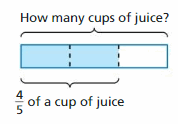
b. Write a related multiplication expression that represents the
capacity of the bottle.
c. Explain how you can use the diagram to verify the expression in part(b).
d. Find the capacity of the bottle.
a. \(\frac{4}{5}\) ÷ \(\frac{2}{3}\) represents the
capacity of the bottle,
b. \(\frac{4}{5}\) X \(\frac{3}{2}\) is the expression
that represents the capacity of the bottle.
c. 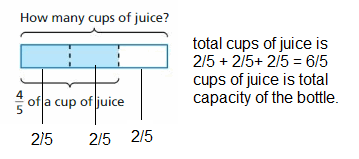
d. The capacity of the bottle is \(\frac{6}{5}\) cups of juice.
Explanation:
a. Given a bottle of juice is \(\frac{2}{3}\) full and bottle
contains \(\frac{4}{5}\) of a cup of juice, So the division
expression that represents the capacity of bottle is
\(\frac{4}{5}\) ÷ \(\frac{2}{3}\) .
b. Given a bottle of juice is \(\frac{2}{3}\) full and
bottle contains \(\frac{4}{5}\) of a cup of juice,
So the multiplication expression that represents the capacity of
bottle is we write \(\frac{2}{3}\) as reciprocal \(\frac{3}{2}\)
and multiply \(\frac{4}{5}\) X \(\frac{3}{2}\).
c. We can use the diagram as \(\frac{2}{3}\) = \(\frac{4}{5}\)
and each part in blue represents half of \(\frac{4}{5}\) =
\(\frac{1}{2}\) X \(\frac{4}{5}\) =
\(\frac{1 X 4}{2 X 5}\) = \(\frac{4}{10}\) =
\(\frac{2}{5}\) each part so total parts are 3 X \(\frac{2}{5}\) =
\(\frac{6}{5}\), as shown in the figure, Now we solve with part (b)
as the multiplication expression that represents the capacity of bottle is
\(\frac{4}{5}\) X \(\frac{3}{2}\),we solve
\(\frac{4 X 3}{5 X 2}\) = \(\frac{12}{10}\)
we further simplify as both goes in 2, 2 X 6 = 12, 2 X 5 = 10,(6,5),
\(\frac{6}{5}\). So by using the diagram we got same results
as \(\frac{6}{5}\) cups of juice is the total capacity of the
bottle so our expression in part(b) is verified.
d. The capacity of the bottle is \(\frac{4}{5}\) X
\(\frac{3}{2}\),we solve \(\frac{4 X 3}{5 X 2}\) =
\(\frac{12}{10}\) we further simplify as both goes in 2,
2 X 6 = 12, 2 X 5 = 10,(6,5),\(\frac{6}{5}\) cups of juice.
Question 67.
DIG DEEPER!
You have 6 pints of glaze. It takes \(\frac{7}{8}\) of a pint to
glaze a bowl and \(\frac{9}{16}\) of a pint to glaze a plate.
a. How many bowls can you completely glaze? How many plates
can you completely glaze?
b. You want to glaze 5 bowls, and then use the rest for plates.
How many plates can you completely glaze? How much glaze will be left over?
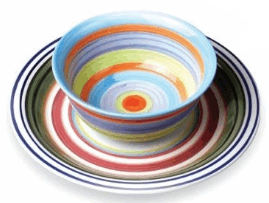
c. How many of each object can you completely glaze so
that there is no glaze left over? Explain how you found your answer.
a. 6 bowls I can completely glaze, 10 plates I can completely glaze,
b. 2 plates , \(\frac{1}{2}\) is left over,
c. 3 bowls and 6 plates,
Explanation:
Given 6 pints of glaze, It takes \(\frac{7}{8}\) of a pint to glaze
a bowl so number of bowls I can completely glaze are
6 ÷ \(\frac{7}{8}\) , we write reciprocal of \(\frac{7}{8}\)
and multiply as 6 X \(\frac{8}{7}\) = \(\frac{6 X 8}{1 X 7}\) =
\(\frac{48}{7}\), as numerator is greater we write as
(6 X 7 + 6 by 7) So \(\frac{48}{7}\) =
6\(\frac{6}{7}\)≈ 6, so 6 bowls I can completely glaze.
It takes \(\frac{9}{16}\) of a pint to glaze a plate so
number of bowls I can completely glaze are 6 ÷ \(\frac{9}{16}\) ,
we write reciprocal of \(\frac{9}{16}\) and multiply as
6 X \(\frac{16}{9}\) = \(\frac{6 X 16}{1 X 9}\) =
\(\frac{96}{9}\) as numerator is greater we write as
( 10 X 9 + 6 by 9) = 10\(\frac{6}{9}\) ≈ 10, so 10 plates
I can completely glaze.
b. So to glaze 5 bowls from 6 pints of glaze it will take,
as we know for 1 bowl it is \(\frac{7}{8}\) of a pint to glaze,
for 5 bowls it is 5 X \(\frac{7}{8}\) = \(\frac{5 X 7}{8}\) =
\(\frac{35}{8}\) pints to glaze so we use from 6 pints of glaze,
Question 68.
REASONING
A water tank is \(\frac{1}{8}\) full. The tank is
\(\frac{3}{4}\) full when 42 gallons of water are added to the tank.
a. How much water can the tank hold?
b. How much water was originally in the tank?
c. How much water is in the tank when it is \(\frac{1}{2}\) full?
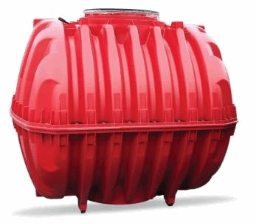
a. The tank can hold 67.2 gallons of water,
b. 8.4 gallons of water was originally in the tank,
c. 33.6 gallons of water is in the tank when it is \(\frac{1}{2}\) full.
Explanation:
Given a water tank is \(\frac{1}{8}\) full. The tank is
\(\frac{3}{4}\) full when 42 gallons of water are
added to the tank. Since the tank started at \(\frac{1}{8}\)
full and reached \(\frac{3}{4}\) full , To find 1 tank full we
have the difference is \(\frac{3}{4}\) – \(\frac{1}{8}\) =
42 gallons, So first we make denominators common we
multiply and divide by 2 to \(\frac{3}{4}\) =
\(\frac{6}{8}\) now we subtract as
\(\frac{6}{8}\) – \(\frac{1}{8}\) = 42;
as denominators are same we minus numerators (6-1)= 5
making \(\frac{5}{8}\) = 42,therefore 1 tank full is
42 X \(\frac{8}{5}\) = \(\frac{336}{8}\) = 67.2 gallons of water.
b. Initially we had \(\frac{1}{8}\) full of water
means we had 67.2 X \(\frac{1}{8}\) = 8.4 gallons
of water was originally in the tank,
c. Water in the tank when it is \(\frac{1}{2}\) full is
67.2 X \(\frac{1}{2}\) = \(\frac{67.2}{2}\) =
33.6 gallons of water is in the tank when it is \(\frac{1}{2}\) full.
Lesson 2.3 Dividing Mixed Numbers
EXPLORATION 1
Dividing Mixed Numbers
Work with a partner. Write a real-life problem that represents each division expression described. Then solve each problem using a model. Check your answers.
a. How many three-fourths are in four and one-half?


b. How many three-eighths are in two and one-fourth?
c. How many one and one-halves are in six?
d. How many seven-sixths are in three and one-third?

e. How many one and one-fifths are in five?
f. How many three and one-halves are in two and one-half?
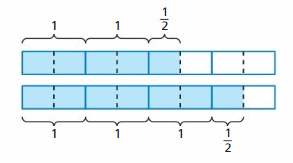
g. How many four and one-halves are in one and one-half?
a. You have four and one-half of rice, you feed three-fourth to each person,
So how many persons you can feed .
There are six, three-fourths in four and one-half.
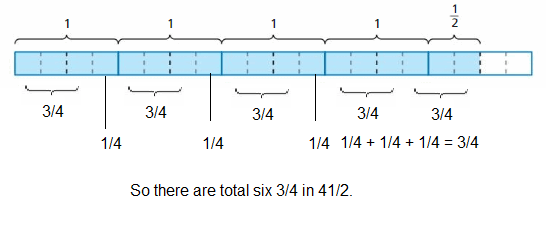
b. You have two and one-forth bottles of orange juice in that you
added three -eights cups of water, So how much water is there in
two and one-fourth.
There are six, three-eighths are in two and one-fourth
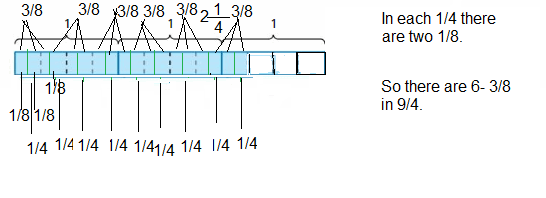
c. You have 6 meter rope in that how many pieces of one-halves meters
length ropes you can make.
There are four, one and one-halves are in six

d. You have three and one-third packets of balloons in that
seven sixth are green color balloons, So how many green balloons are there.
There are \(\frac{20}{7}\) or 2\(\frac{6}{7}\),
seven-sixths are in three and one-third

e. I have 5 books in which I have completed reading of
one and one fifths of books, So how much portions of book
readings I have completed.
There are 4\(\frac{1}{6}\) – one and one-fifths are in five

f. I have two and one half of bowls of sweet, I used three and
one halves cups of milk to prepare sweet, How many cups of
three and one halves are there in two and one half of bowls of sweet,
There are \(\frac{5}{7}\)– three and one-halves
are in two and one-half

g. I have one and one-half bag of apples with me,
I gave four and one-halves portion to my friends,
How many four and one halves portions are there in one and half bag.
There are \(\frac{1}{3}\) – four and one-halves are in one and one-half
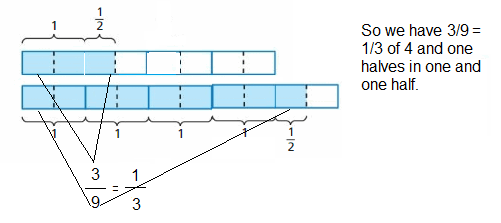
Explanation:
a. Three-fourths in four and one-half are 4\(\frac{1}{2}\) ÷
\(\frac{3}{4}\) = 4\(\frac{1}{2}\) = (4 X 2 + 1 by 2)
= \(\frac{9}{2}\) ÷ \(\frac{3}{4}\) =
now we write \(\frac{3}{4}\) as reciprocal and
multiply \(\frac{9}{2}\) X \(\frac{4}{3}\) =
\(\frac{9 X 4}{2 X 3}\) = \(\frac{36}{6}\)
as both goes in 6 we get 6 X 6 = 36 and 6 X 1= 6,(6,1),
so \(\frac{36}{6}\) = 6, there are six,
three-fourths in four and one-half.
b. Three-eighths in two and one-fourth are 2\(\frac{1}{4}\)
÷ \(\frac{3}{8}\) = 2\(\frac{1}{4}\) =
(2 X 4 + 1 by 4) = \(\frac{9}{4}\) ÷ \(\frac{3}{8}\) =
now we write \(\frac{3}{8}\) as reciprocal and multiply
\(\frac{9}{4}\) X \(\frac{8}{3}\) =
\(\frac{9 X 8}{4 X 3}\) = \(\frac{72}{12}\)
as both goes in 12 we get 12 X 6 = 72 and 12 X 1= 12,(6,1),
so \(\frac{72}{12}\) = 6,there are six,
three-eighths are in two and one-fourth.
c. One and one-halves are in six are 6 ÷ 1\(\frac{1}{2}\),
first we write \(\frac{1}{2}\) as (1 x 2 + 1 by 2) =
\(\frac{3}{2}\) now we write reciprocal as \(\frac{2}{3}\)
and multiply with 6 as 6 X \(\frac{2}{3}\) =
\(\frac{6 X 2}{1 X 3}\) =\(\frac{12}{3}\) = 4,
there are 4, one and one-halves are in six.
d. Seven-sixths are in three and one-third are 3\(\frac{1}{3}\) ÷
\(\frac{7}{6}\) , First we write mixed fraction in
fraction as (3 X 3 + 1 by 3) = \(\frac{10}{3}\) now we
write reciprocal and multiply as \(\frac{10}{3}\) X
\(\frac{6}{7}\) =\(\frac{10 X 6}{3 X 7}\) =
\(\frac{60}{21}\) as both goes in 3,3 X 20 = 60, 3 X 7 = 21,
(20,7) = \(\frac{20}{7}\) as numerator is greater
we can write as (2 X 7 + 6 by 7)=2 \(\frac{6}{7}\)
there are 2 \(\frac{6}{7}\)– seven-sixths are
in three and one-third .
e. One and one-fifths in five are 5 ÷1\(\frac{1}{5}\)
first we write mixed fraction as (1 X 5 +1 by 5) =
\(\frac{6}{5}\) now we write reciprocal and
multiply 5 X \(\frac{5}{6}\) =
\(\frac{5 X 5}{6}\) =\(\frac{25}{6}\)
as numerator is greater we can write as (4 X 6 + 1 by 6) =
4\(\frac{1}{6}\) there are 4\(\frac{1}{6}\) –
one and one-fifths in five.
f. Three and one-halves are in two and one-half are
2\(\frac{1}{2}\)÷ 3\(\frac{1}{2}\)
first we write 2\(\frac{1}{2}\) as (2 X 2 + 1 by 2) =
\(\frac{5}{2}\) and 3\(\frac{1}{2}\)
as (3 X 2 + 1 by 2) = \(\frac{7}{2}\).
Now \(\frac{5}{2}\) ÷\(\frac{7}{2}\),
We write reciprocal and multiply as \(\frac{5}{2}\) X
\(\frac{2}{7}\) = \(\frac{5 X 2}{2 X 7}\) =
\(\frac{5}{7}\) there are \(\frac{5}{7}\)
– three and one-halves are in two and one-half.
g. Four and one-halves are in one and one-half are
1\(\frac{1}{2}\)÷ 4\(\frac{1}{2}\)
first we write 1\(\frac{1}{2}\) as (1 X 2 + 1 by 2) =
\(\frac{3}{2}\) and 4\(\frac{1}{2}\)
as (4 X 2 + 1 by 2) = \(\frac{9}{2}\).
Now \(\frac{3}{2}\) ÷\(\frac{9}{2}\),
We write reciprocal and multiply as \(\frac{3}{2}\) X
\(\frac{2}{9}\) = \(\frac{3 X 2}{2 X 9}\) =
\(\frac{6}{18}\) as both goes in 6 we get 6 x 1= 6,
6 X 3= 18, (1,3) = \(\frac{1}{3}\) there are
\(\frac{1}{3}\) – four and one-halves are in one and one-half.
2.3 Lesson
Key Idea
Dividing Mixed Numbers
Write each mixed number as an improper fraction.
Then divide as you would with proper fractions.
Try It
Divide. Write the answer in simplest form.
Question 1.

 = 11
= 11
Explanation:
Given expression as 3\(\frac{2}{3}\) ÷ \(\frac{1}{3}\),
first we write mixed fraction as (3 X 3 + 2 by 3) = \(\frac{11}{3}\) ÷
\(\frac{1}{3}\), we write \(\frac{1}{3}\) reciprocal
as \(\frac{3}{1}\) and multiply as \(\frac{11}{3}\) X
\(\frac{3}{1}\) = \(\frac{11 X 3}{3 X 1}\) =
\(\frac{11}{1}\) = 11.
Question 2.

 = \(\frac{15}{7}\) or 2\(\frac{1}{7}\)
= \(\frac{15}{7}\) or 2\(\frac{1}{7}\)
Explanation:
Given expression as 1\(\frac{3}{7}\) ÷ \(\frac{2}{3}\),
first we write mixed fraction as (1 X 7 + 3 by 7) = \(\frac{10}{7}\) ÷
\(\frac{2}{3}\), we write \(\frac{2}{3}\) reciprocal
as \(\frac{3}{2}\) and multiply as \(\frac{10}{7}\) X
\(\frac{3}{2}\) = \(\frac{10 X 3}{7 X 2}\) =
\(\frac{30}{14}\), as both goes in 2, 2 X 15 = 30, 2 X 7 = 14,
(15,7) = \(\frac{15}{7}\) as numerator is greater
we write as (2 X 7 + 1 by 7), so \(\frac{15}{7}\)= 2\(\frac{1}{7}\).
Question 3.

 = \(\frac{26}{9}\) or 2\(\frac{8}{9}\)
= \(\frac{26}{9}\) or 2\(\frac{8}{9}\)
Explanation:
Given expression as 2\(\frac{1}{6}\) ÷ \(\frac{3}{4}\),
first we write mixed fraction as (2 X 6 + 1 by 6) = \(\frac{13}{6}\) ÷
\(\frac{3}{4}\), we write \(\frac{3}{4}\) reciprocal
as \(\frac{4}{3}\) and multiply as \(\frac{13}{6}\) X
\(\frac{4}{3}\) = \(\frac{13 X 4}{6 X 3}\) =
\(\frac{52}{18}\), as both goes in 2, 2 X 26 = 52,
2 X 9 = 18, (26,9) = \(\frac{26}{9}\) as numerator is
greater we write as (2 X 9 + 8 by 9),
so \(\frac{26}{9}\)= 2\(\frac{8}{9}\).
Question 4.

 = \(\frac{13}{4}\) or 3\(\frac{1}{4}\)
= \(\frac{13}{4}\) or 3\(\frac{1}{4}\)
Explanation:
Given expression as 6\(\frac{1}{2}\) ÷ 2, first
we write mixed fraction as (6 X 2 + 1 by 2) = \(\frac{13}{2}\) ÷ 2,
we write 2 reciprocal as \(\frac{1}{2}\) and multiply as
\(\frac{13}{2}\) X \(\frac{1}{2}\) =
\(\frac{13 X 1}{2 X 2}\) = \(\frac{13}{4}\),
as numerator is greater we write as (3 X 4 + 1 by 4),
so \(\frac{13}{4}\)= 3\(\frac{1}{4}\).
Question 5.

 = 4
= 4
Explanation:
Given expressions as 10\(\frac{2}{3}\) ÷ 2\(\frac{2}{3}\),
First we write mixed fractions into fractions as 10\(\frac{2}{3}\)
= (10 X 3 + 2 by 3) = \(\frac{32}{3}\) and 2\(\frac{2}{3}\)
= (2 X 3 + 2 by 3) = \(\frac{8}{3}\),
Now we write as we write \(\frac{32}{3}\) ÷
\(\frac{8}{3}\)now reciprocal of the fraction \(\frac{8}{3}\)
as \(\frac{3}{8}\) and multiply as \(\frac{32}{3}\) X
\(\frac{3}{8}\) = \(\frac{32 X 3}{3 X 8}\) =
\(\frac{96}{24}\), we can further simplify as both goes in 24,
24 X 4 = 96 and 24 X 1 = 24, (4,1)= 4.Therefore 10\(\frac{2}{3}\) ÷
2\(\frac{2}{3}\) = 4.
Question 6.

 = \(\frac{11}{2}\) or 5\(\frac{1}{2}\)
= \(\frac{11}{2}\) or 5\(\frac{1}{2}\)
Explanation:
Given expressions as 8\(\frac{1}{4}\) ÷ 1\(\frac{1}{2}\),
First we write mixed fractions into fractions as 8\(\frac{1}{4}\) =
(8 X 4 + 1 by 4) = \(\frac{33}{4}\) and 1\(\frac{1}{2}\) =
(1 X 2 + 1 by 2) = \(\frac{3}{2}\), Now we write
\(\frac{33}{4}\) ÷ \(\frac{3}{2}\) now reciprocal of
the fraction \(\frac{3}{2}\) as \(\frac{2}{3}\) and
multiply as \(\frac{33}{4}\) X \(\frac{2}{3}\) =
\(\frac{33 X 2}{4 X 3}\) = \(\frac{66}{12}\),
we can further simplify as both goes in 6, 6 X 11 = 66 and 6 X 2 = 12,
(11,2)=\(\frac{11}{2}\) as numerator is greater
we write as (5 X 2 + 1 by 2) = 5\(\frac{1}{2}\).
Therefore 8\(\frac{1}{4}\) ÷ 1\(\frac{1}{2}\) =
\(\frac{11}{2}\) or 5\(\frac{1}{2}\).
Question 7.

 = \(\frac{12}{7}\) or 1\(\frac{5}{7}\)
= \(\frac{12}{7}\) or 1\(\frac{5}{7}\)
Explanation:
Given expressions as 3 ÷ 1\(\frac{1}{2}\),First we write
mixed fractions into fractions as 1\(\frac{3}{4}\) =
(1 x 4 + 3 by 4) = \(\frac{7}{4}\) now 3 ÷ \(\frac{7}{4}\)
now reciprocal of the fraction \(\frac{7}{4}\) as
\(\frac{4}{7}\) and multiply as 3 X \(\frac{4}{7}\) =
\(\frac{3 X 4}{7}\) = \(\frac{12}{7}\)
as numerator is greater we write as (1 X 7 + 5 by 7) = 1\(\frac{5}{7}\).
Therefore 3 ÷ 1\(\frac{3}{4}\) = \(\frac{12}{7}\) or 1\(\frac{5}{7}\).
Question 8.

 = \(\frac{3}{10}\)
= \(\frac{3}{10}\)
Explanation:
Given expressions as \(\frac{3}{4}\) ÷ 2\(\frac{1}{2}\),
First we write mixed fractions into fractions as 2\(\frac{1}{2}\) =
(2 x 2 + 1 by 2) = \(\frac{5}{2}\) now \(\frac{3}{4}\) ÷
\(\frac{5}{2}\) now reciprocal of the fraction
\(\frac{5}{2}\) as \(\frac{2}{5}\) and multiply as
\(\frac{3}{4}\) X \(\frac{2}{5}\) =
\(\frac{3 X 2}{4 X 5}\) = \(\frac{6}{20}\)
as both goes in 2, 2 X 3 = 6, 2 X 10= 20, (3,10)= \(\frac{3}{10}\).
Therefore \(\frac{3}{4}\) ÷ 2\(\frac{1}{2}\) = \(\frac{3}{10}\).
Try It
Evaluate the expression. Write the answer in simplest form.
Question 9.

 = \(\frac{65}{8}\) = 8\(\frac{1}{8}\)
= \(\frac{65}{8}\) = 8\(\frac{1}{8}\)
Explanation:
Given expressions as (1\(\frac{1}{2}\) ÷ \(\frac{1}{6}\)) –
\(\frac{7}{8}\) ,First we write mixed fractions into fractions as
1\(\frac{1}{2}\) = (1 x 2 + 1 by 2) = \(\frac{3}{2}\)
now \(\frac{3}{2}\) ÷ \(\frac{1}{6}\) now reciprocal
of the fraction \(\frac{1}{6}\) as 6 and multiply as
\(\frac{3}{2}\) X 6 = \(\frac{3 X 6}{2 X 1}\) =
\(\frac{18}{2}\) as both goes in 2, 2 X 9 = 18, 2 X 1= 2, (9,1)=9.
Now 9 – \(\frac{7}{8}\) =(9 X 8 – 7 by 8) = \(\frac{65}{8}\)
as numerator is greater we write as (8 X 8 + 1 by 8) = \(\frac{65}{8}\) =
8\(\frac{1}{8}\). Therefore (1\(\frac{1}{2}\) ÷ \(\frac{1}{6}\)) –
\(\frac{7}{8}\) = \(\frac{65}{8}\) = 8\(\frac{1}{8}\).
Question 10.

 = \(\frac{44}{9}\) = 4\(\frac{8}{9}\)
= \(\frac{44}{9}\) = 4\(\frac{8}{9}\)
Explanation:
Given expressions as (3\(\frac{1}{3}\) ÷ \(\frac{5}{6}\)) +
\(\frac{8}{9}\) ,First we write mixed fractions into fractions as
3\(\frac{1}{3}\) = (3 x 3 + 1 by 3) = \(\frac{10}{3}\)
now \(\frac{10}{3}\) ÷ \(\frac{5}{6}\) now reciprocal
of the fraction \(\frac{5}{6}\) as \(\frac{6}{5}\) and multiply as
\(\frac{10}{3}\) X \(\frac{6}{5}\) = \(\frac{10 X 6}{3 X 5}\) =
\(\frac{60}{15}\) as both goes in 15, 15 X 4 = 60, 15 X 1= 15, (4,1)=4.
Now 4 + \(\frac{8}{9}\) =(4 X 9 + 8 by 9) = \(\frac{44}{9}\)
as numerator is greater we write as (4 X 9 + 8 by 9) = \(\frac{44}{9}\) =
4\(\frac{8}{9}\). Therefore (3\(\frac{1}{3}\) ÷ \(\frac{5}{6}\)) +
\(\frac{8}{9}\) = \(\frac{44}{9}\) = 4\(\frac{8}{9}\).
Question 11.

 = \(\frac{8}{5}\) = 1\(\frac{3}{5}\)
= \(\frac{8}{5}\) = 1\(\frac{3}{5}\)
Explanation:
Given expressions as \(\frac{2}{5}\) + 2\(\frac{4}{5}\) ÷ 2,
First we write mixed fractions into fractions as
2\(\frac{4}{5}\) = (2 x 5 + 4 by 5) = \(\frac{14}{5}\)
now \(\frac{2}{5}\) + \(\frac{14}{5}\) as denominators
are same we add numerators as 2 + 14 and write as \(\frac{16}{5}\),
now we divide with 2, \(\frac{16}{5}\) ÷ 2, we write 2 as
reciprocal and multiply \(\frac{16}{5}\) X \(\frac{1}{2}\) =
\(\frac{16 X 1}{5 X 2}\) = \(\frac{16}{10}\) as both goes
in 2, 2 x 8 = 16, 2 X 5 = 10, (8,5) = \(\frac{8}{5}\) as numerator is
greater we write as (1 X 5 + 3 by 5) = 1\(\frac{3}{5}\) ,Therefore
\(\frac{2}{5}\) + 2\(\frac{4}{5}\) ÷ 2 =
\(\frac{8}{5}\) = 1\(\frac{3}{5}\) .
Question 12.

 = \(\frac{1}{3}\)
= \(\frac{1}{3}\)
Explanation:
Given expressions as \(\frac{2}{3}\) – (1\(\frac{4}{7}\) ÷ 4\(\frac{5}{7})\),First we write mixed fractions into fractions as
1\(\frac{4}{7}\) = (1 X 7 + 4 by 7) = \(\frac{11}{7}\) and
4\(\frac{5}{7}\) = (4 X 7 + 5 by 7) = \(\frac{33}{7}\),
Now first we divide \(\frac{11}{7}\) ÷ \(\frac{33}{7}\) =
we write \(\frac{33}{7}\) as reciprocal and multiply \(\frac{7}{33}\) ,
\(\frac{11}{7}\) X \(\frac{7}{33}\) = \(\frac{11 X 7}{7 X 33}\) =
\(\frac{77}{231}\) as both goes in 77, 77 X 1= 77, 77 X 3 = 231,(1,3),
\(\frac{1}{3}\) now we subtract from \(\frac{2}{3}\) – \(\frac{1}{3}\)
as denominators are same we subtract from numerators as
(2-1) we get \(\frac{1}{3}\), Therefore \(\frac{2}{3}\) – (1\(\frac{4}{7}\) ÷ 4\(\frac{5}{7})\) = \(\frac{1}{3}\).
Self-Assessment for Concepts & Skills
Solve each exercise. Then rate your understanding of the success criteria in your journal.
EVALUATING EXPRESSIONS
Evaluate the expression. Write the answer in simplest form.
Question 13.

 = \(\frac{224}{28}\) = 8.
= \(\frac{224}{28}\) = 8.
Explanation:
Given expressions as 4\(\frac{4}{7}\) ÷ \(\frac{4}{7}\),
First we write mixed fractions into fractions 4\(\frac{4}{7}\) as
(4 X 7 + 4 by 7) = \(\frac{32}{7}\), Now \(\frac{4}{7}\) we
write as reciprocal and multiply \(\frac{7}{4}\) as
\(\frac{32}{7}\) X \(\frac{7}{4}\) = \(\frac{32 X 7}{7 X 4}\)=
\(\frac{224}{28}\) as both goes in 28, 28 X 8 = 224,
28 X 1 = 28, (8,1) = 8, therefore 4\(\frac{4}{7}\) ÷ \(\frac{4}{7}\)=
\(\frac{224}{28}\) = 8.
Question 14.

 = \(\frac{2}{21}\)
= \(\frac{2}{21}\)
Explanation:
Given expressions as \(\frac{1}{2}\) ÷ 5\(\frac{1}{4}\),
First we write mixed fractions into fractions 5\(\frac{1}{4}\) as
(5 X 4 + 1 by 4) = \(\frac{21}{4}\) we write as reciprocal and
multiply \(\frac{4}{21}\) as \(\frac{1}{2}\) X \(\frac{4}{21}\) =
\(\frac{1 X 4}{2 X 21}\) = \(\frac{4}{42}\) as both goes in
2, 2 X 2 = 4, 2 X 21 = 42, (2, 21) = \(\frac{2}{21}\), therefore
\(\frac{1}{2}\) ÷ 5\(\frac{1}{4}\) = \(\frac{2}{21}\).
Question 15.

 = \(\frac{19}{4}\) = 4\(\frac{3}{4}\)
= \(\frac{19}{4}\) = 4\(\frac{3}{4}\)
Explanation:
Given expressions as \(\frac{3}{4}\) + (6\(\frac{2}{5}\) ÷
1\(\frac{3}{5}\)), First we write mixed fractions into fractions as
6\(\frac{2}{5}\) = (6 X 5 + 2 by 5) = \(\frac{32}{5}\) and
1\(\frac{3}{5}\) = (1 X 5 + 3 by 5) = \(\frac{8}{5}\),
we write reciprocal \(\frac{5}{8}\) and multiply \(\frac{32}{5}\) X \(\frac{5}{8}\) = \(\frac{32 X 5}{5 X 8}\) = \(\frac{160}{40}\)
as both goes in 40 as 40 X 4 = 160, 40 X 1 = 40, (4,1), \(\frac{160}{40}\) =4,
Now \(\frac{3}{4}\) + 4 = ( 3 + 4 X 4 by 4 ) = \(\frac{19}{4}\),
as numerator is greater we write as ( 4 X 4 + 3 by 4) = 4\(\frac{3}{4}\),
therefore \(\frac{3}{4}\) + (6\(\frac{2}{5}\) ÷
1\(\frac{3}{5}\)) = \(\frac{19}{4}\) = 4\(\frac{3}{4}\).
Question 16.
NUMBER SENSE
Is 2\(\frac{1}{2}\) ÷ 1\(\frac{1}{4}\) the same as 1\(\frac{1}{4}\) ÷ 2\(\frac{1}{2}\)? Use models to justify your answer.
No,Is 2\(\frac{1}{2}\) ÷ 1\(\frac{1}{4}\) is not the same as
1\(\frac{1}{4}\) ÷ 2\(\frac{1}{2}\)
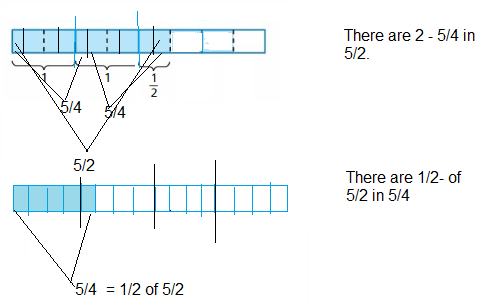
Explanation:
Given expressions as 2\(\frac{1}{2}\) ÷ 1\(\frac{1}{4}\) and
1\(\frac{1}{4}\) ÷ 2\(\frac{1}{2}\) first we write mixed fractions,
into fractions 2\(\frac{1}{2}\) = (2 X 2 + 1 by 2) = \(\frac{5}{2}\),
1\(\frac{1}{4}\) = (1 X 4 + 1 by 4) = \(\frac{5}{4}\), now
write as reciprocal as \(\frac{4}{5}\), now we multiply as
\(\frac{5}{2}\) X \(\frac{4}{5}\) = \(\frac{5 x 4}{2 X 5}\) =
\(\frac{20}{10}\) as both goes in 10, 10 X 2 = 20, 10 X 1= 10,(2,1)=2.
Now 1\(\frac{1}{4}\) ÷ 2\(\frac{1}{2}\) we write mixed fractions,
into fractions 1\(\frac{1}{4}\) = (1 X 4 + 1 by 4) = \(\frac{5}{4}\),
2\(\frac{1}{2}\) = (2 X 2 + 1 by 2) = \(\frac{5}{2}\), now
write as reciprocal as \(\frac{2}{5}\), now we multiply as
\(\frac{5}{4}\) X \(\frac{2}{5}\) = \(\frac{5 x 2}{4 X 5}\) =
\(\frac{10}{20}\) = as both goes in 10, 10 X 1 = 10, 10 X 2 = 20, (1,2) =
\(\frac{1}{2}\), therefore 2 ≠ \(\frac{1}{2}\) So no,
2\(\frac{1}{2}\) ÷ 1\(\frac{1}{4}\) is not the same as
1\(\frac{1}{4}\) ÷ 2\(\frac{1}{2}\).
Question 17.
DIFFERENT WORDS, SAME QUESTION
Which is different? Find “both” answers.

d. Different one is What is \(\frac{1}{8}\) of 5 \(\frac{1}{2}\) =
5\(\frac{1}{2}\) multiplied by \(\frac{1}{8}\).
All 3 results are in whole only \(\frac{1}{8}\) of 5 \(\frac{1}{2}\)
is in fraction. So it is different from other 3 ones.
Explanation:
We calculate first 5\(\frac{1}{2}\) = (5 X 2 + 1 by 2) = \(\frac{11}{2}\)
a. As what is 5\(\frac{1}{2}\) divided by \(\frac{1}{8}\) means
5\(\frac{1}{2}\) ÷ \(\frac{1}{8}\),
\(\frac{11}{2}\) ÷ \(\frac{1}{8}\),
we write reciprocal and multiply as
\(\frac{11}{2}\) X 8 = \(\frac{88}{2}\) = 44.
b. What is quotient of 5\(\frac{1}{2}\) and \(\frac{1}{8}\) means
5\(\frac{1}{2}\) ÷ \(\frac{1}{8}\),
\(\frac{11}{2}\) ÷ \(\frac{1}{8}\),
we write reciprocal and multiply as
\(\frac{11}{2}\) X 8 = \(\frac{88}{2}\) = 44.
c. What is 5\(\frac{1}{2}\) times of 8 means
5\(\frac{1}{2}\) X 8= \(\frac{88}{2}\) = 44.
d. What is \(\frac{1}{8}\) of 5\(\frac{1}{2}\) means
5\(\frac{1}{2}\) X \(\frac{1}{8}\),
\(\frac{11}{2}\) X \(\frac{1}{8}\) = \(\frac{11}{16}\)=0.6875,
So only different one is d. What is \(\frac{1}{8}\) of 5 \(\frac{1}{2}\)
value is different from the other 3.
Self-Assessment for Problem Solving
Solve each exercise. Then rate your understanding of the success criteria in your journal.
Question 18.
A water cooler contains 160 cups of water. During practice, each person on a team fills a water bottle with 3\(\frac{1}{3}\) cups of water from the cooler. Is there enough water for all 45 people on the team to fill their water bottles? Explain.
150 cups of water is required for 45 people and cooler contains
160 cups of water, therefore we have sufficient enough water
for all 45 people on the team to fill their water bottles.
Explanation:
Given a water cooler contains 160 cups of water, During practice,
each person on a team fills a water bottle with 3\(\frac{1}{3}\) cups
of water from the cooler. To find is there enough water for all
45 people on the team to fill their water bottles we calculate as
45 persons X 3\(\frac{1}{3}\) =
first we write mixed fraction as fraction 3\(\frac{1}{3}\) =
(3 X 3 +1 by 3) = \(\frac{10}{3}\) now we multiply as
45 X \(\frac{10}{3}\) = \(\frac{450}{3}\) as both
goes in 3, 3 X 150 = 450,3 x 1= 3, (150,1) so \(\frac{450}{3}\)= 150 cups
of water is required for 45 people and cooler contains 160 cups of water,
therefore we have sufficient enough water for all 45 people on the team to
fill their water bottles.
Question 19.
A cyclist is 7\(\frac{3}{4}\) kilometers from the finish line of a race. The cyclist rides at a rate of 25\(\frac{5}{6}\) kilometers per hour. How many minutes will it take the cyclist to finish the race?

It will take 18 minutes for the cyclist to finish the race,
Explanation:
Given a cyclist is 7\(\frac{3}{4}\) kilometers from the finish line of a race,
The cyclist rides at a rate of 25\(\frac{5}{6}\) kilometers per hour,
means we write as 25\(\frac{5}{6}\) ÷ 7\(\frac{3}{4}\)
first we write mixed fractions in fractions as 25\(\frac{5}{6}\) =
(25 X 6 + 5 by 6) = \(\frac{155}{6}\) now 7\(\frac{3}{4}\) =
(7 X 4 + 3 by 4) = \(\frac{31}{4}\) now reciprocal of \(\frac{31}{4}\) =
\(\frac{4}{31}\) and multiply as \(\frac{155}{6}\) X \(\frac{4}{31}\)=
\(\frac{155 X 4}{6 X 31}\) = \(\frac{620}{186}\) kilometers
in an hour. Now we convert into minutes as \(\frac{186 X 60}{620}\) =
\(\frac{11160}{620}\) as both goes in 620, 620 X 18 = 11160, 620 X 1 = 620,
\(\frac{11160}{620}\) = 18 minutes.Therefore it will take
18 minutes for the cyclist to finish the race.
Dividing Mixed Numbers Homework & Practice 2.3
Review & Refresh
Divide. Write the answer in simplest form.
Question 1.

 = \(\frac{7}{8}\)
= \(\frac{7}{8}\)
Explanation:
Given expression as \(\frac{1}{8}\) ÷ \(\frac{1}{7}\)
we write reciprocal of the fraction \(\frac{1}{7}\) as
\(\frac{7}{1}\) and multiply as \(\frac{1}{8}\) X
\(\frac{7}{1}\) = \(\frac{1 X 7}{8 X 1}\) =
\(\frac{7}{8}\), Therefore \(\frac{1}{8}\) ÷ \(\frac{1}{7}\) = \(\frac{7}{8}\).
Question 2.

 = \(\frac{7}{6}\) or 1\(\frac{1}{6}\)
= \(\frac{7}{6}\) or 1\(\frac{1}{6}\)
Explanation:
Given expression as \(\frac{7}{9}\) ÷ \(\frac{2}{3}\)
we write reciprocal of the fraction \(\frac{2}{3}\) as
\(\frac{3}{2}\) and multiply as \(\frac{7}{9}\) X
\(\frac{3}{2}\) = \(\frac{7 X 3}{9 X 2}\) =
\(\frac{21}{18}\) as both goes in 3, 3 X 7 =21, 3 X 6 = 18,(7,6)=
\(\frac{7}{6}\) as numerator is greater we write as (1 X 6 + 1 by 6)=
1\(\frac{1}{6}\). Therefore \(\frac{7}{9}\) ÷ \(\frac{2}{3}\) = \(\frac{7}{6}\) or 1\(\frac{1}{6}\).
Question 3.

 = \(\frac{1}{12}\)
= \(\frac{1}{12}\)
Explanation:
Given expression as \(\frac{5}{6}\) ÷ 10
we write reciprocal for 10 as \(\frac{1}{10}\)
and multiply as \(\frac{5}{6}\) X \(\frac{1}{10}\) =
\(\frac{5 X 1}{6 X 10}\) = \(\frac{5}{60}\) as both goes in 5,
5 X 1 = 5, 5 X 12 = 60 ,(1,12) = \(\frac{1}{12}\),
Therefore \(\frac{5}{6}\) ÷ 10 = \(\frac{1}{12}\).
Question 4.

 = 32
= 32
Explanation:
Given expression as 12 ÷ \(\frac{3}{8}\), we write reciprocal
for \(\frac{3}{8}\) as \(\frac{8}{3}\) and multiply as
12 X \(\frac{8}{3}\) = \(\frac{12 X 8}{1 X 3}\) = \(\frac{96}{3}\),
as both goes in 3, 3 X 32 = 96, 3 X 1 = 3, (32,1), So \(\frac{96}{3}\) = 32,
Therefore 12 ÷ \(\frac{3}{8}\) = 32.
Find the LCM of the numbers.
Question 5.
8, 14
The LCM of 8, 14 is 56
Explanation:
The prime factorization of 8 is 2 X 2 X 2,
The prime factorization of 14 is 2 X 7,
Eliminate the duplicate factors of the two lists,
(we have 2 in common both ),then multiply them once
with the remaining factors of the lists to get
LCM(8, 14) = 2 X 2 X 2 X 7 = 56.
Question 6.
9, 11, 12
The LCM of 9, 11, 12 is 396
Explanation:
The factors of 9 is 3 X 3,
The factors of 11 is 11,
The factors of 12 is 3 X 4
Eliminate the duplicate factors of the two lists,
(we have 3 in common),then multiply them once
with the remaining factors of the lists to get
LCM(9, 11, 12) = 3 X 3 X 11 X 4 = 396.
Question 7.
12, 27, 30
The LCM of 12, 27, 30 is 540
Explanation:
The factors of 12 is 3 X 4 = 3 X 2 X 2
The factors of 27 is 3 X 9 = 3 X 3 X 3,
The factors of 30 is 3 X 10 = 3 X 2 X 5
Eliminate the duplicate factors of the two lists,
(we have 2, 3 in common),then multiply them once
with the remaining factors of the lists to get
LCM(12, 27, 30) = 2 X 3 X 9 X 10 = 540.
Find the volume of the rectangular prism.
Question 8.
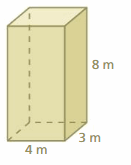
The volume of the rectangular prism is 96 mt3
Explanation:
Given length as 4 m, width as 3 m and height as 8 m,
we know the volume of the rectangular prism is
length X width X height = 4 X 3 X 8 = 96, Therefore
the volume of the rectangular prism is 96 mt3.
Question 9.
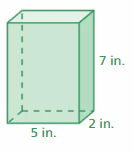
The volume of the rectangular prism is 70 in3
Explanation:
Given length as 5 in, width as 2 in and height as 7 in,
we know the volume of the rectangular prism is
length X width X height = 5 X 2 X 7 = 70, Therefore
the volume of the rectangular prism is 70 in3.
Question 10.
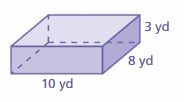
The volume of the rectangular prism is 240 yd3
Explanation:
Given length as 10 yd, width as 8 yd and height as 3 yd,
we know the volume of the rectangular prism is
length X width X height = 10 X 8 X 3 = 240, Therefore
the volume of the rectangular prism is 240 yd3.
Question 11.
Which number is not a prime factor of 286?
A. 2
B. 7
C. 11
D. 13
B. 7 is not a prime factor of 286,
Explanation:
286 is a composite number.
Prime factorization of 286 = 2 x 11 x 13 and
Factors of 286 are 1, 2, 11, 13, 22, 26, 143, 286.
Therefore 7 is not a prime factor of 286.
Concepts, Skills, & Problem Solving
CHOOSE TOOLS
Write a real-life problem that represents the division expression described. Then solve the problem using a model. Check your answer algebraically. (See Exploration 1, p. 61.)
Question 12.
How many two-thirds are in three and one-third?
I have three and one- third rose flowers I have, I distributed among
two-thirds children, how man children are there?

Five, two-thirds are in three and one-third
Explanation:
Given to find two-thirds are in three and one-third means
3\(\frac{1}{3}\) ÷ \(\frac{2}{3}\), First we write
mixed fraction as ( 3 X 3 + 1 by 3) = \(\frac{10}{3}\)÷ \(\frac{2}{3}\)
we write reciprocal of the fraction \(\frac{2}{3}\)
as \(\frac{3}{2}\) and multiply \(\frac{10}{3}\) X
\(\frac{3}{2}\) = \(\frac{10 X 3}{3 X 2}\)= \(\frac{30}{6}\)
as both goes in 6 as 6 X 5 = 30, 6 X 1= 6,(5, 1), \(\frac{30}{6}\) = 5.
Question 13.
How many one and one-sixths are in five and five-sixths?
A golden statue is five and five-sixths tall and a silver statue is
one and one-sixths tall, How many times is the golden statue
taller than silver statue.

Five, one and one-sixths are in five and five-sixths
Explanation:
Given to find one and one-sixths are in five and five-sixths means
5\(\frac{5}{6}\) ÷ 1\(\frac{1}{6}\), First we write
5\(\frac{5}{6}\) mixed fraction as ( 5 X 6 + 5 by 6) = \(\frac{35}{6}\)
and 1\(\frac{1}{6}\) mixed fraction as (1 X 6 + 1 by 6)= \(\frac{7}{6}\).
Now \(\frac{35}{6}\) ÷ \(\frac{7}{6}\) we write reciprocal
of the fraction \(\frac{7}{6}\) as \(\frac{6}{7}\) and multiply
\(\frac{35}{6}\) X \(\frac{6}{7}\)= \(\frac{35 X 6}{6 X 7}\)= \(\frac{210}{42}\) as both goes in 42 as 42 X 5 = 210, 42 X 1= 42,(5, 1),
\(\frac{210}{42}\) = 5.
Question 14.
How many two and one-halves are in eight and three-fourths?
I have eight and three-fourths of pens with me, My friend
has two and one-halves pens with him, How many more pens
do I have more than my friend.

\(\frac{7}{2}\) or 3\(\frac{1}{2}\) two and one-halves
are in eight and three-fourths
Explanation:
Given to find two and one-halves are in eight and three-fourths means
8\(\frac{3}{4}\) ÷ 2\(\frac{1}{2}\), First we write
8\(\frac{3}{4}\) mixed fraction as ( 8 X 4 + 3 by 4) = \(\frac{35}{4}\)
and 2\(\frac{1}{2}\) mixed fraction as (2 X 2 + 1 by 2)= \(\frac{5}{2}\).
Now \(\frac{35}{4}\) ÷ \(\frac{5}{2}\) we write reciprocal
of the fraction \(\frac{5}{2}\) as \(\frac{2}{5}\) and multiply
\(\frac{35}{4}\) X \(\frac{2}{5}\)= \(\frac{35 X 2}{4 X 5}\)= \(\frac{70}{20}\) as both goes in 10 as 10 X 7 = 70, 10 X 2= 20,(7, 2),
\(\frac{70}{20}\) = \(\frac{7}{2}\) as numerator is greater
we write as (3 X 2 + 1 by 2) = 3\(\frac{1}{2}\).
DIVIDING WITH MIXED NUMBERS
Divide. Write the answer in simplest form.
Question 15.

 = 3
= 3
Explanation:
Given expressions as 2\(\frac{1}{4}\) ÷ \(\frac{3}{4}\),
First we write mixed fraction into fraction 2\(\frac{1}{4}\) as
(2 X 4 + 1 by 4) = \(\frac{9}{4}\), Now \(\frac{3}{4}\) we
write as reciprocal and multiply \(\frac{4}{3}\) as
\(\frac{9}{4}\) X \(\frac{4}{3}\) = \(\frac{9 X 4}{4 X 3}\)=
\(\frac{36}{12}\) as both goes in 12, 12 X 3 = 36,
12 X 1 = 12, (3, 1) = 3, therefore 2\(\frac{1}{4}\) ÷ \(\frac{3}{4}\)=
\(\frac{36}{12}\) = 3.
Question 16.

 = \(\frac{19}{2}\) = 9\(\frac{1}{2}\)
= \(\frac{19}{2}\) = 9\(\frac{1}{2}\)
Explanation:
Given expressions as 3\(\frac{4}{5}\) ÷ \(\frac{2}{5}\),
First we write mixed fraction into fraction 3\(\frac{4}{5}\) as
(3 X 5 + 4 by 5) = \(\frac{19}{5}\), Now \(\frac{2}{5}\) we
write as reciprocal and multiply \(\frac{5}{2}\) as
\(\frac{19}{5}\) X \(\frac{5}{2}\) = \(\frac{19 X 5}{5 X 2}\)=
\(\frac{95}{10}\) as both goes in 5, 5 X 19 = 95,
5 X 2 = 10, (19, 2) = \(\frac{19}{2}\) as numerator is greater
we write as (9 X 2 + 1 by 2)= 9\(\frac{1}{2}\).
Therefore 3\(\frac{4}{5}\) ÷ \(\frac{2}{5}\) = \(\frac{19}{2}\) = 9\(\frac{1}{2}\).
Question 17.

 = \(\frac{39}{4}\) = 9\(\frac{3}{4}\)
= \(\frac{39}{4}\) = 9\(\frac{3}{4}\)
Explanation:
Given expressions as 8\(\frac{1}{8}\) ÷ \(\frac{5}{6}\),
First we write mixed fraction into fraction 8\(\frac{1}{8}\) as
(8 X 8 + 1 by 8) = \(\frac{65}{8}\), Now \(\frac{5}{6}\) we
write as reciprocal and multiply \(\frac{6}{5}\) as
\(\frac{65}{8}\) X \(\frac{6}{5}\) = \(\frac{65 X 6}{8 X 5}\) =
\(\frac{390}{40}\) as both goes in 10, 10 X 39 = 390,
10 X 4 = 40, (39, 4) = \(\frac{39}{4}\) as numerator is greater
we write as (9 X 4 + 3 by 4)= 9\(\frac{3}{4}\).
Therefore 8\(\frac{1}{8}\) ÷ \(\frac{5}{6}\) = \(\frac{39}{4}\) = 9\(\frac{3}{4}\).
Question 18.

 = \(\frac{119}{9}\) = 13\(\frac{2}{9}\)
= \(\frac{119}{9}\) = 13\(\frac{2}{9}\)
Explanation:
Given expressions as 7\(\frac{5}{9}\) ÷ \(\frac{4}{7}\),
First we write mixed fraction into fraction 7\(\frac{5}{9}\) as
(7 X 9 + 5 by 9) = \(\frac{68}{9}\), Now \(\frac{4}{7}\) we
write as reciprocal and multiply \(\frac{7}{4}\) as
\(\frac{68}{9}\) X \(\frac{7}{4}\) = \(\frac{68 X 7}{9 X 4}\) =
\(\frac{476}{36}\) as both goes in 4, 4 X 119 = 476,
4 X 9 = 36, (119, 9) = \(\frac{119}{9}\) as numerator is greater
we write as (13 X 9 + 2 by 9)= 13\(\frac{2}{9}\).
Therefore 7\(\frac{5}{9}\) ÷ \(\frac{4}{7}\) = \(\frac{119}{9}\) = 13\(\frac{2}{9}\).
Question 19.

 = \(\frac{75}{19}\) = 3\(\frac{18}{19}\)
= \(\frac{75}{19}\) = 3\(\frac{18}{19}\)
Explanation:
Given expressions as 7\(\frac{1}{2}\) ÷ 1\(\frac{9}{10}\),
First we write mixed fractions into fractions 7\(\frac{1}{2}\) as
(7 X 2 + 1 by 2) = \(\frac{15}{2}\), 1\(\frac{9}{10}\)=
(1 x 10 + 9 by 10) = \(\frac{19}{10}\),Now \(\frac{19}{10}\) we
write as reciprocal and multiply \(\frac{10}{19}\) as
\(\frac{15}{2}\) X \(\frac{10}{19}\) = \(\frac{15 X 10}{2 X 19}\) =
\(\frac{150}{38}\) as both goes in 2, 2 X 75 = 150,
2 X 19 = 38, (75, 19) = \(\frac{75}{19}\) as numerator is greater
we write as (3 X 19 + 18 by 9)= 3\(\frac{18}{19}\).
Therefore 7\(\frac{1}{2}\) ÷ 1\(\frac{9}{10}\) = \(\frac{75}{19}\) = 3\(\frac{18}{19}\).
Question 20.

 = \(\frac{9}{5}\) = 1\(\frac{4}{5}\)
= \(\frac{9}{5}\) = 1\(\frac{4}{5}\)
Explanation:
Given expressions as 3\(\frac{3}{4}\) ÷ 2\(\frac{1}{12}\),
First we write mixed fractions into fractions 3\(\frac{3}{4}\) as
(3 X 4 + 3 by 4) = \(\frac{15}{4}\), 2\(\frac{1}{12}\)=
(2 x 12 + 1 by 12) = \(\frac{25}{12}\),Now \(\frac{25}{12}\) we
write as reciprocal and multiply \(\frac{12}{25}\) as
\(\frac{15}{4}\) X \(\frac{12}{25}\) = \(\frac{15 X 12}{4 X 25}\) =
\(\frac{180}{100}\) as both goes in 20, 20 X 9 = 180,
20 X 5 = 100, (9, 5) = \(\frac{9}{5}\) as numerator is greater
we write as (1 X 5 + 4 by 5)= 1\(\frac{4}{5}\).
Therefore 3\(\frac{3}{4}\) ÷ 2\(\frac{1}{12}\) = \(\frac{9}{5}\) = 1\(\frac{4}{5}\).
Question 21.

 = \(\frac{9}{10}\)
= \(\frac{9}{10}\)
Explanation:
Given expressions as 7\(\frac{1}{5}\) ÷ 8,
First we write mixed fraction into fraction 7\(\frac{1}{5}\) as
(7 X 5 + 1 by 5) = \(\frac{36}{5}\),Now 8 we
write as reciprocal and multiply \(\frac{1}{8}\) as
\(\frac{36}{5}\) X \(\frac{1}{8}\) = \(\frac{36 X 1}{5 X 8}\) =
\(\frac{36}{40}\) as both goes in 4, 4 X 9 = 36,
4 X 10 = 40, (9, 10) = \(\frac{9}{10}\).
Therefore 7\(\frac{1}{5}\) ÷ 8 = \(\frac{9}{10}\).
Question 22.
 = \(\frac{4}{7}\)
= \(\frac{4}{7}\)
Explanation:
Given expressions as 8\(\frac{4}{7}\) ÷ 15,
First we write mixed fraction into fraction 8\(\frac{4}{7}\) as
(8 X 7 + 4 by 7) = \(\frac{60}{7}\),Now 15 we
write as reciprocal and multiply \(\frac{1}{15}\) as
\(\frac{60}{7}\) X \(\frac{1}{15}\) = \(\frac{60 X 1}{7 X 15}\) =
\(\frac{60}{105}\) as both goes in 15, 15 X 4 = 60,
15 X 7 = 105, (4, 7) = \(\frac{4}{7}\).
Therefore 8\(\frac{4}{7}\) ÷ 15 = \(\frac{4}{7}\).
Question 23.

 = \(\frac{25}{2}\) = 12\(\frac{1}{2}\)
= \(\frac{25}{2}\) = 12\(\frac{1}{2}\)
Explanation:
Given expressions as 8\(\frac{1}{3}\) ÷ \(\frac{2}{3}\),
First we write mixed fraction into fraction 8\(\frac{1}{3}\) as
(8 X 3 + 1 by 3) = \(\frac{25}{3}\),Now \(\frac{2}{3}\) we
write as reciprocal and multiply \(\frac{3}{2}\) as
\(\frac{25}{3}\) X \(\frac{3}{2}\) = \(\frac{25 X 3}{3 X 2}\) =
\(\frac{75}{6}\) as both goes in 3, 3 X 25 = 75,
3 X 2 = 6, (25, 2) = \(\frac{25}{2}\) as numerator is greater
we write as (12 X 2 + 1 by 2)= 12\(\frac{1}{2}\).
Therefore 8\(\frac{1}{3}\) ÷ \(\frac{2}{3}\) = \(\frac{25}{2}\) = 12\(\frac{1}{2}\).
Question 24.

 = 11
= 11
Explanation:
Given expressions as 9\(\frac{1}{6}\) ÷ \(\frac{5}{6}\),
First we write mixed fraction into fraction 9\(\frac{1}{6}\) as
(9 X 6 + 1 by 6) = \(\frac{55}{6}\),Now \(\frac{5}{6}\) we
write as reciprocal and multiply \(\frac{6}{5}\) as
\(\frac{55}{6}\) X \(\frac{6}{5}\) = \(\frac{55 X 6}{6 X 5}\) =
\(\frac{330}{30}\) as both goes in 30, 30 X 11 = 330,
3 X 1 = 30, (11, 1) = \(\frac{330}{30}\) = 11,
Therefore 9\(\frac{1}{6}\) ÷ \(\frac{5}{6}\) = 11.
Question 25.

 = \(\frac{6}{5}\) = 1\(\frac{1}{5}\)
= \(\frac{6}{5}\) = 1\(\frac{1}{5}\)
Explanation:
Given expressions as 13 ÷ 10\(\frac{5}{6}\)
First we write mixed fraction into fraction 10\(\frac{5}{6}\) as
(10 X 6 + 5 by 6) = \(\frac{65}{6}\),Now \(\frac{65}{6}\) we
write as reciprocal and multiply \(\frac{6}{65}\) as
13 X \(\frac{6}{65}\) = \(\frac{13 X 6}{1 X 65}\) =
\(\frac{78}{65}\) as both goes in 13, 13 X 6 = 78,
13 X 5 = 65, (6, 5) = \(\frac{6}{5}\) as numerator is greater
we write as (1 X 5 + 1 by 5)= 1\(\frac{1}{5}\).
Therefore 13 ÷ 10\(\frac{5}{6}\) = \(\frac{6}{5}\) = 1\(\frac{1}{5}\).
Question 26.

 = \(\frac{33}{16}\) = 2\(\frac{1}{16}\)
= \(\frac{33}{16}\) = 2\(\frac{1}{16}\)
Explanation:
Given expressions as 12 ÷ 5\(\frac{9}{11}\)
First we write mixed fraction into fraction 5\(\frac{9}{11}\) as
(5 X 11 + 9 by 11) = \(\frac{64}{11}\),Now \(\frac{65}{11}\) we
write as reciprocal and multiply \(\frac{11}{64}\) as
12 X \(\frac{11}{64}\) = \(\frac{12 X 11}{1 X 64}\) =
\(\frac{132}{64}\) as both goes in 4, 4 X 33 = 132,
4 X 16 = 64, (33, 16) = \(\frac{33}{16}\) as numerator is greater
we write as (2 X 16 + 1 by 16)= 2\(\frac{1}{16}\).
Therefore 12 ÷ 5\(\frac{9}{11}\) = \(\frac{33}{16}\) = 2\(\frac{1}{16}\).
Question 27.

 = \(\frac{2}{7}\)
= \(\frac{2}{7}\)
Explanation:
Given expressions as \(\frac{7}{8}\) ÷ 3\(\frac{1}{16}\),
First we write mixed fraction into fraction 3\(\frac{1}{16}\) as
(3 X 16 + 1 by 16) = \(\frac{49}{16}\),Now \(\frac{49}{16}\) we
write as reciprocal and multiply \(\frac{16}{49}\) as
\(\frac{7}{8}\) X \(\frac{16}{49}\) = \(\frac{7 X 16}{8 X 49}\) =
\(\frac{112}{392}\) as both goes in 56, 56 X 2 = 112,
56 X 7 = 392, (2, 7) = \(\frac{2}{7}\),
Therefore \(\frac{7}{8}\) ÷ 3\(\frac{1}{16}\) = \(\frac{2}{7}\).
Question 28.

 = \(\frac{10}{33}\)
= \(\frac{10}{33}\)
Explanation:
Given expressions as \(\frac{4}{9}\) ÷ 1\(\frac{7}{15}\),
First we write mixed fraction into fraction 1\(\frac{7}{15}\) as
(1 X 15 + 7 by 15) = \(\frac{22}{15}\),Now \(\frac{22}{15}\) we
write as reciprocal and multiply \(\frac{15}{22}\) as
\(\frac{4}{9}\) X \(\frac{15}{22}\) = \(\frac{4 X 15}{9 X 22}\) =
\(\frac{60}{198}\) as both goes in 6, 6 X 10 = 60,
6 X 33 = 198, (10, 33) = \(\frac{10}{33}\), therefore
\(\frac{4}{9}\) ÷ 1\(\frac{7}{15}\) = \(\frac{10}{33}\).
Question 29.

 = \(\frac{23}{18}\) or 1\(\frac{5}{18}\)
= \(\frac{23}{18}\) or 1\(\frac{5}{18}\)
Explanation:
Given expressions as 4\(\frac{5}{16}\) ÷ 3\(\frac{3}{8}\),
First we write mixed fractions into fractions as 4\(\frac{5}{16}\) =
(4 X 16 + 5 by 16) = \(\frac{69}{16}\) and 3\(\frac{3}{8}\) =
(3 X 8 + 3 by 8) = \(\frac{27}{8}\), Now we write
\(\frac{69}{16}\) ÷ \(\frac{27}{8}\) now reciprocal of
the fraction \(\frac{27}{8}\) as \(\frac{8}{27}\) and
multiply as \(\frac{69}{16}\) X \(\frac{8}{27}\) =
\(\frac{69 X 8}{16 X 27}\) = \(\frac{552}{432}\),
we can further simplify as both goes in 24, 24 X 23 = 552 and 24 X 18 = 432,
(23,18)=\(\frac{23}{18}\) as numerator is greater
we write as (1 X 18 + 5 by 18) = 1\(\frac{5}{18}\).
Therefore 4\(\frac{5}{16}\) ÷ 3\(\frac{3}{8}\) = \(\frac{23}{18}\) or 1\(\frac{5}{18}\).
Question 30.

 = \(\frac{16}{15}\) or 1\(\frac{1}{15}\)
= \(\frac{16}{15}\) or 1\(\frac{1}{15}\)
Explanation:
Given expressions as 6\(\frac{2}{9}\) ÷ 5\(\frac{5}{9}\),
First we write mixed fractions into fractions as 6\(\frac{2}{9}\) =
(6 X 9 + 2 by 9) = \(\frac{56}{9}\) and 5\(\frac{5}{6}\) =
(5 X 6 + 5 by 6) = \(\frac{35}{6}\), Now we write
\(\frac{56}{9}\) ÷ \(\frac{35}{6}\) now reciprocal of
the fraction \(\frac{35}{6}\) as \(\frac{6}{35}\) and
multiply as \(\frac{56}{9}\) X \(\frac{6}{35}\) =
\(\frac{56 X 6}{9 X 35}\) = \(\frac{336}{315}\),
we can further simplify as both goes in 21, 21 X 16 = 336 and 21 X 15 = 315,
(16,15)=\(\frac{16}{15}\) as numerator is greater
we write as (1 X 15 + 1 by 15) = 1\(\frac{1}{15}\), therefore
6\(\frac{2}{9}\) ÷ 5\(\frac{5}{9}\) = \(\frac{16}{15}\) or 1\(\frac{1}{15}\).
Question 31.
YOU BE THE TEACHER
Your friend finds the quotient of 3\(\frac{1}{2}\) and 1\(\frac{2}{3}\). Is your friend correct? Explain your reasoning.

No, Friend is in correct, As 3\(\frac{1}{2}\) ÷ 1\(\frac{2}{3}\) =
\(\frac{21}{10}\) or 2\(\frac{1}{10}\) ≠ 8\(\frac{3}{4}\)
Explanation:
Given expressions are 3\(\frac{1}{2}\) ÷ 1\(\frac{2}{3}\),
First we write mixed fractions into fractions as 3\(\frac{1}{2}\) =
(3 X 2 + 1 by 2) = \(\frac{7}{2}\) and 1\(\frac{2}{3}\) =
(1 X 3 + 2 by 3) = \(\frac{5}{3}\), Now we write
\(\frac{7}{2}\) ÷ \(\frac{5}{3}\) now reciprocal of
the fraction \(\frac{5}{3}\) as \(\frac{3}{5}\) and
multiply as \(\frac{7}{2}\) X \(\frac{3}{5}\) =
\(\frac{7 X 3}{2 X 5}\) = \(\frac{21}{10}\),
as numerator is greater we write as (2 X 10 + 1 by 10) = 2\(\frac{1}{10}\), therefore
3\(\frac{1}{2}\) ÷ 1\(\frac{2}{3}\) = \(\frac{21}{10}\) or
2\(\frac{1}{10}\) ≠ 8\(\frac{3}{4}\) so friend is incorrect.
Question 32.
PROBLEM SOLVING
A platinum nugget weighs 3\(\frac{1}{2}\) ounces. How many \(\frac{1}{4}\) ounce pieces can be cut from the nugget?
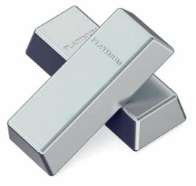
14 pieces of \(\frac{1}{4}\) ounce can be cut from the nugget
which weighs 3\(\frac{1}{2}\) ounces
Explanation:
Given a platinum nugget weighs 3\(\frac{1}{2}\) ounces,
number of pieces of \(\frac{1}{4}\) ounce pieces can be
cut from the nugget are 3\(\frac{1}{2}\) ÷ \(\frac{1}{4}\) =
First we write mixed fraction into fraction as 3\(\frac{1}{2}\) =
(3 X 2 + 1 by 2) = \(\frac{7}{2}\), Now
\(\frac{7}{2}\) ÷ \(\frac{1}{4}\) now reciprocal of
the fraction \(\frac{1}{4}\) as \(\frac{4}{1}\) and
multiply as \(\frac{7}{2}\) X \(\frac{4}{1}\) =
\(\frac{7 X 4}{2 X 1}\) = \(\frac{28}{2}\),we can further simplify
as both goes in 2, 2 X 14 = 28 and 2 X 1 = 2, (14,1)= 14, therefore
14 pieces of \(\frac{1}{4}\) ounce can be cut from the nugget
which weighs 3\(\frac{1}{2}\) ounces.
ORDER OF OPERATIONS
Evaluate the expression. Write the answer in simplest form.
Question 33.

 = 3
= 3
Explanation:
Given expression as (3 ÷ 1\(\frac{1}{5}\))+ \(\frac{1}{2}\)
First we write mixed fraction into fraction as 1\(\frac{1}{5}\) =
(1 X 5 + 1 by 5) = \(\frac{6}{5}\) Now we calculate first
3 ÷ \(\frac{6}{5}\) now reciprocal of
the fraction \(\frac{6}{5}\) as \(\frac{5}{6}\) and
multiply as 3 X \(\frac{5}{6}\) =
\(\frac{3 X 5}{1 X 6}\) = \(\frac{15}{6}\),as both goes in 3,
3 X 5 = 15 and 3 X 2 = 6, (5,2)= \(\frac{5}{2}\), now we add with
\(\frac{1}{2}\), \(\frac{5}{2}\) + \(\frac{1}{2}\) as
both have same denominators we add numerators as (5 + 1) and write as
\(\frac{6}{2}\) now as both goes in 2, 2 X 3 = 6, 2 X 1 = 2, (3,1) = 3,
therefore (3 ÷ 1\(\frac{1}{5}\))+ \(\frac{1}{2}\) = 3.
Question 34.

 = \(\frac{5}{3}\) = 1\(\frac{2}{3}\)
= \(\frac{5}{3}\) = 1\(\frac{2}{3}\)
Given expression as (4\(\frac{2}{3}\) – 1\(\frac{1}{3}\)) ÷ 2
First we write mixed fractions into fractions as 4\(\frac{2}{3}\) =
(4 X 3 + 2 by 3) = \(\frac{14}{3}\) and 1\(\frac{1}{3}\) =
(1 X 3 + 1 by 3) = \(\frac{4}{3}\), Now first we calculate
\(\frac{14}{3}\) – \(\frac{4}{3}\) as denominators are same
numerators become (14 – 4 ) = 10, we get \(\frac{10}{3}\)
now \(\frac{10}{3}\) ÷ 2 we write 2
as reciprocal and multiply \(\frac{10}{3}\) X \(\frac{1}{2}\) =
\(\frac{10 X 1}{3 X 2}\) = \(\frac{10}{6}\),
we can further simplify as both goes in 2, 2 X 5 = 10 and 2 X 3 = 6,
(5,3)=\(\frac{5}{3}\) as numerator is greater
we write as (1 X 3 + 2 by 3) = 1\(\frac{2}{3}\), therefore
(4\(\frac{2}{3}\) – 1\(\frac{1}{3}\)) ÷ 2 = \(\frac{5}{3}\) or 1\(\frac{2}{3}\).
Question 35.

 = 3
= 3
Explanation
Given expression as \(\frac{2}{5}\) + (2\(\frac{1}{6}\) ÷ \(\frac{1}{6}\)) First we write mixed fraction into fraction as 2\(\frac{1}{6}\) =
(2 X 6 + 1 by 6) = \(\frac{13}{6}\),Now first we calculate
\(\frac{13}{6}\) ÷ \(\frac{5}{6}\) we write \(\frac{5}{6}\)
as reciprocal and multiply \(\frac{13}{6}\) X \(\frac{6}{5}\) =
\(\frac{13 X 6}{6 X 5}\) = \(\frac{78}{30}\),
we can further simplify as both goes in 6, 6 X 13 = 78 and 6 X 5 = 30,
(13,5)=\(\frac{13}{5}\), Now we add as
\(\frac{2}{5}\) + \(\frac{13}{5}\) as both have same denominators we add numerators and write as \(\frac{15}{5}\), now as both goes in 5,
5 X 3= 15, 5 X 1 = 5, (3, 1) = 3, therefore \(\frac{2}{5}\) +
(2\(\frac{1}{6}\) ÷ \(\frac{1}{6}\)) = 3.
Question 36.

 = \(\frac{4}{3}\) or 1\(\frac{1}{3}\)
= \(\frac{4}{3}\) or 1\(\frac{1}{3}\)
Explanation:
Given expression as (5\(\frac{5}{6}\) ÷ 3\(\frac{3}{4}\)) – \(\frac{2}{9}\),First we write mixed fractions into fractions as 5\(\frac{5}{6}\) =
(5 X 6 + 5 by 6) = \(\frac{35}{6}\) and 3\(\frac{3}{4}\)=
(3 X 4 + 3 by 4) = \(\frac{15}{4}\). Now first we calculate
\(\frac{35}{6}\) ÷ \(\frac{15}{4}\) we write \(\frac{15}{4}\)
as reciprocal and multiply \(\frac{35}{6}\) X \(\frac{4}{15}\) =
\(\frac{35 X 4}{6 X 15}\) = \(\frac{140}{90}\),
we can further simplify as both goes in 10, 10 X 14 = 140 and 10 X 9 = 90,
(14,9)=\(\frac{14}{9}\), Now we subtract as \(\frac{14}{9}\) – \(\frac{2}{9}\) as both have same denominators are same we subtract numerators and write as
\(\frac{12}{9}\) now as both goes in 3,
3 X 4= 12, 3 X 3 = 9, (4, 3) = \(\frac{4}{3}\) as numerator is greater
we write as (1 X 3 + 1 by 3), Therefore (5\(\frac{5}{6}\) ÷ 3\(\frac{3}{4}\)) – \(\frac{2}{9}\) = \(\frac{4}{3}\) or 1\(\frac{1}{3}\).
Question 37.

 = \(\frac{165}{26}\) or 6\(\frac{9}{26}\)
= \(\frac{165}{26}\) or 6\(\frac{9}{26}\)
Explanation:
Given expression as 6\(\frac{1}{2}\) – (\(\frac{7}{8}\) ÷ 5\(\frac{11}{16}\)), First we write mixed fraction into fraction as 5\(\frac{11}{16}\) =
(5 X 16 + 11 by 16) = \(\frac{91}{16}\), Now first we calculate
\(\frac{7}{8}\) ÷ \(\frac{91}{16}\), we write \(\frac{91}{16}\)
as reciprocal and multiply \(\frac{7}{8}\) X \(\frac{16}{91}\) =
\(\frac{7 X 16}{8 X 91}\) = \(\frac{112}{728}\),
we can further simplify as both goes in 28, 28 X 4 = 112 and 28 X 26 = 728,
(4,26)=\(\frac{4}{26}\), We write mixed fraction into fraction of 6\(\frac{1}{2}\) as (6 X 2 + 1 by 2) = \(\frac{13}{2}\) Now we subtract as \(\frac{13}{2}\) – \(\frac{4}{26}\) as both should have same denominator we multiply numerator and denominator by 13 for \(\frac{13}{2}\) X \(\frac{13}{13}\) =
\(\frac{13 X 13}{2 X 13}\) = \(\frac{169}{26}\) now we subtract as
\(\frac{169}{26}\) – \(\frac{4}{26}\)as denominators are same we
subtract numerators (169 – 4 ) and write as \(\frac{165}{26}\),
as numerator is greater we write as (6 X 26 + 9 by 26) = 6\(\frac{9}{26}\).
Therefore 6\(\frac{1}{2}\) – (\(\frac{7}{8}\) ÷ 5\(\frac{11}{16}\)) =
\(\frac{165}{26}\) or 6\(\frac{9}{26}\).
Question 38.

 = \(\frac{11}{10}\) or 1\(\frac{1}{10}\)
= \(\frac{11}{10}\) or 1\(\frac{1}{10}\)
Explanation:
Given expression as 9\(\frac{1}{6}\) ÷ (5 + 3\(\frac{1}{3}\)),
First we write mixed fraction into fraction for 3\(\frac{1}{3}\) as
(3 X 3 + 1 by 3) = \(\frac{10}{3}\), Now first we calculate
5 + \(\frac{10}{3}\) as (5 X 3 +10 by 3) = \(\frac{25}{3}\),
We write mixed fraction into fraction of 9\(\frac{1}{6}\)
as (9 X 6 + 1 by 6) = \(\frac{55}{6}\) now we divide with \(\frac{25}{3}\),
now we write as reciprocal and multiply \(\frac{55}{6}\) X \(\frac{3}{25}\) =
\(\frac{55 X 3}{6 X 25}\) = \(\frac{165}{150}\),
we can further simplify as both goes in 15, 15 X 11 = 165 and 15 X 10 = 150,
(11,10)=\(\frac{11}{10}\), as numerator is greater we write as
(1 X 10 + 1 by 10) = 1\(\frac{1}{10}\). Therefore 9\(\frac{1}{6}\) ÷
(5 + 3\(\frac{1}{3}\)) = \(\frac{11}{10}\) or 1\(\frac{1}{
10}\).
Question 39.

 = \(\frac{66}{5}\) or 13\(\frac{1}{5}\)
= \(\frac{66}{5}\) or 13\(\frac{1}{5}\)
Given expression as 3\(\frac{3}{5}\) + (4\(\frac{4}{15}\) ÷
\(\frac{4}{9}\)), First we write mixed fraction into fraction
for 4\(\frac{4}{15}\) as
(4 X 15 + 4 by 15) = \(\frac{64}{15}\), Now first we calculate
\(\frac{64}{15}\) ÷ \(\frac{4}{9}\)now we write as reciprocal
and multiply \(\frac{64}{15}\) X \(\frac{9}{4}\) =
\(\frac{64 X 9}{15 X 4}\) = \(\frac{576}{60}\),
we can further simplify as both goes in 12, 12 X 48 = 576 and 12 X 5 = 60,
(48, 5)=\(\frac{48}{5}\), we write mixed fraction into fraction for
3\(\frac{3}{5}\) as (3 X 5 + 3 by 5) = \(\frac{18}{5}\)
Now \(\frac{18}{5}\) + \(\frac{48}{5}\) as both have
same denominators we add numerators and write as \(\frac{66}{5}\)
as numerator is greater we write as (13 X 5 + 1 by 5) = 13\(\frac{1}{5}\).
Therefore 3\(\frac{3}{5}\) + (4\(\frac{4}{15}\) ÷ \(\frac{4}{9}\)) =
\(\frac{66}{5}\) or 13\(\frac{1}{5}\).
Question 40.

 = \(\frac{7}{54}\)
= \(\frac{7}{54}\)
Given expression as (\(\frac{3}{5}\) X \(\frac{7}{12}\)) ÷
2\(\frac{7}{10}\), First we multiply \(\frac{3}{5}\) X
\(\frac{7}{12}\) = \(\frac{3 X 7}{5 X 12}\) = \(\frac{21}{60}\),
we can further simplify as both goes in 3, 3 X 7 = 21 and 3 X 20 = 60,
(7, 20)=\(\frac{7}{20}\), Now we have \(\frac{7}{20}\) ÷ 2\(\frac{7}{10}\), we write mixed fraction into fraction for 2\(\frac{7}{10}\) as
(2 X 10 + 7 by 10) = \(\frac{27}{10}\) now we write reciprocal
and multiply \(\frac{7}{20}\) X \(\frac{10}{27}\) =
\(\frac{7 X 10}{20 X 27}\) = \(\frac{70}{540}\) as both goes in 10,
10 X 7 = 70 and 10 X 54 = 540, (7,54) = \(\frac{7}{54}\), Therefore
(\(\frac{3}{5}\) X \(\frac{7}{12}\)) ÷ 2\(\frac{7}{10}\) = \(\frac{7}{54}\).
Question 41.

 = \(\frac{10}{3}\) or 3\(\frac{1}{3}\)
= \(\frac{10}{3}\) or 3\(\frac{1}{3}\)
Explanation:
Given expression as (4\(\frac{3}{8}\) ÷ \(\frac{3}{4}\)) X \(\frac{4}{7}\), First we write mixed fraction into fraction for 4\(\frac{3}{8}\) as
(4 X 8 + 3 by 8) = \(\frac{35}{8}\), now we divide with \(\frac{3}{4}\),
now we write as reciprocal and multiply \(\frac{35}{8}\) X \(\frac{4}{3}\) =
\(\frac{35 X 4}{8 X 3}\) = \(\frac{140}{24}\),
we can further simplify as both goes in 4, 4 X 35 = 140 and 4 X 6 = 24,
(35,6)=\(\frac{35}{6}\), now we multiply with \(\frac{35}{6}\) X \(\frac{4}{7}\) = \(\frac{35 X 4}{6 X 7}\) = \(\frac{140}{42}\),
as both goes in 14, 14 X 10 = 140, 14 X 3 = 42, (10, 3) = \(\frac{10}{3}\),
as numerator is greater we write (3 X 3 + 1 by 3) = 3\(\frac{1}{3}\),
therefore (4\(\frac{3}{8}\) ÷ \(\frac{3}{4}\)) X \(\frac{4}{7}\) =
\(\frac{10}{3}\) or 3\(\frac{1}{3}\).
Question 42.

 = \(\frac{25}{2}\) = 12\(\frac{1}{2}\)
= \(\frac{25}{2}\) = 12\(\frac{1}{2}\)
Explanation:
Given expression as (1\(\frac{9}{11}\) X 4\(\frac{7}{12}\)) ÷ \(\frac{2}{3}\), First we write mixed fraction into fraction for 1\(\frac{9}{11}\) as
(1 X 11 + 9 by 11) = \(\frac{20}{11}\) and 4\(\frac{7}{12}\) as
(4 X 12 + 7 by 12) = \(\frac{55}{12}\) now we calculate first
\(\frac{20}{11}\) X \(\frac{55}{12}\) = \(\frac{20 X 55}{11 X 12}\) =
\(\frac{1100}{132}\) we further simply as both goes in 44,
44 X 25 = 1100, 44 X 3 = 132, (25, 3) = \(\frac{25}{3}\),
Now we calculate as \(\frac{25}{3}\) ÷ \(\frac{2}{3}\)
now we write as reciprocal and multiply \(\frac{25}{3}\) X \(\frac{3}{2}\) =
\(\frac{25 X 3}{3 X 2}\) = \(\frac{75}{6}\), as both goes in 3,
3 X 25 = 75, 3 X 2 = 6, (25, 2) = \(\frac{25}{2}\)
as numerator is greater we write (12 X 2 + 1 by 2) = 12\(\frac{1}{2}\),
therefore (1\(\frac{9}{11}\) X 4\(\frac{7}{12}\)) ÷ \(\frac{2}{3}\) =
\(\frac{25}{2}\) = 12\(\frac{1}{2}\).
Question 43.

 = \(\frac{7}{108}\)
= \(\frac{7}{108}\)
Explanation:
Given expression as 3\(\frac{4}{15}\) ÷ (8 X 6\(\frac{3}{10}\)),
First we write mixed fraction into fraction for 6\(\frac{3}{10}\) as
(6 X 10 + 3 by 10) = \(\frac{63}{10}\) now we calculate first
8 X \(\frac{63}{10}\) = \(\frac{8 X 63}{10}\) =
\(\frac{504}{10}\) we further simply as both goes in 2,
2 X 252 = 504, 2 X 5 = 10, (252, 5) = \(\frac{252}{5}\),
Now 3\(\frac{4}{15}\) = ( 3 X 15 + 4 by 15) = \(\frac{49}{15}\)
Now we calculate as \(\frac{49}{15}\) ÷ \(\frac{252}{5}\)
now we write as reciprocal and multiply \(\frac{49}{15}\) X \(\frac{5}{252}\) =
\(\frac{49 X 5}{15 X 252}\) = \(\frac{245}{3780}\), as both goes in 35,
35 X 7 = 245, 35 X 108 = 3780, (7, 108) = \(\frac{7}{108}\).
Therefore 3\(\frac{4}{15}\) ÷ (8 X 6\(\frac{3}{10}\)) = \(\frac{7}{108}\).
Question 44.

 = \(\frac{11}{35}\)
= \(\frac{11}{35}\)
Explanation:
Given expression as 2\(\frac{5}{14}\) ÷ (2\(\frac{5}{8}\) X
1\(\frac{3}{7}\)),First we write mixed fraction into fraction
for 2\(\frac{5}{8}\) as
(2 X 8 + 5 by 8) = \(\frac{21}{8}\) and 1\(\frac{3}{7}\) =
(1 X 7 + 3 by 7) = \(\frac{10}{7}\) now we calculate first
\(\frac{21}{8}\) X \(\frac{10}{7}\) = \(\frac{21 X 10}{8 X 7}\) =
\(\frac{210}{56}\) we further simply as both goes in 2,
2 X 105 = 210, 2 X 28 = 56, (105, 28) = \(\frac{105}{28}\),
we write mixed fraction as fraction 2\(\frac{5}{14}\) as
(2 X 14 + 5 by 14) = \(\frac{33}{14}\),Now we calculate as
\(\frac{33}{14}\) ÷ \(\frac{105}{28}\), now we write as reciprocal and multiply \(\frac{33}{14}\) X \(\frac{28}{105}\) =
\(\frac{33 X 28}{14 X 105}\) = \(\frac{462}{1470}\), as both goes in 42,
42 X 11 = 462, 42 X 35 = 1470, (11, 35) = \(\frac{11}{35}\).
Therefore 2\(\frac{5}{14}\) ÷ (2\(\frac{5}{8}\) X 1\(\frac{3}{7}\)) =
\(\frac{11}{35}\).
Question 45.
LOGIC
Your friend uses the model shown to state that  . Is your friend correct? Justify your answer using the model.
. Is your friend correct? Justify your answer using the model.

No, friend is incorrect,
Explanation :
Given expression as 2\(\frac{1}{2}\) ÷ 1\(\frac{1}{6}\),
First we write mixed fraction into fraction for 2\(\frac{1}{2}\) as
(2 X 2 + 1 by 2) = \(\frac{5}{2}\) and 1\(\frac{1}{6}\) =
(1 X 6 + 1 by 6) = \(\frac{7}{6}\) now we wrtie reciprocal and multiply
\(\frac{5}{2}\) X \(\frac{6}{7}\) = \(\frac{5 X 6}{2 X 7}\) =
\(\frac{30}{14}\) further we can simplify as both goes in 2, 2 X 15 = 30,
2 x 7 = 14, (15, 7), \(\frac{30}{14}\) = \(\frac{15}{7}\) as numerator
is greator we write as (2 X 7 + 1 by 7) = 2\(\frac{1}{7}\) and
friend says it is 2\(\frac{1}{6}\) which is incorrect and model is showing
2, 1\(\frac{1}{6}\) and one piece is remaining but we
are getting 2\(\frac{1}{7}\) which is not matching, So freind is incorrect.
Question 46.
MODELING REAL LIFE
A bag contains 42 cups of dog food. Your dog eats 2\(\frac{1}{3}\) cups of dog food each day. Is there enough food to last 3 weeks? Explain.

No, there is not enough food to last for 3 weeks,
Explanation:
Given dog eats 2\(\frac{1}{3}\) cups of dog food each day,
now for 3 weeks means 3 X 7 X 2\(\frac{1}{3}\) , We write
mixed fraction 2\(\frac{1}{3}\) as ( 2 X 3 + 1 by 3) =\(\frac{7}{3}\) =
3 X 7 X \(\frac{7}{3}\) = \(\frac{3 X 7 X 7}{3}\) = \(\frac{147}{3}\),
as both goes in 3, 3 X 49, 3 X 1 = 3,(49, 1) = \(\frac{147}{3}\) = 49.
We need 49 cups of dog food and bag contains 42 cups so shortage of 7 cups,
Therefore we do not have enough food to last for 3 weeks.
Question 47.
DIG DEEPER!
You have 12 cups of granola and 8\(\frac{1}{2}\) cups of peanuts to make trail mix. What is the greatest number of full batches of trail mix you can make? Explain how you found your answer.
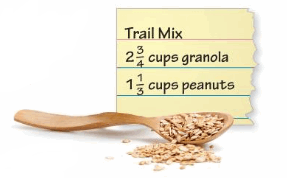
4 is the greatest number of full batches of trail mix I can make,
Explanation:
Given I have 12 cups of granola and 8\(\frac{1}{2}\) cups of
peanuts to make trail mix, trail mix has 2\(\frac{3}{4}\) cups of granola
and 1\(\frac{1}{3}\) cups of peanuts,
First granola mix 12 ÷ 2\(\frac{3}{4}\), We write mixed fraction
as fraction as (2 X 4 + 3 by 4) = \(\frac{11}{4}\) now we write reciprocal
and multiply as 12 X \(\frac{4}{11}\) = \(\frac{12 X 4}{11}\) =
\(\frac{48}{11}\) as numerator is greater we write as
( 4 X 11 + 4 by 11) = 4\(\frac{4}{11}\), Now peanuts mix
8\(\frac{1}{2}\) ÷ 1\(\frac{1}{3}\),We write mixed fractions
as fractions as (8 X 2 + 1 by 2) = \(\frac{17}{2}\) and 1\(\frac{1}{3}\) =
(1 X 3 + 1 by 3) = \(\frac{4}{3}\), Now we write reciprocal and multiply
\(\frac{17}{2}\) X \(\frac{3}{4}\) = \(\frac{17 X 3}{2 X 4}\) =
\(\frac{51}{8}\), as numerator is greater we write as (6 X 8 + 3 by 8)=
6\(\frac{3}{8}\). Therefore I can make 4 full batches.
Question 48.
REASONING
At a track and field meet, the longest shot-put throw by a boy is 25 feet 8 inches. The longest shot-put throw by a girl is 19 feet 3 inches. How many times greater is the longest shot-put throw by the boy than by the girl?
1.33 times greater is the longest shot-put throw by the boy than by the girl,
Explanation:
Given at a track and field meet, the longest shot-put
throw by a boy is 25 feet 8 inches. The longest shot-put throw
by a girl is 19 feet 3 inches.
As we know 1 feet is equal to 12 inches we convert first into inches as
Boy throw = 25 X 12 + 8 = 308 inches
Girl throw = 19 X 12 + 3 = 228 + 3 = 231 inches.
Now boy record to girl record is \(\frac{308}{231}\) = 1.3333,
Therefore 1.33 times greater is the longest shot-put throw by
the boy than by the girl.
Lesson 2.4 Adding and Subtracting Decimals
EXPLORATION 1
Using Number Lines
Work with a partner. Use each number line to find A + B and B – A. Explain how you know you are correct.

a. A + B = 1.1 and B – A = 0.5
b. A + B = 2.24 and B – A = 0.02
c. A + B = 7.6 and B – A = 0.8
d. A + B = 5.1 and B – A = 0.8

a. A + B = 1.1 and B- A = 0.5
Explanation:
a. Given A is at 0.3 and B is at 0.8,
now A + B = 0.3 + 0.8 = 1.1,
B – A = 0.8 – 0.3 = 0.5
b. Given A is at 1.11and B is at 1.13,
A + B = 1.11 + 1.13 = 2.24
B – A = 1.13 – 1.11 = 0.02
c. Given A is at 3.4 and b is at 4.2
A + B = 3.4 + 4.2 = 7.6
A – B = 4.2 – 3.4 = 0.8
d. Given A is at 2.15 and b is at 2.95
A + B = 2.15 + 2.95 = 5.1
A – B = 2.95 – 2.15 = 0.8
Explained in the picture above.
EXPLORATION 2
Work with a partner. Explain how you can use the place value chart below to add and subtract decimals beyond hundredths. Then find each sum or difference.
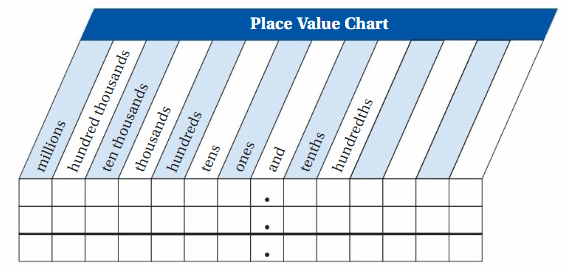

a. 16.05 + 2.945
b. 7.421 + 8.058
c. 38.72 – 8.618
d. 64.968 – 51.167
e. 225.1 + 85.0465
f. 1107.20592 – 102.3056
a. 16.05 + 2.945 = 18.995
b. 7.421 + 8.058 = 15.479
c. 38.72 – 8.618 = 30.102
d. 64.968 – 51.167 = 13.801
e. 225.1 + 85.0465 = 310.1465
f. 1107.20592 – 102.3056 = 1004.90032
Explanation:
a. 16.05 + 2.945 = 18.995
Here we have thousandths value as 0.000 + 0.005 =0.005
and wrote as below shown at thousandths place,

b. 7.421 + 8.058 = 15.479
Here we have thousandths value as 0.001 + 0.0008 = 0.0009 and
wrote as below shown at thousandths place, 0.0009,

c. 38.72 – 8.618 = 30.102
Here we have thousandths s value as 0.000 here we take 1
from tenths place and we get 10 at thousandths place and
subtract 0.008 we get 0.002 at thousandths place
and wrote as below shown at thousandths place,
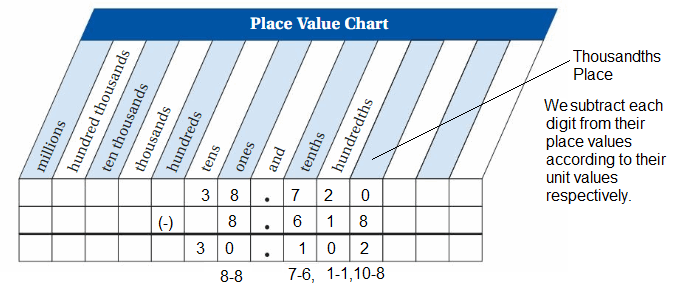
d. 64.968 – 51.167 = 13.801
Here we have thousandths s value as 0.008 and
subtract 0.007 we get 0.001 at thousandths place
and wrote as below shown at thousandths place,
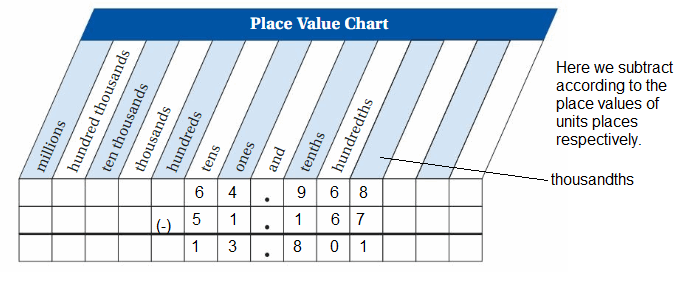 e. 225.1 + 85.0465 = 310.1465
e. 225.1 + 85.0465 = 310.1465
Here we have thousandths value as 0.000 + 0.005 =0.005
and wrote as below shown at thousandths place,
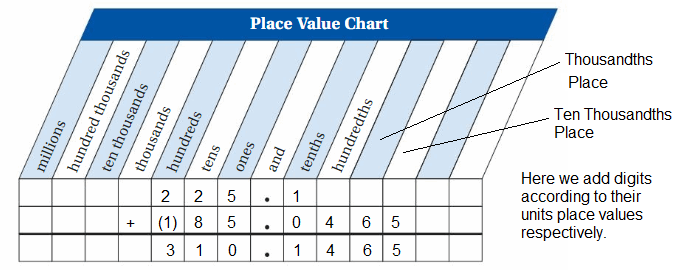
f. 1107.20592 – 102.3056 = 1004.90032
Here we have ten thousandths value as 0.0002 – 0.0000 =0.00002
and thousandths values as 0.0009 – 0.0006 = 0.0003,
wrote as below shown at thousandths places,
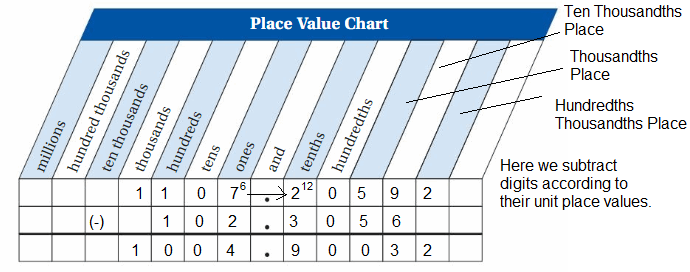
2.4 Lesson
Key Idea
Adding and Subtracting Decimals
To add or subtract decimals, write the numbers vertically and line up the decimal points. Then bring down the decimal point and add or subtract as you would with whole numbers.
Try It
Add.
Question 1.
4.206 + 10.85
4.206
(+) 10.850
1
15.056
Explanation:
4.206
(+) 10.850
1
15.056
here we add according to their unit place values respectively.
Question 2.
15.5 + 8.229
15.500
(+) 8.229
1
23.729
Explanation:
15.500
(+) 8.229
1
23.729
here we add according to their unit place values respectively.
Question 3.
78.41 + 90.99
78.41
(+)90.99
1 11
169.40
Explanation:
78.41
(+)90.99
1 11
169.40
here we add according to their unit place values respectively.
Subtract
Question 4.
6.34 – 5.33
6.34
(-)5.33
1.01
Explanation:
6.34
(-)5.33
1.01
here we subtract according to their unit place values respectively.
Question 5.
27.9 – 0.905
6,18,9,10
27.900
(-) 0.905
26.995
Explanation:
6,18,9,10
27.900
(-) 0.905
26.995
here we subtract according to their unit place values respectively.
Question 6.
18.626 – 13.88
7,15,12
18.626
(-)13.880
4.746
Explanation:
7,15,12
18.626
(-)13.880
4.746
here we subtract according to their unit place values respectively.
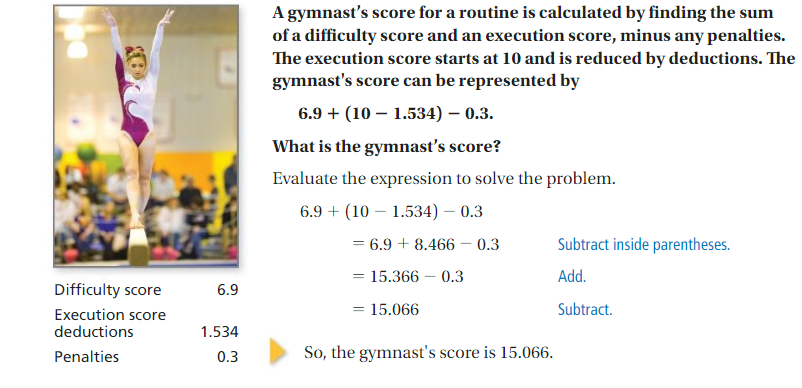
Try It
Question 7.
WHAT IF?
The execution score is adjusted and has 1.467 in deductions. What is the gymnast’s score?
The gymnast’s score is 15.133
Explanation:
Evaluating the expression to solve the problem,
= 6.9 + (10 – 1.467) -0.3,
= 6.9 + (8.533) – 0.3
= 15.433 – 0.3 = 15.133,
therefore the gymnast’s score is 15.133.
Self-Assessment for Concepts & Skills
Solve each exercise. Then rate your understanding of the success criteria in your journal.
ADDING AND SUBTRACTING DECIMALS
Evaluate the expression.
Question 8.
23.557 – 17.601 + 5.216
23.557 – 17.601 + 5.216 = 11.172
Explanation:
1,12,15
2 3 . 5 5 7
(-) 1 7. 6 0 1
5. 9 5 6
Now add 5.956 with 5.216
5.956
(+) 5.216
1 1
11.172
Therefore we get 23.557 – 17.601 + 5.216 = 11.172.
Question 9.
16.5263 + 12.404 – 11.73
16.5263 + 12.404 – 11.73 = 17.2003
Explanation:
16.5263
(+)12.4040
1
28.9303
Now we subtract 11.73 from 28.9303
28.9303
(-)11.7300
17.2003
Therefore we get 16.5263 + 12.404 – 11.73 = 17.2003.
Question 10.
CHOOSE TOOLS
Why is it helpful to estimate the answer before adding or subtracting decimals?
Estimation is useful when we don’t need an exact answer.
It also lets you check to be sure an exact answer is close
to being correct. Estimating with decimals works
just the same as estimating with whole numbers.
When rounding the values to be added, subtracted,
multiplied, or divided, it helps to round to numbers
that are easy to work with.
Question 11.
WRITING
When adding or subtracting decimals, how can you be sure to add or subtract only digits that have the same place value?
When adding and subtracting decimals we use few steps as below:
1) We line up the place values of the numbers by lining up the decimals.
2) We Add in filler zeros if needed.
3) Adding or Subtracting the numbers in the same place value positions.
Examples
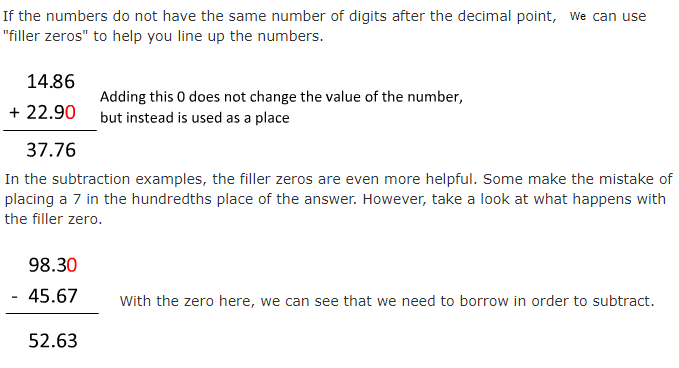
Question 12.
OPEN-ENDED
Describe two real-life examples of when you would need to add and subtract decimals.
We deal with decimal addition and subtraction in everyday
life while dealing with:
Money
Measurements (Length, Mass, Capacity)
Temperature
Decimals can be added or subtracted in the same way as we add or subtract whole numbers.
Example:
a. Kate had $ 368.29. Her mother gave her $ 253.46 and her
sister gave her $ 57.39. How much money does she has now?
Answer:
Money Kate had = $ 368.29
Money gave her mother = $ 253.46
Money gave her sister = + $ 57.39
Total money she has now = $ 679.14
b. Kylie had 25 m of ribbon. She uses 8 m and 13 cm to
decorate a skirt. How much ribbon is remaining with Kylie?
Answer:
Length of ribbon Kylie had = 25 m = 25.00
Length of ribbon used by Kylie = 8 m 13 cm = 8.13
The remaining length of ribbon = 25.00 – 8.13 = 16.87
Question 13.
STRUCTURE
You add 3.841 + 29.999 as shown. Describe a method for adding the numbers using mental math. Which method do you prefer? Explain.

I prefer the way as we add or subtract whole numbers as shown above
than the mental math method.
Explanation:
Rounding is a mental math strategy for adding and subtracting numbers.
When you round, you will likely need to adjust your answer to get
the exact answer.
For Example:
23 + 58 can be rounded to 20 + 60 = 80.
23 is 3 more than 20 and 58 is 2 less than 60.(3 -2)
So adjust answer by adding 1. (80 + 1), Answer is 81.
Example:
76 – 40 can be rounded to 80 – 40 = 40.
76 is 4 less than 80. So adjust answer by subtracting 4.
(40- 4) , Answer is 36.
Question 14.
OPEN-ENDED
Write three decimals that have a sum of 27.905.
The three decimals are 15.812, 4.670, 7.423 to have a sum of 27.905
Explanation:
We take any decimals randomly as 15.812, 4.670, 7.423,
we have sum of 27.905 as
15.812
4.670
(+)7.423
11 1
27.905
Therefore, the three decimals are 15.812, 4.670, 7.423
to have a sum of 27.905.
Self-Assessment for Problem Solving
Solve each exercise. Then rate your understanding of the success criteria in your journal.
Question 15.
A field hockey field is rectangular. Its width is 54.88 meters, and its perimeter is 289.76 meters. Find the length of the field.
The length of hockey field is 90 meters
Explanation:
Given a field hockey field is rectangular. Its width is 54.88 meters
and its perimeter is 289.76 meters.
We know perimeter of rectangle is 2( length + width),
So, 289.76 = 2(length + 54.88)
length + 54.88 = \(\frac{289.76}{2}\),
length + 54.88 = 144.88,
length = 144.88 – 54.88 = 90 meters,
Therefore the length of hockey field is 90 meters.
Question 16.
DIG DEEPER!
You mix 23.385 grams of sugar and 12.873 grams of baking soda
in a glass container for an experiment. You place the container on a
scale to find that the total mass is 104.2 grams.
What is the mass of the container?
The mass of the container is 67.942 grams
Explanation:
Given I mix 23.385 grams of sugar and 12.873 grams of baking soda
in a glass container for an experiment. You place the container on a
scale to find that the total mass is 104.2 grams. So the mass of the container
is 104.2 – (23.385 + 12.873) =104.2 – 36.258 = 67.942 grams.
Therefore the mass of the container is 67.942 grams.
Question 17.
One molecule of water is made of two hydrogen atoms and one oxygen atom. The masses (in atomic mass units) for one atom of hydrogen and oxygen are shown. What is the mass (in atomic mass units) of one molecule of water?
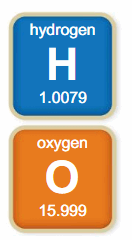
The mass of one molecule of water is 18.0148 amu
(amu = atomic mass units)
Explanation:
Given One molecule of water is made of two hydrogen
atomsand one oxygen atom. The mass of one atom of
hydrogen is 1.0079 amu and oxygen is 15.999 amu.
So the mass of one molecule of water is (2 X 1.0079) + 15.999,
= 2.0158 + 15.999 = 18.0148 amu, therefore the mass of
one molecule of water is 18.0148 amu.
Adding and Subtracting Decimals Homework & Practice 2.4
Review & Refresh
Divide. Write the answer in simplest form.
Question 1.

 = \(\frac{13}{3}\) = 4\(\frac{1}{3}\)
= \(\frac{13}{3}\) = 4\(\frac{1}{3}\)
Explanation:
Given expressions as 3\(\frac{1}{4}\) ÷ \(\frac{3}{4}\),
First we write mixed fraction into fraction 3\(\frac{1}{4}\) as
(3 X 4 + 1 by 4) = \(\frac{13}{4}\),Now \(\frac{3}{4}\) we
write as reciprocal and multiply \(\frac{4}{3}\) as
\(\frac{13}{4}\) X \(\frac{4}{3}\) = \(\frac{13 X 4}{4 X 3}\) =
\(\frac{52}{12}\) as both goes in 4, 4 X 13 = 52,
4 X 3 = 12, (13, 3) = \(\frac{13}{3}\) as numerator is greater
we write as (4 X 3 + 1 by 3)= 4\(\frac{1}{3}\).
Therefore 3\(\frac{1}{4}\) ÷ \(\frac{3}{4}\) = \(\frac{13}{3}\) = 4\(\frac{1}{3}\).
Question 2.

 = \(\frac{5}{6}\)
= \(\frac{5}{6}\)
Explanation:
Given expressions as 4\(\frac{1}{6}\) ÷ 5
First we write mixed fraction into fraction 4\(\frac{1}{6}\) as
(4 X 6 + 1 by 6) = \(\frac{25}{6}\), Now 5 we
write as reciprocal and multiply \(\frac{1}{5}\) as
\(\frac{25}{6}\) X \(\frac{1}{5}\) = \(\frac{25 X 1}{6 X 5}\) =
\(\frac{25}{30}\) as both goes in 5, 5 X 5 = 25,
5 X 6 = 30, (5, 6) = \(\frac{5}{6}\),
Therefore 4\(\frac{1}{6}\) ÷ 5 = \(\frac{5}{6}\).
Question 3.

 = \(\frac{25}{12}\) = 2\(\frac{1}{12}\)
= \(\frac{25}{12}\) = 2\(\frac{1}{12}\)
Explanation:
Given expressions as 6\(\frac{2}{3}\) ÷ 3\(\frac{1}{5}\),
First we write mixed fractions into fractions 6\(\frac{2}{3}\) as
(6 X 3 + 2 by 3) = \(\frac{20}{3}\) and 3\(\frac{1}{5}\) as
(3 X 5 + 1 by 5) = \(\frac{16}{5}\),Now \(\frac{16}{5}\) we
write as reciprocal and multiply \(\frac{5}{16}\) as
\(\frac{20}{3}\) X \(\frac{5}{16}\) = \(\frac{20 X 5}{3 X 16}\) =
\(\frac{100}{48}\) as both goes in 4, 4 X 25 = 100,
4 X 12 = 48, (25, 12) = \(\frac{25}{12}\) as numerator is greater
we write as (2 X 12 + 1 by 12)= 2\(\frac{1}{12}\).
Therefore 6\(\frac{2}{3}\) ÷ 3\(\frac{1}{5}\) = \(\frac{25}{12}\) = 2\(\frac{1}{12}\).
Find the GCF of the numbers.
Question 4.
16, 28, 40
The GCF of 16, 28, 40 is 4
Explanation:
Factors of 16 are 1, 2, 4, 8, 16
Factors of 28 are 1, 2, 4, 7, 14, 28
Factors of 40 are 1, 2, 4, 5, 8, 10, 20, 40
as 4 is the greatest common number in all the three,
therefore GCF (16, 28, 40) is 4.
Question 5.
39, 54, 63
The GCF of 39, 54, 63 is 3
Explanation:
Factors of 39 are 1, 3, 13 and 39
Factors of 54 are 1, 2, 3, 6, 9, 18, 27 and 54
Factors of 63 are 1, 3, 7, 9, 21 and 63
as 3 is the greatest common number in the three,
therefore GCF (39, 54, 63) is 3.
Question 6.
24, 72, 132
The GCF of 24, 72, 132 is
Explanation:
Factors of 24 are 1, 2, 3, 4, 6, 8, 12 and 24
Factors of 72 are 1, 2, 3, 4, 6, 8, 9, 12, 18, 24, 36 and 72
Factors of 132 are 1, 2, 3, 4, 6, 11, 12, 22, 33, 44, 66 and 132
as 12 is the greatest common number in all the three,
therefore GCF (24, 72, 132) is 12.
Find the value of the power.
Question 7.
112
112 = 1
Explanation:
1 to the power of 12 means we multiply 1 by
12 times as 1 X 1 X 1 X 1 X 1 X 1 X 1 X 1 X 1 X 1 X 1 X 1 = 1.
Question 8.
24
24 = 16
Explanation:
2 to the power of 4 means we multiply 2 by
4 times as 2 X 2 X 2 X 2 = 16.
Question 9.
36
36 = 729
Explanation:
3 to the power of 6 means we multiply 3 by
6 times as 3 X 3 X 3 X 3 X 3 X 3 = 729.
Question 10.
54
54 = 625
Explanation:
5 to the power of 4 means we multiply 5 by
4 times as 5 X 5 X 5 X 5 = 625.
Classify the quadrilateral.
Question 11.
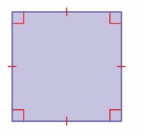
Square
Explanation:
Quadrilaterals can be classified into Parallelograms,
Squares, Rectangles , Trapezoids and Rhombuses.
As given in the picture above it is a square because,
All sides are equal,
Each angle is a right angle,
Opposite sides are equal.
So, it is a square.
Question 12.

Trapezoid
Explanation:
Quadrilaterals can be classified into Parallelograms,
Squares, Rectangles , Trapezoids and Rhombuses.
As given in the picture above it is a trapezoid because,
Opposite sides are parallel.
Adjacent angles add up to 180°.
So, it is a Trapezoid.
Question 13.
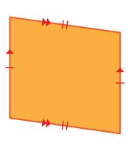
Parallelogram
Explanation:
Quadrilaterals can be classified into Parallelograms,
Squares, Rectangles , Trapezoids and Rhombuses.
As given in the picture above it is a parrelogram because,
Opposite sides are parallel.
Opposites sides are equal.
Opposite angles are equal.
All sides are equal,
So it is a parallelogram.
Concepts, Skills, & Problem Solving
USING TOOLS
Use a place value chart to find the sum or difference. (See Exploration 2, p. 67.)
Question 14.
4.63 + 8.547
4.63 + 8.547 = 13.177
Explanation:
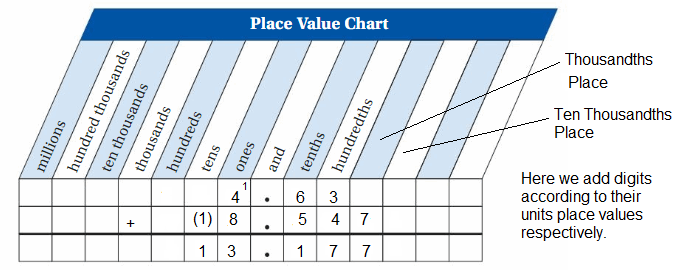
Question 15.
3.6257 – 2.98 = 0.6457
Explanation:

Question 16.
14.065 + 13.8542 = 27.9192
Explanation:

ADDING DECIMALS
Add.
Question 17.
7.82 + 3.209
7.82 + 3.209 = 11.029
Explanation:
1,1
7.820
(+)3.209
11.029
We added digits according to their place values.
Question 18.
3.7 + 2.77
3.7 + 2.77 = 6.47
Explanation
1,
3.70
(+)2.77
6.47
We added digits according to their place values.
Question 19.
12.829 + 10.07
12.829 + 10.07 = 22.899
Explanation:
12.829
(+)10.070
22.899
We added digits according to their place values.
Question 20.
20.35 + 13.748
20.35 + 13.748 = 34.098
Explanation:
1
20.350
(+)13.748
34.098
We added digits according to their place unit values.
Question 21.
11.212 + 7.36
11.212 + 7.36 = 18.572
Explanation:
11.212
(+)07.360
18.572
We added digits according to their place unit values.
Question 22.
14.91 + 2.095
14.91 + 2.095 = 17.005
Explanation:
1,1
14.910
(+)02.095
17.005
We added digits according to their place unit values.
Question 23.
31.994 + 8.006
31.994 + 8.006 = 40
Explanation:
1,1,1,1
31.994
(+)08.006
40.000
We added digits according to their place unit values.
Question 24.
3.946 + 6.052
3.946 + 6.052 = 9.998
Explanation:
3.946
(+)6.052
9.998
We added digits according to their place unit values.
Question 25.
41.226 + 102.774
41.226 + 102.774 = 144
Explanation:
1,1,1,1
41.226
(+)102.774
144.000
We added digits according to their place unit values.
Question 26.
122.781 + 19.228
122.781 + 19.228 = 142.009
Explanation:
1,1,1,
122.781
(+) 19.228
142.009
We added digits according to their place unit values.
Question 27.
17.440 + 12.497
17.440 + 12.497 = 29.937
Explanation:
1,
17.440
(+)12.497
29.937
We added digits according to their place unit values.
Question 28.
15.255 + 19.058
15.255 + 19.058 = 34.313
Explanation:
1, 1,1
15.255
(+)19.058
34.313
We added digits according to their place unit values.
SUBTRACTING DECIMALS
Subtract.
Question 29.
4.58 – 3.12
4.58 – 3.12 = 1.46
Explanation:
4.58
(-)3.12
1.46
We subtract each digit according to their place unit values.
Question 30.
8.629 – 5.309
8.629 – 5.309 = 3.320
Explanation:
8.629
(-)5.309
3.320
We subtract each digit according to their place unit values.
Question 31.
6.98 – 2.614
6.98 – 2.614 = 4.366
Explanation:
7,10
6.980
(-) 2.614
4.366
We subtract each digit according to their place unit values.
Question 32.
15.131 – 11.57
15.131 – 11.57 = 3.561
Explanation:
10,13
15.1 3 1
(-)11.5 7 0
3.5 6 1
We subtract each digit according to their place unit values.
Question 33.
13.5 – 10.856
13.5 – 10.856 = 2.644
Explanation:
15,9,10
13.5 0 0
(-)10.8 5 6
2.6 4 4
We subtract each digit according to their place unit values.
Question 34.
25.82 – 22.936 = 2.884
Explanation:
4,17,11,10
25.820
(-)22.936
2.884
We subtract each digit according to their place unit values.
Question 35.
17.651 – 12.04
17.651 – 12.04 = 5.611
Explanation:
17.651
(-)12.040
05.611
We subtract each digit according to their place unit values.
Question 36.
19.255 – 6.194
19.255 – 6.194 = 13.061
Explanation:
15
19.255
(-)06.194
13.061
We subtract each digit according to their place unit values.
Question 37.
56.217 – 35.8
56.217 – 35.8 = 20.417
Explanation:
12
56.217
(-)35.800
20.417
We subtract each digit according to their place unit values.
Question 38.
62.486 – 18.549
62.486 – 18.549 = 43.937
Explanation:
11, 14, 16
62.486
(-)18.549
43.937
We subtract each digit according to their place unit values.
Question 39.
152.883 – 35.6247
152.883 – 35.6247 = 117.2583
Explanation:
4,12,7,12,10
152.8830
(-) 035.6247
117.2583
We subtract each digit according to their place unit values.
Question 40.
129.343 – 125.0372
129.343 – 125.0372 = 4.3058
Explanation:
12,10
129.3430
(-)125.0372
4.3058
We subtract each digit according to their place unit values.
YOU BE THE TEACHER
Your friend finds the sum or difference. Is your friend correct? Explain your reasoning.
Question 41.

Yes, Friend is correct as the sum is 10.008
Explanatation:
1,1
6.058
+3.950
10.008
Friend aslo got the same value so friend is
correct as 6.058 + 3.950 = 10.008.
Question 42.
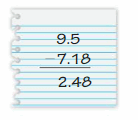
No, Friend is incorrect as the difference is 2.32 ≠ 2.48
Explanation:
4,10
9.50
-7.18
2.32
Friend got different value so incorrect as
9.50 – 7.18 = 2.32 ≠ 2.48.
Question 43.
PROBLEM SOLVING
Vehicles must weigh no more than 10.75 tons to cross a bridge.
A truck weighs 11.638 tons. By how many tons does the truck
exceed the weight limit?
0.888 ton weigh is the truck exceed the weight limit
Explanation:
Given vehicles must weigh no more than 10.75 tons to cross a bridge.
A truck weighs 11.638 tons. So truck weighs more,
we calculate the difference as
15,13
11.638
-10.750
0.888
Therefore by 0.888 ton weighs is the truck exceed the weight limit.
ADDING AND SUBTRACTING DECIMALS
Evaluate the expression.
Question 44.
6.105 + 10.4 + 3.075
6.105 + 10.4 + 3.075 = 19.58
Explanation:
1
6.105
10.400
+3.075
19.580
We add digit according to the place values.
Question 45.
22.6 – 12.286 – 3.542
22.6 – 12.286 – 3.542 = 6.772
Explanation:
First we subtract 12.286 from 22.6 as
5,9,10
22.600
-12.286
10.314
Now we subtract 3.542 from 10.314 as
9,12,11
10.314
-3.542
6.772
Therefore 22.6 – 12.286 – 3.542 = 6.772.
Question 46.
15.35 + 7.604 – 12.954
15.35 + 7.604 – 12.954 = 10
Explanation:
First we add 15.350 + 7.604 as
1
15.350
+7.604
22.954
Now we subtract 12.954 from 22.954 as
22.954
-12.954
10.000
Therefore 15.35 + 7.604 – 12.954 = 10.
Question 47.
16.5 – 13.45 + 7.293
16.5 – 13.45 + 7.293 = 10.343
Explanation:
First we subtract 13.45 from 16.5 as
4,10
16.500
-13.450
03.050
Now we add 3.05 with 7.293 as
1, 1
3.050
+7.293
10.343
Therefore 16.5 – 13.45 + 7.293 = 10.343.
question 48.
25.92 – 18.478 + 8.164
25.92 – 18.478 + 8.164 = 15.606
Explanation:
First we subtract 18.478 from 25.920 as
15, 11,10
25.920
-18.478
7.442
Now we add 7.442 with 8.164 as
1, 1
7.442
+8.164
15.606
Therefore 25.92 – 18.478 + 8.164 = 15.606.
Question 49.
23.45 + 17.75 – 19.618
23.45 + 17.75 – 19.618 = 21.582
Explanation:
First we add 23.45 and 17.75 as
1,1,1
23.45
+17.75
41.20
Now we subtract 19.618 from 41.200 as
3,10,11,9,10
41.200
-19.618
21.582
Therefore 23.45 + 17.75 – 19.618 = 21.582.
Question 50.
14.549 – (8.131 + 3.7024)
14.549 – (8.131 + 3.7024) = 2.7156
Explanation:
First we add (8.131 + 3.7024 ) as
1
8.1310
+3.7024
11.8334
Now we subtract 11.8334 from 14.549 as
3,15, 8,10
14.5490
-11.8334
2.7156
Therefore 14.549 – (8.131 + 3.7024) = 2.7156.
Question 51.
41.563 – (18.65 + 15.9214) + 9.6
41.563 – (18.65 + 15.9214) + 9.16 =16.5916
Explanation:
First we add (8.131 + 3.7024 ) as
1,1
18.6500
+15.9214
34.5714
Now we subtract 34.5714 from 41.563 as
10,14,16,10
41.5630
-34.5714
6.9916
Now we add 6.9916 and 9.6 as
1,1
6.9916
+9.6000
16.5916
Therefore 41.563 – (18.65 + 15.9214) + 9.16 =16.5916.
Question 52.
MODELING REAL LIFE
A day-care center is building a new outdoor play area.
The diagram shows the dimensions in meters. How much
fencing is needed to enclose the play area?
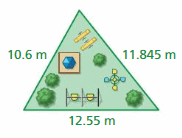
34.995 meters fencing is needed to enclose the play area.
Explanation:
Given sides of the outdoor play area, Fencing needed is
sum of the all three sides, So 10.6 + 11.845 + 12.55,
10.600
11.845
+12.550
1
34. 995
therefore 34.995 meters fencing is needed to enclose the play area.
Question 53.
PROBLEM SOLVING
On a fantasy football team, a tight end scores 11.15 points and a
running back scores 11.75 points. A wide receiver scores 1.05 points
less than the running back. How many total points do the three players score?
33.6 points all the three players score,
Explanation:
Given a tight end scores 11.15 points and a
running back scores 11.75 points. A wide receiver scores 1.05 points
less than the running back. So a wide receiver scores 11.75 – 1.05 point,
11.75
-1.05
10.70
So a wide receiver scores 10.70 points,
Now total points do the three players score are
11.15
11.75
+10.70
1 1
33.60
Therefore 33.6 points all the three players score.
MODELING REAL LIFE
An astronomical unit (AU) is the average distance between Earth and the Sun. In Exercises 54–57, use the table that shows the average distance of each planet in our solar system from the Sun.
Question 54.
How much farther is Jupiter from the Sun than Mercury?
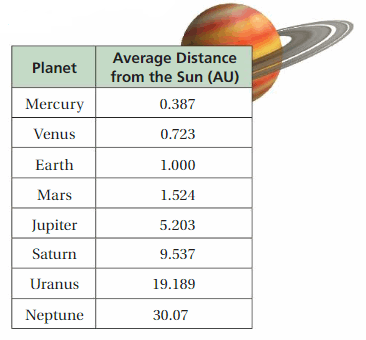
4.816 AU farther is Jupiter from the Sun than Mercury,
Explanation:
Given 5.203 AU is Jupiter average distance from the sun and
mercury is 0.387 AU, Now farther distance Jupiter from
the sun than mercury is
4,11,9,13
5.203
-0.387
4.816
Therefore 4.816 AU farther is Jupiter from the Sun than Mercury.
Question 55.
How much farther is Neptune from the Sun than Mars?
28.546 AU farther is Neptune from the Sun than Mars,
Explanation:
Given 30.07 AU is Neptune average distance from the sun and
mars is 1.524 AU, Now farther distance Neptune from
the sun than mars is
2, 9,10,6,10
30.070
-1.524
28.546
Therefore 28.546 AU farther is Neptune from the Sun than Mars.
Question 56.
Estimate the greatest distance between Earth and Uranus.
20.189 AU is the greatest distance between Earth and Uranus,
Explanation:
Given 1.000 AU is earth average distance from the sun and
Uranus is 19.189 AU, Now the greatest distance between earth
and Uranus, is
1
1.000
+19.189
20.189
Therefore 20.189 AU is the greatest distance between Earth and Uranus.
Question 57.
Estimate the greatest distance between Venus and Saturn.
10.26 AU is the greatest distance between Venus and Saturn,
Explanation:
Given 0.723 AU is the Venus average distance from the sun and
Saturn is 9.537 AU, Now the greatest distance between Venus
and Saturn, is
1, 1
0.723
+9.537
10.260
Therefore 10.26 AU is the greatest distance between Venus and Saturn.
Question 58.
STRUCTURE
When is the sum of two decimals equal to a whole number?
When is the difference of two decimals equal to a whole number? Explain.
The sum of two decimal numbers is a whole number if the
sum of two fractions can be simplified to a whole number.
or this will happen if the fractional parts of the numbers sum to 1.
The difference of two decimal numbers (real numbers
written in decimal digit expansion form) will be an whole number
if and only if their fractional parts are equal and
any whole numbers a & b, a should be always greater or
equal to b then only a-b will be whole number.
Explanation:
When we do adding both numbers the fractional parts of the
numbers so become whole example 1.5 and 3.5 when we add we
get 5 which is a whole number.
In difference example we take 1.17 subtract from 4.17,
here fractional parts are equal 0.17 respectively, we get
the difference as 4.17 -1.17 = 3 which is whole number.
Lesson 2.5 Multiplying Decimals
EXPLORATION 1
Multiplying Decimals
Work with a partner.
a. Write the multiplication expression represented by each area model. Then find the product. Explain how you found your answer.
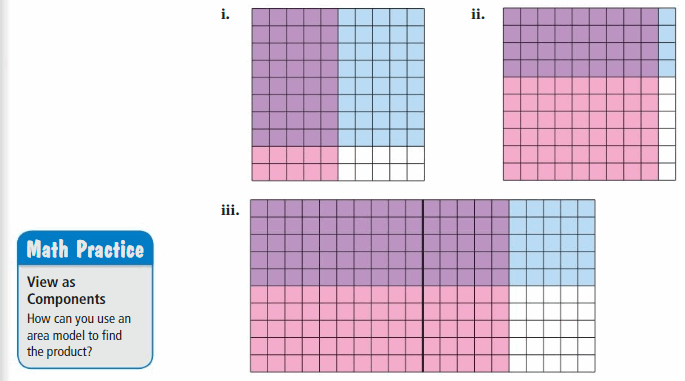

b. How can you find the products in part(a) without using a model? How do you know where to place the decimal points in the answers?
c. Find the product of 0.55 and 0.45. Explain how you found your answer.
a. i. The multiplication expression is \(\frac{5}{10}\) X \(\frac{8}{10}\),
The product is \(\frac{40}{100}\),
ii. The multiplication expression is \(\frac{9}{10}\) X \(\frac{4}{10}\),
The product is \(\frac{36}{100}\),
iii. The multiplication expression of whole part is
\(\frac{10}{10}\) X \(\frac{5}{10}\) and
decimal part is \(\frac{5}{10}\) X \(\frac{5}{10}\)
then the product results is \(\frac{50}{100}\) + \(\frac{25}{100}\),
iv. The multiplication expression of whole part is
\(\frac{10}{10}\) X \(\frac{7}{10}\) and
decimal part is \(\frac{7}{10}\) X \(\frac{7}{10}\)
then the product results is \(\frac{70}{100}\) + \(\frac{49}{100}\),
c. The product of 0.55 and 0.45 is 0.2475,
Explanation:
a. i. By counting the blocks in the area model found
the multiplication expression as \(\frac{5}{10}\) X \(\frac{8}{10}\)
and Step I: We multiply the numerators as 5 X 8 = 40
Step II: We multiply the denominators as 10 X 10 =100
Step III: We write the fraction in the simplest form as
\(\frac{40}{100}\), So \(\frac{5 X 8}{10 X 10}\) = \(\frac{40}{100}\).
If we see the area model the purple color blocks show
40 out of 100 blocks.
ii. By counting the blocks in the area model found
the multiplication expression as \(\frac{9}{10}\) X \(\frac{4}{10}\)
and Step I: We multiply the numerators as 9 X 4 = 36
Step II: We multiply the denominators as 10 X 10 =100
Step III: We write the fraction in the simplest form as
\(\frac{36}{100}\), So \(\frac{10 X 10}{10 X 10}\) = \(\frac{36}{100}\).
If we see the area model the purple color blocks show
36 out of 100 blocks.
iii. By counting the blocks in the area model found
the multiplication expression as \(\frac{10}{10}\) X \(\frac{5}{10}\)
and Step I: We multiply the numerators as 10 X 5 = 50
Step II: We multiply the denominators as 10 X 10 =100
Step III: We write the fraction in the simplest form as
\(\frac{50}{100}\), So \(\frac{10 X 5}{10 X 10}\) = \(\frac{50}{100}\).
Now in decimal part we have \(\frac{5}{10}\) X \(\frac{5}{10}\),
similar to whole part we do multiplication
Step I: We multiply the numerators as 5 X 5 = 25
Step II: We multiply the denominators as 10 X 10 =100
Step III: We write the fraction in the simplest form as
\(\frac{25}{100}\), therefore then the product results is
\(\frac{50}{100}\) + \(\frac{25}{100}\),
iv. By counting the blocks in the area model found
the multiplication expression as \(\frac{10}{10}\) X \(\frac{7}{10}\)
and Step I: We multiply the numerators as 10 X 7 = 70
Step II: We multiply the denominators as 10 X 10 =100
Step III: We write the fraction in the simplest form as
\(\frac{70}{100}\), So \(\frac{10 X 7}{10 X 10}\) = \(\frac{70}{100}\).
Now in decimal part we have \(\frac{7}{10}\) X \(\frac{7}{10}\),
similar to whole part we do multiplication
Step I: We multiply the numerators as 7 X 7 = 49
Step II: We multiply the denominators as 10 X 10 =100
Step III: We write the fraction in the simplest form as
\(\frac{49}{100}\), therefore then the product results is
\(\frac{70}{100}\) + \(\frac{49}{100}\).
b. We use normal multiplication of numbers without any model,
Decimals are a shorthand way to write fractions and
mixed numbers with denominators that are powers of 10, like 10,100,1000,10000,
etc.
If a number has a decimal point, then the first digit to the
right of the decimal point indicates the number of tenths.
For example, the decimal 0.3 is the same as the fraction \(\frac{3}{10}\)
The second digit to the right of the decimal point indicates
the number of hundredths.
For example, the decimal 3.26 is the same as the mixed number
3 \(\frac{26}{100}\) . (Note that the first digit to the left of
the decimal point is the ones digit.)
We can write decimals with many places to the right of the decimal point.
As shown in below example

c. The product of 0.55 and 0.45 is
2
2
0.55————– 2 decimal places
X0.45 ———— 2 decimal places
0275 (first 0.05 X 0.55)
2200 (0.4 X 0.55)
0.2475 ———- 4 decimal places
Therefore the product of 0.55 and 0.45 is 0.2475.
2.5 Lesson
Key Idea
Multiplying Decimals by Whole Numbers
Words
Multiply as you would with whole numbers. Then count the number of decimal places in the decimal factor. The product has the same number of decimal places.

Try It
Multiply. Use estimation to check your answer.
Question 1.
12.3 × 8
12.3 X 8 = 98.4
Is not reasonable 96 ≠ ≈ 98,
Explanation:
2
12.3 1 decimal place
X 8
98.4
Estimate : 12 X 8 = 96,
Reasonable 98.4 ≈ 98,
Is not reasonable 96 ≠ ≈ 98.
Question 2.
5 × 14.51
5 × 14.51 = 72.55
Is not reasonable 75 ≠ ≈ 73.
Explanation:
2,2
14.51 2 decimal places
X 5
72.55
Estimate : 5 X 15 = 75,
Reasonable 72.55 ≈ 73,
Is not reasonable 75 ≠ ≈ 73.
Question 3.
2.3275 X 90
2.3275 X 90 = 209.475
Is not reasonable 180 ≠ ≈ 210.
Explanation:
2,4
2.3275 4 decimal places
X 90
0000000
209475
209.4750
Estimate : 2 X 90 = 180,
Reasonable 209.4750 ≈ 210,
Is not reasonable 180 ≠ ≈ 210.
The rule for multiplying two decimals is similar to the rule for multiplying a decimal by a whole number.
Key Idea
Multiplying Decimals by Decimals
Words
Multiply as you would with whole numbers. Then add the number of decimal places in the factors. The sum is the number of decimal places in the product.

Try It
Multiply. Use estimation to check your answer.
Question 5.
8.1 × 5.6
8.1 × 5.6 = 45.36
Is not reasonable 45 ≠ ≈ 48,
Explanation:
8.1 ——-1 decimal place
X 5.6 —–1 decimal place
486
4050
45.36 —– 2 decimal places
Estimate : 8 X 6 = 48,
Reasonable 45.36 ≈ 45,
Is not reasonable 45 ≠ ≈ 48.
Question 6.
2.7 × 9.04
2.7 × 9.04 = 24.408
Is not reasonable 24 ≠ ≈ 27,
Explanation:
2
9.04 ——-2 decimal places
X 2.7 ——1 decimal places
6328
18080
24.408 —– 3 decimal places
Estimate : 3 X 9 = 27,
Reasonable 24.408 ≈ 24,
Is not reasonable 24 ≠ ≈ 27.
Question 7.
6.32 × 0.09
6.32 × 0.09 = 0.5688
Is reasonable 0.6 = 0.6
Explanation:
2,1
6.32 ——-2 decimal places
X 0.09 ——2 decimal places
0.5688 —– 4 decimal places
Estimate : 6 X 0.1 = 0.6,
Reasonable 0.5688≈ 0.6,
Is reasonable 0.6= 0.6.
Question 8.
1.785 × 0.2
1.785 × 0.2 = 0.357
Is reasonable 0.4= 0.4,
Explanation:
1,1,1
1.785 ——-3 decimal places
X 0.2 —— 1 decimal places
0.3570—– 4 decimal places
Estimate : 2 X 0.2 = 0.4,
Reasonable 0.3570≈ 0.4,
Is reasonable 0.4= 0.4.
Self-Assessment for Concepts & Skills
Solve each exercise. Then rate your understanding of the success criteria in your journal.
EVALUATING AN EXPRESSION
Evaluate the expression.
Question 11.
8 × 11.215
8 × 11.215 = 89.72
Explanation:
1, 4
11.215 —– 3 decimal places
X 8
89.720—— 3 decimal places
Therefore, 8 × 11.215 = 89.72
Question 12.
9.42 . 6.83
9.42 X 6.83 = 64.3386
Explanation:
5,1
3,1
1,
9.42 —– 2 decimal places
X6.83 ——2 decimal places
002826
075360
565200
64.3386—— 4 decimal places
Therefore, 9.42 X 6.83 = 64.3386
Question 13.
0.15(4.3 – 2.417)
0.15 X (4.3 – 2.417) = 0.28245
Explanation:
First we calculate subtracting 2.417 from 4.3 as
12,9,10
4.300
-2.417
1.883
now we multiply 0.15 and 1.883 as
4,4,5
1.883—- 3 decimal places
X 0.15—-2 decimal places
9415
18830
0.28245— 5 decimal places
Therefore, 0.15 X (4.3 – 2.417) = 0.28245.
Question 14.
NUMBER SENSE
If you know 12 × 24 = 288, how can you find 0.12 × 0.24?
We have 4 deciml places so 0.12 X 0.24 = 0.0288
Explanation:
Given I know 12 X 24 = 288,
we find 0.12 X 0.24 as we have 2 + 2 = 4 decimals
we write 244 with four decimals as 0.0288,
therefore 0.12 X 0.24 = 0.0288.
Question 15.
NUMBER SENSE
Is the product 1.23 × 8 greater than or less than 8? Explain.
The product of 1.23 X 8 is greater than 8,
Explanation:
1.23 X 8 = 9.84,
Now comparing 9.84 with 8, 9.84 is greater than 8,
or we have the whole part 1 plus 0.23 when multiplied by 8 it’s
value becomes more only.
therefore 1.23 X 8 >8.
Question 16.
REASONING
Copy the problem and place the decimal point in the product.

8.722 we have 3 decimal places so
1.78 X 4.9 = 8.722
Explanation:
1.78 —-2 decimal places
X 4.9—1 decimal place
8.722—3 decimal places
Thefore, 8.722 has decimal point before 3 digits.
Self-Assessment for Problem Solving
Solve each exercise. Then rate your understanding of the success criteria in your journal.
Question 17.
You earn $9.15 per hour painting a fence. It takes 6.75 hours to paint the fence.
Did you earn enough money to buy the jersey shown? If so, how much money
do you have left? If not, how much money do you need to earn?
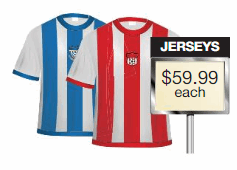
Yes, I earned enough money $61.7625 to buy the jersey shown,
Money left is $1.7725.
Explanation:
Given I earn $9.15 per hour painting a fence.
It takes 6.75 hours to paint the fence. So money earned is
$9.15 X 6.75 = $61.7625
3
3
2
9.15 ——2 decimal values
X6.75—– 2 decimal values
004575
064050
+549000
61.7625—-4 decimal places
Therefore, yes, I earned enough money $61.7625 to buy the
jersey shown, because given the cost of jersey’s is $59.99 each
which is less compared to what i have earned.
Now money left is $61.7625 – $59.99 = $1.7725,
10,16,16
61.7625
-59.9900
1.7725
So, money left is $1.7725.
Question 18.
A sand volleyball court is a rectangle that has a length of 52.5 feet and
a width that is half of the length. In case of rain, the court is covered
with a tarp. How many square feet of tarp are needed to cover the court?
1378.125 square feet of trap is needed to cover the court,
Explanation:
Given a sand volleyball court is a rectangle that has a length
of 52.5 feet and a width that is half of the length means width is
52.5 ÷ 2 = 26.25 feet, Now to cover the court with a trap we need
52.5 X 26.25 = 1378.125 square feet,
52.5————2 decimal places
X26.25——– 2 decimal places
2625 —-(52.5 X 0.05)
1050 —(52.5 X0.2)
31500—(52.5 X 6)
+105000—(52.5 X20)
1378.0125——4 decimal places
Therefore,1378.125 square feet of trap is needed to cover the court.
Question 19.
DIG DEEPER!
You buy 4 cases of bottled water and 5 bottles of fruit punch for a
birthday party. Each case of bottled water costs $2.75, and each bottle
of fruit punch costs $1.35. You hand the cashier a $20 bill.
How much change will you receive?
I will receive $2.25 as a change,
Explanation:
Given I buy 4 cases of bottled water and 5 bottles of fruit punch for a
birthday party. Each case of bottled water costs $2.75, and each bottle
of fruit punch costs $1.35, Now 4 cases of bottled costs is
4 X $2.75=$11,
30,2
2.75—— 2 decimal places
x 4
11.00——2 decimal places
and 5 bottles of fruit punch costs is 5 X $1.35 = $6.75
1,2
1.35—- 2 decimal places
X 5
6.75—-2 decimal places
Now total bill amount is $11 + $ 6.75= $17.75,
11.00
+6.75
17.75
I hand the cashier $20 , The change I will receive is
9,9,10
20.00
-17.75
2.25
Therefore, I will receive $2.25 as a change.
Multiplying Decimals Homework & Practice 2.5
Review & Refresh
Add or subtract.
Question 1.
12.29 – 6.15
12.29 – 6.15 = 6.14
Explanation:
,12
12.29
-6.15
06.14
Therefore, 12.29 – 6.15 = 6.14.
Question 2.
4.6 + 11.81
4.6 + 11.81 = 16.41
Explanation:
, 1
04.60
+11.81
16.41
Therefore, 4.6 + 11.81 = 16.41.
Question 3.
9.34 + 17.009
9.34 + 17.009 = 26.349
Explanation:
, 1
09.340
+17.009
26.349
Therefore, 9.34 + 17.009 = 26.349.
Question 4.
18.247 – 16.262
18.247 – 16.262 = 1.985
Explanation:
11,14
18.247
-16.262
1.985
Therefore, 18.247 – 16.262 = 1.985.
Divide.
Question 5.
78 ÷ 3
78 ÷ 3 = 26
Explanation:

here the first number 78 is called the dividend
and the second number 3 is called the divisor.
We will get 0 as remainder and top 26 is the answer,
as shown in the picture, Therefore 78 ÷ 3 = 26.
Question 6.
65 ÷ 13
65 ÷ 13 = 5
Explanation:
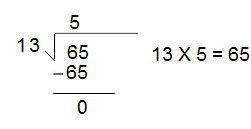
here the first number 65 is called the dividend
and the second number 13 is called the divisor.
We will get 0 as remainder and top 5 is the answer
as shown in the picture, Therefore 65 ÷ 13 = 5.
Question 7.
57 ÷ 19
57 ÷ 19 = 3
Explanation:
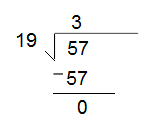 19 X 3 = 57
19 X 3 = 57
here the first number 57 is called the dividend
and the second number 19 is called the divisor.
We will get 0 as remainder top 3 is the answer
as shown in the picture, Therefore 57 ÷ 19 = 3.
Question 8.
84 ÷ 12
84 ÷ 12 = 7
Explanation:

here the first number 84 is called the dividend
and the second number 12 is called the divisor.
We will get 0 as remainder top 7 is the answer
as shown in the picture, Therefore 84 ÷ 12 = 7.
Question 9.
What is 
 = \(\frac{52}{15}\) = 3\(\frac{7}{15}\)
= \(\frac{52}{15}\) = 3\(\frac{7}{15}\)
Explanation:
Given expression as 4\(\frac{1}{3}\) X \(\frac{4}{5}\) ,
First we write mixed fraction as (4 X 3 + 1 by 3) =\(\frac{13}{3}\), ,
\(\frac{13}{3}\) X \(\frac{4}{5}\) =\(\frac{13 X 4}{3 X 5}\) =
\(\frac{52}{3}\) as numerator is greater we write in
mixed fraction as (3 X 15 + 7 by 15) = 3\(\frac{7}{15}\),
Therefore, 4\(\frac{1}{3}\) X \(\frac{4}{5}\) =
\(\frac{52}{15}\) = 3\(\frac{7}{15}\).
Evaluate the expression.
Question 10.
4 + 62 ÷ 2
4 + 62 ÷ 2 = 2
Explanation:
Given expression as 4 + 62 ÷ 2,
first we evaluate 62 = 6 X 6 = 36, then
4 + 36 = 40, Now 40 ÷ 2 = 20 (2 X 20 = 40),
therefore, 4 + 62 ÷ 2 = 2.
Question 11.
(35 + 9) ÷ 4 – 32
(35 + 9) ÷ 4 – 32 = 2
Explanation:
Given expression as (35 + 9) ÷ 4 – 32,
first we evaluate 35 + 9 = 44,
then 44 ÷ 4 = 11 (4 X 11 = 44),
and 11 – 32 = 11 – (3 X 3) = 11 – 9 = 2,
therefore, (35 + 9) ÷ 4 – 32 = 2.
Question 12.
82 ÷ [(14 – 12) × 23]
82 ÷ [(14 – 12) × 23] = 4
Explanation:
Given expression as 82 ÷ [(14 – 12) × 23]
First we calculate [(14 – 12) × 23] = (14 -12) X (2 X 2 X 2),
2 X 8 = 16, Now 82 ÷ 16 = (8X 8) ÷ 16 = 64 ÷ 16 = 4 (16 x 4 =64),
therefore,82 ÷ [(14 – 12) × 23] = 4.
Concepts, Skills, & Problem Solving
USING TOOLS
Use an area model to find the product. (See Exploration 1, p. 73.)
Question 13.
2.1 × 1.5
2.1 × 1.5 = 3.15
Explanation:

2.1 × 1.5 = 3.15,
We took 2 full and 0.1 then multiplied by
1 full and 0.5 we got 3 full and 0.15 as shown in the picture.
Question 14.
0.6 × 0.4
0.6 X 0.4 = 0.24
Explanation:

The purple color shows the result 0.24.
Question 15.
0.7 × 0.3
0.7 X 0.3 = 0.21
Explanation:
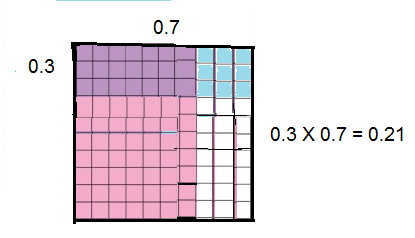
The purple color shows the result 0.21.
Question 16.
2.7 × 2.3
2.7 X 2.3 = 6.21
Explanation:
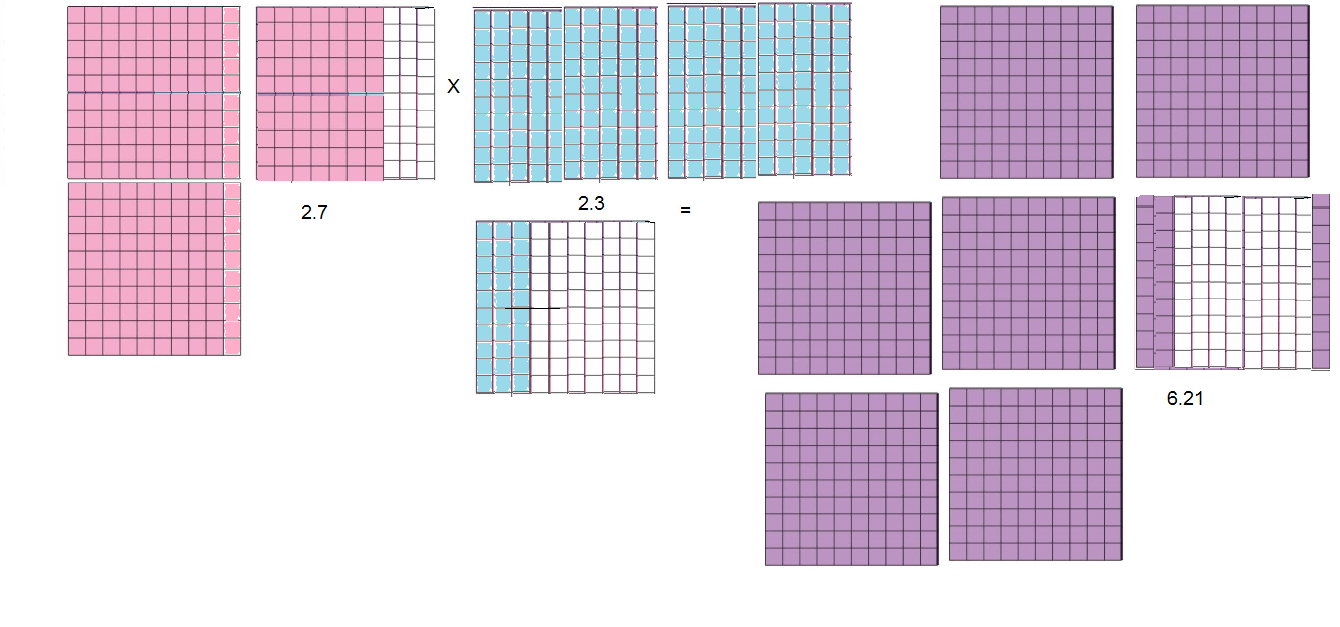
The purple color shows the result 6.21.
MULTIPLYING DECIMALS AND WHOLE NUMBERS
Multiply. Use estimation to check your answer.
Question 17.

33.6
Explanation:
5
4.8 ——1 decimal place
X 7
33.6—– 1 decimal place
Therefore, 4.8 X 7 = 33.6.
Question 18.

31.5
Explanation:
1
6.3 ——1 decimal place
X 5
31.5—– 1 decimal place
Therefore, 6.3 X 5 = 31.5.
Question 19.

115.04
Explanation:
1, 5
7.19 ——2 decimal places
X 16
4314
7190
115.04—– 2 decimal places
Therefore, 7.19 X 16 = 115.04.
Question 20.

18.27
Explanation:
1, 1
0.87 ——2 decimal places
X 21
87
1740
18.27—– 2 decimal places
Therefore, 8.87 X 21 = 18.27.
Question 21.

21.45
Explanation:
1.95 ——2 decimal places
X 11
195
1950
21.45—– 2 decimal places
Therefore, 1.95 X 11 = 21.45.
Question 22.

29.45
Explanation:
4,4
5.89 ——2 decimal places
X 5
29.45—– 2 decimal places
Therefore, 5.89 X 5 = 29.45.
Question 23.

13.888
Explanation:
1,2
3.472 ——3 decimal places
X 4
13.888—– 3 decimal places
Therefore, 3.472 X 4 = 13.888.
Question 24.

98.256
Explanation:
1,1
8.188 ——3 decimal places
X 12
16376
81880
98.256—– 3 decimal places
Therefore, 8.188 X 12 = 98.256.
Question 25.
100 × 0.024
100 × 0.024 = 2.4
Explanation:
0.024 — 3 decimal places
X100
0000
00000
002400
002.400—–3 decimal places
Therefore, 0.02 X 100 = 2.4.
Question 26.
19 × 0.004
19 × 0.004 = 0.076
Explanation:
0.004 — 3 decimal places
X19
0036
00040
0.076—–3 decimal places
Therefore, 0.004 X 19 = 0.076.
Question 27.
3.27 × 14
3.27 × 14 = 45.78
Explanation:
8
3.27—– 2 decimal places
X 14
1308
3270
45.78—- 2 decimal places
Therefore, 3.27 X 14 = 45.78.
Question 28.
46 . 5.448
46 X 5.448 = 250.608
Explanation:
1,1,3
2, 2,4
5.448 —– 3 decimal places
X 46
32688
217920
250.608 —-3 decimal places
Therefore, 46 X 5.448 = 250.608.
Question 29.
50 × 12.21
50 X 12.21 = 610.5
Explanation:
1,1
12.21—-2 decimal places
X 50
0000
6105
610.50—-2 decimal places
Therefore 50 X 12.21 = 610.5.
Question 30.
104 . 4.786
104 X 4.786 =497.744
Explanation:
3,3,2
4.786—-3 decimal places
X104
019144
00000
478600
497.744—-3 decimal places
Therefore 104 X 4.786 = 497.744.
Question 31.
0.0038 × 9
0.0038 X 9 = 0.0342
Explanation:
3
0.0038—-4 decimal places
X 9
0.0342—-4 decimal places
Therefore, 0.0038 X 9 = 0.0342
Question 32.
10 × 0.0093
10 × 0.0093 = 0.093
Explanation:
3
0.0093—-4 decimal places
X 10
00000
000930
0.0930 —-4 decimal places
Therefore, 10 × 0.0093 = 0.093.
YOU BE THE TEACHER
Your friend finds the product. Is your friend correct? Explain your reasoning.
Question 33.
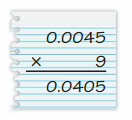
Yes, Friend is correct as 0.0045 X 9 = 0.0405,
Explanation:
4,
0.0045—– 4 decimal places
X 9
0.0405—–4 decimal places
Therefore friend is correct as 0.0405 is equal to friends value 0.0405.
Question 34.

No, Friend is incorrect as 0.32 X 5 = 1.6 ≠ 0.160
Explanation:
1
0.32—–2 decimal places
X 5
1.60 —-2 decimal places
Therefore, friend is incorrect as 0.32 X 5 = 1.6 ≠ 0.160.
Question 35.
MODELING REAL LIFE
The weight of an object on the Moon is about 0.167 of its weight on Earth.
How much does a 180-pound astronaut weigh on the Moon?

I80-pound astronaut weigh on the Moon is 30.06 pounds
Explanation:
Given the weight of an object on the Moon is about 0.167
of its weight on Earth. So, 180-pound astronaut weigh on the Moon is
0.167 X 180 = 30.06 pounds
5,5
0.167 —– 3 decimal places
X 180
0000
13360
016700
30.060—- 3 decimal places
Therefore, I80-pound astronaut weigh on the Moon is 30.06 pounds.
MULTIPLYING DECIMALS
Multiply.
Question 36.

0.14
Explanation:
1
0.7 ——1 decimal place
X 0.2——1 decimal place
14
000
0.14—– 2 decimal places
Therefore, 0.7 X 0.2 = 0.14.
Question 37.

0.024
Explanation:
2
0.08 ——–2 decimal places
X 0.3——–1 decimal place
0024
0000
0.024——–3 decimal places
Therefore, 0.08 X 0.3 = 0.024.
Question 38.

0.00021
Explanation:
2
0.007 ——–3 decimal places
X 0.03——–2 decimal places
0021
00000
000000
0.00021——-5 decimal places
Therefore, 0.007 X 0.03 = 0.00021.
Question 39.

0.000072
Explanation:
7
0.0008 ——-4 decimal places
X 0.09——–2 decimal places
00072
000000
0000000
0.000072—–6 decimal places
Therefore, 0.0008 X 0.09 = 0.000072.
Question 40.

0.0036
Explanation:
3
0.004 ——-3 decimal places
X 0.9——-1 decimal place
0036
00000
0.0036——-4 decimal places
Therefore, 0.004 X 0.9 = 0.0036.
Question 41.

0.03
Explanation:
3
0.06—–2 decimal places
X 0.5—–1 decimal place
0030
0000
0.030—-3 decimal places
Therefore, 0.06 X 0.5 = 0.03.
Question 42.

0.0000032
Explanation:
3
0.0008——-4 decimal places
X 0.004——3 decimal places
00032
000000
0000000
0.0000032—-7 decimal places
Therefore, 0.0008 X 0.004 = 0.0000032.
Question 43.

0.000012
Explanation:
1
0.0002——-4 decimal places
X 0.06—— 2 decimal places
00012
000000
0000000
0.000012—-6 decimal places
Therefore, 0.0002 X 0.06 = 0.000012.
Question 44.
12.4 × 0.2
12.4 X 0.2 = 2.48
Explanation:
12.4——–1 decimal place
X 0.2——-1 decimal place
248
0000
2.48——-2 decimal places
Therefore, 12.4 X 0.2 = 2.48.
Question 45.
18.6 . 5.9
18.6 X 5.9 = 109.74
Explanation:
4,3
7,5
18.6—-1 decimal place
X5.9— 1 decimal place
1674
9300
109.74—-2 decimal places
Therefore, 18.6 X 5.9 = 109.74.
Question 46.
7.91 × 0.72
7.91 X 0.72 = 5.6952
Explanation:
6
1
7.91—–2 decimal places
X0.72—-2 decimal places
01582
55370
00000
5.6952—-4 decimal places
Therefore, 7.91 X 0.72 = 5.6952.
Question 47.
1.16 × 3.35
1.16 × 3.35 = 3.886
Explanation:
1
1
3
1.16——-2 decimal places
X 3.35—–2 decimal places
00580
03480
34800
3.8860—–4 decimal places
Therefore, 1.16 X 3.35 = 3.8860.
Question 48.
6.478 × 18.21
6.478 × 18.21 = 117.96438
Explanation:
3,5,6
1,1
6.478——3 decimal places
X 18.21—-2 decimal places
0006478
0129560
5182400
6478000
117.96438—5 decimal places
Therefore, 6.478 × 18.21 = 117.96438.
Question 49.
1.9 × 7.216
1.9 X 7.216 = 13.7104
Explanation:
1,1,5
7.216——3 decimal places
X 1.9——1 decimal place
64944
72160
13.7104——4 decimal places
Therefore, 7.216 X 1.9 = 13.7104.
Question 50.
0.0021 × 18.2
0.0021 × 18.2 = 0.03822
Explanation:
1
0.0021——3 decimal places
X 18.2——-1 decimal place
0000042
0001680
0002100
0.03822——4 decimal places
Therefore, 0.0021 X 18.2 = 0.03822.
Question 51.
6.109 . 8.4
6.109 X 8.4 = 51.3156
Explanation:
7
3
6.109——3 decimal places
X 8.4——1 decimal place
024436
488720
51.3156——4 decimal places
Therefore, 6.109 X 8.4 = 51.3156.
Question 52.
YOU BE THE TEACHER
Your friend finds the product of 4.9 and 3.8. Is your friend correct? Explain your reasoning.
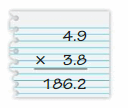
No, Friend is incorrect as 4.9 X 3.8 = 18.62 ≠ 186.2
Explanation:
2
7
4.9 ——1 decimal place
X3.8——1 decimal place
0392
1470
18.62——2 decimal places
Therefore, Friend is incorrect as 4.9 X 3.8 = 18.62 ≠ 186.2.
Questi1on 53.
PROBLEM SOLVING
A Chinese restaurant offers buffet takeout for $4.99 per pound.
How much does your takeout meal cost?
The takeout meal cost $3.5429
Explanation:
Given a Chinese restaurant offers buffet takeout for $4.99 per pound
and 1 dollar in pound = 0.71 pound, So the takeout meal costs
$4.99 X 0.71 = $3.5429
4.99——2 decimal places
X0.71——2 decimal places
00499
34930
00000
3.5429——4 decimal places
Therefore, the takeout meal cost $3.5429.
Question 54.
PROBLEM SOLVING
On a tour of an old gold mine, you find a nugget containing
0.82 ounce of gold. Gold is worth $1323.80 per ounce.
How much is your nugget worth?

The nugget worth is $1085.516,
Explanation:
Given I found a nugget containing 0.82 ounce of gold.
and gold is worth $1323.80 per ounce. So my nugget worth is
$1323.80 X 0.82
2,1,2,6
1
1323.80—–2 decimal places
X 0.82——-2 decimal places
00264760
10590400
00000000
1085.5160—-4 decimal places
Therefore, the nugget worth is $1085.516.
Question 55.
PRECISION
One meter is approximately 3.28 feet. Find the height of each building in feet.
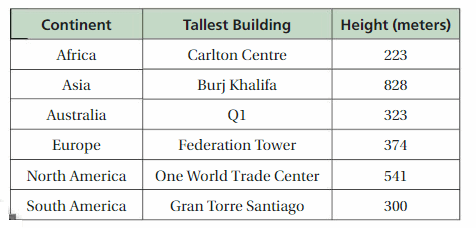

Carlton Centre is 731.44 feet,
Burj Khalifa is 2715.84 feet,
Q1 is 1059.44 feet,
Federation Tower is 1226.72 feet,
One World Trade Centre is 1774.48 feet,
Gran Torre Santiago is 984 feet,
Explanation:
Given one meter is approximately 3.28 feet and
heightsof each building in meters in the table above,
now we will find height in feet as
a. Carlton Centre is 223 meters, So in feet it is
223 X 3.28 = 731.44
1,2
223
X3.28———–2 decimal places
01784
04460
66900
731.44——-2 decimal places
So, Carlton Centre is 731.44 feet,
b. Burj Khalifa is 828 meters , In feet is
828 X 3.28 = 2715.84
2
1,
1,6
828
X3.28 ——– 2 decimal places
006624
016560
248400
2715.84——-2 decimal places
So, Burj Khalifa is 2715.84 feet,
c. Q1 is 323 meters, In feet is
323 X 3.28 = 1059.44
1,2
323
X3.28——-2 decimal places
02584
06460
96900
1059.44——-2 decimal places
So, Q1 is 1059.44 feet,
d. Federation Tower is 374 meters, In feet is
374 X 3.28 = 1226.72
5,3
374
X 3.28——-2 decimal places
002992
007480
112200
1226.72——-2 decimal places
So, Federation Tower is 1226.72 feet,
e. One World Trade Centre is 541 meters, In feet is
541 X 3.28 = 1774.48
1
3
541
X3.28——-2 decimal places
004328
010820
162300
1774.48——-2 decimal places
So, One World Trade Centre is 1774.48 feet,
f. Gran Torre Santiago is 300 meters, Now in feet is
300 X 3.28 = 984
300
X 3.28——-2 decimal places
02400
06000
90000
984.00——-2 decimal places
So, Gran Torre Santiago is 984 feet.
Question 56.
REASONING
Show how to evaluate (7.12 × 8.22) × 100 without multiplying two decimals.
(7.12 X 8.22) X 100 = 5852.64
Explanation:
First multiply as whole numbers only we get 712 X 822 = 585264,
We have 4 decimal places but it is multiplied by 100,
We get 2 decimal places so we put as 5852.64,
Therefore (7.12 × 8.22) × 100 = 5852.64.
EVALUATING AN EXPRESSION
Evaluate the expression.
Question 57.
2.4 × 16 + 7
2.4 × 16 + 7 = 45.4
Explanation:
Given expression as 2.4 × 16 + 7, So first we calculate
2.4 X 16 as
2
2.4——1 decimal place
x16
144
240
38.4—- 1 decimal place
Now 38.4 + 7 = 45.4
Therefore, 2.4 × 16 + 7 = 45.4
Question 58.
6.85 × 2 × 10
6.85 × 2 × 10 = 137
Explanation:
Given expression as 6.85 × 2 × 10,
First we calculate 6.85 X 2 as
1,1
6.85—–2 decimal places
X 2
13.70—–2 decimal places
Now, 13.70 X 10 we move 1 decimal place as 137.0,
Therefore 6.85 × 2 × 10 = 137.
Question 59.
1.047 × 5 – 0.88
1.047 × 5 – 0.88 = 4.355
Explanation:
Given expression as 1.047 × 5 – 0.88, First we calculate
1.047 X 5 as
2,3
1.047— 3 decimal places
X 5
5.235— 3 decimal places
Now 5.235 – 0.88
5.235
0.880
4.355
Therefore, 1.047 × 5 – 0.88 = 4.355.
Question 60.
4.32(3.7 + 1.65)
4.32 X (3.7 + 1.65) = 23.112
Explanation:
Given expression as 4.32(3.7 + 1.65), first we calculate
(3.7 + 1.65) = 5.35
3.70
+1.65
5.35
Now, we multiply as 4.32 X 5.35 as
1,1
1,1
4.32 ——2 decimal places
X5.35—–2 decimal places
02160
12960
21600
23.1120—–4 decimal places
Therefore, 4.32 X (3.7 + 1.65) = 23.112
Question 61.
23.98 – 1.72 . 7.6
23.98 – 1.72 . 7.6 = 2.016
Explanation:
Given expression as 23.98 – 1.72 . 7.6, first we calculate
(1.72 X 7.6) = (1.7 X 1.7 X 7.6) again here first we
multiply 1.7 X 1.7 as
4
1.7—— 1 decimal place
X1.7—– 1 decimal place
119
170
2.89—– 2 decimal places
Now we multiply with 2.89 with 7.6 as
6,6
5,5
2.89—— 2 decimal places
X7.6—— 1 decimal place
01734
20230
21.964—-3 decimal places
Now further we find 23.98 minus 21.964 as
23.980
-21.964
2.016
Therefore 23.98 – 1.72 . 7.6 = 2.016.
Question 62.
12 . 5.16 + 10.064
12 . 5.16 + 10.064 = 182.688
Explanation:
Given expression as 12 X (5.16 + 10.064), first we calculate
5.16 + 10.064 as
05.160
+10.064
15.224
Now we calculate 12 X 15.224 as
1
15.224———3 decimal places
X 12
030448
152240
182.688———3 decimal places
Therefore 12 . 5.16 + 10.064 = 182.688.
Question 63.
0.9(8.2 . 20.35)
0.9(8.2 . 20.35) = 150.183
Explanation:
Given expression as 0.9(8.2 . 20.35), First we calculate
8.2 X 20.35 as
2,4
1
20.35—– 2 decimal places
X8.2 ——1 decimal place
004070
162800
166.870—–3 decimal places
Now we multiply 0.9 with 166.870 as
6, 6,7,6
166.870—–3 decimal places
X 0.9—–1 decimal place
150.183—–3 decimal places
Therefore 0.9(8.2 . 20.35) = 150.183.
Question 64.
7.52(6.084 – 5.44)
7.52(6.084 – 5.44) = 36.225
Explanation:
Given expression as 7.52(6.084 – 5.44), First we will find
6.084 – 5.44 as
6.084
-5.440
0.644
Now 7.52 X 0.644 as (7.5 X 7.5 X 0.644) as
3
2
7.5—–1 decimal place
X7.5—-1 decimal place
0375
5250
56.25—2 decimal places
Now 56.25 X 0.644 as
56.25—–2 decimal places
X0.644—–3 decimal places
00022500
00225000
03375000
00000000
36.22500—-5 decimal places
Therefore 7.52(6.084 – 5.44) = 36.225.
Question 65.
0.629[81 ÷ (10 × 2.7)]
0.629[81 ÷ (10 × 2.7)] = 1.887
Explanation:
Given expression as 0.629[81 ÷ (10 × 2.7)], First we will find
10 X 2.7 = 27.0 1 decimal place = 27,
Now 81 ÷ 27 = 3(as 27 X 3 = 81), Now
0.629 X 3 is
2
0.629—- 3 decimal places
X 3
1.887—- 3 decimal places
So, 0.629[81 ÷ (10 × 2.7)] = 1.887
Question 66.
REASONING
Without multiplying, how many decimal places does 3.42 have? 3.433? 3.44? Explain your reasoning.
3.42 will have 2 decimal places
3.433 will have 6 decimal places
3.44 will have 4 decimal places
Explanation:
We have 3.42 ,3.433,3.44 without multiplying we write
decimal places as 3.42 will have 2 decimal places
3.433 will have 6 decimal places
3.44 will have 4 decimal places,
We take as 3.42 , 1 +1 decimal places = 2 decimal places,
3.433 , 2 decimals X 3 = 6 decimal places and
3.44 , 1 decimal X 4 = 4 decimal places and so on like
number of decimal places multiplied by powers.
Question 67.
MODELING REAL LIFE
You buy 2.6 pounds of apples and 1.475 pounds of peaches. You hand the cashier a $20 bill. How much change will you receive?
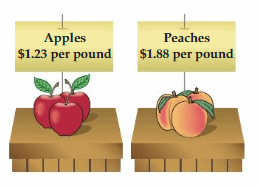
I will receive a change of $14.03,
Explanation:
Given 2.6 pounds of apples and 1.475 pounds of peaches I buyed,
Apples are $1.23 per pound means the cost of apples
bought are 1.23 X 2.6 =3.198
1,1
1.23—–2 decimal places
X2.6—–1 decimal place
0738
2460
3.198—–3 decimal places
Now as cost of peaches are $1.88 per pound
total cost of peaches are 1.475 X 1.88 = 2.77300
3,6,4
3,6,4
1.475—–3 decimal places
X1.88—–2 decimal places
011800
118000
147500
2.77300—–5 decimal places
So, Total cost for apples and peaches are 3.198 plus 2.77300
3.198
+2.773
5.971
We got total cost for fruits as $5.971, I hand
the cashier $20, I will receive a change of 20-5.971 = 14.029
20.000
-05.971
14.029
Therefore I will receive a change of $14.029 ≈$14.03 in return.
PATTERNS
Describe the pattern. Find the next three numbers.
Question 68.
1, 0.6, 0.36, 0.216, . . .
1, 0.6, 0.36, 0.216, 0.1296, 0.07776,0.046656
Explanation:
Given series as 1, 0.6, 0.36, 0.216, . . .
each number is multiplied by 0.6
because 0.6 X 0.6 = 0.36,
0.36 X 0.6 = 0.216,
Next number is 0.216 X 0.6 = 0.1296,
the next number is 0.1296 X 0.6 = 0.07776 and
the next number is 0.0776 X 0.6 = 0.046656 and so on,
Therefore 1, 0.6, 0.36, 0.216, . . . the next three numbers are
1, 0.6, 0.36, 0.216, 0.1296, 0.07776, 0.046656 .
Question 69.
15, 1.5, 0.15, 0.015, . . .
15, 1.5, 0.15, 0.015, 0.0015, 0.00015, 0.000015
Explanation:
Given series as 15, 1.5, 0.15, 0.015, . . .
each number is multiplied by 0.1
because 15 X 0.1 = 1.5,
1.5 X 0.1 = 0.15,
0.15 X 0.1 = 0.015,
the next number is 0.015 X 0.1 = 0.0015 and
the next number is 0.0015 X 0.1 = 0.00015 and
the next number is 0.00015 X 0.1 = 0.000015 so on,
Therefore 15, 1.5, 0.15, 0.015, . . . the next three numbers are
15, 1.5, 0.15, 0.015, 0.0015, 0.00015, 0.000015.
Question 70.
0.04, 0.02, 0.01, 0.005, . . .
0.04, 0.02, 0.01, 0.005, 0.0025, 0.00125, 0.000625
Explanation:
Given series as 0.04, 0.02, 0.01, 0.005 each number is
divided by 2 as 0.04 ÷ 2 = 0.02,
0.02 ÷ 2 = 0.01, 0.01 ÷ 2 = 0.005,
the next number is 0.005 ÷ 2 = 0.0025,
the next number is 0.0025 ÷ 2 = 0.00125,
and the next number is 0.00125 ÷ 2 = 0.000625
and so on, therefore 0.04, 0.02, 0.01, 0.005, . . .
the next three numbers are
0.04, 0.02, 0.01, 0.005, 0.0025, 0.00125, 0.000625 respectively.
Question 71.
5, 7.5, 11.25, 16.875, . . .
5, 7.5, 11.25, 16.875, 25.3125, 37.96875, 56.953125
Explanation:
Given series are 5, 7.5, 11.25, 16.875, each number
is multiplied by 1.5 of the previous number as shown, So
5 X 1.5 = 7.5, 7.5 X 1.5 = 11.25, 11.25 X 1.5 = 16.875,
the next number is 16.875 X 1.5 = 25.3125,
the next number after 25.3125 X 1.5 = 37.96875 and
the next number is 37.96875 X 1.5 = 56.953125.
therefore 5, 7.5, 11.25, 16.875, the next three numbers are
5, 7.5, 11.25, 16.875, 25.3125, 37.96875, 56.953125.
Question 72.
DIG DEEPER!
You are preparing for a trip to Canada. At the time of your trip,
each U.S dollar is worth 1.293 Canadian dollars and each
Canadian dollar is worth 0.773 U.S dollar.
a. You exchange 150 U.S dollars for Canadian dollars. How many
Canadian dollars do you receive?
b. You spend 120 Canadian dollars on the trip. Then you exchange
the remaining Canadian dollars for U.S dollars.
How many U.S dollars do you receive?
a. I receive 193.95 Canadian dollars,
b. I receive 57.16335 U.S dollars,
Explanation:
Given I am preparing for a trip to Canada. At the time of my trip,
each U.S dollar is worth 1.293 Canadian dollars and each
Canadian dollar is worth 0.773 U.S dollar.
a. I exchange 150 U.S dollars for Canadian dollars ,
So i receive Canadian dollars as 1.293 X 150 =
1, 4,1
1.293—– 3 decimal places
x150
000000
064650
129300
193.950—– 3 decimal places
Therefore, I receive 193.95 Canadian dollars.
b. I spend 120 Canadian dollars on the trip. Then I exchange
the remaining Canadian dollars for U.S dollars.
So I have Canadian dollars left after my trip are
193.950 – 120 = 73.950, Now i will convert
Canadian dollars into U.S dollars as 73.950 X 0.773 =
2,6,3
2,6,3
2,1
73.950—- 3 decimal places
X0.773—- 3 decimal places
00221850
05176500
51765000
00000000
57.163350—-6 decimal places
Therefore, I receive 57.16335 U.S dollars.
Question 73.
OPEN-ENDED
You and four friends have dinner at a restaurant.
a. Draw a restaurant menu that has main items, desserts, and beverages, with their prices.
b. Write a guest check that shows what each of you ate. Find the subtotal.
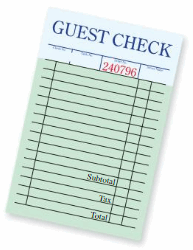
c. Multiply by 0.07 to find the tax. Then find the total.
d. Round the total to the nearest whole number.
Multiply by 0.20 to estimate a tip. Including the tip,
how much did the dinner cost?
a.

b. Guest Check I ate Passion Mousse, Iced Coffee and
Chicken Breasts Quarters only,
My four friends ate Pecan Cheese Cake, Expresso and
Meatloaf with Gravy,
Subtotal is $75.95,
c. Including Tax amount the Total cost is $81.2665,
d. Including the tip, the dinner cost is $96,
Explanation:
a. Shown restaurant menu that has main items, desserts and
beverages, with their prices.
b. I ate Passion Mousse, Iced Coffee and Chicken Breasts Quarters only,
my friend ate Pecan Cheese Cake, Expresso and Meatloaf with Gravy,
Now Passion Mousse, Iced Coffee and Chicken Breasts Quarters only
costs $5.90 + $5.90 + $3.75 =
5.90
5.90
+3.75
15.55
My cost is $15.55
and friend costs are Pecan Cheese Cake, Expresso and
Meatloaf with Gravy $4.95 + $5.90 + $4.25 =
4.95
5.90
+4.25
15.10
and friend costs are $15.10, and for 4 friends it is
4 X 15.10 =
2
15.10—-2 decimal values
X 4
60.40 —-2 decimal values
For four friends it is $60.40,
Now Subtotal of mine and my four freind’s are
$15.55 + $60.40 =
15.55
+60.40
75.95
Subtotal costs to $75.95
c. Given tax is 0.07, So tax on amount is
$75.95 X 0.07 =
4,6,3
75.95—-2 decimal places
X 0.07—2 decimal places
5.3165–4 decimal places
So, The total amount after paying tax is $75.95 + $5.3165,
75.9500
+5.3165
81.2665
Therefore, including tax amount the Total cost is $81.2665.
d. Rounding the total to the nearest whole number as
$81.2665 ≈ $80, now multiplying by 0.20 we get
$80 X 0.20 = $16 is the tip.
Including the tip, the dinner cost is $80 + $16 = $96.
Question 74.
GEOMETRY
A rectangular painting has an area of 9.52 square feet.
a. Draw three different ways in which this can happen.
b. The cost of a frame depends on the perimeter of the painting.
Which of your drawings from part(a) is the least expensive to frame?
Explain your reasoning.

c. The thin, black framing costs $1 per foot. The fancy framing costs $5 per foot. Will the fancy framing cost five times as much as the black framing? Explain why or why not.
d. Suppose the cost of a frame depends on the outside perimeter of the frame. Does this change your answer to part(c)? Explain why or why not.
a.

b. Photoframe i (3.2, 2.975) is the least expensive to frame.
c. Yes, the fancy framing cost five times as much as the black framing,
d. Yes, It will change if it depends on the outside
perimeter of the frame, not on the material used.
Explanation:
a. Given a rectangular painting has an area of 9.52 square feet,
We know area of rectangle is length X width and it is 9.52 square feet,
Drawn three different ways in which this can happen in the above picture,
as i. 3.2 X 2.975 = 9.52 square feet, ii. 3.4 X 2.8 = 9.52 square feet and
3.8 X 2.505 = 9.52 square feet .
b. The perimeter of paintings are
i. 2(3.2 + 2.975) = 2 X 6.175 = 12.35 feet
ii. 2(3.4 + 2.8) = 2 X 6.2 = 12.4 feet
iii. 2( 3.8 + 2.505) = 2 X 6.305 = 12.61 feet
among the three the least perimeter is 12.35 feet,
So, photoframe i(3.2, 2.975) is the least expensive to frame.
c. The thin, black framing costs $1 per foot.
The fancy framing costs $5 per foot.
So for black framing it is 9.52 X 1 =9.52 dollars,
and for fancy framing it costs 9.52 X 5 = 47.6 dollars,
which is 5 times more than black framing, therefore
fancy framing costs five times as much as the black framing.
d. If the cost of a frame depends on the outside perimeter of the frame
not the material used then black framing and fancy frame will have
same cost, which will differ from part c results.
Lesson 2.6 Dividing Whole Numbers
EXPLORATION 1
Using a Double Bar Graph
Work with a partner. The double bar graph shows the history of a citywide cleanup day.
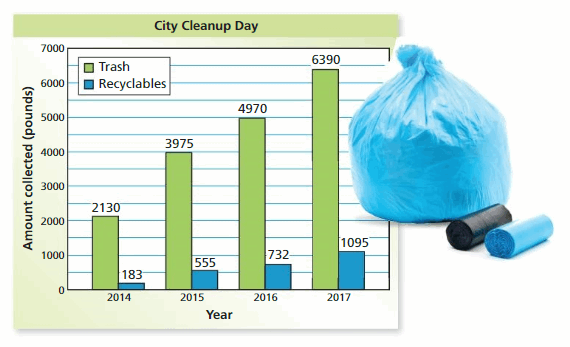
a. Make five conclusions from the graph.

b. Compare the results of the city cleanup day in 2016 to the results in 2014.
c. What is the average combined amount of trash and recyclables collected each year over the four-year period?
d. Make a prediction about the amount of trash collected in a future year.
a. Five conclusions from the graph:
1. Every year the amount of trash and recyclables
quantity is increasing.
2. Every year the trash quantity is more
than the quantity of recyclables.
3. In the Year 2017 the amount of trash
and recyclables collected in pounds is more
than 7000 pounds.
4. In the year 2014 he amount of trash
and recyclables collected in pounds is less
than 3000 pounds.
5. We have collected information of data
for 4 consecutive years.
b. In 2016 amount collected is 4970 + 732 = 5702 pounds and
in 2014 it is 2310 + 183 = 2493 pounds, Therefore in 2016 the
amount collected is more compared to 2014.
c. The average combined amount of trash and recyclables
collected each year over the four-year period is 5052.5 pounds.
d. We can predict about the amount of trash collected
in a future year 2018 will be approximately 7500 pounds.
Explanation:
a. Five conclusions from the graph are written as below
1. Every year the amount of trash and recyclables
quantity is increasing in 2014 it is 2310, 183,
in 2015 it is 3975,555, in 2016 it is 4970, 732 and
in year 2017 it is 6390, 1095 pounds.
2. Every year the trash quantity is more
than the quantity of recyclables.
In 2014 – 2310 > 183,
In 2015 – 3975 > 555,
In 2016 – 4970 > 732,
In 2017 – 6390 > 1095.
3. In the Year 2017 the amount of trash
and recyclables collected in pounds is more
than 7000 pounds because in 2017 it is 6390 + 1095 =
7485 pounds which is more than 7000 pounds.
4. In the year 2014 he amount of trash
and recyclables collected in pounds is less
than 3000 pounds because in 2014 it is 2310 + 183
= 2493 pounds which is less than 3000 pounds.
5. We have collected information of data
for 4 consecutive years as 2014 , 2015 , 2016 and 2017.
b. In 2016 it is 4970 pounds of trash and 732 pounds of recyclables,
In 2014 it is 2310 pounds of trash and 183 pounds of recyclables,
Now in n 2016 amount collected is 4970 + 732 = 5702 pounds and
in 2014 it is 2310 + 183 = 2493 pounds, Therefore in 2016 the
amount collected is more compared to 2014.
c. The average combined amount of trash and recyclables
collected each year is
In 2014 = 2310 + 183 = 2493 pounds
In 2015 = 3975 + 555 = 4530 pounds
In 2016 = 4970 + 732 = 5702 pounds
In 2017 = 6390 + 1095 = 7485 pounds
Total amount of collection in 4 years is
2493 + 4530 + 5702 + 7485 = 20210 pounds
and average for 4 years is 20210 ÷ 4 = 5052.5 pounds,
Therefore the average combined amount of trash and recyclables
collected each year over the four-year period is 5052.5 pounds.
d. Every year we see how much it increased
2015 & 2014- trash is 3975 – 2310 = 1665 pounds,
recyclables is 555 – 183 = 372 pounds
2016 & 2015 – trash 4970 – 3975 = 995 pounds
recyclables is 732 – 555 = 177 pounds
2017 & 2016 – trash 6390 – 4970 = 1420
recyclables is 1095 – 732 = 363 pounds,
as we see every year trash has increased
So we can predict about the amount of trash collected
in a future year 2018 will be approximately 7500 pounds.
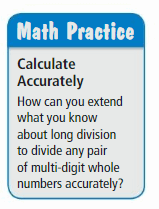
2.6 Lesson
You have used long division to divide whole numbers. When the divisor divides evenly into the dividend, the quotient is a whole number.

When the divisor does not divide evenly into the dividend, you obtain a remainder. When this occurs, you can write the quotient as a mixed number.
Try It
Divide. Use estimation to check your answer.
Question 1.
234 ÷ 9
234 ÷ 9 = 26
Estimation is reasonable,
Explanation:
Given 234 ÷ 9 =
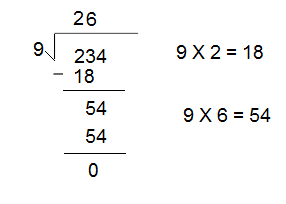
234 ÷ 9 = 26,
Estimation is 230 ÷ 9 = 25.555 ≈ 26,
So estimation is reasonable.
Question 2.
\(\frac{6096}{30}\)
\(\frac{6096}{30}\) = 203 and 6 remainder,
Estimation is reasonable,
Explanation:

\(\frac{6096}{30}\) = 203 and 6 remainder,
Estimation is \(\frac{6100}{30}\) = 203.33 ≈ 203,
So estimation is reasonable,
Question 3.
45,691 ÷ 28
45,691 ÷ 28 = 1631 and remainder is 23,
Estimation is reasonable,
Explanation:
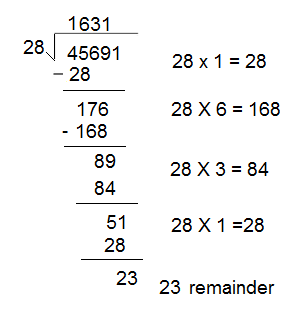
45,691 ÷ 28 = 1631 and remainder is 23,
Estimation is 45700 ÷ 28 = 1632 ≈ 1631,
So estimation is reasonable.
Question 4.
Find the quotient of 9920 and 320.
The quotient of 9920 and 320 is 31,
Estimation is reasonable,
Explanation:
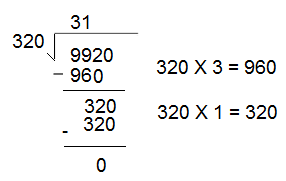
The quotient of 9920 and 320 is 31,
Estimation is 9900 ÷ 320 = 30.93 ≈ 31,
So estimation is reasonable.
Try It
Question 5.
WHAT IF?
You make 30 equal payments for the go-kart.
Total is $1380. How much is each payment?
Each payment is $46.
Explanation:
Given I make 30 equal payments for the go-kart.
total is $1380.

So each payment is $46.
Self-Assessment for Concepts & Skills
Solve each exercise. Then rate your understanding of the success criteria in your journal.
DIVIDING WHOLE NUMBERS
Divide. Use estimation to check your answer.
Question 6.
876 ÷ 12
876 ÷ 12 = 73,
Estimation is reasonable.
Explanation:
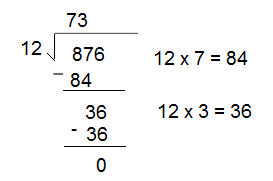
876 ÷ 12 = 73,
Estimation is 900 ÷ 12 = 75 ≈ 73,
So estimation is reasonable.
Question 7.
3024 ÷ 7
3024 ÷ 7 = 432
Estimation is not reasonable,
Explanation:
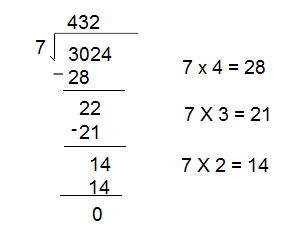
3024 ÷ 7 = 432,
Estimation is 3000 ÷ 7 = 428.5 ≈ 429 ≠ 432
So, estimation is not reasonable.
Question 8.
1043 ÷ 22
1043 ÷ 22 = 47 and remainder is 9,
Estimation is not reasonable.
Explanation:

1043 ÷ 22 = 47 and remainder is 9,
Estimation is 1000 ÷ 22 = 45 and remainder is 10 ≠
47 and remainder is 9, So, estimation is not reasonable.
Question 9.
VOCABULARY

Use the division problem shown to tell whether the number is the
divisor, dividend, or quotient.
a. 884 — dividend
b. 26 —quotient
c. 34 — divisor
Explanation:
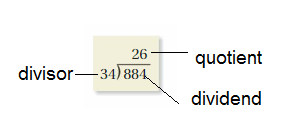
In division, we divide a number by any other number to
get another number as a result. So, the number which is
getting divided here is called the dividend.
The number which divides a given number is the divisor.
And the number which we get as a result is known as the quotient.
Divisor Formula: The operation of division in the form of:
Dividend ÷ Divisor = Quotient,
The above expression can also be written as:
Divisor = Dividend ÷ Quotient
Here, ‘÷’ is the symbol of division. But sometimes,
it is also represented by the ‘/’ symbol, such as
Dividend / Divisor = Quotient.
Question 10.
NUMBER SENSE
Without calculating, decide which is greater:
3999 ÷ 129 or 3834 ÷ 142. Explain.
3999 ÷ 129 is greater,
Explanation:
As given to find which is greater among
3999 ÷ 129 or 3834 ÷ 142 if we compare
numerators 3999 > 3834 and denominators
129 < 142 , So obviously 3999 ÷ 129 is greater.
Question 11.
REASONING
In a division problem, can the remainder be greater than the divisor? Explain.
No, the remainder cannot be greater than the divisor,
Explanation:
Remainder means something which is ‘left over’ or ‘remaining’.
When one number divides another number completely,
the remainder is 0.
The remainder is always less than the divisor.
If the remainder is greater than the divisor,
it means that the division is incomplete,
therefore the remainder cannot be greater than the divisor,
Self-Assessment for Problem Solving
Solve each exercise. Then rate your understanding of the success criteria in your journal.
Question 12.
In a movie’s opening weekend, 879,575 tickets are sold in 755 theaters.
The average cost of a ticket is $9.50. What is the average amount of
money earned by each theater?
The average amount of money earned by each theater is
$11067.5,
Explanation:
Given in a movie’s opening weekend, 879,575 tickets are sold
in 755 theaters. So each theaters it is 879,575 ÷ 755 = 1165

Now the average cost of a ticket is $9.50 and we have
each theaters tickets sold are 1165, So average amount earned
is 1165 X $9.50 =
1165
X9.50—- 2 decimal places
0000000
0058250
1048500
11067.50— 2 decimal places
Therefore, the average amount of money earned by each theater is
$11067.5.
Question 13.
A boat can carry 582 passengers to the base of a waterfall.
A total of 13,105 people ride the boat today.
All the rides are full except for the first ride. How many rides are given?
How many people are on the first ride?

Rides given are 22 and passengers on first ride are 301,
Explanation:
Given a boat can carry 582 passengers to the base of a waterfall.
A total of 13,105 people ride the boat today.
So rides given are 13,105 ÷ 582 =
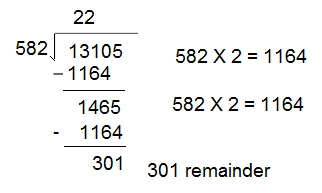
Given all the rides are full except for the first ride,
means total 22 rides and for first ride there are
301 passengers.
Question 14.
DIG DEEPER!
A new year begins at 12:00 A.M. on January 1.
What is the date and time 12,345 minutes after
the start of a new year?
The date is January 9th , time is 23:45 pm,
Explanation:
Given new year begins at 12:00 A.M. on January 1.
The date and time 12,345 minutes after the start of a new year
will be, first we convert into hours as 1 hour means
60 minutes, 12,345 ÷ 60 =
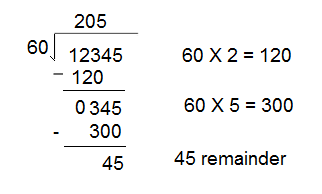
205 hours and 45 minutes, Now each day has 24 hours,
So 205 ÷ 24 =

So therefore it will be 8 complete days with
23 hours and 45 minutes,
the date is January 9th , time is 23:45 pm.
Dividing Whole Numbers Homework & Practice 2.6
Review & Refresh
Multiply.
Question 1.
8 × 3.79
8 X 3.79 = 30.32
Explanation:
Given expression as 8 × 3.79 =
6,7
3.79—— 2 decimal places
X 8
30.32—— 2 decimal places
Therefore, 8 X 3.79 = 30.32.
Question 2.
12.1 × 2.42
12.1 × 2.42 = 29.282
Explanation:
Given expression as 12.1 × 2.42 =
12.1—— 1 decimal place
X 2.42—–2 decimal places
00242
04840
24200
29.282—–3 decimal places
Therefore, 12.1 × 2.42 = 29.282.
Question 3.
6.43 × 0.28
6.43 × 0.28 = 1.8004
Explanation:
Given expression as 6.43 × 0.28 =
6.43—— 2 decimal places
X 0.28—–2 decimal places
005144
012860
000000
1.8004—–4 decimal places
Question 4.
9.526 . 6.61
9.526 X 6.61 = 62.96686
Explanation:
Given expression as 9.526 × 6.61 =
9.526—– 3 decimal places
X 6.61—–2 decimal places
0009526
0571560
5715600
62.96686—–5 decimal places
List the factor pairs of the number.
Question 5.
26.
Factors pairs of 26 = (1,26), (2, 13),
Explanation:
Factors of 26 : 1, 2, 13, 26,
So factor pairs of 26 are 1 x 26 or 2 x 13,
(1,26), (2, 13).
Question 6.
72
Factors pairs of 72 are (1, 72) or (2, 36) or (3, 24) or
(4, 18) or (6, 12) or (8, 9).
Explanation:
Factors of 72 : 1, 2, 3, 4, 6, 8, 9, 12, 18, 24, 36 and 72,
So factors pairs of 72 are (1, 72) or (2, 36) or (3, 24) or
(4, 18) or (6, 12) or (8, 9).
Question 7.
50
Factors pairs of 50 are (1, 50), (2, 25) ,(5,10),
Explanation:
Factors of 50 : 1, 2, 5,10, 25, and 50,
Factor pairs of 50 are (1, 50), (2, 25) ,(5,10).
Question 8.
98
Factors pairs of 98 are (1, 98), (2, 49), (7, 14),
Explanation:
Factors of 98 : 1, 2, 7, 14, 49, and 98,
Factors pairs of 98 are (1, 98), (2, 49), (7, 14).
Match the expression with its value.
Question 9.

\(\frac{6}{7}\) ÷ \(\frac{3}{5}\) = 1\(\frac{3}{7}\),
matches with B,
Explanation:
Given expressions as \(\frac{6}{7}\) ÷ \(\frac{3}{5}\),
we write reciprocal of the fraction \(\frac{3}{5}\) as
\(\frac{5}{3}\) and multiply as \(\frac{6}{7}\) X \(\frac{4}{7}\) =
\(\frac{6 X 5}{7 X 3}\) = \(\frac{30}{21}\),
as both goes in 3, 3 X 10 = 30, 3 X 7 = 21, \(\frac{30}{21}\) =
\(\frac{10}{7}\) as numerator is greater we write as
(1 X 7 + 3 by 7) = 1\(\frac{3}{7}\) matches with B.
Question 10.

\(\frac{3}{7}\) ÷ \(\frac{6}{5}\) = \(\frac{5}{14}\),
matches with C,
Explanation:
Given expressions as \(\frac{3}{7}\) ÷ \(\frac{6}{5}\),
we write reciprocal of the fraction \(\frac{6}{5}\) as
\(\frac{5}{6}\) and multiply as \(\frac{3}{7}\) X \(\frac{5}{6}\) =
\(\frac{3 X 5}{7 X 6}\) = \(\frac{15}{42}\),
as both goes in 3, 3 X 5 = 15, 3 X 14 = 42, \(\frac{15}{42}\) =
\(\frac{5}{14}\) matches with C.
Question 11.

\(\frac{6}{5}\) ÷ \(\frac{3}{7}\) = 2\(\frac{4}{5}\),
matches with D,
Explanation:
Given expressions as \(\frac{6}{5}\) ÷ \(\frac{3}{7}\),
we write reciprocal of the fraction \(\frac{3}{7}\) as
\(\frac{7}{3}\) and multiply as \(\frac{6}{5}\) X \(\frac{7}{3}\) =
\(\frac{6 X 7}{5 X 3}\) = \(\frac{42}{15}\),
as both goes in 3, 3 X 14 = 72, 3 X 5 = 15, \(\frac{42}{15}\) =
\(\frac{14}{5}\) as numerator is greater we write as
(2 X 5 + 4 by 5) = 2\(\frac{4}{5}\) matches with D.
Question 12.

\(\frac{3}{5}\) ÷ \(\frac{6}{7}\) = \(\frac{7}{10}\),,
matches with A,
Explanation:
Given expressions as \(\frac{3}{5}\) ÷ \(\frac{6}{7}\),
we write reciprocal of the fraction \(\frac{6}{7}\) as
\(\frac{7}{6}\) and multiply as \(\frac{3}{5}\) X \(\frac{7}{6}\) =
\(\frac{3 X 7}{5 X 6}\) = \(\frac{21}{30}\),
as both goes in 3, 3 X 7 = 21, 3 X 10 = 30, \(\frac{21}{30}\) =
\(\frac{7}{10}\) matches with A.
Concepts, Skills, & Problem Solving
OPERATIONS WITH WHOLE NUMBERS
The bar graph shows the attendance at a food festival. Use the graph to answer the question. (See Exploration 1, p. 81.)
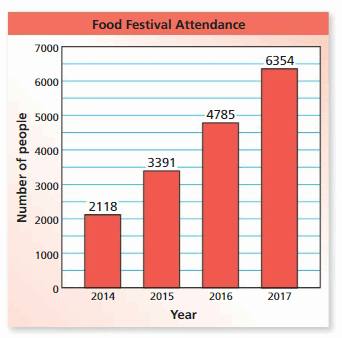
Question 13.
What is the total attendance at the food festival from 2014 to 2017?
The total attendance at the food festival from
2014 to 2017 is 16,648,
Explanation:
As shown in bar graph we add attendance from
year 2014 to 2017 as 2118 + 3391 + 4785 + 6354 =
2118
3391
4785
+6354
16,648
Therefore ,the total attendance at the food festival from
2014 to 2017 is 16,648.
Question 14.
How many times more people attended the food festival in 2017 than in 2014?
4,236 more people attended the food festival in 2017,
Explanation:
In Year 2017 people attended the food festival are 6354 and
in year 2014 it is 2118, So more people attended the food festival
in 2017 are 6354 – 2118 =
6354
-2118
4236
So, 4,236 more people attended the food festival in 2017.
Question 15.
What is the average attendance at the festival each year over the four-year period?
The average attendance at the festival each year
over the four-year period is 4162,
Explanation:
We have total attendance at the food festival from
2014 to 2017 is 16,648, Now the average attendance is
16648 ÷ 4 = 4162
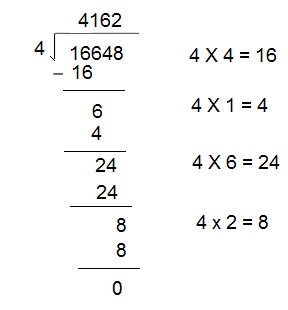
Therefore, The average attendance at the festival each year
over the four-year period is 4162.
Question 16.
The festival projects that the attendance for 2018 will be
twice the attendance in 2016. What is the
projected attendance for 2018?
The projected attendance for 2018 is 9570,
Explanation:
Given the attendance in 2016 is 4785,
the projected attendance for 2018 is
twice the attendance in 2016 is 2 X 4785 = 9570.
Therefore, the projected attendance for 2018 is 9570.
DIVIDING WHOLE NUMBERS
Divide. Use estimation to check your answer.
Question 17.
837 ÷ 27
837 ÷ 27 = 31,
Explanation:
Given expression as 837 ÷ 27 =
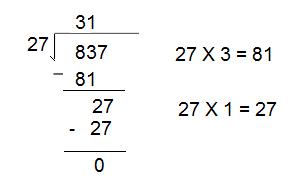
So, 837 ÷ 27 = 31.
Question 18.
1088 ÷ 34
1088 ÷ 34 = 32,
Explanation:
Given expression as 1088 ÷ 34 =

Therefore, 1088 ÷ 34 = 32.
Question 19.
903 ÷ 72
903 ÷ 72 = 12\(\frac{13}{24}\),
Explanation:
Given \(\frac{903}{72}\) as both goes in 3,
3 X 301, 3 X 24 = 72, (301, 24) = \(\frac{301}{24}\) as
numerator is greater we write as (12 X 24 + 13 by 24) =
12\(\frac{13}{24}\).
Question 20.
6409 ÷ 61
6409 ÷ 61 = 105\(\frac{4}{61}\),
Explanation:
Given \(\frac{6409}{61}\) as
numerator is greater we write as (105 X 61 + 4 by 61) =
105\(\frac{4}{61}\).
Question 21.
\(\frac{5986}{82}\)
\(\frac{5986}{82}\) = 73,
Explanation:
Given \(\frac{5986}{82}\) as both goes in 82,
82 X 73 = 5986 we get \(\frac{5986}{82}\) = 73.
Question 22.
6200 ÷ 163
6200 ÷ 163 = 38\(\frac{6}{163}\)
Explanation:
Given expression as \(\frac{6200}{163}\) here
numerator is greater we write as ( 38 X 163 + 6 by 163) =
38\(\frac{6}{163}\).
Question 23.
6255 ÷ 118
6255 ÷ 118 = 53\(\frac{1}{118}\)
Explanation:
Given expression as \(\frac{6255}{118}\), here
numerator is greater we write as (53 X 118 + 1 by 118) =
53\(\frac{1}{118}\).
Question 24.
\(\frac{588}{84}\)
\(\frac{588}{84}\) = 7
Explanation:
Given expression as \(\frac{588}{84}\) as
both goes in 84, 84 X 7 = 588, 84 X 1 = 84,
So \(\frac{588}{84}\) = 7.
Question 25.
7440 ÷ 124
7440 ÷ 124 = 60
Explanation:
Given expression as \(\frac{7440{124}\), here
both goes in 124 as 124 X 60 = 7440, 124 X 1 = 124, (60, 1),
therefore \(\frac{7440{124}\) = 60.
Question 26.
26,862 ÷ 407
26,862 ÷ 407 = 66
Explanation:
Given expression as \(\frac{26862}{407}\), here
both goes in 407 as 407 X 66 = 26862, 407 X 1 = 407, (66, 1),
therefore \(\frac{26862}{407}\) = 66.
Question 27.
8241 ÷ 173
8241 ÷ 173 = 47\(\frac{110}{173}\),
Explanation:
Given expression as \(\frac{8241}{173}\),
numerator is greater so we write as (47 X 173 + 110 by 173),
\(\frac{8241}{173}\) = 47\(\frac{110}{173}\).
Question 28.
\(\frac{33,505}{16}\)
\(\frac{33,505}{16}\) = 2094\(\frac{1}{16}\),
Explanation:
Given expression as \(\frac{33505}{16}\),
numerator is greater so we write as (2094 X 16 + 1 by 16),
therefore \(\frac{33505}{16}\) = 2094\(\frac{1}{16}\).
Question 29.
MODELING REAL LIFE
A pharmacist divides 364 pills into prescription bottles.
Each bottle contains 28 pills. How many bottles does
the pharmacist fill?
The pharmacist fills 13 bottles,
Explanation:
Given a pharmacist divides 364 pills into prescription bottles.
Each bottle contains 28 pills, number of bottles the pharmacist fill
are 364 ÷ 28 = 13,

therefore, the pharmacist fills 13 bottles.
YOU BE THE TEACHER
Your friend finds the quotient. Is your friend correct? Explain your reasoning.
Question 30.
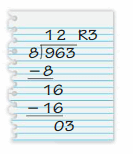
No, friend is incorrect as 963 ÷ 8 = 120 and remainder is 3
≠ 12 remainder 3,
Explanation:
Given expression as \(\frac{963}{8}\),
numerator is greater so we write as ( 120 X 8 + 3 by 8),
therefore \(\frac{963}{16}\) = 120\(\frac{3}{8}\) ≠
12 remainder 3, So friend is incorrect.
Question 31.

No, friend is incorrect as 1308 ÷ 12 = 109 ≠ 19,
Explanation:
Given expression as \(\frac{1308}{12}\),
numerator is greater and 12 X 109 = 1308
therefore \(\frac{1308}{12}\) = 109 ≠ 19,
So friend is incorrect.
GEOMETRY
Find the perimeter of the rectangle.
Question 32.
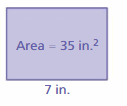
The perimeter of the rectangle is 24 inches,
Explanation:
Given area of rectangle as 35 in2 and width as 7 in,
we know area of rectangle is width X length,
35 = 7 X length, So length = 35 ÷ 7 = 5 ( 7 X 5 = 35),
So length of rectangle is 5 in, Now perimeter of
the rectangle is 2( length + width) = 2, (5 + 7) =
2 X 12 = 24 inches, therefore the perimeter of the
rectangle is 24 inches.
Question 33.

The perimeter of the rectangle is 42 ft,
Explanation:
Given area of rectangle as 108 ft2 and width as 12 ft,
we know area of rectangle is width X length,
108 = 12 X length, So length = 108 ÷ 12 = 9, ( 9 X 12 = 108),
So length of rectangle is 9 ft, Now perimeter of
the rectangle is 2( length + width) = 2 (9 + 12) = 2 X 21 = 42 ft,
therefore the perimeter of the rectangle is 42 ft.
Question 34.

The perimeter of the rectangle is 36 m,
Explanation:
Given area of rectangle as 80 m2 and width as 10 m,
we know area of rectangle is width X length,
80 = 10 X length, So length = 80 ÷ 10 = 8, (8 X 10 = 80),
So length of rectangle is 8 m, Now perimeter of
the rectangle is 2( length + width) = 2 (8 + 10) = 2 X 18 = 36 m,
therefore the perimeter of the rectangle is 36 m.
Question 35.
REASONING
You borrow bookcases like the one shown to display 943 books
at a book sale. You plan to put 22 books on each shelf.
No books will be on top of the bookcases.
a. How many bookcases must you borrow to display all the books?
b. You fill the shelves of each bookcase in order, starting
with the top shelf. How many books are on each shelf of the
last bookcase?

a. 9 bookcases I must borrow to display all the books,
b. Books in each shelf of the last bookcase are
shelf 1-22, shelf 2- 22, shelf 3-19, shelf 4-0, shelf 5 -0 books,
Explanation:
Given I borrow bookcases like the one shown to display
943 books at a book sale.I plan to put 22 books on each
shelf and no books will be on top of the bookcases.
a. Number of bookcases I must borrow to display
all the books are each bookcases have 5 shelves and in each
shelf I can put 22 books so in each bookcase I can put
5 X 22 = 110 books, Now 943 ÷ 110 =
\(\frac{943}{110}\) as numerator is greater we
write as ( 8 X 110 + 63 by 110) = 8\(\frac{63}{110}\) ,
means 8 bookcases and 63 books are still there,
so I require 9 bookcases to completely keep the books
in the shelves.
b. Now I fill the shelves of each bookcase in order, starting
with the top shelf. I have 63 books to arrange in 9 bookcase,
So books are on each shelf of the last bookcase are
shelf 1 – 22 books, now we are left with 63 – 22 = 41 books
shelf 2 = 22 books, now we are left with 41 – 22 = 19 books
shelf 3 = 19 books,
shelf 4 = 0 books,
shelf 5 = 0 books respectively.
Question 36.
DIG DEEPER!
The siding of a house is 2250 square feet. The siding needs two coats of paint.
a. What is the minimum cost of the paint needed to complete the job?
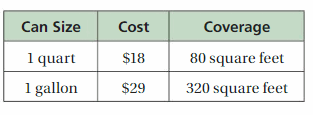
b. How much paint is left over when you spend the minimum amount?
a. The minimum cost of the paint needed to complete the job is $435,
b. \(\frac{30}{32}\) gallon paint is left over
when I spend the minimum amount,
Explanation:
Given the siding of a house is 2250 square feet.
The siding needs two coats of paint. So the siding
becomes 2 X 2250 = 4500 square feet,
Now we check with the paints needed If we take
1 quart it will cover 80 square feet and 1 quart cost is $ 18 means
we require 4500 ÷ 80 = \(\frac{4500}{80}\) as both goes
in 10, 10 X 450 = 4500, 10 X 8 = 80, (450 , 8) = \(\frac{450}{8}\)
as numerator is greater we write as ( 56 X 8 + 2 by 8) = 56\(\frac{2}{8}\) ,
we need approximately 57 quart, the cost will be
57 X $18 = $1026 to complete the job,
If we take 1 gallon it will cover 320 square feet and
1 gallon costs is $29 means we require 4500 ÷ 320 =
\(\frac{4500}{320}\) as both goes in 10, 10 X 450 = 4500,
10 X 32 = 320, (450 , 32) = \(\frac{450}{32}\)
as numerator is greater we write as ( 14 X 32 + 2 by 32) = 14\(\frac{2}{32}\) ,
we need approximately 15 gallons, the cost will be
15 X $29 = $435 to complete the job,
So the minimum cost of the paint needed to complete the job is $435.
b. The paint left over when I spend the minimum amount is
15 – \(\frac{450}{32}\) = (15 X 32 – 450 by 32) =
(480-450 by 32) = \(\frac{30}{32}\) gallon paint is left.
Question 37.
CRITICAL THINKING
Use the digits 3, 4, 6, and 9 to complete the division problem. Use each digit once.

36,000 ÷ 900 = 40 or 36,000 ÷ 400 = 90,
Explanation:
To complete the division problem we use digits
3, 4, 6, 9 each digit once as if we take first 3,4,
we are left with digits 6, 9,
34,000 ÷ 900 ≈ 38 not matches to complete the division problem,
34,000 ÷ 600 ≈ 57 not matches to complete the division problem,
next 36,000 ÷ 900 = 40 matches to complete the division problem,
36,000 ÷ 400 = 90 matches to complete the division problem,
next we take 4, 3 we are left with digits 6 ,9,
43,000 ÷ 900 ≈ 47 not matches to complete the division problem,
43,000 ÷ 600 ≈ 71 not matches to complete the division problem,
next we take 6, 4 we are left with digits 3 ,9,
64,000 ÷ 300 ≈ 213 not matches to complete the division problem,
64,000 ÷ 900 ≈ 71 not matches to complete the division problem,
next we take 9, 6 we are left with digits 3,4,
96,000 ÷ 300 ≈ 320 not matches to complete the division problem,
96,000 ÷ 400 ≈ 240 not matches to complete the division problem,
So to complete the division problem we write as
36,000 ÷ 900 = 40 or 36,000 ÷ 400 = 90.
Lesson 2.7 Dividing Decimals
EXPLORATION 1
Dividing Decimals
Work with a partner.
a. Write two division expressions represented by each area model. Then find the quotients. Explain how you found your answer.

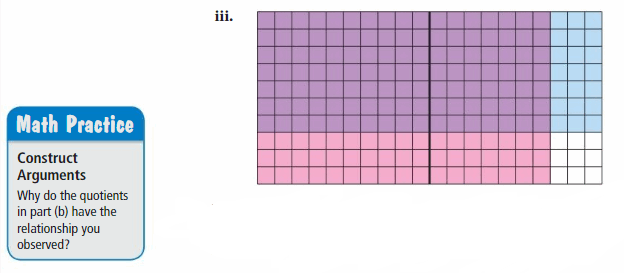
b. Use a calculator to find 119 ÷ 17, 11.9 ÷ 1.7, 1.19 ÷ 0.17
and 0.119 ÷ 0.017. What do you notice? Explain how you can
use long division to divide any pair of multi-digit decimals.
a. i. Two division expressions are \(\frac{40}{10}\) ÷ \(\frac{8}{10}\) =
\(\frac{5}{10}\) or \(\frac{40}{100}\) ÷ \(\frac{5}{10}\) =
\(\frac{8}{10}\),
ii. The division expression of whole part is
\(\frac{50}{100}\) ÷ \(\frac{5}{10}\) = \(\frac{10}{10}\) or
and \(\frac{50}{100}\) ÷ \(\frac{10}{10}\) = \(\frac{5}{10}\)
decimal part is \(\frac{25}{10}\) ÷ \(\frac{5}{10}\) = \(\frac{5}{10}\)
or \(\frac{25}{10}\) ÷ \(\frac{5}{10}\) = \(\frac{5}{10}\),
iii. The division expression of whole part is
\(\frac{70}{100}\) ÷ \(\frac{7}{10}\) = \(\frac{10}{10}\) or
\(\frac{70}{100}\) ÷ \(\frac{10}{10}\) = \(\frac{7}{10}\) and
decimal part is \(\frac{49}{10}\) ÷ \(\frac{7}{10}\) = \(\frac{7}{10}\),
b. 19 ÷ 17 = 7, 11.9 ÷ 1.7 = 7, 1.19 ÷ 0.17 = 7
and 0.119 ÷ 0.017 = 7,
To multiply decimals, first multiply as
if there is no decimal. Next, count the number of digits after
the decimal in each factor. Finally, put the same number of digits
behind the decimal in the product.
Explanation:
a. Two division expressions are \(\frac{40}{10}\) ÷ \(\frac{8}{10}\) =
\(\frac{5}{10}\) or \(\frac{40}{100}\) ÷ \(\frac{5}{10}\) =
\(\frac{8}{10}\), or
By counting the blocks in the area model found
the two division expressions are \(\frac{5}{10}\) ÷ \(\frac{10}{8}\)
first we write the reciprocal \(\frac{10}{8}\) and multiply as
\(\frac{5}{10}\) X \(\frac{8}{10}\)
and Step I: We multiply the numerators as 5 X 8 = 40
Step II: We multiply the denominators as 10 X 10 =100
Step III: We write the fraction in the simplest form as
\(\frac{40}{100}\), So \(\frac{5 X 8}{10 X 10}\) = \(\frac{40}{100}\).
If we see the area model the purple color blocks show
40 out of 100 blocks.
ii. The division expression of whole part is
\(\frac{50}{100}\) ÷ \(\frac{5}{10}\) = \(\frac{10}{10}\) or
and \(\frac{50}{100}\) ÷ \(\frac{10}{10}\) = \(\frac{5}{10}\)
decimal part is \(\frac{25}{10}\) ÷ \(\frac{5}{10}\) = \(\frac{5}{10}\)
or \(\frac{25}{10}\) ÷ \(\frac{5}{10}\) = \(\frac{5}{10}\), or
By counting the blocks in the area model found
the multiplication expression as \(\frac{10}{10}\) ÷ \(\frac{5}{10}\)
first we write the reciprocal \(\frac{10}{5}\) and multiply as
\(\frac{10}{10}\) X \(\frac{5}{10}\)
and Step I: We multiply the numerators as 10 X 5 = 50
Step II: We multiply the denominators as 10 X 10 =100
Step III: We write the fraction in the simplest form as
\(\frac{50}{100}\), So \(\frac{10 X 5}{10 X 10}\) = \(\frac{50}{100}\).
Now in decimal part we have \(\frac{5}{10}\) ÷ \(\frac{10}{5}\),
first we write the reciprocal \(\frac{10}{5}\) and multiply as
\(\frac{5}{10}\) X \(\frac{5}{10}\)
similar to whole part we do multiplication
Step I: We multiply the numerators as 5 X 5 = 25
Step II: We multiply the denominators as 10 X 10 =100
Step III: We write the fraction in the simplest form as
\(\frac{25}{100}\), therefore then the product results is
\(\frac{50}{100}\) + \(\frac{25}{100}\),
iii. The division expression of whole part is
\(\frac{70}{100}\) ÷ \(\frac{7}{10}\) = \(\frac{10}{10}\) or
\(\frac{70}{100}\) ÷ \(\frac{10}{10}\) = \(\frac{7}{10}\) and
decimal part is \(\frac{49}{10}\) ÷ \(\frac{7}{10}\) = \(\frac{7}{10}\), or By counting the blocks in the area model found
the division expression as \(\frac{10}{10}\) ÷ \(\frac{10}{7}\)
first we write the reciprocal \(\frac{10}{7}\) and multiply as
\(\frac{10}{10}\) X \(\frac{7}{10}\)
and Step I: We multiply the numerators as 10 X 7 = 70
Step II: We multiply the denominators as 10 X 10 =100
Step III: We write the fraction in the simplest form as
\(\frac{70}{100}\), So \(\frac{10 X 7}{10 X 10}\) = \(\frac{70}{100}\).
Now in decimal part we have \(\frac{7}{10}\) ÷ \(\frac{10}{7}\),
first we write the reciprocal \(\frac{10}{7}\) and multiply as
\(\frac{7}{10}\) X \(\frac{7}{10}\),
similar to whole part we do multiplication
Step I: We multiply the numerators as 7 X 7 = 49
Step II: We multiply the denominators as 10 X 10 =100
Step III: We write the fraction in the simplest form as
\(\frac{49}{100}\), therefore then the product results is
\(\frac{70}{100}\) + \(\frac{49}{100}\).
b. 19 ÷ 17 = 7, 11.9 ÷ 1.7 = 7, 1.19 ÷ 0.17 = 7
and 0.119 ÷ 0.017 = 7,
To multiply decimals, first multiply as
if there is no decimal. Next, count the number of digits after
the decimal in each factor. Finally, put the same number of digits
behind the decimal in the product.
Example: 7.6)19.76(
The first thing that we want to do when dividing decimals is to turn
the divisor into a whole number. We do this by moving the decimal
place to the right:
7.6 —–> 76
If we move the decimal over one place in the divisor,
we must also move the decimal over one place in the dividend:
19.76 —–>197.6
The new division problem should look as follows:
76 )197.6(
We’ve already placed the decimal in our answer.
When we divide decimals, we place the decimal directly above
the decimal in the dividend, but only after we’ve completed the
first two steps of moving the decimal point in the divisor and dividend.
Now we can divide like normal: 76)197.6(
Think: how many times can 76 go into 197
76 can go into 197 two times so we write a 2 over the 7
in the dividend:
76) 197.6(2.
Next, we multiply 2 and 76 and write that product underneath
the 197 and subtract:
76)197.6(2.
-152
45
Now we bring down the 6 from the dividend to make the 45 into a 456.
Think: how many times can 76 go into 456?
76 can go into 465 six times so we write a 6 above the 6 in the dividend:
76)197.6(2.6
-152
456
Next, we multiply 6 and 76 and write that product underneath
the 456 and subtract:

We are left with no remainder and a final quotient of 2.6.
2.7 Lesson
Key Idea
Dividing Decimals by Whole Numbers
Words
Place the decimal point in the quotient above the decimal point in the dividend.
Then divide as you would with whole numbers. Continue until there is no remainder.

Try It
Divide. Use estimation to check your answer.
Question 1.
36.4 ÷ 2
36.4 ÷ 2 = 18.2
Estimation is reasonable,
Explanation:
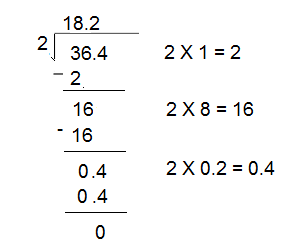
Therefore, 36.4 ÷ 2 = 18.2,
Estimation is 36 ÷ 2 = 18 is reasonable.
Question 2.
22.2 ÷ 6
22.2 ÷ 6 = 3.7,
Estimation is reasonable,
Explanation:
3.7
6)22.2 6 X 3 = 18
18
4.2 6 X 0.7 = 4.2
4.2
0
Therefore, 22.2 ÷ 6 = 3.7.
Estimation is 22 ÷ 6 = 3.66 is reasonale.
Question 3.
59.64 ÷ 7
59.64 ÷ 7 = 8.52,
Estimation is reasonable,
Explanation:
8.52
7)59.64 7 X 8 = 56
56
3.6 7 X 0.5 = 3.5
3.5
0.14 7 X 0.02 = 0.14
0.14
0
Therefore, 59.64 ÷ 7 = 8.52,
Estimation is 60 ÷ 7 = 8.57 is reasonale.
Question 4.
3.12 ÷ 16
3.12 ÷ 16 = 0.195,
Estimation is reasonable,
Explanation:
0.195
16)3.12 16 X 0.1 = 1.6
1.6
1.52 16 X 0.09 = 1.44
1.44
0.08 16 X 0.005 = 0.08
0.08
0
Therefore, 3.12 ÷ 16 = 0.195,
Estimation is 3 ÷ 16 = 0.187 is reasonale.
Question 5.
6.224 ÷ 4
6.224 ÷ 4 = 1.556,
Estimation is reasonable,
Explanation:
1.556
4)6.224 4 X 1 = 4
4
2 4 X 0.5 =2
2
0.2 4 X 0.05 = 0.2
0.2
0.024 4 X 0.006 = 0.024
0.024
0
Therefore, 6.224 ÷ 4 = 1.556,
Estimation is 6 ÷ 4 = 1.5 is reasonale.
Question 6.
43.407 ÷ 14
43.407 ÷ 14 = 3.1005,
Estimation is reasonable,
Explanation:
3.1005
14)43.407 14 X 3 = 42
42
1.4 14 X 0.1 = 1.4
1.4
0.007 14 X 0.0005 = 0.007
0.007
0
Therefore, 43.407 ÷ 14 = 3.1005,
Estimation is 43 ÷ 14 = 3.0714 is reasonale.
Key Idea
Dividing Decimals by Decimals
Words
Multiply the divisor and the dividend by a power of 10 to make
the divisor a whole number. Then place the decimal point in the
quotient above the decimal point in the dividend and divide as
you would with whole numbers. Continue until there is no remainder.

Try It
Divide. Check your answer.
Question 7.

 = 8
= 8
Explanation:
Given expression is 9.6 ÷ 1.2 =
8
1.2) 9.6 1.2 X 8 = 9.6
9.6
0
Therefore, 9.6 ÷ 1.2 = 9.6.
Question 8.

 = 17
= 17
Explanation:
17
3.4)57.8 3.4 X 17 = 57.8
57.8
0
Therefore, 57.8 ÷ 3.4 = 17.
Question 9.
21.643 ÷ 2.3
21.643 ÷ 2.3 = 9.41
Explanation:
9.41
2.3)21.643 2.3 X 9 = 20.7
20.7
0.94 2.3 X 0.4 = 0.92
0.92
0.023 2.3 X 0.01 = 0.023
0.023
0
Therefore, 21.643 ÷ 2.3 = 9.41.
Question 10.
0.459 ÷ 0.51
0.459 ÷ 0.51 =0.9
Explanation:
0.9
0.51)0.459 0.51 X 0.9 = 0.459
0.459
0
Therefore, 0.51 ÷ 0.9 = 0.459
Try It
Divide. Check your answer.
Question 11.
3.8 ÷ 0.16
3.8 ÷ 0.16 = 23.75
Explanation:
23.75
0.16)3.8 0.16 X 23 = 3.68
3.68
0.120 0.16 X 0.7 = 0.112
0.112
0.008 0.16 X 0.05 = 0.008
0.008
0
Therefore, 3.8 ÷ 0.16 = 23.75.
Question 12.
15.6 ÷ 0.78
15.6 ÷ 0.78 = 20
Explanation:
20
0.78)15.6 0.78 X 20 = 15.6
15.6
0
Therefore, 15.6 ÷ 0.78 = 20.
Question 13.
7.2 ÷ 0.048
7.2 ÷ 0.048 = 150
Explanation:
150
0.048)7.2 0.048 X 150 = 7.2
7.2
0
Therefore, 7.2 ÷ 0.048 = 7.2.
Question 14.
42 ÷ 3.75
42 ÷ 3.75 = 11.2
Explanation:
11.2
3.75) 42 3.75 X 11= 41.25
41.25
0.75 3.75 X 0.2 = 0.75
0.75
0
Therefore, 42 ÷ 3.75 = 11.2.
Self-Assessment for Concepts & Skills
Solve each exercise. Then rate your understanding of the success criteria in your journal.
DIVIDING DECIMALS
Divide. Check your answer.
Question 15.
37.7 ÷ 13
37.7 ÷ 13 = 2.9
Explanation:
2.9
13)37.7 13 X 2 = 26
26
11.7 13 X 0.9 = 11.7
11.7
0
Therefore, 37.7 ÷ 13 = 2.9.
Question 16.
33 ÷ 4.4
33 ÷ 4.4 = 7.5
Explanation:
7.5
4.4)33 4.4 X 7 = 30.8
30.8
2.2 4.4 X 0.5 = 2.2
2.2
0
Therefore, 33 ÷ 4.4 = 7.5.
Question 17.
2.16 ÷ 0.009
2.16 ÷ 0.009 = 240
Explanation:
240
0.009)2.16 0.009 X 240 = 2.16
2.16
0
Therefore, 33 ÷ 4.4 = 7.5.
Question 18.
NUMBER SENSE
Fix the one that is not correct.

The one is not correct,
6.1
4)2.44
Explanation:
0.61
4)2.44 4 X 0.61 = 2.44
2.44
0
2.44 ÷4 = 0.61 ≠ 6.1
6.1
4)2.44 is the one which is incorrect.
Question 19.
NUMBER SENSE
Rewrite  so that the divisor is a whole number.
so that the divisor is a whole number.
18.5 ÷ 2, Here the divisor is a whole number
Explanation:
Here 2.16 is the divisor,
We rewrite divisor as a whole number as 2.16 ≈ 2,
18.5 ÷ 2.
Question 20.
STRUCTURE
Write 1.8 ÷ 6 as a multiplication problem with a missing factor.
Explain your reasoning.
1.8 ÷ 6 as a multiplication problem with a missing factor is
6 X _____ = 1.8
Explanation:
Given expression as 1.8 ÷ 6 now we write as
a multiplication problem as
we know 1.8 ÷ 6 = 0.3 means , So 1.8 = 6 X 0.3,
Now we write 1.8 = 6 X 0.3, with as missing factor as
6 X _____ = 1.8.
Therefore, 1.8 ÷ 6 as a multiplication problem with a
missing factor is 6 X _____ = 1.8.
Self-Assessment for Problem Solving
Solve each exercise. Then rate your understanding of the success criteria in your journal.
Question 21.
A magazine subscription costs $29.88 for 12 issues or $15.24 for 6 issues.
Which subscription costs more per issue? How much more?
$15.24 for 6 issues subscription costs more per issue and
more it costs is $0.05,
Explanation:
Given a magazine subscription costs $29.88 for 12 issues,
means 1 issue it is $29.88 ÷ 12 =
2.49
12)29.88 12 X 2.49 = 29.33
29.88
0
So each issue it is $2.49,
Now we have $15.24 for 6 issues means for 1 issue it is
$15.24 ÷ 6 =
2.54
6)15.24 6 X 2.54 = 15.24
15.24
0
So each issue it is $2.54.
Now how much costs more is $2.54 minus $ 2.49 =
2.54
-2.49
0.05
Therefore, $15.24 for 6 issues subscription costs more per issue and
more it costs is $0.05.
Question 22.
The track of a roller coaster is 1.265 miles long. The ride lasts for 2.3 minutes.
What is the average speed of the roller coaster in miles per hour?
33 miles per hour is the average speed of the roller coaster,
Explanation:
Given the track of a roller coaster is 1.265 miles long.
The ride lasts for 2.3 minutes.
Now the average speed of the roller coaster in miles per hour is
we know speed = distance ÷ time = 1.265 ÷ 2.3 =
0.55
2.3)1.265 2.3 X 0.55 = 1.265
1.265
0
As speed = 0.55 miles per minute we convert it into hours as
0.55 X 60 = 33 miles per hour.
therefore, 33 miles per hour is the average speed of the roller coaster.
Question 23.
DIG DEEPER!
The table shows the number of visitors to a website each year for 4 years.
Does the number of visitors increase more from Year 1 to Year 2 or
from Year 3 to Year 4? How many times greater is the increase?
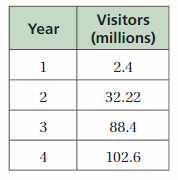
Yes, the number of visitors increased more from Year 1 to Year 2
compared to Year 3 to Year 4,
2.1 times greater is the increase.
Explanation:
Given the table shows the number of visitors to a website
each year for 4 years,
the number of visitors increase more from Year 1 to Year 2 is
Year 2 – 32.22 millions and Year 1- 2.4 millions,
increased in more are 32.22 -2.4 =
32.22
-2.4
29.82 millions
Now the number of visitors increase more from Year 3 to Year 4 is
Year 4 – 102.6 millions and Year 3 – 88.4 millions
increased in more are 102.6 – 88.4 =
102.6
-88.4
14.2 millions
The number of visitors increased more from Year 1 to Year 2 is when
compared to Year 3 to Year 4 , by more times is 29.82 ÷ 14.2 =
2.1
14.2)29.82 14.2 X 2 =
28.40
1.42 14.2 X 0.1 = 1.42
1.42
0
So it is 2.1 times greater in the increase from Year 1 to Year 2.
Dividing Decimals Homework & Practice 2.7
Review & Refresh
Divide.
Question 1.
84 ÷ 14
84 ÷ 14 = 6
Explanation:
Given expression as 84 ÷ 14 =
6
14)84 14 X 6 = 84
84
0
Therefore, 84 ÷ 14 = 6.
Question 2.
391 ÷ 23
391 ÷ 23 = 17
Explanation:
Given expression as 391 ÷ 23 =
17
23)391 23 X 1 = 23
23
161 23 X 7 = 161
161
0
Therefore, 391 ÷ 23 = 17.
Question 3.
1458 ÷ 54
1458 ÷ 54 = 27
Explanation:
Given expression as 1458 ÷ 54 =
27
54)1458 54 X 2 = 108
108
378 54 X 7 = 378
378
0
Therefore, 1458 ÷ 54 = 27.
Question 4.
\(\frac{68,134}{163}\)
\(\frac{68,134}{163}\) = 418,
Explanation:
Given expression as \(\frac{68,134}{163}\) =
418
163)68134 163 X 4 = 652
652
293 163 X 1 = 163
163
1304 163 X 8 = 1304
1304
0
Therefore, \(\frac{68,134}{163}\) = 418.
Question 5.
What is the value of 18 + 32 ÷ [3 × (8 − 5)]?
A. 3
B. 19
C. 27
D. 49
18 + 32 ÷ [3 × (8 − 5)] = 19, B,
Explanation:
Given 18 + 32 ÷ [3 × (8 − 5)] =
[3 X (8-5)] = 3 X 3 = 9
32 = 3 X 3 = 9,
Now 32 ÷ [3 × (8 − 5)] = 9 ÷ 9 = 1
so, 18 + 1 = 19,
therefore, 18 + 32 ÷ [3 × (8 − 5)] = 19, matches with B.
Add or subtract.
Question 6.
7.635 – 5.046
7.635 – 5.046 = 2.589
Explanation:
Given expression as 7.635 – 5.046 =
15,12,15
7.635
-5.046
2.589
therefore 7.635 – 5.046 = 2.589.
Question 7.
12.177 + 3.09
12.177 + 3.09 = 15.267,
Explanation:
1
12.177
+ 3.090
15.267
therefore 12.177 + 3.09 = 15.267.
Question 8.
14.008 – 9.433
14.008 – 9.433 = 4.575,
Explanation:
14,9,10
14.008
– 9.433
4.575
therefore 14.008 – 9.433 = 4.575.
Concepts, Skills, & Problem Solving
DIVIDING DECIMALS
Write two division expressions represented by the area model. Then find the quotients. Explain how you found your answer. (See Exploration 1, p. 87.)
Question 9.

Two division expressions are \(\frac{54}{100}\) ÷ \(\frac{6}{10}\) =
\(\frac{9}{10}\) or \(\frac{54}{100}\) ÷ \(\frac{9}{10}\) =
\(\frac{6}{10}\), we rewrite the expression as
\(\frac{54}{10}\) = \(\frac{6}{10}\) X \(\frac{9}{10}\),
Explanation:
By counting the blocks in the area model found
the two division expressions are \(\frac{54}{100}\) ÷ \(\frac{6}{10}\)
= \(\frac{9}{10}\)
If we see the area model the purple color blocks show
54 out of 100 blocks.
now we write as \(\frac{54}{100}\) = \(\frac{6}{10}\) X
\(\frac{9}{10}\), So,\(\frac{54}{100}\) = \(\frac{6 X 9}{10 X 10}\).
Question 10.
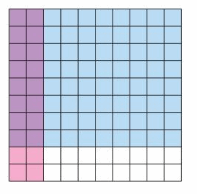
Two division expressions are \(\frac{16}{100}\) ÷ \(\frac{2}{10}\) =
\(\frac{8}{10}\) or \(\frac{16}{100}\) ÷ \(\frac{8}{10}\) =
\(\frac{2}{10}\), we rewrite the expression as
\(\frac{16}{100}\) = \(\frac{8}{10}\) X \(\frac{2}{10}\),
So \(\frac{16}{100}\) = \(\frac{8 X 2}{10 X 10}\).
Explanation:
By counting the blocks in the area model found
the two division expressions are \(\frac{16}{100}\) ÷ \(\frac{6}{10}\)
= \(\frac{2}{10}\) or \(\frac{16}{100}\) ÷ \(\frac{8}{10}\) =
\(\frac{2}{10}\)
If we see the area model the purple color blocks show
16 out of 100 blocks.
now we write as \(\frac{16}{100}\) = \(\frac{6}{10}\) X
\(\frac{2}{10}\), So,\(\frac{16}{100}\) = \(\frac{6 X 2}{10 X 10}\).
DIVIDING DECIMALS BY WHOLE NUMBERS
Divide. Use estimation to check your answer.
Question 11.

 = 4.2
= 4.2
Explanation:
Given expression as 25.2 ÷ 6
4.2
6)25.2 6 X 4 = 24
24
1.2 6 X 0.2 = 1.2
1.2
0
Therefore 25.2 ÷ 6 = 4.2.
Question 12.

 = 6.7
= 6.7
Explanation:
Given expression as 33.5 ÷ 5
6.7
5)33.5 5 X 6 = 30
30
3.5 5 X 0.7 = 3.5
3.5
0
Therefore 33.5 ÷ 5 = 6.7.
Question 13.

 = 0.5
= 0.5
Explanation:
Given expression as 3.5 ÷ 7
0.5
7)3.5 7 X 0.5 = 3.5
3.5
0
Therefore 3.5 ÷ 7 = 0.5.
Question 14.

 = 1.3
= 1.3
Explanation:
Given expression as 3.5 ÷ 7
0.5
7)3.5 7 X 0.5 = 3.5
3.5
0
Therefore 3.5 ÷ 7 = 0.5.
Question 15.
38.79 ÷ 9
38.79 ÷ 9 = 4.31
Explanation:
Given expression as 38.79 ÷ 9 =
4.31
9)38.79 9 X 4 = 36
36
2.7 9 X 0.3 = 2.7
2.7
0.09 9 X 0.01 = 0.09
0.09
0
Therefore, 38.79 ÷ 9 = 4.31.
Question 16.
37.72 ÷ 4
37.72 ÷ 4 = 9.43
Explanation:
Given expression as 37.72 ÷ 4 =
9.43
4)37.72 4 X 9 = 36
36
1.7 4 X 0.4 = 1.6
1.6
0.12 4 X 0.03 = 0.12
0.12
0
Therefore, 37.72 ÷ 4 = 9.43.
Question 17.
43.4 ÷ 7
43.4 ÷ 7 = 6.2
Explanation:
Given expression as 43.4 ÷ 7 =
6.2
7)43.4 7 X 6 = 42
42
1.4 7 X 0.2 = 1.4
1.4
0
Therefore, 43.4 ÷ 7 = 6.2.
Question 18.
22.505 ÷ 7
22.505 ÷ 7 = 3.215
Explanation:
Given expression as 22.505 ÷ 7 =
3.215
7)22.505 7 X 3 = 21
21
1.5 7 X 0.2 = 1.4
1.4
0.10 7 X 0.01 = 0.07
0.07
0.035 7 X 0.005 = 0.035
0.035
0
Therefore, 22.505 ÷ 7 = 3.215.
Question 19.
44.64 ÷ 8
44.64 ÷ 8 = 5.58
Explanation:
Given expression as 44.64 ÷ 8 =
5.58
8)44.64 8 X 5 = 40
40
4.6 8 X 0.5 = 4.0
4.0
0.64 8 X 0.08 = 0.64
0.64
0
Therefore, 44.64 ÷ 8 = 5.58.
Question 20.
0.294 ÷ 3
0.294 ÷ 3 = 0.098
Explanation:
Given expression as 0.294 ÷ 3 =
0.098
3)0.294 3 X 0.09 = 0.27
0.27
0.024 3 X 0.008 = 0.024
0.024
0
Therefore, 0.294 ÷ 3 = 0.098.
Question 21.
3.6 ÷ 24
3.6 ÷ 24 = 0.15
Explanation:
Given expression as 3.6÷ 24 =
0.15
24)3.6 24 X 0.1 = 2.16
2.4
1.2 24 X 0.05 = 1.2
1.2
0
Therefore, 3.6 ÷ 24 = 0.15
Question 22.
52.014 ÷ 20
52.014 ÷ 20 = 2.6007
Explanation:
Given expression as 52.014 ÷ 20 =
2.6007
20)52.014 20 X 2 = 40
40
12 20X 0.6 = 12
12
0.014 20 X 0.0007 = 0.014
0.014
0
Therefore, 520.14 ÷ 20 = 2.6007.
YOU BE THE TEACHER
Your friend finds the quotient. Is your friend correct? Explain your reasoning.
Question 23.
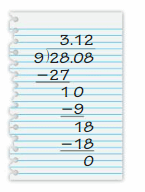
Yes, Friend is correct,
Explanation:
Given expression as 28.08 ÷ 9 =
3.12
9)28.08 9 X 3 = 27
27
1.0 9 X 0.1 = 0.9
0.9
0.18 9 X 0.02 = 0.18
0.18
0
Therefore, 28.08 ÷ 9 = 3.12,
which is same as friends findings, So friend is correct.
Question 24.
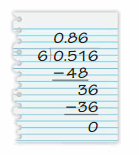
No, Friend is incorrect,
Explanation:
Given expression as 28.08 ÷ 9 =
0.086
6)0.516 6 X 0.08 = 0.48
0.48
0.036 6 X 0.006 = 0.036
0.036
0
Therefore, 0.516 ÷ 6 = 0.086,
which is not same as friends findings of 0.86,
So friend is incorrect.
Question 25.
PROBLEM SOLVING
You buy the same pair of pants in 3 different colors for $89.85.
How much does each pair of pants cost?
Each pair of pants cost $29.95,
Explanation:
Given I buy the same pair of pants in 3 different colors for $89.85.
means cost is same, now each pair of pants cost $89.85 ÷ 3 =
29.95
3)89.85 3 X 2 = 6
6
29 3 X 9 = 27
27
2.8 3 X 0.9 = 2.7
2.7
0.15 3 X 0.05 = 0.15
0.15
0
therefore, each pair of pants cost $29.95.
Question 26.
REASONING
Which pack of fruit punch is the best buy? Explain.
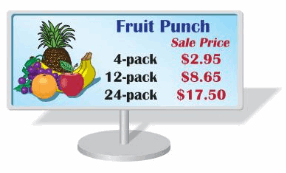
12 pack fruit punch is the best buy,
Explanation:
Given 4-pack is $2.95, 12 pack is $8.65 and 24 pack is $17.50,
now we will see how much each pack will cost seperatley as
i. 4 pack – $2.95 means 2.95 ÷ 4 =
0.7375
4)2.95 4 X 0.7 = 2.8
2.8
0.15 4 X 0.03 = 0.12
0.12
0.030 4 X 0.007 = 0.028
0.028
0.002 4 X 0.0005 = 0.002
0.002
0
So if we take 4 pack it will cost for 1 pack as 0.7375,
ii. 12 pack – $8.65 means 8.65 ÷ 12 =
0.72082
12)8.65 12 X 0.7 = 8.4
8.4
0.25 12 X 0.02 = 0.24
0.24
0.01000 12 X 0.0008 = 0.0096
0.00968
0.00032 12 X 0.00002 = 0.00024
0.00024
0.00008 remainder
So if we take 12 pack it will cost for 1 pack as 0.72082,
iii. 24 pack – $17.50 means 17.50 ÷ 24 =
0.72916
24)17.50 24 X 0.7 = 16.8
16.80
0.70 24 X 0.02 = 0.48
0.48
0.220 24 X 0.009 = 0.216
0.216
0.0040 24 X 0.0001 = 0.0024
0.0024
0.00160 24 X 0.00006 = 0.001444
0.00144
0.00016 remainder
So if we take 24 pack it will cost for 1 pack as 0.72916,
Now we compare we get 0.72082< 0.72916 < 0.7375,
therefore 12 pack fruit punch is the best buy.
DIVIDING DECIMALS
Divide. Check your answer.
Question 27.

 = 12,
= 12,
Explanation:
Given expression as 25.2 ÷ 2.1 =
12
2.1)25.2 2.1 X 12 = 25.2
25.2
0
Therefore, 25.2 ÷ 2.1 = 12.
Question 28.

 = 9,
= 9,
Explanation:
Given expression as 34.2 ÷ 3.8 =
9
3.8)34.2 3.8 X 9 = 34.2
34.2
0
Therefore, 34.2 ÷ 3.8 = 9.
Question 29.
36.47 ÷ 0.7
36.47 ÷ 0.7 = 52.1,
Explanation:
Given expression as 36.47 ÷ 0.7 =
52.1
0.7)36.47 0.7 X 52 = 36.4
36.4
0.07 0.7 X 0.1 = 0.07
0.07
0
Therefore, 36.47 ÷ 0.7 = 52.1.
Question 30.
0.984 ÷ 12.3
0.984 ÷ 12.3 = 0.08,
Explanation:
Given expression as 0.984 ÷ 12.3 =
0.08
12.3)0.984 12.3 X 0.08 = 0.984
0.984
0
Therefore, 0.984 ÷ 12.3 = 0.08.
Question 31.
6.64 ÷ 8.3
6.64 ÷ 8.3 = 0.8,
Explanation:
Given expression as 6.64 ÷ 8.3 =
0.8
8.3)6.64 8.3 X 0.8 = 6.64
6.64
0
Therefore, 6.64 ÷ 8.3 = 0.8.
Question 32.
83.266 ÷ 13.43
83.266 ÷ 13.43 = 6.2,
Explanation:
Given expression as 83.266 ÷ 13.43 =
6.2
13.43)83.266 13.43 X 6 = 80.58
80.58
2.686 13.43 X 0.2 = 2.686
2.686
0
Therefore, 83.266 ÷ 13.43 = 6.2.
Question 33.

 = 11.7,
= 11.7,
Explanation:
Given expression as 1.053 ÷ 0.09 =
11.7
0.09)1.053 0.09 X 11 = 0.99
0.99
0.063 0.09 X 0.7 = 0.063
0.063
0
Therefore, 1.053 ÷ 0.09 = 11.7.
Question 34.
35.903 ÷ 16.1
35.903 ÷ 16.1 = 2.23,
Explanation:
Given expression as 35.903 ÷ 16.1 =
2.23
16.1)35.903 16.1 X 2 = 32.2
32.2
3.70 16.1 X 0.2 = 3.22
3.22
0.483 16.1 X 0.03 = 0.483
0.483
0
Therefore, 35.903 ÷ 16.1 = 2.23.
Question 35.
0.996 ÷ 0.12
0.996 ÷ 0.12 = 8.3,
Explanation:
Given expression as 0.996 ÷ 0.12 =
8.3
0.12)0.996 0.12 X 8 = 0.96
0.96
0.036 0.12 X 0.3 = 0.036
0.036
0
Therefore, 0.996 ÷ 0.12 = 8.3.
Question 36.

 = 2.7,
= 2.7,
Explanation:
Given expression as 12.501 ÷ 4.63 =
2.7
4.63)12.501 4.63 X 2 = 9.26
9.26
3.241 4.63 X 0.7 = 3.241
3.241
0
Therefore, 12.501 ÷ 4.63 = 2.7.
Question 37.

 = 0.23,
= 0.23,
Explanation:
Given expression as 0.00115 ÷ 0.005 =
0.23
0.005)0.00115 0.005 X 0.2 = 0.001
0.001
0.00015 0.005 X 0.03 = 0.00015
0.00015
0
Therefore, 0.00115 ÷ 0.005 = 0.23.
Question 38.
56.7175 ÷ 4.63
56.7175 ÷ 4.63 = 12.25,
Explanation:
Given expression as 56.7175 ÷ 4.63 =
12.25
4.63)56.7175 4.63 X 12 = 55.56
55.56
1.1575 4.63 X 0.25 = 1.1575
1.1575
0
Therefore, 56.7175 ÷ 4.63 = 12.25.
Question 39.
4.23 ÷ 0.012
4.23 ÷ 0.012 = 352.5,
Explanation:
Given expression as 4.23 ÷ 0.012 =
352.5
0.012)4.23 0.012 X 352 = 4.224
4.224
0.006 0.012 X 0.5 = 0.006
0.03
0
Therefore, 4.23 ÷ 0.012 = 0.006.
Question 40.
0.52 ÷ 0.0013
0.52 ÷ 0.0013 = 400,
Explanation:
Given expression as 0.52 ÷ 0.0013 =
400
0.0013)0.52 0.0013 X 400 = 0.52
0.52
0
Therefore, 0.52 ÷ 0.0013 = 400.
Question 41.
95.04 ÷ 0.0132
95.04 ÷ 0.0132 = 7,200,
Explanation:
Given expression as 95.04 ÷ 0.0132 =
7200
0.0132)95.04 0.0132 X 700 = 95.04
95.04
0
Therefore, 95.04 ÷ 0.0132 = 7,200.
Question 42.
32.2 ÷ 0.07
32.2 ÷ 0.07 = 460,
Explanation:
Given expression as 32.2 ÷ 0.07 =
460
0.07)32.2 0.07 X 460 = 32.2
32.2
0
Therefore, 32.2 ÷ 0.07 = 460.
Question 43.

 = 40,
= 40,
Explanation:
Given expression as 54.8 ÷ 1.37 =
40
1.37)54.8 1.37 X 40 = 54.8
54.8
0
Therefore, 54.8 ÷ 1.37 = 40.
Question 44.
44.2 ÷ 3.25
44.2 ÷ 3.25 = 13.6,
Explanation:
Given expression as 44.2 ÷ 3.25 =
13.6
3.25)44.2 3.25 X 13 = 42.25
42.25
1.95 3.25 X 0.6 = 1.95
Therefore, 44.2 ÷ 3.25 = 13.6.
Question 45.

 = 12.5,
= 12.5,
Explanation:
Given expression as 50.5 ÷ 4.04 =
12.5
4.04)50.5 4.04 X 12 = 48.48
48.48
2.02 4.04 X 0.5 = 2.02
2.02
0
Therefore, 50.5 ÷ 4.04 = 12.5.
Question 46.
250 ÷ 0.008
250 ÷ 0.008 = 31250,
Explanation:
Given expression as 250 ÷ 0.008 =
31250
0.008)250 0.008 X 31250 = 250
250
0
Therefore, 250 ÷ 0.008 = 31250.
Question 47.
11.16 ÷ 0.062
11.16 ÷ 0.062 = 180,
Explanation:
Given expression as 11.16 ÷ 0.062 =
180
0.062)11.16 0.062 X 180 = 11.16
11.16
0
Therefore, 11.16 ÷ 0.062 = 180.
Question 48.

 = 66.8,
= 66.8,
Explanation:
Given expression as 835 ÷ 12.5 =
66.8
12.5)835 12.5 X 66 = 825
825
10 12.5 X 0.8 = 10
10
0
Therefore, 835 ÷ 12.5 = 66.8.
Question 49.
597.6 ÷ 12.45
597.6 ÷ 12.45 = 48,
Explanation:
Given expression as 597.6 ÷ 12.45 =
48
12.45)597.6 12.45 X 48 = 597.6
597.6
0
Therefore, 597.6 ÷ 12.45 = 48.
Question 50.

 = 272,
= 272,
Explanation:
Given expression as 118.32 ÷ 0.435 =
272
0.435)118.32 0.435 X 272 = 118.32
118.32
0
Therefore, 118.32 ÷ 0.435 = 272.
Question 51.
80.89 ÷ 8.425
80.89 ÷ 8.425 ≈ 9.60,
Explanation:
Explanation:
Given expression as 80.89 ÷ 8.425 =
9.60
8.425)80.89 8.425 X 9 = 75.825
75.825
5.065 8.425 X 0.6 = 5.055
5.055
0.010 remainder
Therefore, 80.89 ÷ 8.425 ≈ 9.60.
Question 52.
0.8 ÷ 0.6
0.8 ÷ 0.6 ≈ 1.33,
Explanation:
Given expression as 0.8 ÷ 0.6 =
1.33
0.6)0.8 0.6 X 1 = 75.825
0.6
0.20 0.6 X 0.3 = 0.18
0.18
0.020 0.6 X 0.03 = 0.018
0.018
0.002 remainder
Therefore, 0.8 ÷ 0.6 ≈ 1.33.
Question 53.
38.9 ÷ 6.44
38.9 ÷ 6.44 = 6.04,
Explanation:
Given expression as 38.9 ÷ 6.44 =
6.04
6.44)38.9 6.44 X 6 = 38.64
38.64
0.26 6.44 X 0.04 = 0.2576
0.2576
0.0024 remainder
Therefore, 38.9 ÷ 6.44 = 6.04.
Question 54.
11.6 ÷ 0.95
11.6 ÷ 0.95 = 12.2,
Explanation:
Given expression as 11.6 ÷ 0.95 =
12.2
0.95)11.6 0.95 X 12 = 11.4
11.4
0.2 0.95 X 0.2 = 0.19
0.19
0.01 remainder
Therefore, 11.6 ÷ 0.95 = 12.2.
Question 55.
YOU BE THE TEACHER
Your friend rewrites the problem. Is your friend correct? Explain your reasoning.

No, Friend is incorrect, 146.4 ÷ 0.32 ≠ 1.464 ÷ 32,
We rewrite as 1.464 ÷ 32 as 14640 ÷ 32,
Explanation:
Given 146.4 ÷ 0.32 —> 1.464 ÷ 32,
friend is incorrect as 146.4 ÷ 0.32 = 146.4 X 100 by 32 =
14640 by 32 ≠ 1.464 by 32, So friend is incorrect,
we rewrite 1.464 ÷ 32 as 14640 ÷ 32 which is correct to
146.4 ÷ 0.32 = 14640 ÷ 32.
ORDER OF OPERATIONS
Evaluate the expression.
Question 56.
7.68 + 3.18 ÷ 12
7.68 + 3.18 ÷ 12 = 7.945,
Explanation:
Given expression is 7.68 + 3.18 ÷ 12,
according to order of operations we take division first then
addition as 7.68 +(3.18 ÷ 12) =
First we calculate 3.18 ÷ 12 =
0.265
12)3.18 12 X 0.2 = 2.4
2.4
0.78 12 X 0.06 = 0.72
0.72
0.06 12 X 0.005 = 0.06
0.06
0
We got 3.18 ÷ 12 = 0.265, Now we add 7.68 as
7.680
+0.265
7.945
therefore, 7.68 + 3.18 ÷ 12 = 7.945.
Question 57.
10.56 ÷ 3 – 1.9
10.56 ÷ 3 – 1.9 = 1.62,
Explanation:
Given expression is 10.56 ÷ 3 – 1.9,
according to order of operations we take division first then
subtraction as (10.56 ÷ 3) – 1.9 =
First we calculate 10.56 ÷ 3 =
3.52
3)10.56 3 X 3 = 9
9.00
1.5 3 X 0.5 = 1.5
1.5
0.06 3 X 0.02 = 0.06
0.06
0
We got 10.56 ÷ 3 = 3.52, Now we subtract 1.9 from 3.52 as
3.52
-1.90
1.62
therefore 10.56 ÷ 3 – 1.9 = 1.62.
Question 58.
19.6 ÷ 7 × 9
19.6 ÷ 7 X 9 = 25.2,
Explanation:
Given expression is 19.6 ÷ 7 X 9,
according to order of operations we take division first then
multiplication as (19.6 ÷ 7) X 9 =
First we calculate 19.6 ÷ 7 =
2.8
7)19.6 7 X 2 = 14
14
5.6 7 X 0.8 = 5.6
5.6
0
We got 19.6 ÷ 7 = 2.8, Now we multiply 2.8 with 9 as
7
2.8 —- 1 decimal place
X 9
25.2 —- 1 decimal place
therefore 19.6 ÷ 7 X 9 = 25.2.
Question 59.
5.5 × 16.56 ÷ 9
5.5 × 16.56 ÷ 9 = 10.12,
Explanation:
Given expression is 5.5 × 16.56 ÷ 9
according to order of operations we take multiplication first then
division as (5.5 X 16.56) ÷ 9 =
First we calculate 5.5 X 16.56 =
2,2,3
2,2,3
16.56 —- 2 decimal places
X 5.5
0828
8280
91.08—- 2 decimal places
We got 5.5 X 16.56 = 91.08, Now we divide 91.08 with 9 as
10.12
9)91.08 9 X 10 = 90
90
1.0 9 X 0.1 = 0.9
0.9
0.18 9 X 0.02 = 0.18
0.18
0
therefore 5.5 × 16.56 ÷ 9 = 10.12.
Question 60.
35.25 ÷ 5 ÷ 3
35.25 ÷ 5 ÷ 3 = 2.35,
Explanation:
Given expression is 35.25 ÷ 5 ÷ 3,
according to order of operations we take division first then
division as (35.25 ÷ 5) ÷ 3 =
First we calculate 35.25 ÷ 5 =
7.05
5) 35.25 5 X 7 = 35
35
0.25 5 X 0.05 = 0.25
0.25
0
We got 35.25 ÷ 5 = 7.05, Now we divide 7.05 with 3 as
2.35
3) 7.05 3 X 2 = 6
6
1.0 3 X 0.3 = 0.9
0.9
0.15 3 X 0.05 = 0.15
0.15
0
therefore, 35.25 ÷ 5 ÷ 3 = 2.35.
Question 61.
13.41 × (5.4 ÷ 9)
13.41 × (5.4 ÷ 9) = 8.046,
Explanation:
Given expression is 13.41 X (5.4 ÷ 9),
according to order of operations we take division first then
multiplication so first we calculate 5.4 ÷ 9 =
0.6
9)5.4 9 X 0.6 = 5.4
5.4
0
We got 5.4 ÷ 9 = 0.6, Now we multiply 13.41 with 0.6 as
1, 2
13.41——2 decimal places
X 0.6 —– 1 decimal place
8.046——3 decimal places
therefore, 13.41 × (5.4 ÷ 9) = 8.046.
Question 62.
6.2 . (5.16 ÷ 6.45)
6.2 X (5.16 ÷ 6.45) = 4.96,
Explanation:
Given expression is 6.2 X (5.16 ÷ 6.45),
according to order of operations we take division first then
multiplication so first we calculate 5.16 ÷ 6.45 =
0.8
6.45)5.16 6.45 X 0.8 = 5.16
5.16
0
We got 5.16 ÷ 6.45 = 0.8, Now we multiply 6.2 with 0.8 as
1
6.2 —- 1 decimal place
X 0.8 —- 1 decimal place
496
000
4.96 —- 2 decimal places
therefore, 6.2 X (5.16 ÷ 6.45) = 4.96.
Question 63.
132.06 ÷ (42 + 2.6)
132.06 ÷ (42 + 2.6) = 7.1,
Explanation:
Given expression as 132.06 ÷ (42 + 2.6) , first we calculate
(42 + 2.6) = 4 X 4 + 2.6 = 16 + 2.6 =
16
+2.6
18.6
Now, we divide 132.06 with 18.6 as
7.1
18.6)132.06 18.6 X 7 = 130.2
130.2
1.86 18.6 X 0.1 = 1.86
1.86
0
therefore, 132.06 ÷ (42 + 2.6) = 7.1.
Question 64.
4.8[23.9841 ÷ (1.16 + 1.27)]
4.8[23.9841 ÷ (1.16 + 1.27)] = 47.376,
Explanation:
Given expression as 4.8[23.9841 ÷ (1.16 + 1.27)],
first we calculate (1.16 + 1.27) =
1
1.16
+1.27
2.43
next we calculate 23.9841 ÷ 2.43 as
9.87
2.43)23.9841 2.43 X 9 = 21.87
21.87
2.114 2.43 X 0.8 = 1.944
1.944
0.1701 2.43 X 0.07 = 0.1701
0.1701
0
Now we multiply 4.8 with 9.87 as
9.87 —– 2 decimal places
X4.8 —– 1 decimal place
7.896
39480
47.376—-3 decimal places
therefore, 4.8[23.9841 ÷ (1.16 + 1.27)] = 47.376.
Question 65.
MODELING REAL LIFE
A person’s running stride is about 1.14 times the person’s height.
Your friend’s stride is 5.472 feet. How tall is your friend?
My friend is 4.8 feet tall,
Explanation:
Given a person’s running stride is about 1.14 times the
person’s height. My friend’s stride is 5.472 feet so my friend
height is 5.472 ÷ 1.14 =
4.8
1.14)5.472 1.14 X 4 = 4.56
4.56
0.912 1.14 X 0.8 = 0.912
0.912
0
therefore, my friend is 4.8 feet tall.
Question 66.
PROBLEM SOLVING
You have 3.4 gigabytes available on your tablet.
A song is about 0.004 giga byte. How many songs can
you download onto your tablet?

I can download 850 songs onto my tablet,
Explanation:
Given I have 3.4 gigabytes available on my tablet.
A song is about 0.004 giga byte. I can download
3.4 ÷ 0.004 songs as
850
0.004)3.4 0.004 X 850 = 3.4
3.4
0
Therefore, I can download 850 songs onto my tablet.
REASONING
Without finding the quotient, copy and complete the
statement using <, >, or =. Explain your reasoning.
Question 67.

6.66 ÷ 0.74 = 66.6 ÷ 7.4,
Explanation:
Given expressions as 6.66 ÷ 0.74 , 66.6 ÷ 7.4, now
we write 66.6 ÷ 7.4 as 6.66 X 10 ÷ 7.4 = 6.66 ÷ 0.74
now both sides are equal, therefore
6.66 ÷ 0.74 = 66.6 ÷ 7.4.
Question 68.

32.2 ÷ 0.7 > 3.22 ÷ 7,
Explanation:
Given expressions as 32.2 ÷ 0.7, 3.22 ÷ 7,
now 32.2 ÷ 0.7 we write as 32.2 X 10 ÷ 7 = 32.2 ÷ 7,
now we compare 32.2 ÷ 7 and 3.22 ÷ 7 if we see 32.2
is greater than 3.22 and both are divided by 7 only,
the quotient of 32.2 will be greater than that of 3.22,
So 32.2 ÷ 0.7 > 3.22 ÷ 7.
Question 69.

160.72 ÷ 16.4 < 160.72 ÷ 1.64 ,
Explanation:
Given expressions as 160.72 ÷ 16.4 ,160.72 ÷ 1.64 ,
if we compare we have 160.72 ÷ 1.64 we can write as
160.72 X 10 ÷ 1.64 X 10 = 1607.2 ÷ 16.4 now if we compare
1607.2 is more than 160.72 and both are divided by 16.4,
So 160.72 ÷ 16.4 < 160.72 ÷ 1.64
Question 70.

75.6 ÷ 63 < 7.56 ÷ 0.63,
Explanation:
Given expressions as 75.6 ÷ 63 , 7.56 ÷ 0.63 ,
if we compare we have 75.6 ÷ 63 we can write as
0.756 X 100 ÷ 0.63 X 100 = 0.756 ÷ 0.63 now if we compare
7.56 is more than 0.756 and both are divided by 0.63,
So 75.6 ÷ 63 < 7.56 ÷ 0.63.
Question 71.
DIG DEEPER!
The table shows the top three times in a swimming event at the Summer Olympics.
The event consists of a team of four women swimming 100 meters each.
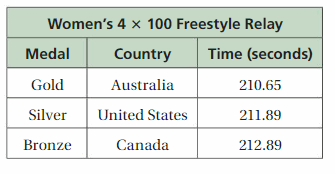
a. Suppose the times of all four swimmers on each team were the same.
For each team, how much time does it take a swimmer to swim 100 meters?
b. Suppose each U.S. swimmer completed 100 meters a quarter second faster.
Would the U.S. team have won the gold medal? Explain your reasoning.
a. For each team the time it will take a swimmer to
swim 100 meters is, for Australia it will be 52.6625 seconds,
for United states it will be 52.9725 seconds and
for Canada it will be 53.2225 seconds.
b. No, because even if U.S swimmer completes a quarter second faster
it becomes 210.89 which is more time than Australia team, So U.S team
would not have won the gold medal.
Explanation:
Given table shows the top three times in a swimming event
at the Summer Olympics.
a. For each team the time it will take a swimmer to
swim 100 meters is for Australia it will be 210.65 ÷ 4 =
52.6625
4)210.65 4 X 5 = 20
20
10 4 X 2 = 8
8
2.6 4 X 0.6 = 2.4
2.4
0.25 4 X 0.06 = 0.24
0.24
0.010 4 X 0.002 = 0.008
0.008
0.002 4 X 0.0005 = 0.002
0.002
0
for Australia it will be 52.6625 seconds,
Now for United States 211.89 ÷ 4 =
52.9725
4)211.89 4 X 5 = 20
20
11 4 X 2 = 8
08
3.8 4 X 0.9 = 3.6
3.6
0.29 4 X 0.07 = 0.28
0.28
0.010 4 X 0.002 = 0.008
0.008
0.002 4 X 0.0005 = 0.002
0.002
0
for United States it will be 52.9725 seconds,
Now for Canada it will be 212.89 ÷ 4 =
53.2225
4)212.89 4 X 5 = 20
20
12 4 X 3 = 12
12
0.8 4 X 0.2 = 0.8
0.8
0.09 4 X 0.02 = 0.08
0.08
0.010 4 X 0.002 = 0.008
0.008
0.002 4 X 0.0005 = 0.002
0.002
0
for Canada it will be 53.2225 seconds,
b. If each U.S. swimmer completed 100 meters a quarter second faster,
we will see the U.S. team have won the gold medal or not as
quarter second faster 4 women in each team means 1 second,
so it would have finished in 211.89 – 1 =
211.89
– 1.00
210.89
Now comparing with Australia it will be 210.65 even then it is
210.89
-210.65
0.24
So U.S team would have taken 0.24 seconds more,
therefore U.S team would not have won the gold medal.
Question 72.
PROBLEM SOLVING
To approximate the number of bees in a hive, multiply the number
of bees that leave the hive in one minute by 3 and divide by 0.014.
You count 25 bees leaving a hive in one minute. How many bees are in the hive?
 There are 5357 bees are in the hive,
There are 5357 bees are in the hive,
Explanation:
Given to approximate the number of bees in a hive,
multiply the number of bees that leave the hive in one
minute by 3 and divide by 0.014. I count 25 bees leaving
a hive in one minutes so number of bees in the hive are
(25 X 3) ÷ 0.014 = 75 ÷ 0.014 =
5357
0.014)75.000 0.014 X 5357 = 74.998
74.998
0.002 remainder
therefore there are 5357 bees are in the hive.
Question 73.
PROBLEM SOLVING
You are saving money to buy a new bicycle that costs $155.75.
You have $30 and plan to save $5 each week. Your aunt decides
to give you an additional $10 each week.
a. How many weeks will you have to save until you
have enough money to buy the bicycle?
b. How many more weeks would you have to save to
buy a new bicycle that costs $203.89? Explain how you found your answer.
a. 9 weeks I have to save until I have enough money to buy
the bicycle.
b. 3 weeks more I have to save to buy a new bicycle that
costs $203.89.
Explanation:
a. Given I am saving money to buy a new bicycle that costs $155.75.
I have $30 and plan to save $5 each week. my aunt decides
to give me an additional $10 each week. So number of weeks
will I have to save until I have enough money to buy the bicycle is,
I alreday have $30 means I need to save is $155.75 – $30 = $125.75,
every week I can save $5 + $10 = $15,Now weeks it will take is
$125.75 ÷ 15 =
8.383
15)125.75 15 X 8 = 120
120
5.75 15 X 0.3 = 4.5
4.50
1.25 15 X 0.08 = 1.20
1.20
0.050 15 X 0.003 = 0.045
0.045
0.0050 remainder
therefore approximately I need to wait 9 weeks,
b. Number of more weeks would you have to save to
buy a new bicycle that costs $203.89 , $ 203.89 – $30 =
$173.89 I need to save, So number of weeks now is
$173.89 ÷ 15 =
11.59
15)173.89 15 X 11 = 165
165
8.89 15 X 0.5 = 7.5
7.50
1.39 15 X 0.09 =1.35
1.35
0.04 remainder
Therefore approximately I need to wait 12 weeks,
So more number of weeks would I have to save to
buy a new bicycle that costs $203.89 is 3 weeks.
Question 74.
PRECISION
A store sells applesauce in two sizes.
a. How many bowls of applesauce fit in a jar?
Round your answer to the nearest hundredth.
b. Explain two ways to find the better buy.
c. Which is the better buy?
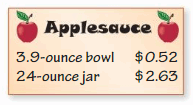
a. Number of bowls of applesauce fit in a jar,
rounding answer to the nearest hundredth is 6.15.
b. i. First way is Dividing to find 1 ounce of applesauce
seperately,
ii. Now we have unitary method,
c. The better buy is 24 ounce jar,
Explanation:
Given 3.9 ounce is bowl, So number of bowls of
applesauce fit in a jar is 24 ÷ 3.9 =
6.153
3.9)24 3.9 X 6 = 23.4
23.4
0.6 3.9 X 0.1 = 0.39
0.39
0.21 3.9 X 0.05 = 0.195
0.195
0.015 3.9 X 0.003 = 0.0117
0.011
0.004 remainder
therefore numberof bowls of applesauce fit in a jar,
rounding answer to the nearest hundredth is 6.15.
b. First way :
1 ounce bowl is $0.52 ÷ 3.9
0.133
3.9)0.52 3.9 X 0.1 = 0.39
0.39
0.130 3.9 X 0.03 = 0.117
0.117
0.0130 3.9 X 0.003 = 0.0117
0.0117
0.0013 remainder
So 1 ounce bowl is $0.133
Now 1 ounce jar is $2.63 ÷ 24
0.109
24)2.63 24 X 0.1 = 2.4
2.4
0.230 24 X 0.009 = 0.216
0.216
0.014 remainder
So 1 ounce jar is $0.109
Second way :
We know unitary methods we have 3.9 ounce bowl is $0.52,
24 once jar is $2.63 as both goes in 3 (3.9,24) we have
1 ounce bowl will be 3.9 ÷ 3 = 0.52 ÷ 3; 1.3 = 0.173,
Now 0.173 ÷ 1.3 =
0.133
1.3)0.173 1.3 X 0.133 = 0.1729
0.1729
0.0001 remainder
So it is $0.1333 for 1 ounce bowl
Now 1 ounce jar is 24 ÷ 3 = 2.63 ÷ 3; 8 = 0.876
Now 0.876 ÷ 8 =
0.1095
8)0.876 8 X 0.1095 = 0.876
0.876
0
So now 1 ounce jar is $0.1095,
C. We have 1 ounce bowl is $0.133 and 1 ounce jar is
$0.109, so on comparing $0.109< $0.133 jar is the better buy.
Question 75.
GEOMETRY
The large rectangle’s dimensions are three times the dimensions
of the small rectangle.
a. How many times greater is the perimeter of the large rectangle than the
perimeter of the small rectangle?
b. How many times greater is the area of the large rectangle than the
area of the small rectangle?
c. Are the answers to parts (a) and (b) the same? Explain why or why not.
d. What happens in parts (a) and (b) if the dimensions of the large rectangle
are two times the dimensions of the small rectangle?
a. It will be 3 times greater is the perimeter of the large rectangle than the
perimeter of the small rectangle,
b. It will be 9 times greater is the area of the large rectangle than the
area of the small rectangle.
c. No, because perimeter will be measured in feet and
area is measured in square feet.
d. Perimeter will be 2 times more in large rectangle and
4 times in area in large rectangle than the small rectangle.
Explanation:
Given the large rectangle’s dimensions are three times the
dimensions of the small rectangle means lets take the
smaller rectangle length as x and width y , Then the larger ones
will be length 3x and width will be 3y,
a. Now perimeter of both we know perimeter is
length + breadth for smaller it will be (x+y) and for
larger it will be 3x + 3y = 3(x + y), So It will be 3 times
greater is the perimeter of the large rectangle than the
perimeter of the small rectangle.
b. Now we know area of rectangle is length X breadth,
we have for small rectangle as x X y = xy and for large it
is 3x X 3y = 9xy which is 9 times greater is the area of the large
rectangle than the area of the small rectangle.
c. The answers are not the same in part a and part b,
because one will be measured in feet and other is square feet,
( one is adding and other is multiplying) both differs.
d. Now if the dimensions of the large rectangle
are two times the dimensions of the small rectangle
then perimeter becomes as for small it is x + y and for
large it is 2x + 2y = 2(x + y) and area for small is xy and large
2x X 2y = 4xy, means perimeter will be 2 times more in large rectangle
and 4 times in area in large rectangle than the small rectangle.
Fractions and Decimals Connecting Concepts
2 Connecting Concepts
Using the Problem-Solving Plan
Question 1.
You change the water jug on the water cooler.
How many glasses can be completely filled before you need to
change the water jug again?
Understand the problem
You know the capacities of the water jug and the glass.
You are asked to determine how many glasses the water jug can fill.
Make a plan.2
First, use what you know about converting measures to
find the number of fluid ounces in 5 gallons. Then divide this amount
by the capacity of the glass to find the number of glasses that can be filled.
Solve and check.
Use the plan to solve the problem. Then check your solution.
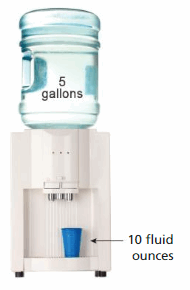
64 glasses can be completely filled before we need to
change the water jug again,
Explanation:
We know 1 gallons is equal to 128 fluid ounce,
So in 5 gallons we have 5 X 128 = 640 fluid ounces water
is there in 5 gallons water jug.
Now we have 1 glass has 10 fluid ounces of water then in
640 it will be 640 ÷ 10 = 64,
therefore 64 glasses can be completely filled before we need to
change the water jug again.
Question 2.
Two ferries just departed from their docks at the same time.
Ferry A departs from its dock every 1.2 hours. Ferry B departs
from its dock every 1.8 hours. How long will it be until both ferries
depart from their docks at the same time again?

It will be at 3.6 hours until both ferries depart from their
docks at the same time again.
Explanation:
Given two ferries just departed from their docks at the same time.
Ferry A departs from its dock every 1.2 hours. Ferry B departs
from its dock every 1.8 hours. So the ratio is 1.2 : 1.8 = 2 : 3,
we use cross product for equal hours, ratios as
both meet at 1.2 X 3 = 3.6 hours or 1.8 X 2 = 3.6 hours,
So,It will be at 3.6 hours until both ferries depart from their
docks at the same time again.
Question 3.
You want to paint the ceiling of your bedroom. The ceiling has
two square skylights as shown. Each skylight has a side length of
1\(\frac{7}{8}\) feet. How many square feet will you paint?
Justify your answer.

I will paint 132\(\frac{62}{64}\) square feet,
Explanation:
Given the length and width of rectangle as
10 ft and 14 ft, Area of rectangle is length X breadth=
10 X 14 = 140 square feet,
Now we have 2 square sky light with 1\(\frac{7}{8}\) feet,
so area of skylight is 1\(\frac{7}{8}\) X 1\(\frac{7}{8}\) =
frist we write mixed fraction into fraction as (1 X 8 + 7 by 8) =
\(\frac{15}{8}\) X \(\frac{15}{8}\) =\(\frac{15 X 15}{8 X 8}\) =
\(\frac{225}{64}\) square feet, So 2 sky lighta are there so
\(\frac{225}{64}\) + \(\frac{225}{64}\) as
denominators are same we add numerators as
(225 +225 = 450) we get \(\frac{450}{64}\) square feet,
We have area of rectangle as 140 square feet and 2 skylights as
\(\frac{450}{64}\) square feet, So we will paint
140 – \(\frac{450}{64}\) = \(\frac{8960-450}{64}\) =
\(\frac{8510}{64}\) as numerator is greater we write as
(132 X 64 + 62 by 64) = 132\(\frac{62}{64}\) square feet
i will paint.
Performance Task
Space Explorers
At the beginning of this chapter, you watched a STEAM video called “Space is Big.”
You are now ready to complete the performance task for this video, available at BigIdeasMath.com. Be sure to use the problem-solving complan as you work through the performance task.

Fractions and Decimals Chapter Review
2 Chapter Review
Review Vocabulary
Write the definition and give an example of each vocabulary term.

Reciprocals or Multiplicative Invesrses :
A reciprocal, or multiplicative inverse, is simply one of a pair of
numbers that, when multiplied together, equal 1.
If you can reduce the number to a fraction, finding the
reciprocal is simply a matter of transposing the numerator and
the denominator.
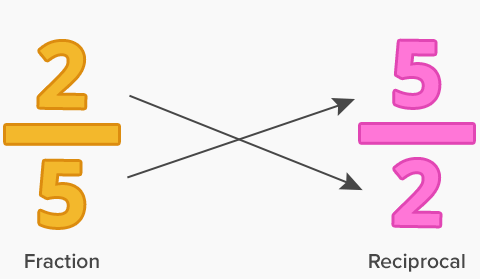
Graphic Organizers
You can use a Summary Triangle to explain a concept. Here is an example of a Summary Triangle for dividing fractions.
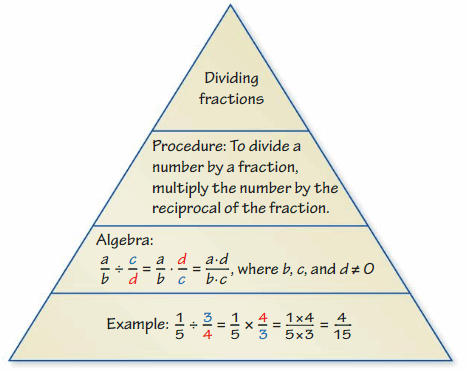
Choose and complete a graphic organizer to help you study the concept.
- multiplying fractions
- multiplying mixed numbers
- reciprocals
- dividing mixed numbers
- adding and subtracting decimals
- multiplying decimals by decimals
- dividing whole numbers
- dividing decimals by decimals
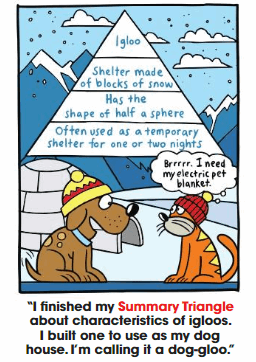
1. multiplying fractions:
To multiply fractions :
a. Simplify the resulting fraction if possible.
b. Simplify the fractions if not in lowest terms.
c. Multiply the numerators of the fractions to get the new numerator,
Multiply the denominators of the fractions to get the new denominator.
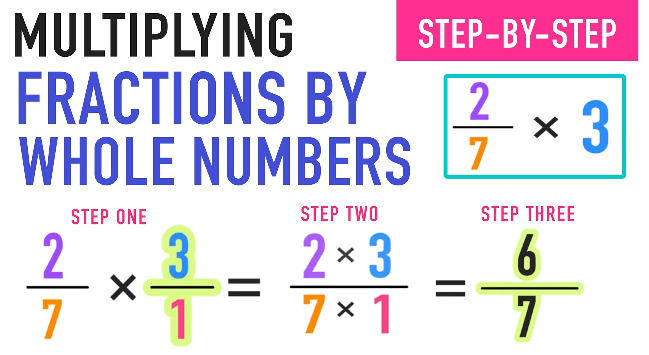
2. multiplying mixed numbers :
A mixed number is a number that contains a whole number and a fraction,
for instance 2\(\frac{1}{2}\) is a mixed number.
Mixed numbers can be multiplied by first converting them
to improper fractions. Below are the general rules for
multiplying mixed numbers:
* Convert the mixed numbers to improper fractions first.
* Multiply the numerators from each fraction to each other
and place the product at the top.
* Multiply the denominators of each fraction by each other
(the numbers on the bottom). The product is the denominator
of the new fraction.
* Simplify or reduce the final answer to the lowest terms possible.
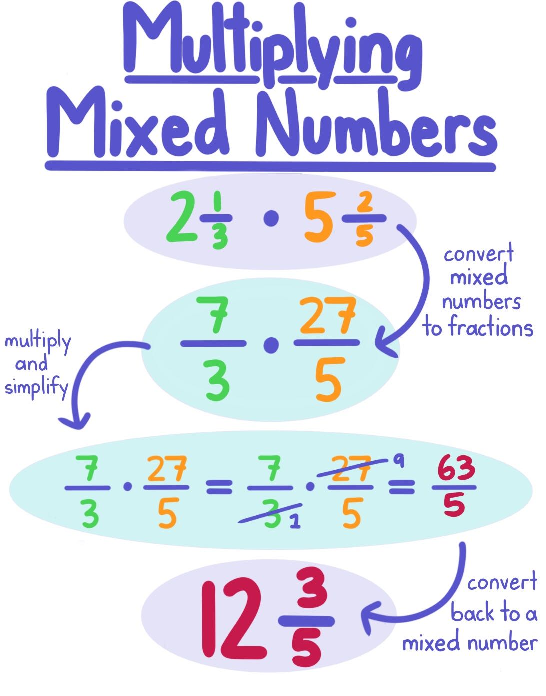
3. reciprocals :
The reciprocal or multiplicative inverse of a number
is the number which, when multiplied by x , gives 1,
So, the product of a number and its reciprocal is
.
(This is sometimes called the property of reciprocals),
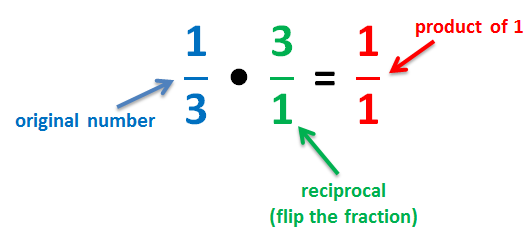
4. dividing mixed numbers :
Steps for dividing mixed numbers.
a. Change each mixed number to an improper fraction.
b. Multiply by the reciprocal of the divisor, simplifying if possible.
c. Put answer in lowest terms.
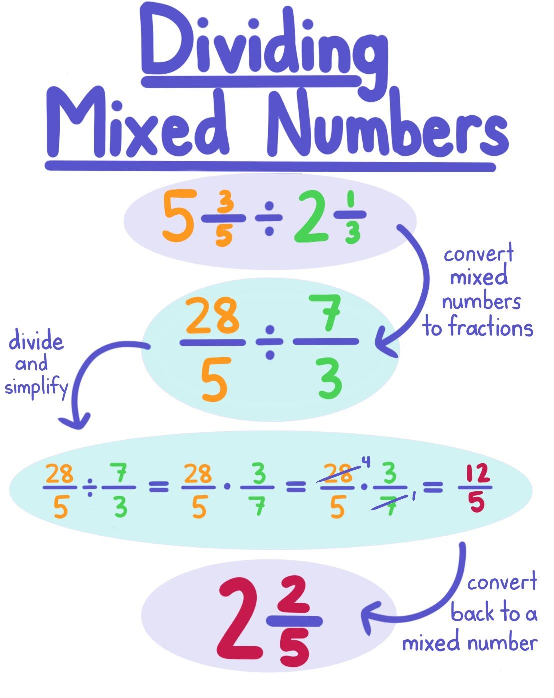
5. adding and subtracting decimals :
Step 1: Line up the numbers vertically so that the decimal
points all lie on a vertical line.
Step 2: Add extra zeros to the right of the number so that
each number has the same number of digits to the right
of the decimal place.
Step 3: Subtract the numbers as you would whole numbers.

Chapter Self-Assessment
As you complete the exercises, use the scale below to rate your understanding of the success criteria in your journal.

2.1 Multiplying Fractions (pp. 45-52)
Multiply. Write the answer in simplest form.
Question 1.

 = \(\frac{16}{99}\),
= \(\frac{16}{99}\),
Explanation:
Given expression as \(\frac{2}{9}\) X\(\frac{8}{11}\) =
Step I: We multiply the numerators as 2 X 8 = 16
Step II: We multiply the denominators as 9 X 11 =99
Step III: We write the fraction in the simplest form as
\(\frac{16}{99}\),
So \(\frac{2}{9}\) X\(\frac{8}{11}\) = \(\frac{16}{99}\).
Question 2.

 = \(\frac{6}{25}\),
= \(\frac{6}{25}\),
Explanation:
Given expression as \(\frac{3}{10}\) X \(\frac{4}{5}\) =
Step I: We multiply the numerators as 3 X 4 = 12
Step II: We multiply the denominators as 10 X 5 =50
Step III: We write the fraction in the simplest form as
\(\frac{12}{50}\), as both goes in 2 we
can further simplify as 2 X 6 = 12, 2 X 25 = 50, (6,25) = \(\frac{6}{25}\),
So \(\frac{3}{10}\) X \(\frac{4}{5}\) = \(\frac{6}{25}\).
Question 3.

 = \(\frac{184}{15}\) or 12\(\frac{4}{15}\),
= \(\frac{184}{15}\) or 12\(\frac{4}{15}\),
Explanation:
Given expression as 2\(\frac{3}{10}\) X 5\(\frac{1}{3}\),
we write mixed fraction as fraction 2\(\frac{3}{10}\) =
(2 x 10 + 3 by 10) = \(\frac{23}{10}\) and 5\(\frac{1}{3}\) as
( 5 X 3 + 1 by 3) = \(\frac{16}{3}\), Now we multiply as
\(\frac{23}{10}\) X \(\frac{16}{3}\)
Step I: We multiply the numerators as 23 X 16 = 368
Step II: We multiply the denominators as 10 X 3 =30
Step III: We write the fraction in the simplest form as
\(\frac{368}{30}\), as both goes in 2,
we can further simplify as 2 X 184 = 368, 2 X 15 = 30, (184,15) = \(\frac{184}{15}\),
as numerator is greater we write as (12 X 15 + 4 by 15) = 12\(\frac{4}{15}\),
So 2\(\frac{3}{10}\) X 5\(\frac{1}{3}\) = \(\frac{184}{15}\) or 12\(\frac{4}{15}\).
Question 4.

 = \(\frac{80}{63}\) or 1\(\frac{17}{63}\),
= \(\frac{80}{63}\) or 1\(\frac{17}{63}\),
Explanation:
Given expression as \(\frac{2}{7}\) X 4\(\frac{4}{9}\),
we write mixed fraction as fraction 4\(\frac{4}{9}\) =
(4 x 9 + 4 by 9) = \(\frac{40}{9}\), Now we multiply as
\(\frac{2}{7}\) X \(\frac{40}{9}\)
Step I: We multiply the numerators as 2 X 40 = 80
Step II: We multiply the denominators as 7 X 9 =63
Step III: We write the fraction in the simplest form as
\(\frac{80}{63}\), as numerator is greater we write as
(1 X 63 + 17 by 63) = 1\(\frac{17}{63}\),
So, \(\frac{2}{7}\) X 4\(\frac{4}{9}\) = \(\frac{80}{63}\) or 1\(\frac{17}{63}\).
Question 5.
Write two fractions whose product is \(\frac{21}{32}\).
The two fractions can be \(\frac{7}{8}\) or \(\frac{3}{4}\),
whose product is \(\frac{21}{32}\),
Explanation:
Given to find two fractions whose product is \(\frac{21}{32}\),
We can take factors of 21 are 1, 3, 7, 21, So numerators can be
(1,21) or (3, 7), now factors of 32 are 1, 2, 4, 8, 16, and 32,
denominators can be (1, 32) or (2, 16) or (4, 8), So the two fractions
can be \(\frac{7}{8}\) or \(\frac{3}{4}\) whose
product is \(\frac{7 X 3 }{8 X 4}\) or \(\frac{21}{32}\).
Question 6.
A costume designer needs to make 12 costumes for the school play.
Each costume requires 2\(\frac{2}{3}\) yards of fabric.
How many yards of fabric does the costume designer need to
make all the costumes?
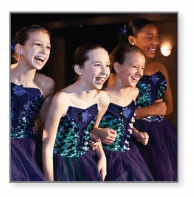
The costume designer need 32 yards of fabric to
make all the costumes,
Explanation:
Given a costume designer needs to make 12 costumes
for the school play. Each costume requires 2\(\frac{2}{3}\) yards of fabric.
So for 12 costumes we require 12 X 2\(\frac{2}{3}\) yards of fabric=
first we write mixed fraction into fraction as 2\(\frac{2}{3}\) =
(2 X 3 + 2 by 3) = \(\frac{8}{3}\) So 12 X \(\frac{8}{3}\) =
\(\frac{12 X 8}{3}\) = \(\frac{96}{3}\) as it goes in 3,
3 X 32 = 96 we get \(\frac{96}{3}\) = 32.
therefore the costume designer need 32 yards of fabric to
make all the costumes.
Question 7.
You spend \(\frac{4}{5}\) of an hour on your homework.
You spend \(\frac{1}{2}\) of that time working on your
science homework. How many minutes do you spend working on
science homework?
I have spent 24 minutes working on science homework,
Explanation:
Given I spend \(\frac{4}{5}\) of an hour on my homework.
I have spend \(\frac{1}{2}\) of that time working on my
science homework. So time spent for working on science homework is
\(\frac{4}{5}\) X \(\frac{1}{2}\) = \(\frac{4 X 1}{5 X 2}\) =
\(\frac{4}{10}\) as further can be simplified as both
goes in 2, 2 X 2 = 4 , 2 X 5 = 10, (2, 5) = \(\frac{2}{5}\) hours,
now we convert into minutes as 1 hour is equal to
60 minutes, So \(\frac{2}{5}\) X 60 = \(\frac{2 X 60}{5}\) =
\(\frac{120}{5}\) as 5 X 24 =120 we get \(\frac{120}{5}\) = 24,
therefore I have spent 24 minutes working on science homework.
2.2 Dividing Fractions (pp. 53-60)
Divide. Write the answer in simplest form.
Question 8.

 = \(\frac{9}{10}\),
= \(\frac{9}{10}\),
Explanation:
Given expressions as \(\frac{3}{4}\) ÷ \(\frac{5}{6}\),
we write reciprocal of the fraction \(\frac{5}{6}\) as \(\frac{6}{5}\)
and multiply as \(\frac{3}{4}\) X \(\frac{6}{5}\) =
\(\frac{3 X 6}{4 X 5}\) = \(\frac{18}{20}\),
we can further simplify as both goes in 2, 2 X 9 = 18 and 2 X 10 = 20,
(9,10)=\(\frac{9}{10}\). Therefore \(\frac{3}{4}\) ÷
\(\frac{5}{6}\) = \(\frac{9}{10}\).
Question 9.

 = \(\frac{1}{20}\),
= \(\frac{1}{20}\),
Explanation:
Given expressions as \(\frac{2}{5}\) ÷ 8
we write reciprocal of the fraction 8 as \(\frac{1}{8}\)
and multiply as \(\frac{2}{5}\) X \(\frac{1}{8}\) =
\(\frac{2 X 1}{5 X 8}\) = \(\frac{2}{40}\),
we can further simplify as both goes in 2, 2 X 1 = 2 and 2 X 20 = 40,
(1,20)=\(\frac{1}{20}\). Therefore \(\frac{2}{5}\) ÷ 8
= \(\frac{1}{20}\).
Question 10.

 = 15
= 15
Explanation:
Given expressions as 5 ÷ \(\frac{1}{3}\),
we write reciprocal of the fraction \(\frac{1}{3}\) as 3
and multiply as 5 X 3 =15, Therefore 5 ÷ \(\frac{1}{3}\) = 15.
Question 11.

 = \(\frac{80}{27}\) = 2\(\frac{26}{27}\),
= \(\frac{80}{27}\) = 2\(\frac{26}{27}\),
Explanation:
Given expressions as \(\frac{8}{9}\) ÷ \(\frac{3}{10}\),
we write reciprocal of the fraction \(\frac{8}{9}\) as \(\frac{10}{3}\)
and multiply as \(\frac{8}{9}\) X \(\frac{10}{3}\) =
\(\frac{8 X 10}{9 X 3}\) = \(\frac{80}{27}\),
as numerator is greater we write as ( 2 X 27 + 26 by 27)= 2\(\frac{26}{27}\).
Therefore \(\frac{8}{9}\) ÷ \(\frac{3}{10}\) = \(\frac{80}{27}\) = 2\(\frac{26}{27}\).
Question 12.
A box contains 10 cups of pancake mix. You use \(\frac{2}{3}\) cup
each time you make pancakes. How many times can you make pancakes?

We can make 15 times pancakes,
Explanation:
Given a box contains 10 cups of pancake mix. I use \(\frac{2}{3}\) cup
each time you make pancakes, So number of times I
can make pancakes are 10 ÷ \(\frac{2}{3}\) =
we write reciprocal of the fraction \(\frac{2}{3}\) as \(\frac{3}{2}\)
and multiply as 10 X \(\frac{3}{2}\) = \(\frac{10 X 3}{2}\) =
\(\frac{30}{2}\) as 30 goes in 2 we get \(\frac{30}{2}\) = 15,
therefore we can make 15 times pancakes.
Question 13.
Write two fractions whose quotient is \(\frac{28}{45}\).
Explanation:
The two fractions can be \(\frac{4}{9}\) ÷ \(\frac{5}{7}\) whose
quotient is \(\frac{28}{45}\).
Explanation:
Given to find two fractions whose quotient is \(\frac{28}{45}\),
We can take factors of 28 are 1, 2, 4, 7, 14 and 28, So numerators can be
(1,28) or (2, 14) or (4, 7), now factors of 45 are 1, 3, 5, 9, 15, and 45,
denominators can be (1, 45) or (3, 15) or (5, 9) and 45
factors will be reciprocal, So the two fractions can be
\(\frac{4}{9}\) ÷ \(\frac{5}{7}\) now we calculate
as \(\frac{4}{9}\) X \(\frac{7}{5}\)
quotient is \(\frac{4 X 7}{9 X 5}\) = \(\frac{28}{45}\).
2.3 Dividing Mixed Numbers (pp. 61–66)
Divide. Write the answer in simplest form.
Question 14.

 = 2\(\frac{9}{20}\),
= 2\(\frac{9}{20}\),
Explanation:
Given expressions as 1\(\frac{2}{5}\) ÷ \(\frac{4}{7}\),
we write mixed fraction as ( 1 X 5 + 2 by 5) = \(\frac{7}{5}\),
we write reciprocal of the fraction \(\frac{4}{7}\) as \(\frac{7}{4}\)
and multiply as \(\frac{7}{5}\) X \(\frac{7}{4}\) =
\(\frac{7 X 7}{5 X 4}\) = \(\frac{49}{20}\),
as numerator is greater we write as ( 2 X 20 + 9 by 20)= 2\(\frac{9}{20}\).
Therefore 1\(\frac{2}{5}\) ÷ \(\frac{4}{7}\) = \(\frac{49}{20}\) = 2\(\frac{9}{20}\).
Question 15.

 = 1\(\frac{7}{8}\),
= 1\(\frac{7}{8}\),
Explanation:
Given expressions as 5\(\frac{5}{8}\) ÷ 3,
we write mixed fraction as ( 5 X 8 + 5 by 8) = \(\frac{45}{8}\),
we write reciprocal of 3 as \(\frac{1}{3}\)
and multiply as \(\frac{45}{8}\) X \(\frac{1}{3}\) =
\(\frac{45 X 1}{8 X 3}\) = \(\frac{45}{24}\), as both
goes in 3, we get 3 X 15 = 45, 3 X 8 = 24,(15,8) = \(\frac{15}{8}\)
as numerator is greater we write as ( 1 X 8 + 7 by 8)= 1\(\frac{7}{8}\),
Therefore 5\(\frac{5}{8}\) ÷ 3 = 1\(\frac{7}{8}\).
Question 16.

 = 1\(\frac{3}{4}\),
= 1\(\frac{3}{4}\),
Explanation:
Given expressions as 5 ÷ 2\(\frac{6}{7}\) ,
we write mixed fraction as ( 2 X 7 + 6 by 7) = \(\frac{20}{7}\),
we write reciprocal of \(\frac{20}{7}\) as \(\frac{7}{20}\)
and multiply as 5 X \(\frac{7}{20}\) =
\(\frac{5 X 7}{1 X 20}\) = \(\frac{35}{20}\), as both
goes in 5, we get 5 X 7 = 35, 5 X 4 = 20,(7,4) = \(\frac{7}{4}\)
as numerator is greater we write as ( 1 X 4 + 3 by 4)= 1\(\frac{3}{4}\),
Therefore 5 ÷ 2\(\frac{6}{7}\) = 1\(\frac{3}{4}\).
Question 17.

 = 1\(\frac{5}{6}\),
= 1\(\frac{5}{6}\),
Explanation:
Given expressions as 4\(\frac{1}{8}\) ÷ 2\(\frac{1}{4}\),
we write mixed fraction 4\(\frac{1}{8}\) as (4 X 8 + 1 by 8) =
\(\frac{33}{8}\) and 2\(\frac{1}{4}\) as (2 X 4 + 1 by 4) =
\(\frac{9}{4}\) now we write reciprocal of the fraction
\(\frac{9}{4}\) as \(\frac{4}{9}\)
and multiply as \(\frac{33}{8}\) X \(\frac{4}{9}\) =
\(\frac{33 X 4}{8 X 9}\) = \(\frac{132}{72}\),
as both goes in 12, 12 X 11 = 132, 12 X 6 = 72, (11,6) = \(\frac{11}{6}\)
as numerator is greater we write as ( 1 X 6 + 5 by 6)= 1\(\frac{5}{6}\).
Therefore 4\(\frac{1}{8}\) ÷ 2\(\frac{1}{4}\) = 1\(\frac{5}{6}\).
Question 18.
Evaluate  . Write the answer in simplest form.
. Write the answer in simplest form.
5\(\frac{5}{7}\) ÷ 1\(\frac{3}{5}\)X 4\(\frac{2}{3}\) =
16\(\frac{2}{3}\),
Explanation:
Given expressions as 5\(\frac{5}{7}\) ÷ 1\(\frac{3}{5}\) X
4\(\frac{2}{3}\), first we write mixed fraction 5\(\frac{5}{7}\) as
(5 X 7 + 5 by 7) = \(\frac{40}{7}\) and 1\(\frac{3}{5}\)
as (1 X 5 + 3 by 5) = \(\frac{8}{5}\) now we write reciprocal of the fraction
\(\frac{8}{5}\) as \(\frac{5}{8}\)
and multiply as \(\frac{40}{7}\) X \(\frac{5}{8}\) =
\(\frac{40 X 5}{7 X 8}\) = \(\frac{200}{56}\),
as both goes in 8, 8 X 25 = 200, 8 X 7 = 56, (25,7) = \(\frac{25}{7}\),
Now we write 4\(\frac{2}{3}\) as ( 4 X 3 + 2 by 3) = \(\frac{14}{3}\),
we multiply as \(\frac{25}{7}\) X \(\frac{14}{3}\) =
\(\frac{25 X 14}{7 X 3}\) = \(\frac{350}{21}\), as both goes
in 7 as 7 X 50 = 350, 7 X 3 = 21, (50, 3) = \(\frac{50}{3}\),
as numerator is greater we write as ( 16 X 3 + 2 by 3)= 16\(\frac{2}{3}\),
Therefore 5\(\frac{5}{7}\) ÷ 1\(\frac{3}{5}\) X
4\(\frac{2}{3}\) = 16\(\frac{2}{3}\).
Question 19.
You have 23\(\frac{1}{2}\) pounds of blueberries to store in freezer bags.
Each bag holds 3\(\frac{3}{4}\) pounds of blueberries.
What is the minimum number of freezer bags needed to store all the blueberries?
7 freezer bags minimum are needed to store all the blueberries.
Explanation:
Given I have 23\(\frac{1}{2}\) pounds of blueberries to
store in freezer bags. Each bag holds 3\(\frac{3}{4}\) pounds
of blueberries. Minimum number of freezer bags needed to
store all the blueberries 23\(\frac{1}{2}\) ÷ 3\(\frac{3}{4}\) =
We write 23\(\frac{1}{2}\) as (23 X 2 + 1 by 2) = \(\frac{47}{2}\),
and 3\(\frac{3}{4}\) as ( 3 X 4 + 3 by 4) = \(\frac{15}{4}\),
now we write \(\frac{15}{4}\) as reciprocal \(\frac{4}{15}\)
and multiply as \(\frac{47}{2}\) X \(\frac{4}{15}\) =
\(\frac{47 X 4}{2 X 15}\) = \(\frac{188}{30}\) as both
goes in 2, 2 X 94 = 188, 2 X 15 = 30, (94, 15) = \(\frac{94}{15}\) ,
as numerator is greater we write as (6 X 15 + 4 by 15) = 6\(\frac{4}{15}\),
So approximately we require 7 freezer bags minimum
needed to store all the blueberries.
Question 20.
A squirrel feeder holds 4\(\frac{1}{2}\) cups of seeds.
Another squirrel feeder holds 6\(\frac{7}{8}\) cups of seeds.
One scoop of seeds is 1\(\frac{5}{8}\) cups.
How many scoops of seeds do you need to fill both squirrel feeders?
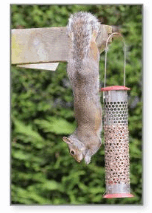
7 scoops of seeds we need to fill both squirrel feeders,
Explanation:
Given a squirrel feeder holds 4\(\frac{1}{2}\) cups of seeds.
Another squirrel feeder holds 6\(\frac{7}{8}\) cups of seeds.
One scoop of seeds is 1\(\frac{5}{8}\) cups.
So first squirrel feeder needs 4\(\frac{1}{2}\) ÷ 1\(\frac{5}{8}\),
We write 4\(\frac{1}{2}\) as (4 X 2 + 1 by 2) = \(\frac{9}{2}\)
and 1\(\frac{5}{8}\) = (1X 8 + 5 by 8) = \(\frac{13}{8}\),
now we write \(\frac{13}{8}\) reciprocal and multiply as
\(\frac{9}{2}\) X \(\frac{8}{13}\) = \(\frac{9 x 8}{2 X 13}\) =
\(\frac{72}{26}\) as both goes in 2, 2 X 36 = 72, 2 X 13 = 26, (36,13) =
\(\frac{36}{13}\),
Now second squirrel feeder needs 6\(\frac{7}{8}\) ÷ 1\(\frac{5}{8}\),
We write 6\(\frac{7}{8}\) as (6 X 8 + 7 by 8) = \(\frac{55}{8}\),
now we have 1\(\frac{5}{8}\) = (1X 8 + 5 by 8) = \(\frac{13}{8}\),
now we write \(\frac{13}{8}\) reciprocal and multiply as
\(\frac{55}{8}\) X \(\frac{8}{13}\) = \(\frac{55 X 8}{8 X 13}\) =
\(\frac{440}{104}\) as both goes in 8, 8 X 55 = 440, 8 X 13 = 104,
(55, 13) = \(\frac{55}{13}\), Now we have feeder 1 and feeder 2,
so total is \(\frac{36}{13}\) + \(\frac{55}{13}\) as
both have same denomiators we add numerators and write as
\(\frac{36 + 55}{13}\) = \(\frac{91}{13}\) as 91 goes
in 13( 13 X 7 = 91) we get \(\frac{91}{13}\) = 7,therefore
7 scoops of seeds we need to fill both squirrel feeders.
2.4 Adding and Subtracting Decimals (pp. 67–72)
Add.
Question 21.
3.78 + 8.94
3.78 + 8.94 = 12.72,
Explanation:
Given expression 3.78 + 8.94 we add as
1,1
3.78
+8.94
12.72
Therefore, 3.78 + 8.94 = 12.72.
Question 22.
19.89 + 4.372
19.89 + 4.372 = 24.262,
Explanation:
Given expression 19.89 + 4.372 we add as
1,1,1
19.890
+ 4.372
24.262
Therefore, 19.89 + 4.372 = 24.262.
Question 23.
24.916 + 17.385
24.916 + 17.385 = 42.301,
Explanation:
Given expression 24.916 + 17.385 we add as
1,1,1,1
24.916
+ 17.385
42.301
Therefore, 24.916 + 17.385 = 42.301.
Subtract.
Question 24.
7.638 – 2.365
7.638 – 2.365 = 5.273,
Explanation:
Given expression 7.638 – 2.365 we subtract as
5,13
7.638
– 2.365
5.273
Therefore, 7.638 – 2.365 = 5.273.
Question 25.
14.21 – 4.103
14.21 – 4.103 = 10.107,
Explanation:
Given expression 14.21 – 4.103 we subtract as
14,13,10
14.210
– 4.103
10.107
Therefore, 14.21 – 4.103 = 10.107.
Question 26.
5.467 – 2.736
5.467 – 2.736 = 2.731,
Explanation:
Given expression 5.467 – 2.736 we subtract as
4,14
5.467
– 2.736
2.731
Therefore, 5.467 – 2.736 = 2.731.
Question 27.
Write three decimals that have a sum of 10.806.
The three decimals are 4.203, 3.769, 2.834 which
will have a sum of 10.806,
Explanation:
To make sum of 10.806 we can take decimals as
4.203, 3.769, 2.834 and check as
1,1,1
4.203
3.769
+2.834
10.806
therefore the three decimals are 4.203, 3.769, 2.834
which will have a sum of 10.806.
Question 28.
To make fuel for the main engines of a space shuttle,
102,619.377 kilograms of liquid hydrogen and 616,496.4409 kilograms
of liquid oxygen are mixed together in the external tank.
How much fuel is stored in the external tank?

Fuel stored in the external tank is 719,115.786 kilograms,
Explanation:
Given to make fuel for the main engines of a space shuttle,
102,619.377 kilograms of liquid hydrogen and 616,496.4409 kilograms
of liquid oxygen are mixed together in the external tank.
So fuel is stored in the external tank is
102,619.377 + 616,496.4409 =
1,1,1, 1
102,619.3770
+616,496.4409
719115.8179
Therefore, fuel stored in the external tank is 719,115.786 kilograms.
2.5 Multiplying Decimals (pp. 73–80)
Multiply. Use estimation to check your answer.
Question 29.
26.174 × 79
26.174 X 79 = 2067.746,
Explanation:
Given expression 26.174 X 79 we add as
4,1,5,2
5,1,6,3
26.174 —— 3 decimal places
X 79
235566
1832180
2067.746—— 3 decimal places
Therefore, 26.174 X 79 = 2067.746.
Question 30.
9.475 × 8.03
9.475 × 8.03 = 76.08425,
Explanation:
Given expression 9.475 X 8.03 we add as
3,6,4
1,2,1
9.475 —— 3 decimal places
X 8.03 —– 2 decimal places
0028425
0000000
7580000
76.08425——5 decimal places
Therefore, 9.475 × 8.03 = 76.08425.
Question 31.
0.051 × 0.244
0.051 × 0.244 = 0.012444,
Explanation:
Given expression 9.475 X 8.03 we add as
1
2
2
0.051 —— 3 decimal places
X 0.244 —– 3 decimal places
0000204
0002040
0110200
0000000
0.012444——6 decimal places
Therefore, 0.051 × 0.244 = 0.012444.
Question 32.
Evaluate 3.76(2.43 + 9.8).
3.76(2.43 + 9.8) = 45.9848,
Explanation:
Given expression as 3.76(2.43 + 9.8),
First we calculate (2.43 + 9.8) =
2.43
+9.8
12.23
Now 3.76 X 12.23 =
1,1,2
1,1,1
12.23 —— 2 decimal places
X3.76 —— 2 decimal places
0073.38
085610
36.6900
45.9848 —-4 decimal places
therfeore, 3.76(2.43 + 9.8) = 45.9848.
Question 33.
Hair grows about 1.27 centimeters each month.
How much does hair grow in 4 months?
5.08 centimeters hair will grow in 4 months,
Explanation:
Given hair grows about 1.27 centimeters each month.
so hair growth in 4 months is 4 X 1.27 =
1,2
1.27
X 4
5.08
Therefore, 5.08 centimeters hair will grow in 4 months.
2.6 Dividing Whole Numbers (pp. 81–86)
Divide. Use estimation to check your answer.
Question 34.
7296 ÷ 38
7296 ÷ 38 = 192,
Estimation is reasonable,
Explanation:
Given 7296 ÷ 38 =
192
38)7296 38 X 1 = 38
38
349 38 X 9 = 342
342
76 38 X 2 = 76
76
0
Therefore 7296 ÷ 38 = 192,
Estimation is 7300 ÷ 38 = 192.1,
So estimation is reasonable.
Question 35.
5081 ÷ 203
5081 ÷ 203 = 25.02,
Estimation is reasonable,
Explanation:
Given 5081 ÷ 203 =
25.02
203)5081 203 X 2 = 406
406
1021 203 X 5 = 1015
1015
6 203 X 0.02 = 4.06
4.06
1.94 reaminder
Therefore 5081 ÷ 203 = 25.02,
Estimation is 5100 ÷ 203 = 25.123
So estimation is reasonable.
Question 36.
\(\frac{17,264}{128}\)
\(\frac{17,264}{128}\) = 134.875,
Estimation is approximately reasonable,
Explanation:
Given 17264 ÷ 128 =
134.875
128)17264 128 X 1 = 128
128
446 128 X 3 = 384
384
624 128 X 4 = 512
512
112 128 X 0.8 =
102.4
9.6 128 X 0.07 = 8.96
8.96
0.64 128 X 0.005 = 0.64
0.64
0
Therefore \(\frac{17,264}{128}\) = 134.875
Estimation is 17,000 ÷ 128 = 132.8125
So estimation is approximately reasonable.
Question 37.
Your local varsity basketball team offers bus transportation for a
playoff game. Each bus holds 56 people. A total of 328 people sign up.
All buses are full except for the last bus. How many buses are used?
How many people are in the last bus?
6 buses are used and in the last bus
there are 48 people.
Explanation:
Given my local varsity basketball team offers bus transportation for a
playoff game. Each bus holds 56 people. A total of 328 people sign up.
So, buses used are 328 ÷ 56 =
5
56)328 56 X 5 = 280
280
48 remainder
we got 5 buses + 48 people,
Therefore we need total 6 buses and in the last bus
there are 48 people.
Question 38.
You have 600 elastic bands to make railroad bracelets.
How many complete bracelets can you make?
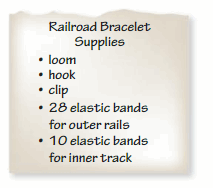
15 bracelets I can make,
Explanation:
Given 600 elastic bands to make railroad bracelets
and we need for one bracelet 28 elastic bands for
outer rails and 10 elastic bands for inner track,
means 28 + 10 = 38 elastic bands for one bracelet,
From 600 we can make 600 ÷ 38 =
15.78
38)600 38 X 1 = 38
38
220 38 X 5 = 190
190
30 38 X 0.7 = 26.6
26.6
3.4 38 X 0.08 = 3.04
3.04
0.36 remainder
therefore, it means I can make 15 railroad bracelets
from 600 elastic bands.
2.7 Dividing Decimals (pp. 87–94)
Divide. Check your answer.
Question 39.
0.498 ÷ 6
0.498 ÷ 6 = 0.083,
Explanation:
Given 0.498÷ 6 =
0.083
6)0.498 6 X 0.08 = 0.48
0.48
0.018 6 X 0.003 = 0.018
0.018
0
Therefore 0.498 ÷ 6 = 0.083.
Question 40.
8.9 ÷ 0.356
8.9 ÷ 0.356 = 25
Explanation:
Given 8.9÷ 0.356 =
25
0.356)8.9 0.356 X 25 = 8.9
8.9
0
Therefore 8.9 ÷ 0.356 = 8.9.
Question 41.
21.85 ÷ 3.8
21.85 ÷ 3.8 = 5.75
Explanation:
Given 21.85 ÷ 3.8 =
5.75
3.8)21.85 3.8 X 5 = 19
19
2.85 3.8 X 0.7 = 2.66
2.66
0.19 3.8 X 0.05 = 0.19
0.19
Therefore 21.85 ÷ 3.8 = 5.75.
Question 42.

(14.075 + 24.67) ÷ 3.15 = 12.3,
Explanation:
Given expression as (14.075 + 24.67) ÷ 3.15,
first we calculate (14.075 + 24.67) = 38.745 now
38.745 ÷ 3.15 =
12.3
3.15)38.745 3.15 X 12 = 37.8
37.8
0.945 3.15 X 0.3 = 0.945
0.945
0
Therefore, (14.075 + 24.67) ÷ 3.15 = 12.3.
Question 43.
Your beginning balance on your lunch account is $42.
You buy lunch for $1.80 every day and sometimes buy a snack for $0.85.
After 20 days, you have a balance of $0.05. How many snacks did you buy?
I buyed 7 snacks in 20 days,
Explanation:
Given my beginning balance on lunch account is $42.
I buy lunch for $1.80 every day and sometimes buy a snack
for $0.85. After 20 days, I have a balance of $0.05.
So for 20 days I buyed for lunch is 20 X $1.80 =
$36 and have balance left of $0.05 means 36 + 0.05 = $36.05,
Now I spent on snacks is $42 – $36.05 = $5.95 and snack
costs $0.85, So number of snacks I did buyed is
$5.95 ÷ $0.85 =
7
0.85)5.95 0.85 X 7 = 5.95
5.95
0
therefore, I buyed 7 snacks in 20 days.
Fractions and Decimals Practice Test
2 Practice Test
Evaluate the expression. Write the answer in simplest form.
Question 1.
5.138 + 2.624
5.138 + 2.624 = 7.762
Explanation:
Given expression 24.916 + 17.385 we add as
1
5.138
+2.624
7.762
Therefore, 5.138 + 2.624 = 7.762.
Question 2.

 = \(\frac{7}{4}\) or 1\(\frac{3}{4}\),
= \(\frac{7}{4}\) or 1\(\frac{3}{4}\),
Explanation:
Given expressions as \(\frac{5}{6}\) ÷ \(\frac{10}{21}\),
we write reciprocal of the fraction \(\frac{10}{21}\) as \(\frac{21}{10}\)
and multiply as \(\frac{5}{6}\) X \(\frac{21}{10}\) =
\(\frac{5 X 21}{6 X 10}\) = \(\frac{105}{60}\),
we can further simplify as both goes in 15, 15 X 7 = 105 and 15 X 4 = 60,
(7, 4)= \(\frac{7}{4}\) as numerator is greater we write as
(1 X 4 + 3 by 4) = 1\(\frac{3}{4}\), Therefore \(\frac{5}{6}\) ÷
\(\frac{10}{21}\) = \(\frac{7}{4}\) = 1\(\frac{3}{4}\).
Question 3.

 = 21.84,
= 21.84,
Explanation:
Given 5.46 ÷ 0.25 =
21.84
0.25)5.46 0.25 X 21 = 5.25
5.25
0.21 0.25 X 0.8 = 0.2
0.20
0.01 0.25 X 0.04 = 0.01
0.01
0
Therefore 5.46 ÷ 0.25 = 21.84.
Question 4.

 = \(\frac{3}{8}\),
= \(\frac{3}{8}\),
Explanation:
Given expression as \(\frac{9}{16}\) X \(\frac{2}{3}\) =
Step I: We multiply the numerators as 9 X 2 = 18
Step II: We multiply the denominators as 16 X 3 =48
Step III: We write the fraction in the simplest form as
\(\frac{18}{48}\), as both goes in 6 we
can further simplify as 6 X 3 = 18, 6 X 8 = 48, (3, 8) = \(\frac{3}{8}\),
So \(\frac{9}{16}\) X \(\frac{2}{3}\) = \(\frac{3}{8}\).
Question 5.

 = \(\frac{70}{23}\) = 3\(\frac{1}{23}\),
= \(\frac{70}{23}\) = 3\(\frac{1}{23}\),
Explanation:
Given expressions as 8\(\frac{3}{4}\) ÷ 2\(\frac{7}{8}\),
we write mixed fraction 8\(\frac{3}{4}\) as (8 X 4 + 3 by 4) =
\(\frac{35}{4}\) and 2\(\frac{7}{8}\) as (2 X 8 + 7 by 8) =
\(\frac{23}{8}\) now we write reciprocal of the fraction
\(\frac{23}{8}\) as \(\frac{8}{23}\)
and multiply as \(\frac{35}{4}\) X \(\frac{8}{23}\) =
\(\frac{35 X 8}{4 X 23}\) = \(\frac{280}{92}\),
as both goes in 4, 4 X 70 = 280, 4 X 23 = 92, (70, 23) = \(\frac{70}{23}\)
as numerator is greater we write as (3 X 23 + 1 by 23)= 3\(\frac{1}{23}\).
Therefore 8\(\frac{3}{4}\) ÷ 2\(\frac{7}{8}\) = \(\frac{70}{23}\) = 3\(\frac{1}{23}\),
Question 6.
4.87 × 7.23
4.87 × 7.23 = 35.2101,
Explanation:
Given expression 4.87 X 7.23 we add as
6,4
1,1
2,2,2
4.87 —— 2 decimal places
X7.23—- 2 decimal places
001461
009740
340900
35.2101——4 decimal places
Therefore, 4.87 × 7.23 = 35.2101,
Question 7.
1875 ÷ 125
1875 ÷ 125 = 15,
Explanation:
15
125)1875 125 X 1 = 125
125
625 125 X 5 = 625
625
0
Therefore, 1875 ÷ 125 = 15.
Question 8.

 = 25,
= 25,
Explanation:
Given expressions as 10 ÷ \(\frac{2}{5}\),
now we write reciprocal of the fraction
\(\frac{2}{5}\) as \(\frac{5}{2}\)
and multiply as 10 X \(\frac{5}{2}\) =
\(\frac{10 X 5}{1 X 2}\) = \(\frac{50}{2}\),
as both goes in 2, 2 X 25 = 50, 2 X 1 = 2, (25, 1) = \(\frac{50}{2}\) = 25,
Therefore 10 ÷ \(\frac{2}{5}\) = 25.
Question 9.
57.82 ÷ 0.784
57.82 ÷ 0.784 = 73.75,
Explanation:
Given expression as 57.82 ÷ 0.784 =
73.75
0.784)57.82 0.784 X 7 = 57.232
57.232
0.588 0.784 X 0.7 = 0.5488
0.5488
0.0392 0.784 X 0.05 = 0.0392
0.0392
0
Therefore, 57.82 ÷ 0.784 = 73.75.
Question 10.
5.316 ÷ 1.942
5.316 ÷ 1.942 = 2.737,
Explanation:
Given expression as 5.316 ÷ 1.942 =
2.737
1.942)5.316 1.942 X 2 = 3.884
3.884
1.432 1.942 X 0.7 = 1.3594
1.3594
0.0726 1.942 X 0.03 = 0.05826
0.05826
0.01434 1.942 X 0.007 = 0.013594
0.013594
0.000746 remainder
therefore 5.316 ÷ 1.942 = 2.737.
Question 11.
6.729 × 8.3
6.729 × 8.3 = 55.8507,
Explanation:
Given expression as 6.729 X 8.3 =
5,2,7
2,2
6.729—— 3 decimal places
X 8.3 —— 1 decimal place
020187
538320
55.8507—— 4 decimal places
Question 12.
\(\frac{13,376}{248}\)
\(\frac{13,376}{248}\) = 53.935,
Explanation:
Given expression as \(\frac{13,376}{248}\),
53.935
248)13376 248 X 5 = 1240
1240
976 248 X 3 = 744
744
232 248 X 0.9 = 223.2
223.2
8.8 248 X 0.03 = 7.44
7.44
1.36 248 X 0.005 = 1.24
1.24
0.12 remainder
therefore \(\frac{13,376}{248}\) = 53.935.
Question 13.
On a road trip, you notice that the gas tank is \(\frac{1}{4}\) full.
The gas tank can hold 18 gallons, and the vehicle averages 22 miles per gallon.
Will you make it to your destination 110 miles away before you run out of gas?
Explain.
No, I cannot make it to destination, I will be running out of gas,
Explanation:
Given on a road trip, you notice that the gas tank is \(\frac{1}{4}\) full.
The gas tank can hold 18 gallons, and the vehicle averages
22 miles per gallon. Will I make it to my destination 110 miles
away before I run out of gas, First we calculate tank has
18 X \(\frac{1}{4}\) = \(\frac{18}{4}\) , as both
goes in 2 we get 2 X 9 = 18, 2 X 2 = 4, (9, 2) = \(\frac{9}{2}\) gallon,
now we have the vehicle averages 22 miles per gallon means
22 X \(\frac{9}{2}\) = \(\frac{198}{2}\) as
it goes in 2 we get 2 X 99 = 198, 2 X 1 = 2, \(\frac{198}{2}\) =99,
as 99 is less than 110 miles no, I cannot make it to destination,
I will be running out of gas.
Question 14.
For a diving event, the highest and the lowest of seven scores
are discarded. Next, the total of the remaining scores is multiplied
by the degree of difficulty of the dive. That value is then multiplied
by 0.6 to determine the final score. Find the final score for the dive.

The final score for the dive is 73.47,
Explanation:
Given for a diving event, the highest and the lowest of seven scores
are discarded. Next, the total of the remaining scores is multiplied
by the degree of difficulty of the dive. That value is then multiplied
by 0.6 to determine the final score.
After discarding the highest and the lowest of seven scores-
9.0, 7.0 we have remaining scores as 8, 7.5, 8, 8.5, 7.5,
now we add as 8 +7.5 + 8 +8.5 + 7.5 = 39.5, So the total of the
remaining scores is multiplied by the degree of difficulty
of the dive, given the difficulty of the dive as 3.1,
So 39.5 X 3.1 =
2,1
39.5 —— 1 decimal place
X3.1 —— 1 decimal place
00395
11850
122.45—— 2 decimal places
Now 122.45 is multiplied by 0.6 to determine the final score as
122.45 X 0.6 =
1,1,2,3
122.45—— 2 decimal places
X 0.6 —— 1 decimal place
073470
000000
73.470—— 3 decimal places,
So, The final score for the dive is 73.47.
Question 15.
You are cutting as many 20\(\frac{1}{2}\)-inch pieces
from the board to make ladder steps for a tree fort.
How many steps can you make? How much wood is left over?

I can make 5 steps and \(\frac{35}{41}\)-inch piece
wood will be left over.
Explanation:
Given I am cutting as many 20\(\frac{1}{2}\)-inch pieces
from the board of 120 in to make ladder steps for a tree fort.
Number of steps I can make are 120 ÷ 20\(\frac{1}{2}\),
first we write mixed fraction into fraction and write
reciprocal then multiply as 20\(\frac{1}{2}\) = ( 20 X 2 + 1 by 2) =
\(\frac{41}{2}\), now reciprocal as \(\frac{2}{41}\)
and multiply as 120 X \(\frac{2}{41}\) = \(\frac{240}{41}\),
as numerator is greater we write as (5 X 41 + 35 by 41) = 5\(\frac{35}{41}\),
So, I can make 5 steps and \(\frac{35}{41}\)-inch piece
wood will be left over.
Question 16.
You spend 2\(\frac{1}{2}\)-hours online.
You spend \(\frac{1}{5}\) of that time writing a blog.
How long do you spend writing your blog?
I have spent 12\(\frac{1}{2}\) hours for writing blog,
Explanation:
Given I spend 2\(\frac{1}{2}\)-hours online and
spent \(\frac{1}{5}\) of that time writing a blog.
So I spend writing my blog for 2\(\frac{1}{2}\) ÷ \(\frac{1}{5}\) =
first we write mixed fraction as fraction 2\(\frac{1}{2}\) =
(2 X 2 + 1 by 2) = \(\frac{5}{2}\) ÷ \(\frac{1}{5}\) now
we write \(\frac{1}{5}\) as reciprocal we get 5 and multiply,
\(\frac{5}{2}\) X 5 = \(\frac{5 X 5 }{2}\) = \(\frac{25}{2}\),
as numerator is greater we write as ( 2 X 12 + 1 by 2) = 12\(\frac{1}{2}\),
Therefore I have spent 12\(\frac{1}{2}\) hours for writng blog.
Question 17.
You and a friend take pictures at a motocross event.
Your camera can take 24 pictures in 3.75 seconds.
Your friend’s camera can take 36 pictures in 4.5 seconds.
Evaluate the expression (36 ÷ 4.5) (24 ÷ 3.75) to find how many
times faster your friend’s camera is than your camera.

51.2 seconds times faster my friend’s camera is
than my camera,
Explanation:
Given expression as (36 ÷ 4.5) (24 ÷ 3.75) =
First we will find (36 ÷ 4.5) =
8
4.5)36 4.5 X 8 = 36
36
0
So, (36 ÷ 4.5) = 8,
Now we will find (24 ÷ 3.75)=
6.4
3.75)24 3.75 X 6 = 22.5
22.5
1.5 3.75 X 0.4 = 1.5
1.5
0
So, (24 ÷ 3.75) = 6.4,
Now 8 X 6.4 =
3,
6.4 —– 1 decimal place
X 8
51.2 —– 1 decimal place
Therefore, 51.2 seconds times faster my friend’s camera is
than my camera.
Fractions and Decimals Cumulative Practice
2 Cumulative Practice
Question 1.
Which number is equivalent to the expression below?

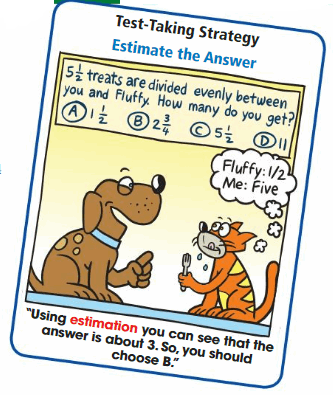
6 X 8 – 2 X 32 = 30, matches with B,
Explanation:
Given expression as (6 X 8 – 2 X 32 ) =
First we will find (2 X 32 ) = 2 X 3 X 3 = 18,
Now 6 X 8 = 48, So 48 -18 = 30,
Therefore (6 X 8 – 2 X 32 ) = 30 which matches with B.
Question 2.
What is the greatest common factor of 48 and 120?

Greatest common factor of 48 and 120 is 24,
Explanation:
Given to find greatest common factor of 48 and 120,
We have factors of 48 are 1, 2, 3, 4, 6, 8, 12, 16, 24 and
factors of 120 are 1, 2, 3, 4, 5, 6, 8, 10, 12, 15, 20, 24, 30, 40, 60,
Here we have the biggest common factor number is 120,
therefore greatest common factor of 48 and 120 is 24.
Question 3.
Which number is equivalent to 5.139 – 2.64?
F. 2.499
G. 2.599
H. 3.519
I. 3.599
5.139 – 2.64 = 2.499 equivalent to F,
Explanation:
Given to evaluate 5.139 – 2.64 =
5.139
-2.640
2.499
Therefore, 5.139 – 2.64 = 2.499 which equivalent to F.
Question 4.
Which number is equivalent to 

\(\frac{4}{9}\) ÷ \(\frac{5}{7}\) = \(\frac{28}{45}\),
matches with B.
Explanation:
Given expressions as \(\frac{4}{9}\) ÷ \(\frac{5}{7}\),
we write reciprocal of the fraction \(\frac{5}{7}\) as \(\frac{7}{5}\)
and multiply as \(\frac{4}{9}\) X \(\frac{7}{5}\) =
\(\frac{4 X 7}{9 X 5}\) = \(\frac{28}{45}\),
Therefore \(\frac{4}{9}\) ÷ \(\frac{5}{7}\) = \(\frac{28}{45}\),
which matches with B.
Question 5.
You buy orange and black streamers for a party. The orange
streamers are 9 feet long, and the black streamers are 12 feet long.
What are the least numbers of streamers you should buy in order for
the total length of the orange streamers to be the same as the total
length of the black streamers?
F. 36 orange streamers and 36 black streamers
G. 12 orange streamers and 9 black streamers
H. 3 orange streamers and 4 black streamers
I. 4 orange streamers and 3 black streamers
The total length of the orange streamers to be the same
as the total length of the black streamers is
4 orange streamers and 3 black streamers matches with I.
Explanation:
Given I buy orange and black streamers for a party. The orange
streamers are 9 feet long, and the black streamers are 12 feet long.
What are the least numbers of streamers I should buy in order for
the total length of the orange streamers to be the same as the total
length of the black streamers are we first list the multiples of
9 and 12 and then we find the smallest multiple they have in common.
Multiples of 9: 9, 18, 27, 36, 45, 54, etc.
Multiples of 12: 12, 24, 36, 48, 60, 72, etc.
The least multiple on the two lists that they have in common
is the LCM of 9 and 12. Therefore, the LCM of 9 and 12 is 36.
So orange streamers are 36 ÷ 9 =
4
9)36 9 X 4 =36
36
0
36 ÷ 9 = 4,
and black streamers are 36 ÷ 12 =
3
12)36 12 X 3 = 36
36
0
36 ÷ 12 = 3,
Therefore, The total length (36) of the orange streamers
to be the same as the total length of the black streamers is
4 orange streamers and 3 black streamers matches with I.
Question 6.
Which number is a prime factor of 572?
A. 4
B. 7
C. 13
D. 22
13 number is prime factor of 572 ,matches with C,
Explanation:
Given to find the number which is prime factor of 572,
We have prime factors os 572 as 2, 2, 11, 13,
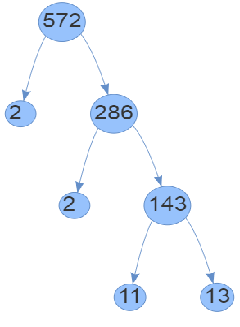
So from given numbers C.13 – matches.
Question 7.
Which number is equivalent to 7059 ÷ 301?

\(\frac{7059}{301}\) = 23\(\frac{136}{301}\) which matches with H.
Explanation:
Given expressions as \(\frac{7059}{301}\) =
23
301)7059 301 X 2 = 602
602
1039 301 X 3 = 903
903
136 remainder
So, \(\frac{7059}{301}\) = 23\(\frac{136}{301}\) which matches with H.
Question 8.
A square wall tile has side lengths of 4 inches. You use 360 of the tiles.
What is the area of the wall covered by the tiles?

The area of the wall covered by the tiles is 3760 in.2
matches with D.
Explanation:
Given a square wall tile has side lengths of 4 inches, we
use 360 of the tiles, so the area of the wall covered by the tiles is
(we have area of sqaure is (Side X Side)) = 360 X 4 X 4 = 5760,
Therefore the area of the wall covered by the tiles is 3760 in.2
which matches with D.
Question 9.
Which expression is equivalent to a perfect square?

Expression I. 32 + 6 X 5 ÷ 3 is equivalent to a perfect square,
Explanation:
Given to find an expressions equivalent to a perfect square is
the square of a number is that number times itself.
The perfect squares are the squares of the whole numbers:
1, 4, 9, 16, 25, 36, 49, 64, 81, 100,
Now square roots are
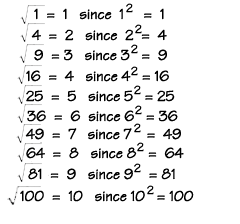
First we the expressions as 3 + 22 X 7 = 3 + ((2 X 2) X 7) =
3 + ( 4 X 7) = 3 + 28 = 31, as 31 lies between 25 and 36, 52 and 62
not a perfect square,
Next expression is 34 + (18 ÷ 22 ) =
34 + (18 ÷ (2 X 2)) = 34 + 18 ÷ 4 = 34 + 4.5 =39.5,
It lies between 36 and 49, 62 and 72
not a perfect square,
Next expression is (80 + 4) ÷ 4 = 84 ÷ 4 = 21,
It lies between 16 and 25, 42 and 52
not a perfect square,
Next expression is 32 + 6 X 5 ÷ 3 = (((3 X 3) + 6) X 5) ÷ 3 =
((9 + 6) X 5 ÷ 3) = (15 X 5) ÷ 3 = 75 ÷ 3 =
25
3)75 3 X 2 = 6
6
15 3 X 5 = 15
15
0
So, 75 ÷ 3 = 25, 25 is perfect square 52 ,
therefore expression I. 32 + 6 X 5 ÷ 3 is equivalent to a perfect square.
Question 10.
What is the missing denominator in the expression below?

A. 1
B. 2
C. 3
D. 8
3 is the missing denominator in the expression,
matches with C,
Explanation :
let us take the missing denominator as x,
given expression as \(\frac{4}{8}\) ÷ \(\frac{2}{x}\) = \(\frac{3}{4}\) ,
Now we have \(\frac{2}{x}\) we write reciprocal \(\frac{x}{2}\)
and multiply as \(\frac{4}{8}\) X \(\frac{x}{2}\) =
\(\frac{4 X x}{8 X 2}\) = \(\frac{4x}{16}\) both goes in 4,
4 X x = 4x, 4 X 4 = 16, (x, 4) = \(\frac{x}{4}\) now we equate with
\(\frac{3}{4}\) we get x = 3, Therefore 3 is the missing denominator in
the expression which matches with C.
Question 11.
What is 4.56 × 0.7?

Explanation:
Given expression as 4.56 X 0.7 =
3,4
4.56 —- 2 decimal places
X 0.7—- -1 decimal place
3.192 — 3 decimal places
Therfore, 4.56 X 0.7 = 3.192.
Question 12.
The area of the large rectangle is how many times the area of the small rectangle?

F. 4.4515
G. 5.915
H. 17.2575
I. 111.2875
The area of the large rectangle is 17.2575 cm2
times the area of the small rectangle matches with H.
Explanation:
Given large rectangle width 7.25 cm and length as 3.07 cm,
So area of large rectangle is 7.25 X 3.07 =
1
1,3
7.25 —- 2 decimal places
X3.07—- 2 decimal places
005075
000000
217500
22.2575 —- 4 decimal places
therefore area of lare rectangle is 22.2575 cm2,
Given small rectangle width 4 cm and length as 1.25 cm,
So area of small rectangle is 4 X 1.25 =
2
1.25
X 4
5
therefore area of small rectangle is 5 cm2,
now we will find the area of the large rectangle is how many
times the area of the small rectangle as 22.2575 – 5 = 17.2575 cm2,
So, matches with H.
Question 13.
Which expression is equivalent to 5 × 5 × 5 × 5?
A. 5 × 4
B. 45
C. 54
D. 55
The expression which is equivalent to 5 X 5 X 5 X 5 = 54,
matches with C,
Explanation:
Given expression as 5 X 5 X 5 X 5 means 5 is multiplied by 4 times,
So 5 X 5 X 5 X 5 = 54 which matches with C.
Question 14.
A walkway is built using identical concrete blocks.

Part A
How much longer, in inches, is the length of the walkway than the
width of the walkway? Show your work and explain your reasoning.
Part B
How many times longer is the length of the walkway than the
width of the walkway? Show your work and explain your reasoning.
Part A :
\(\frac{11}{4}\) inches in the length of the
walkway more than the width of the walkway.
Part B :
2 times longer is the length of the walkway than the
width of the walkway,
Explanation:
Part A :
Given length as 5\(\frac{1}{2}\) inches and width as
2\(\frac{3}{4}\) of walkway. Now longer, in inches,
is the length of the walkway than the width of the walkway is
5\(\frac{1}{2}\) – 2\(\frac{3}{4}\) first we write
mixed fractions into fractions before subtraction as
5\(\frac{1}{2}\) = (5 x 2 + 1 by 2) = \(\frac{11}{2}\) and
2\(\frac{3}{4}\) = (2 X 4 + 3 by 4) = \(\frac{11}{4}\),
So \(\frac{11}{2}\) – \(\frac{11}{4}\) ,now we make
both denominators same as 4 so we multiply numerator and
denominator by 2 for \(\frac{11}{2}\) = \(\frac{11 x 2}{2 X 2}\) =
\(\frac{22}{4}\) ,Now \(\frac{22}{4}\) – \(\frac{11}{4}\),
as denominators are same we subtract numerators and write as
\(\frac{22- 11}{4}\) = \(\frac{11}{4}\) inches.
Therefore, \(\frac{11}{4}\) inches in the length of the
walkway more than the width of the walkway.
Part B :
Now we will find many times longer in the length of the walkway than the
width of the walkway as \(\frac{11}{2}\) ÷ \(\frac{11}{4}\),
now we write reciprocal and multiply as \(\frac{11}{2}\) X \(\frac{4}{11}\) =
\(\frac{11 X 4}{2 X 11}\) as both have 11 they get cancel,
we will get \(\frac{4}{2}\), as both goes in 2 we get 2 X 2 = 4,
2 X 1 = 2, (2, 1), \(\frac{4}{2}\) = 2,
therefore 2 times longer is the length of the walkway than the
width of the walkway.
Question 15.
A meteoroid moving at a constant speed travels 6\(\frac{7}{8}\) miles
in 30 seconds. How far does the meteoroid travel in 1 second?

The meteoroid travels in 1 second is \(\frac{11}{48}\) mile,
matches with G.
Explanation:
Given a meteoroid moving at a constant speed travels 6\(\frac{7}{8}\) miles
in 30 seconds, Now in 1 second the meteoroid travel is
6\(\frac{7}{8}\) ÷ 30 =
First we write mixed fraction as 6\(\frac{7}{8}\) = (6 X 8 + 7 by 8)
\(\frac{55}{8}\) now we divide with 30 as \(\frac{55}{8}\) ÷ 30 =
Now we write 30 as reciprocal as \(\frac{1}{30}\) and multiply as
\(\frac{55}{8}\) X \(\frac{1}{30}\) = \(\frac{55 X 1}{8 X 30}\) =
\(\frac{55}{240}\), now both goes in 5 as 5 X 11 = 55
and 5 X 48 = 240, (11, 48) = \(\frac{11}{48}\) miles,
therefore, the meteoroid travels in 1 second is \(\frac{11}{48}\) mile,
which matches with G.
Final Words:
We hope that the details of Big Ideas Math Answers Grade 6 Chapter 2 Fractions and Decimals pdf are really helpful for all the candidates. Check all the concepts of decimals and fractions in detail from here. While practicing, if you have any doubts regarding any of the concepts, feel free to ask them in the comments section. Follow or keep in touch with us to get all the updates regarding any of the topics. BIM Grade 6 Answer Key will clear all your doubts regarding the exam.

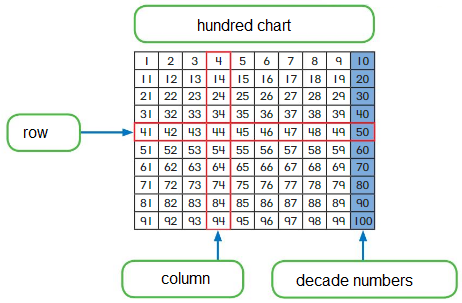


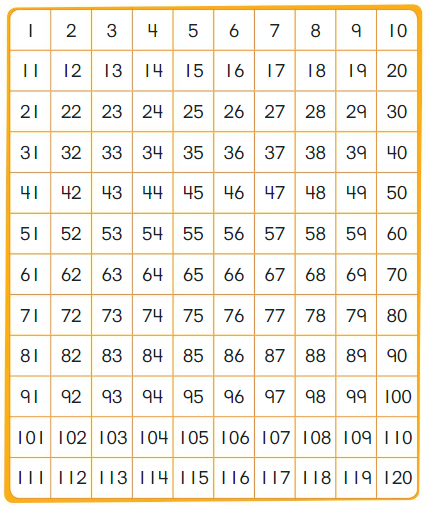
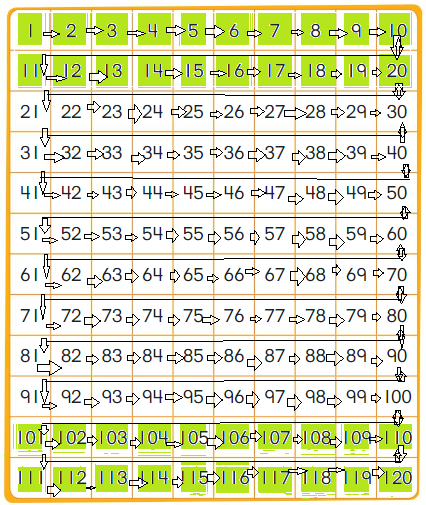
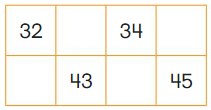
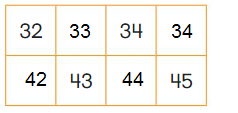
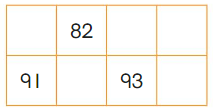
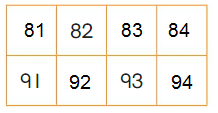




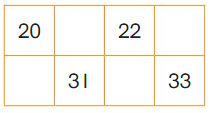
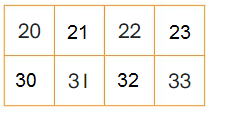
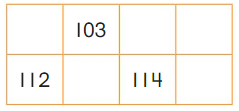
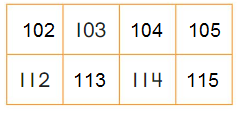
![]()
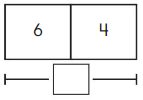
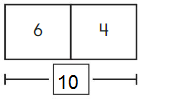
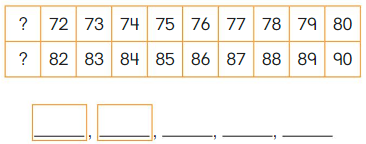

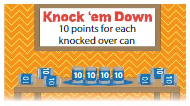

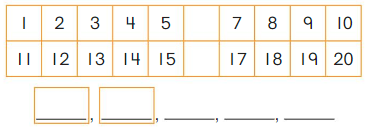
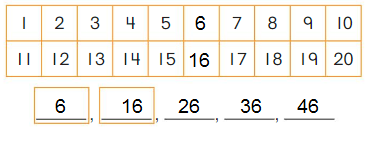

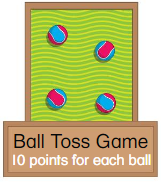
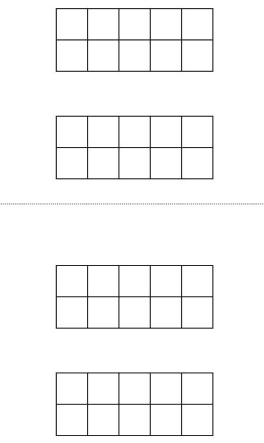
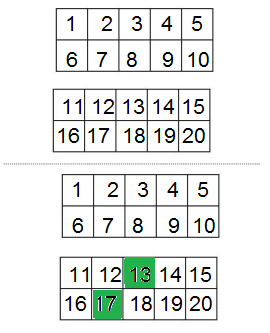
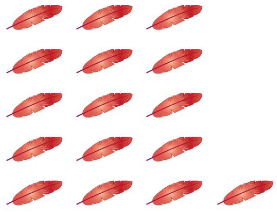
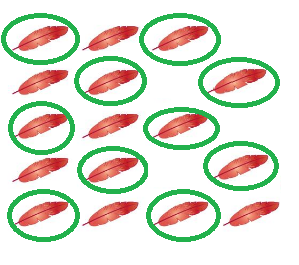






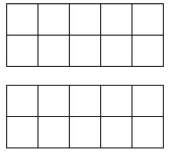

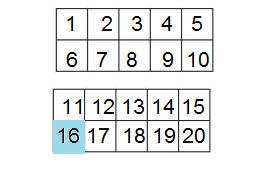

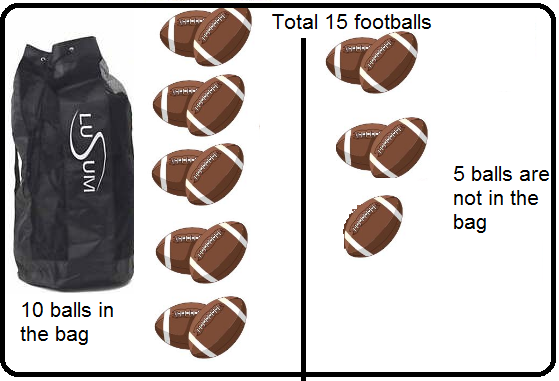

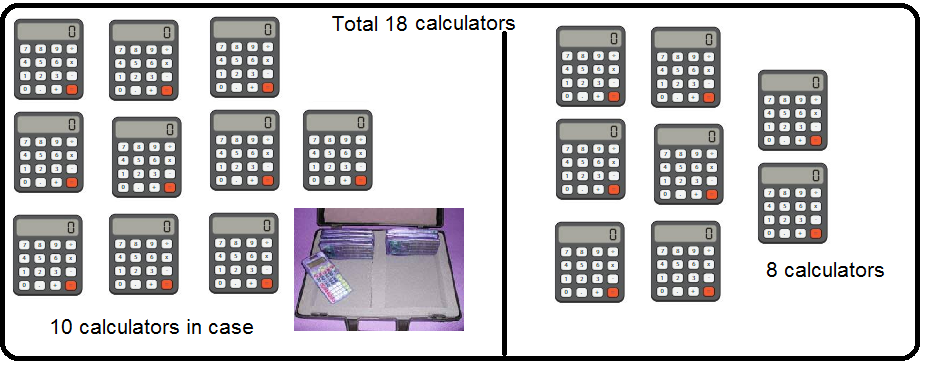

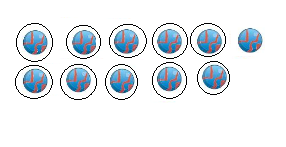


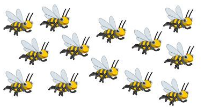
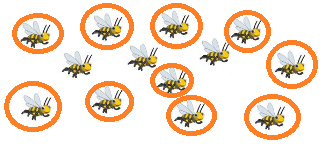
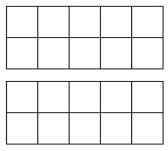

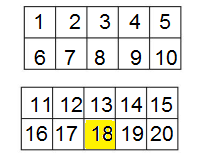



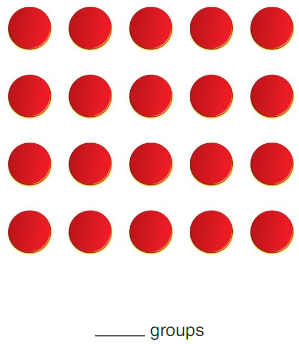
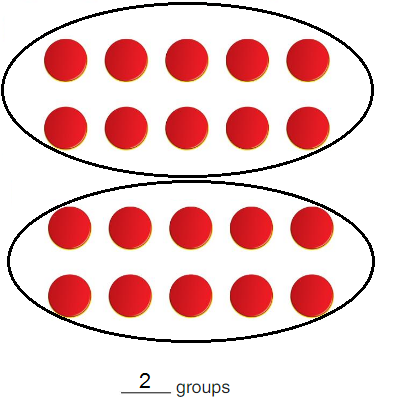
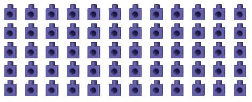
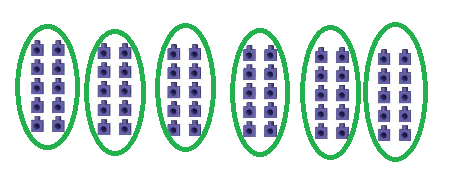

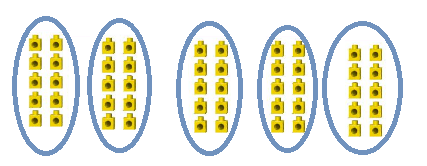
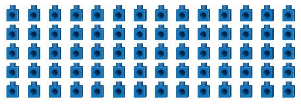




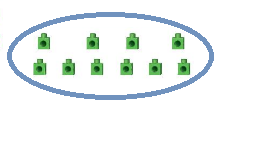

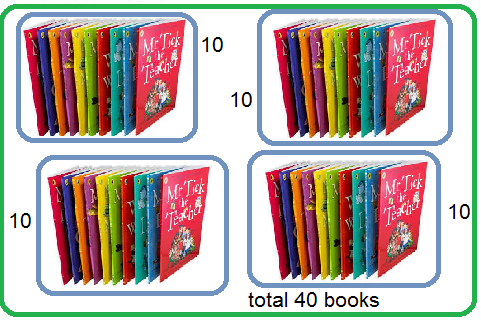






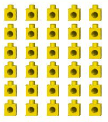
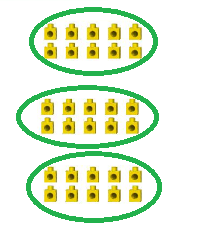
![]()
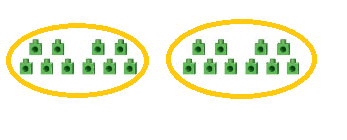
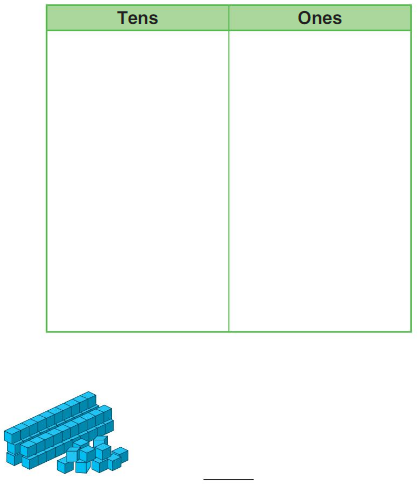





















![]()



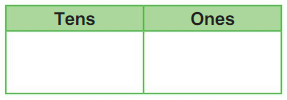













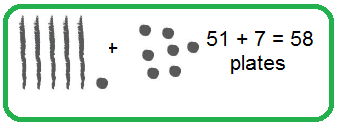


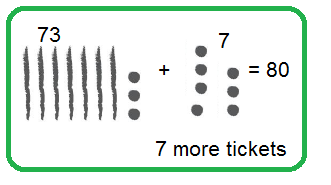

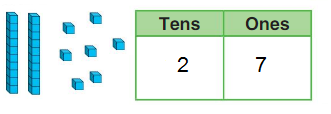










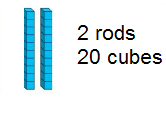
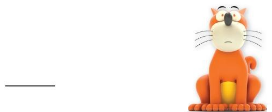

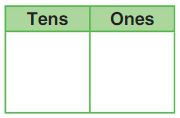







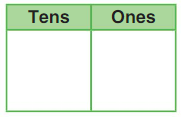









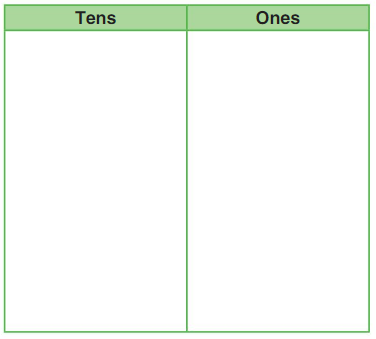
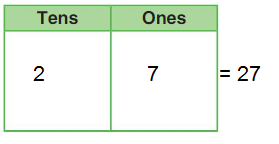
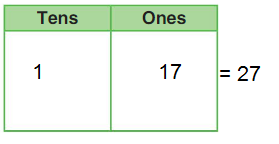


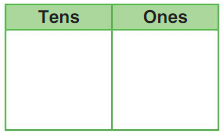


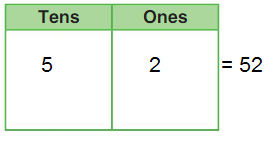

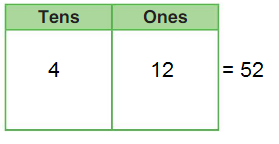

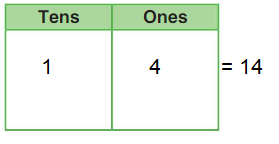

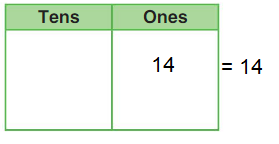
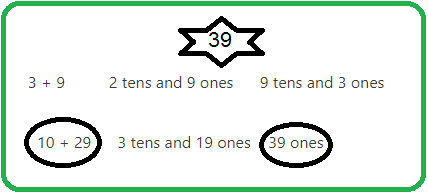

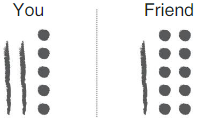


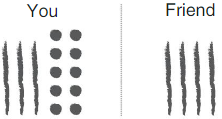
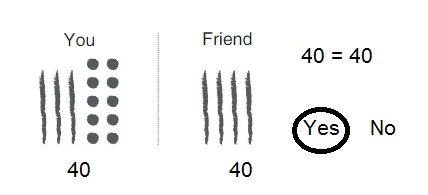
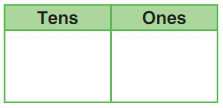
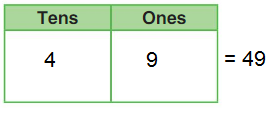




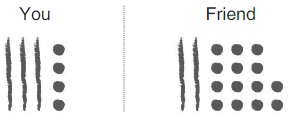
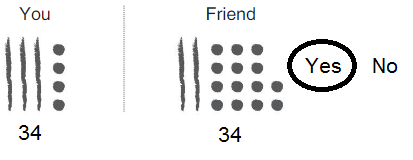

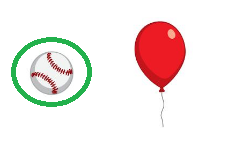


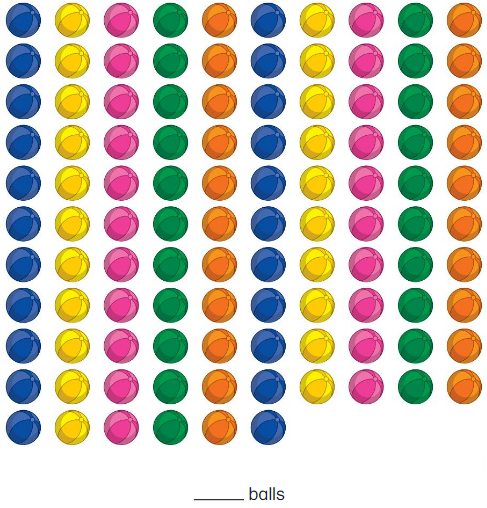
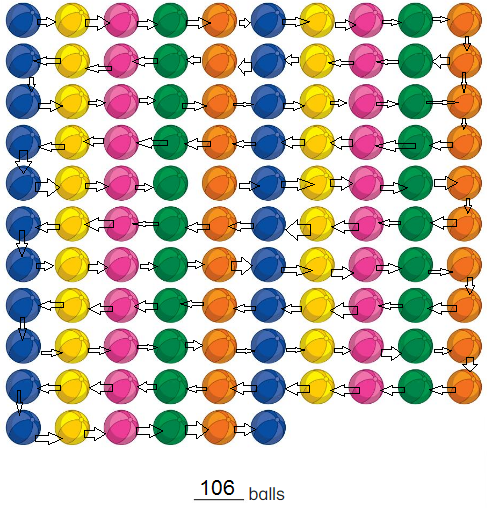

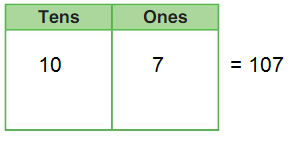

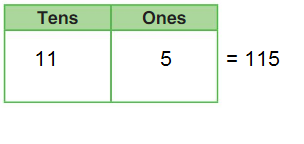




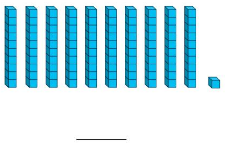
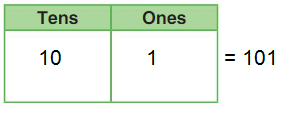
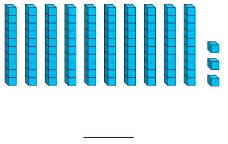
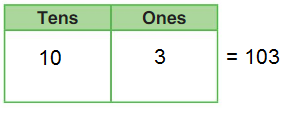

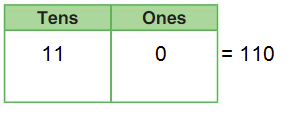

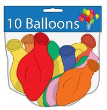
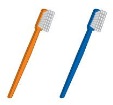
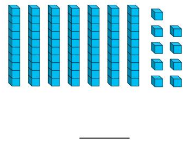

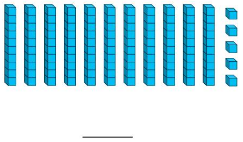

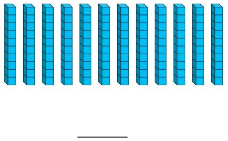

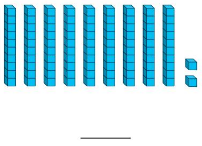


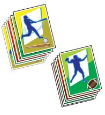
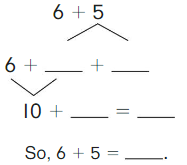
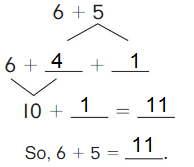
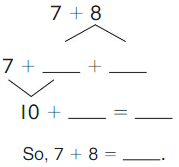

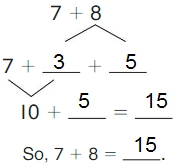
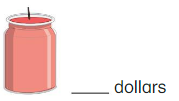







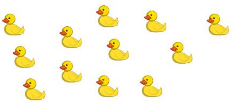
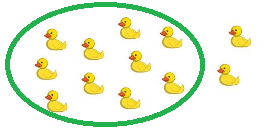

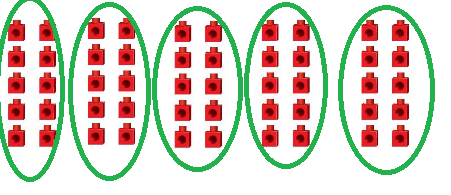





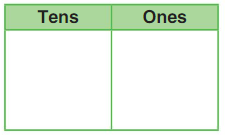
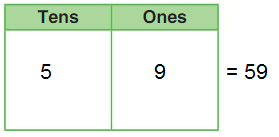

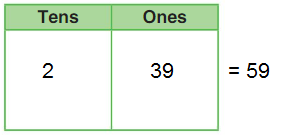
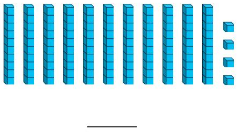







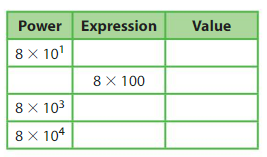
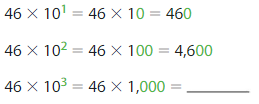



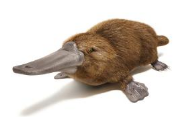
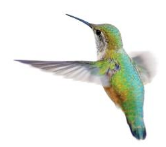
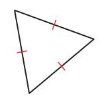

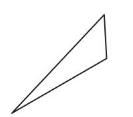






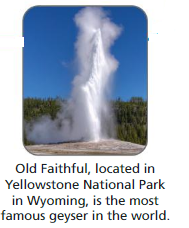


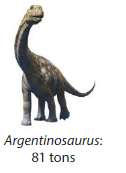
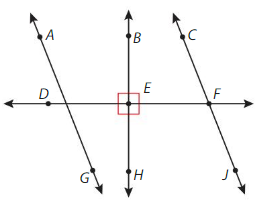

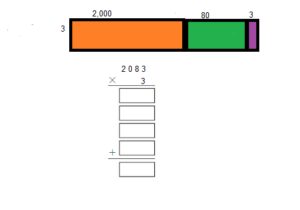






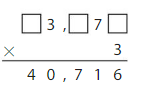
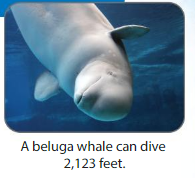

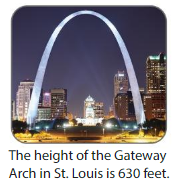
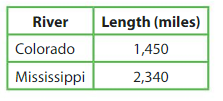







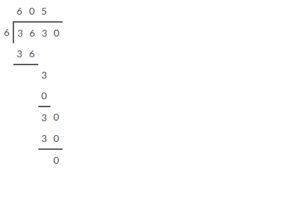
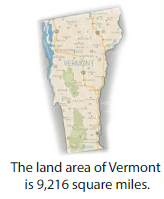


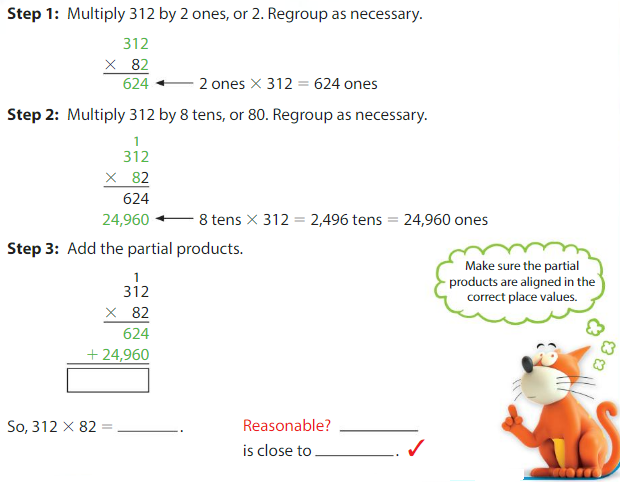








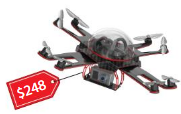
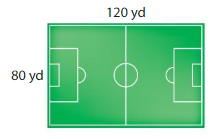









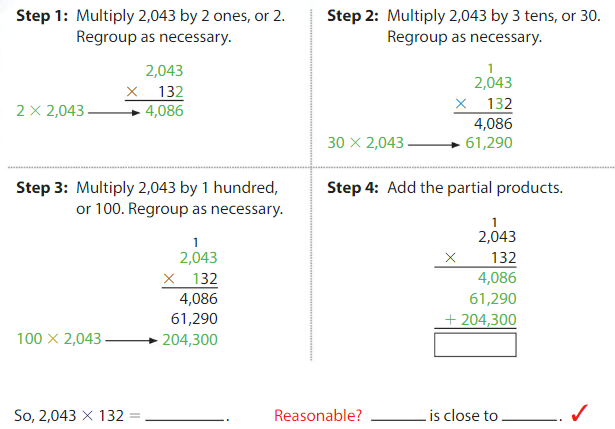





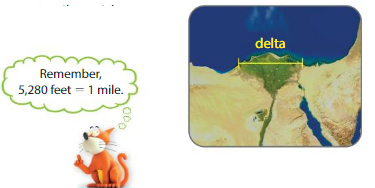

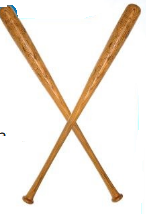

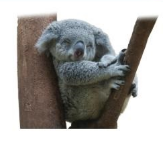










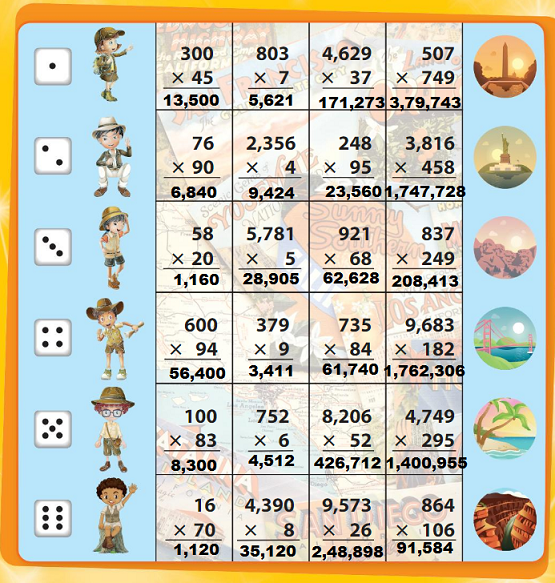









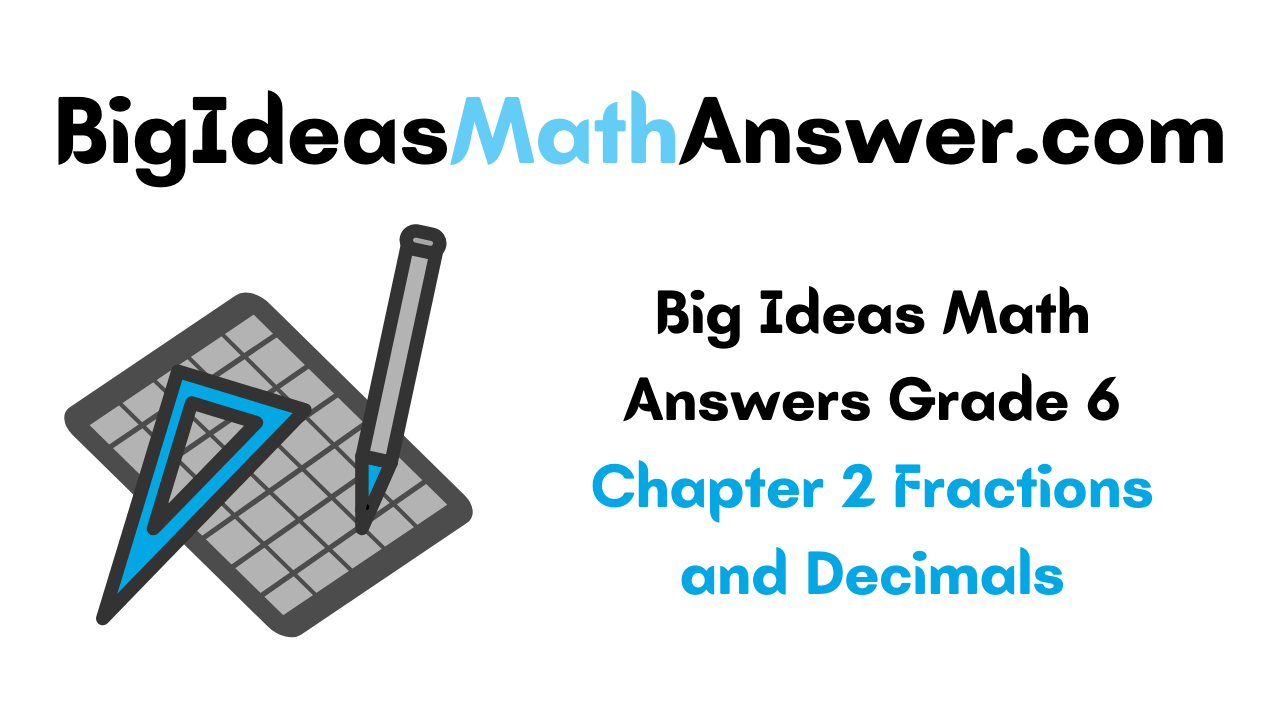









































 = 8 X 4 = 32
= 8 X 4 = 32







 = \(\frac{2}{21}\)
= \(\frac{2}{21}\) = \(\frac{1}{10}\)
= \(\frac{1}{10}\)

 = \(\frac{25}{6}\) = 4 \(\frac{1}{6}\)
= \(\frac{25}{6}\) = 4 \(\frac{1}{6}\) = \(\frac{21}{4}\) = 5\(\frac{1}{4}\)
= \(\frac{21}{4}\) = 5\(\frac{1}{4}\)

 = \(\frac{9}{49}\)
= \(\frac{9}{49}\) = \(\frac{5}{27}\)
= \(\frac{5}{27}\)
 = \(\frac{49}{30}\) = 1 \(\frac{19}{30}\)
= \(\frac{49}{30}\) = 1 \(\frac{19}{30}\)


 = \(\frac{8}{9}\)
= \(\frac{8}{9}\)
 = 2
= 2 = 2
= 2 = 5
= 5 = 1
= 1 = \(\frac{3}{2}\) = 1\(\frac{1}{2}\)
= \(\frac{3}{2}\) = 1\(\frac{1}{2}\) = \(\frac{7}{2}\) = 3\(\frac{1}{2}\)
= \(\frac{7}{2}\) = 3\(\frac{1}{2}\)

 = \(\frac{110}{3}\) = 36\(\frac{2}{3}\)
= \(\frac{110}{3}\) = 36\(\frac{2}{3}\)
 = \(\frac{58}{9}\) = 6\(\frac{4}{9}\)
= \(\frac{58}{9}\) = 6\(\frac{4}{9}\)




 = \(\frac{2}{15}\)
= \(\frac{2}{15}\) = \(\frac{25}{12}\) = 2\(\frac{1}{12}\)
= \(\frac{25}{12}\) = 2\(\frac{1}{12}\) = \(\frac{132}{5}\) = 26\(\frac{2}{5}\).
= \(\frac{132}{5}\) = 26\(\frac{2}{5}\). = \(\frac{27}{125}\)
= \(\frac{27}{125}\)




















 = 4
= 4
 = 1\(\frac{1}{3}\)
= 1\(\frac{1}{3}\)




 = \(\frac{1}{9}\)
= \(\frac{1}{9}\) = \(\frac{1}{15}\)
= \(\frac{1}{15}\) = \(\frac{5}{32}\)
= \(\frac{5}{32}\)
 =\(\frac{12}{15}\)= \(\frac{4}{5}\)
=\(\frac{12}{15}\)= \(\frac{4}{5}\)
 = \(\frac{2}{7}\)
= \(\frac{2}{7}\)






 = \(\frac{21}{40}\)
= \(\frac{21}{40}\) = 1\(\frac{17}{18}\)
= 1\(\frac{17}{18}\) = \(\frac{1}{6}\).
= \(\frac{1}{6}\).













 = \(\frac{3}{2}\) = 1\(\frac{1}{2}\)
= \(\frac{3}{2}\) = 1\(\frac{1}{2}\)
















































 = \(\frac{224}{28}\) = 8.
= \(\frac{224}{28}\) = 8.
















 = \(\frac{4}{7}\)
= \(\frac{4}{7}\)
























 e. 225.1 + 85.0465 = 310.1465
e. 225.1 + 85.0465 = 310.1465


























 19 X 3 = 57
19 X 3 = 57



















































































 There are 5357 bees are in the hive,
There are 5357 bees are in the hive,












































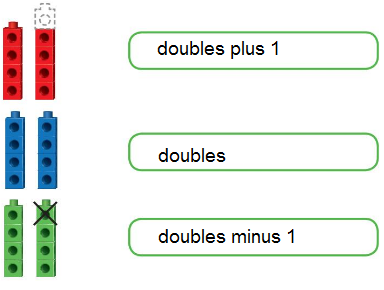

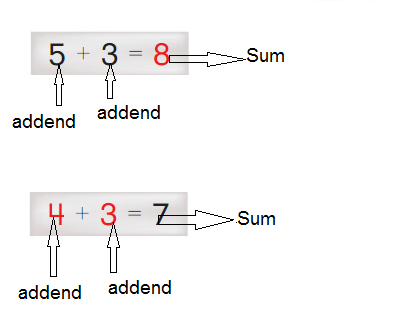
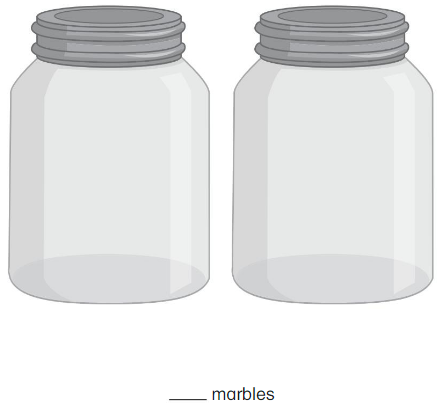


 =
=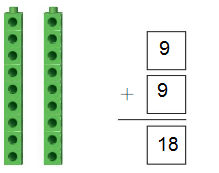
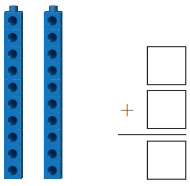
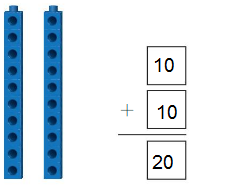







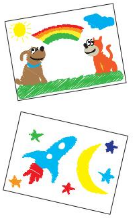








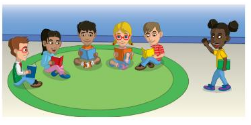
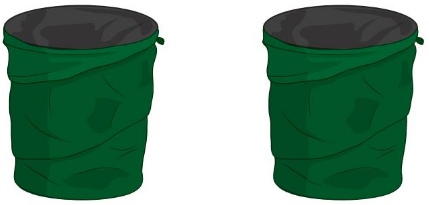

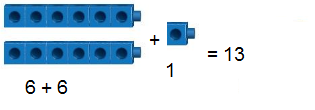

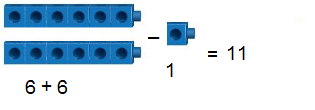









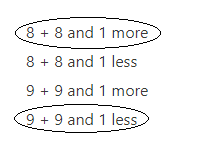


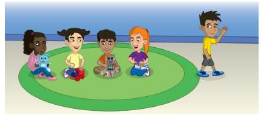
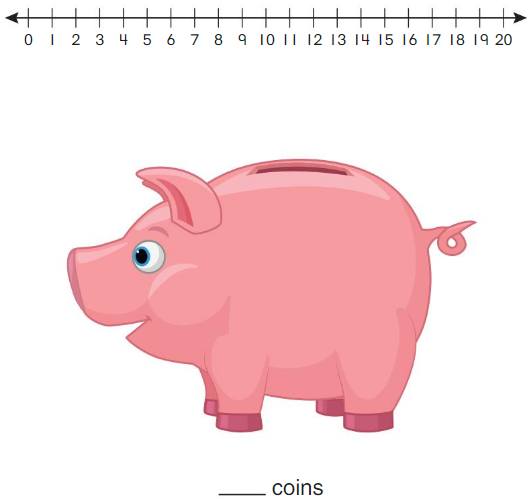
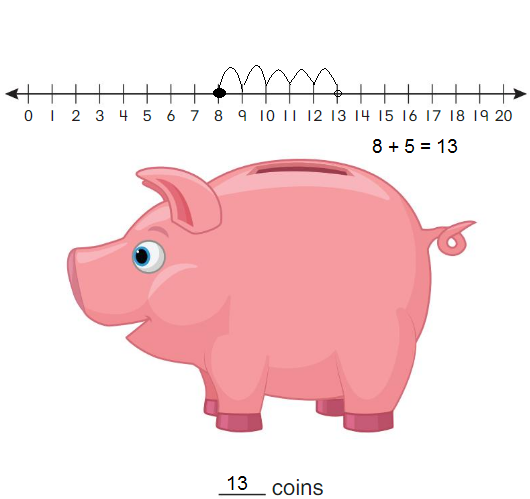
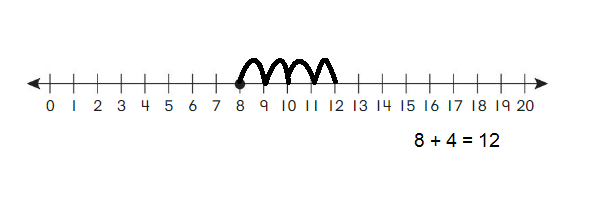
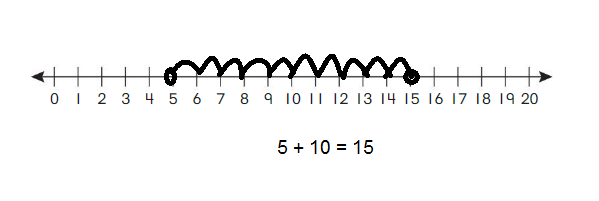

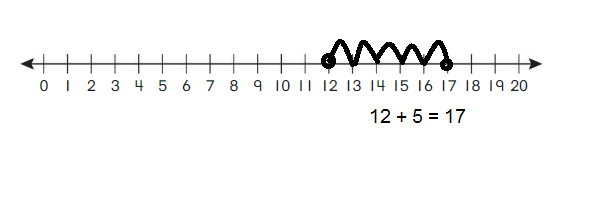

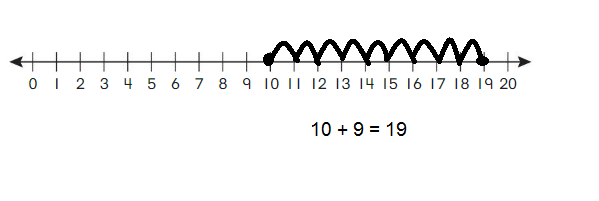
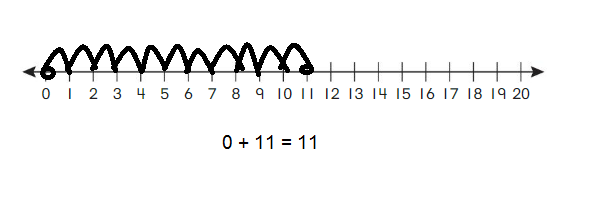




















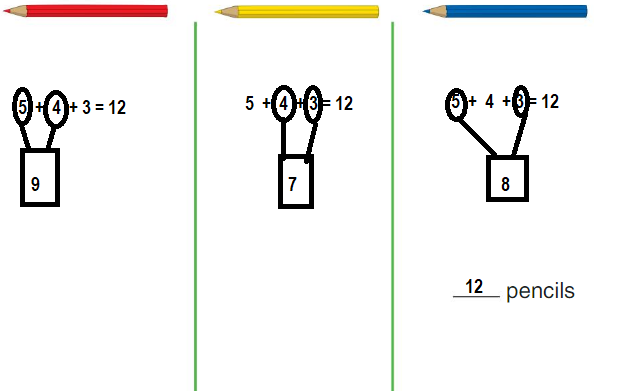

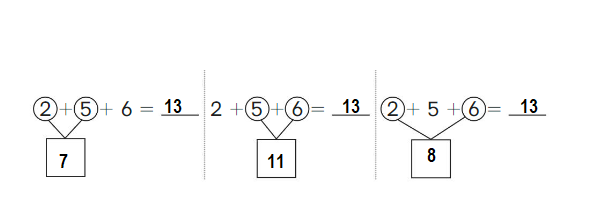

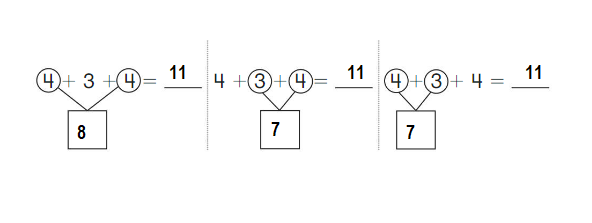

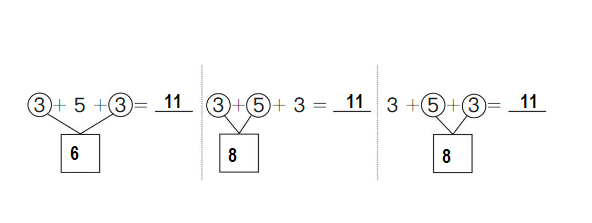

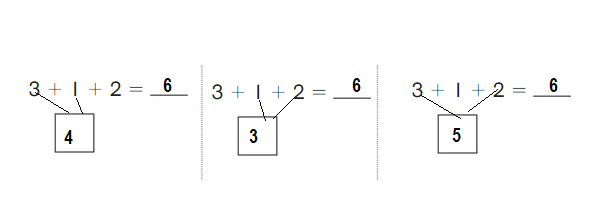

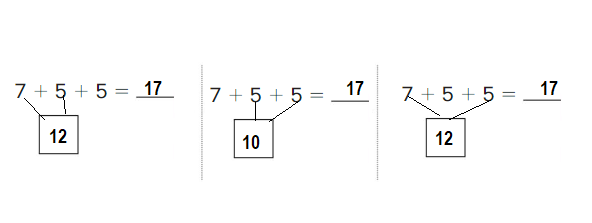


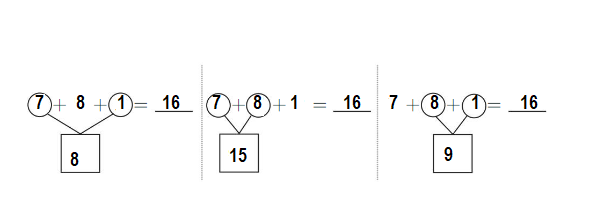

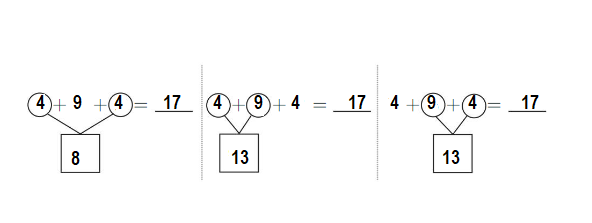
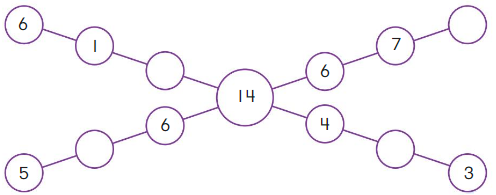
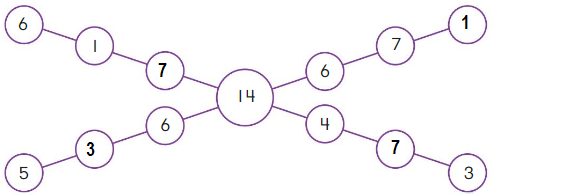





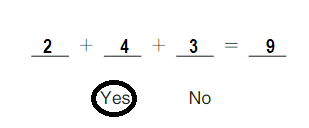







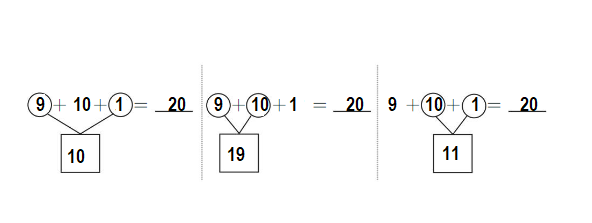

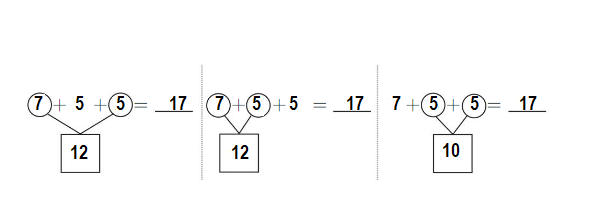
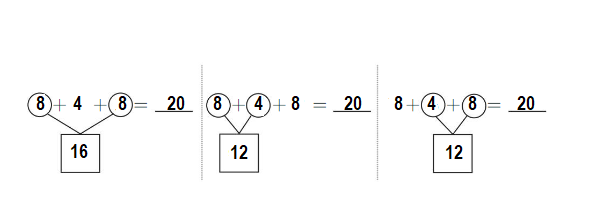

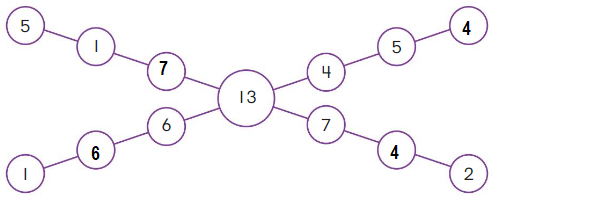


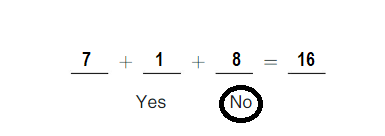

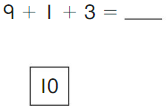


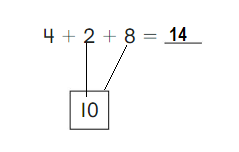

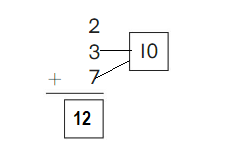
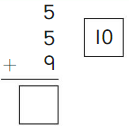
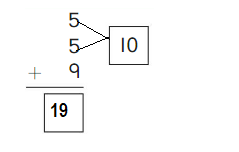

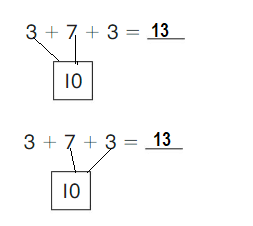

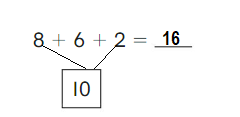
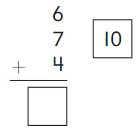
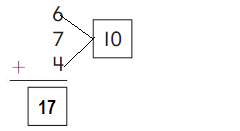


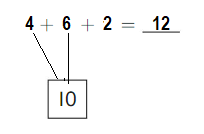

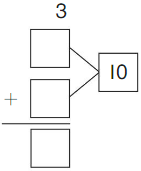







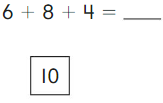
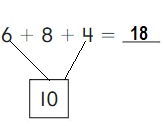
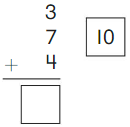

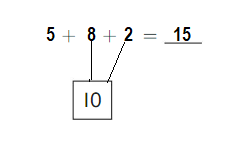
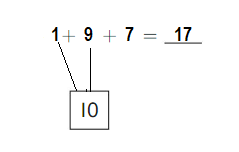
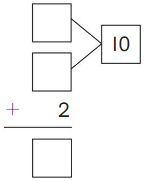







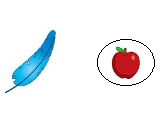
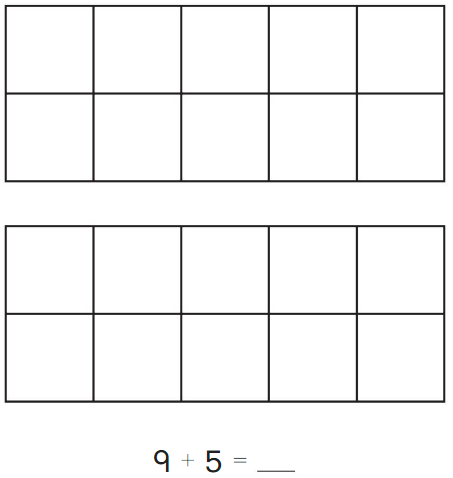
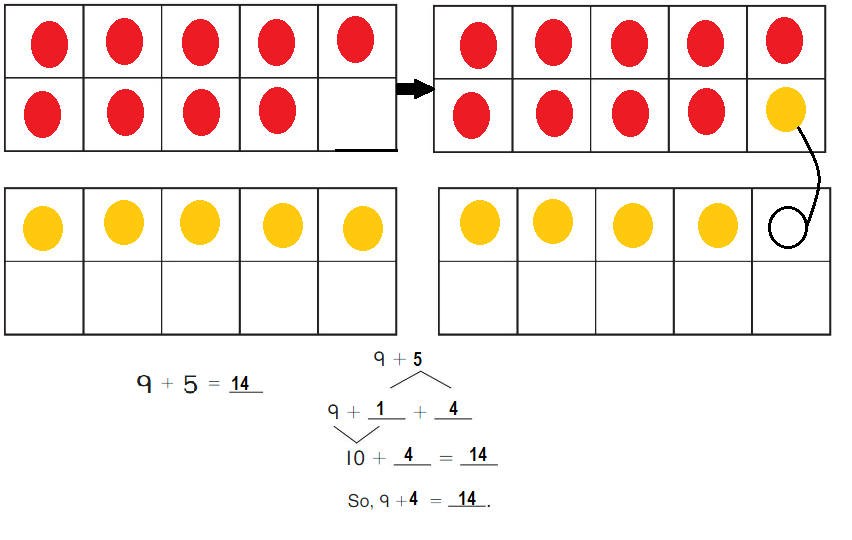

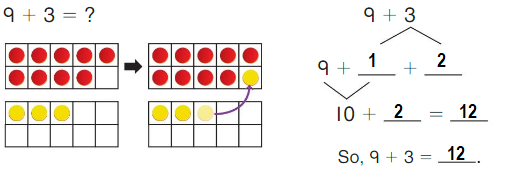

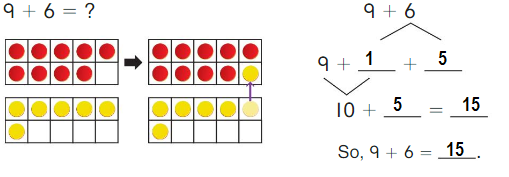
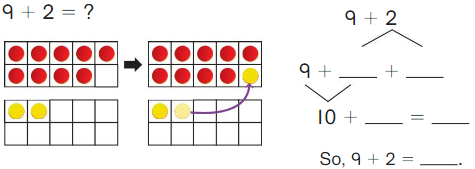
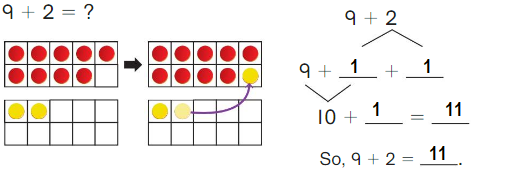

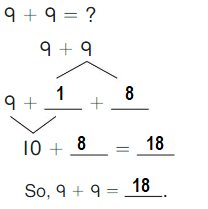
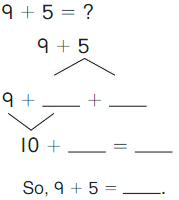
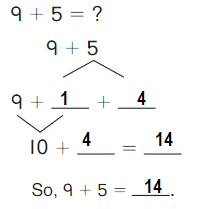
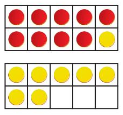

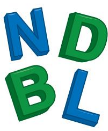

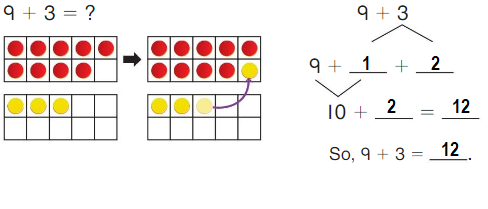
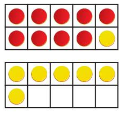

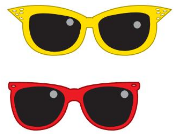

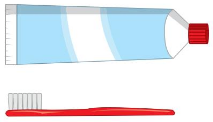
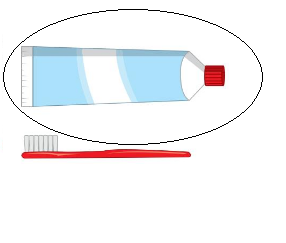
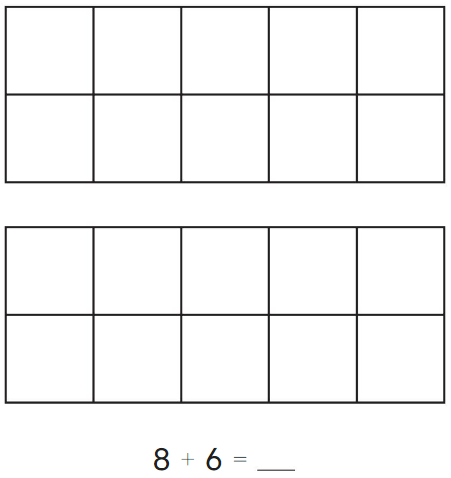
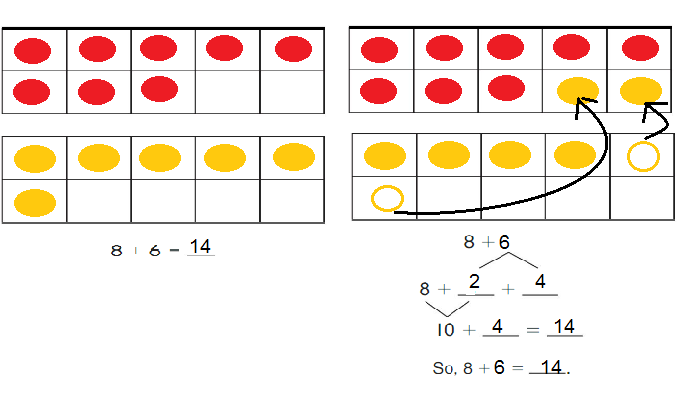



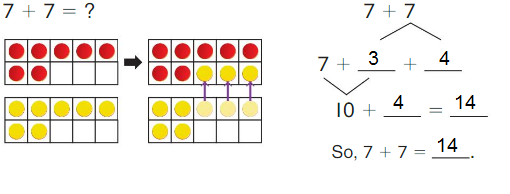
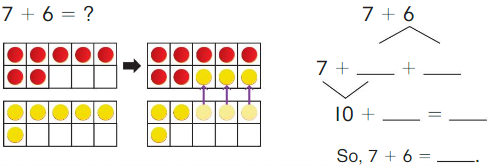
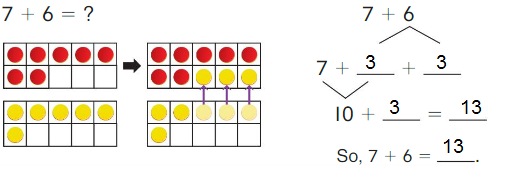

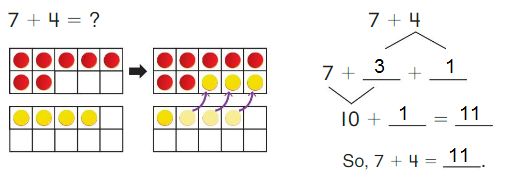

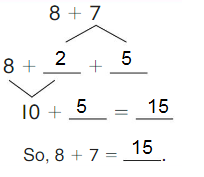
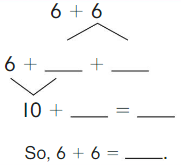



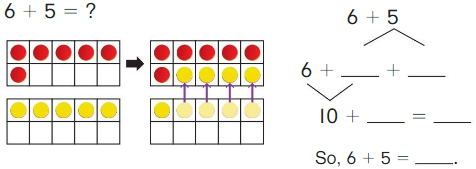
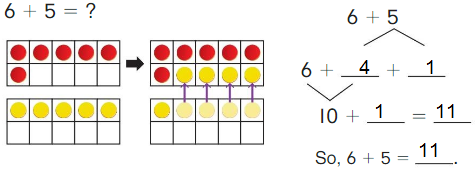


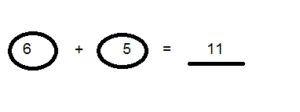 notebooks
notebooks


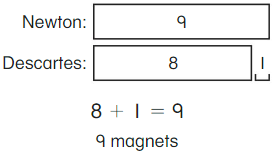











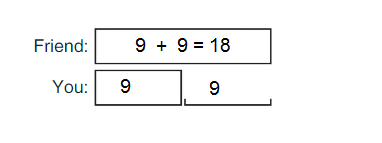

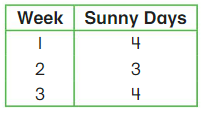

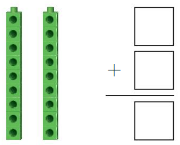
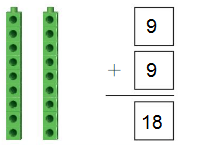


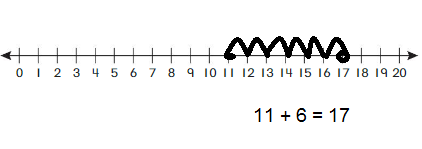








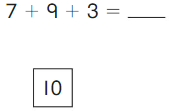
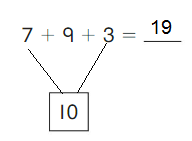
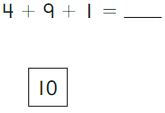
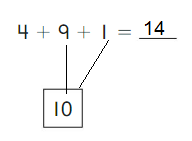

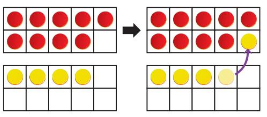
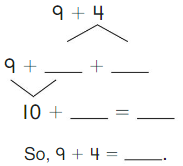


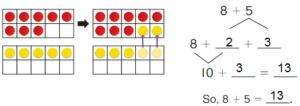

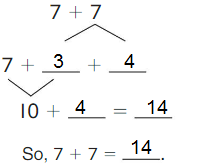
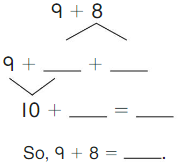


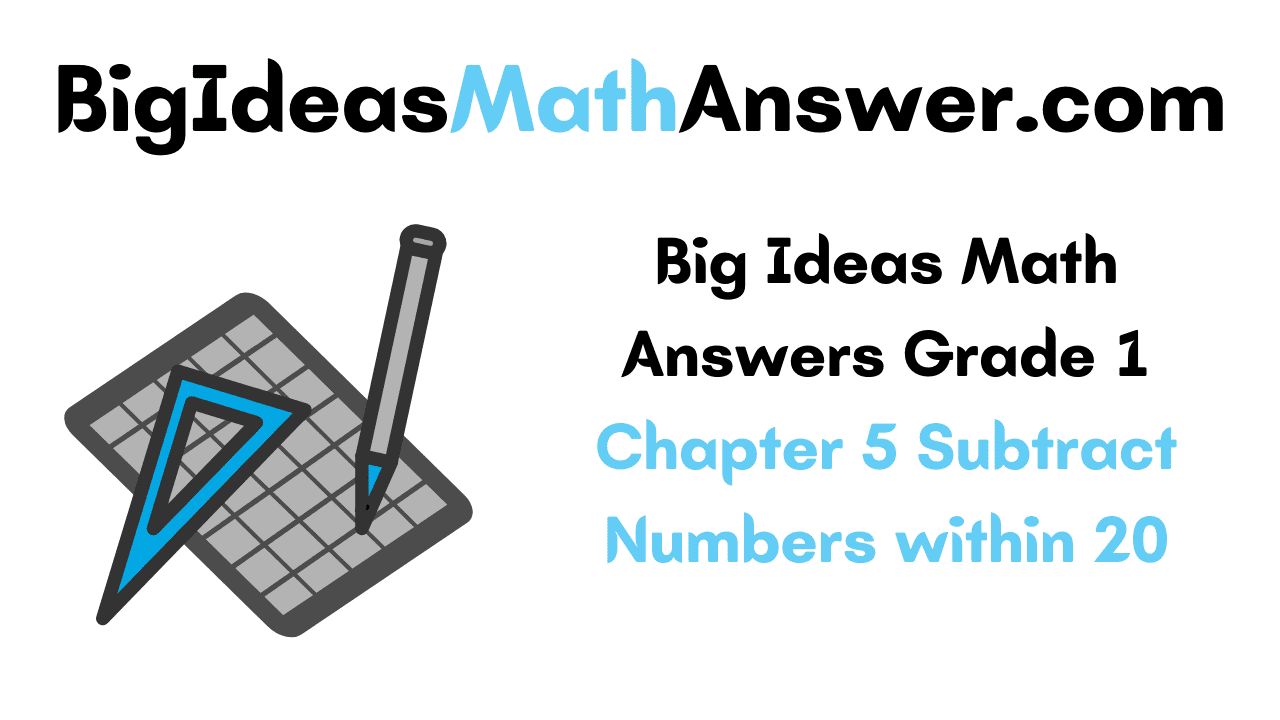
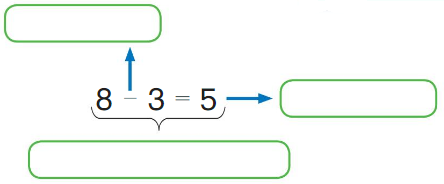

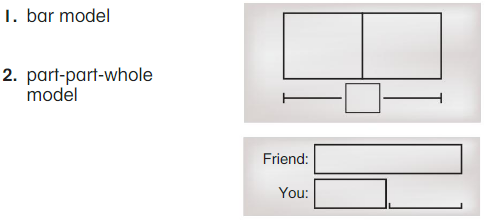
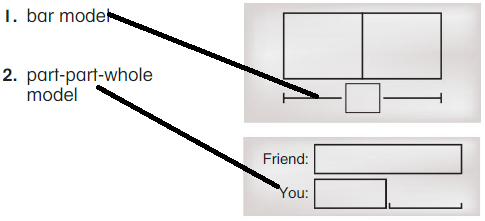


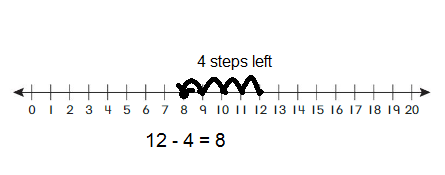

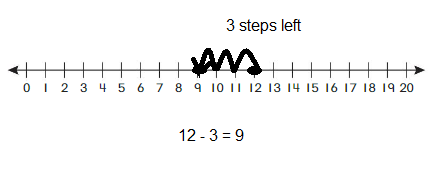

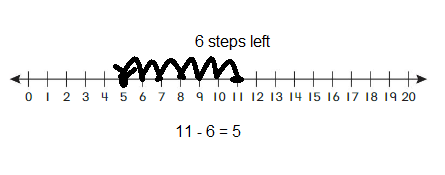

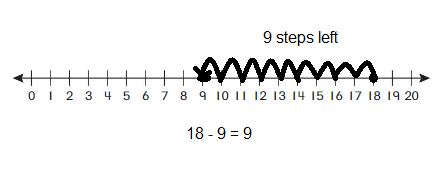


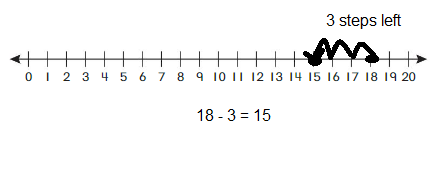

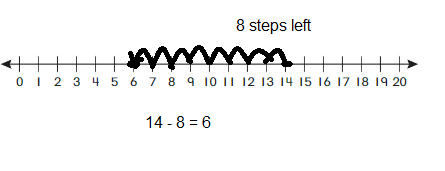

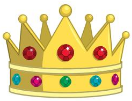
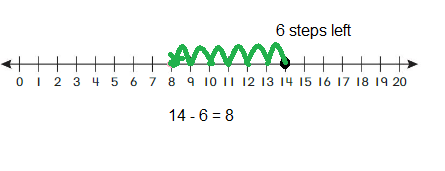

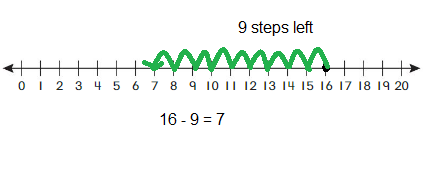
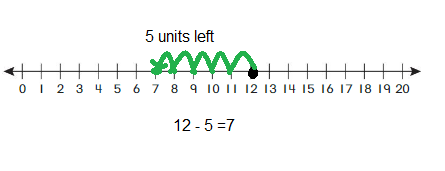
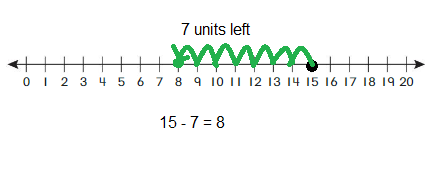
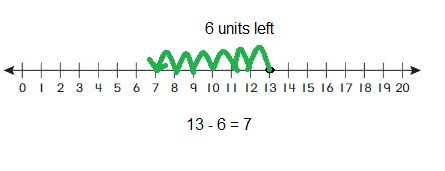
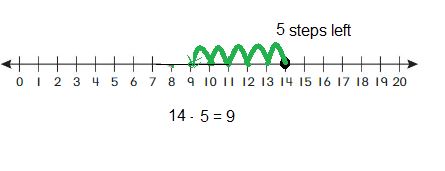
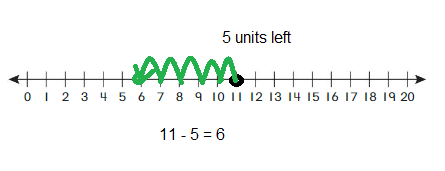

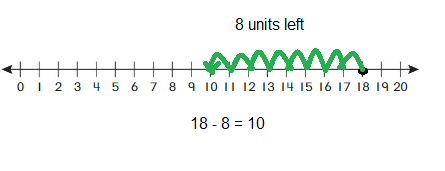
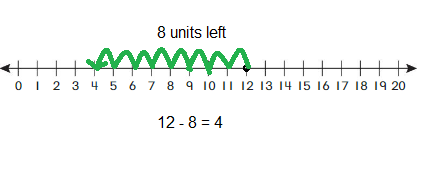




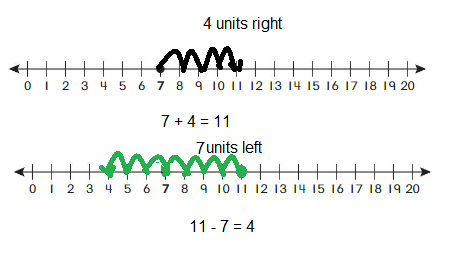
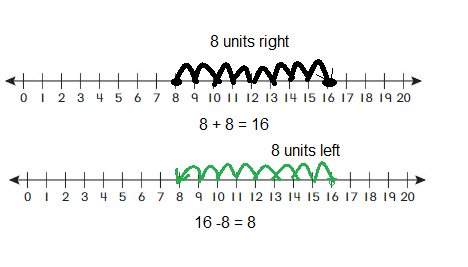
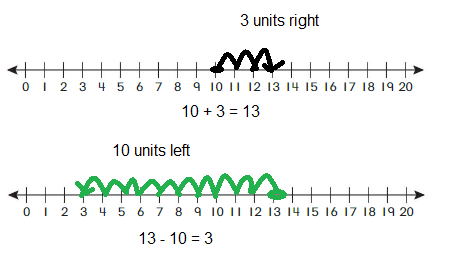
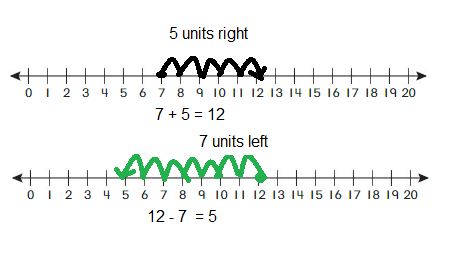
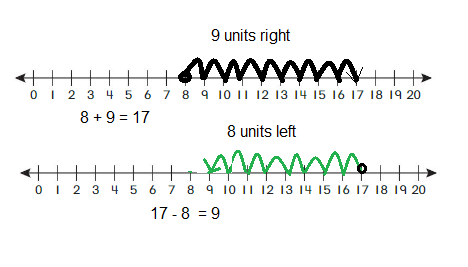
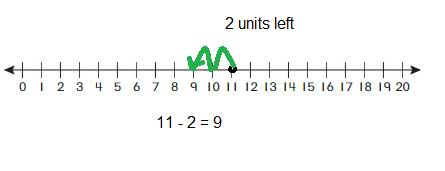



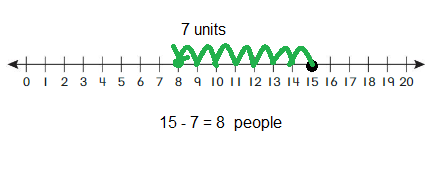

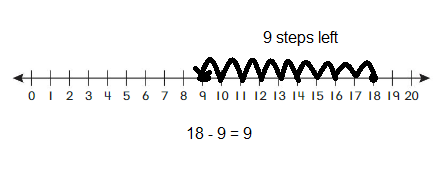
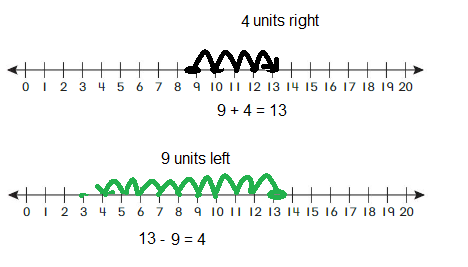
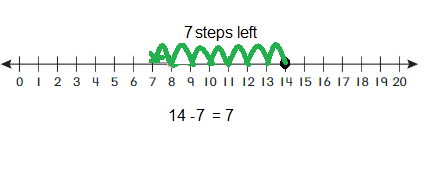

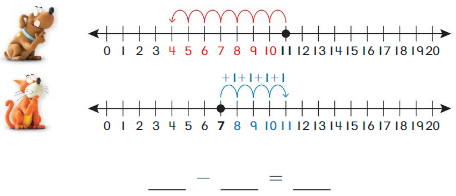


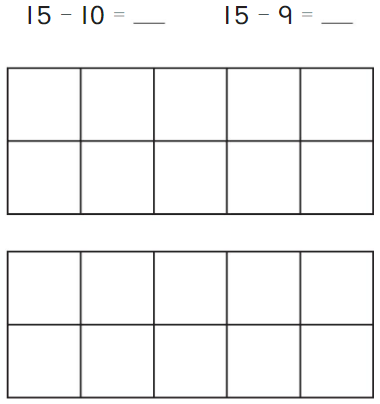
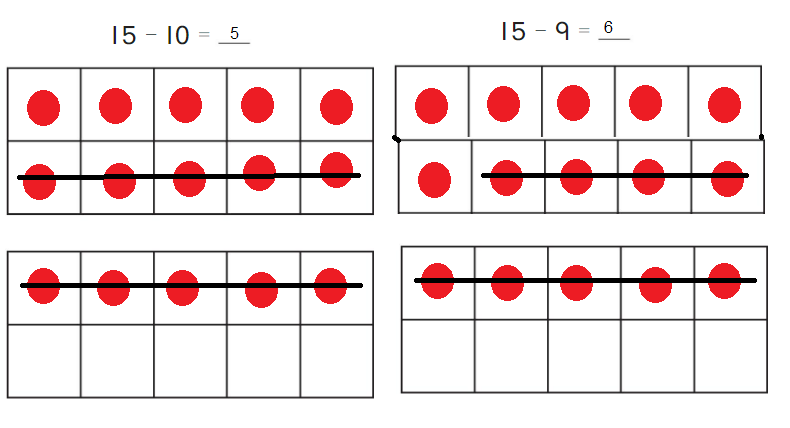


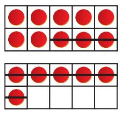
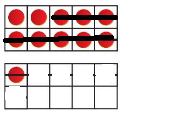
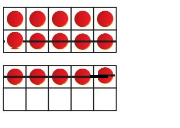

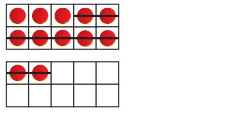
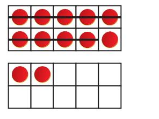


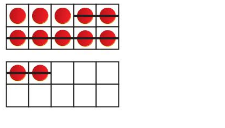

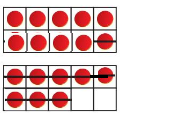
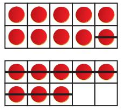
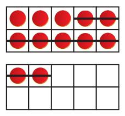


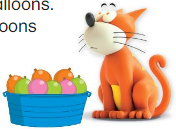
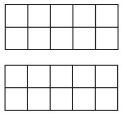
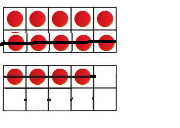
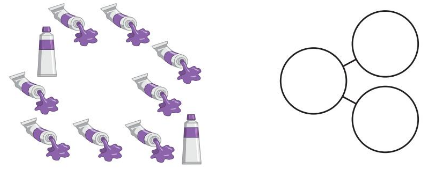
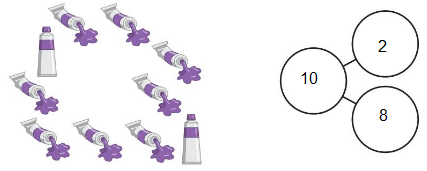
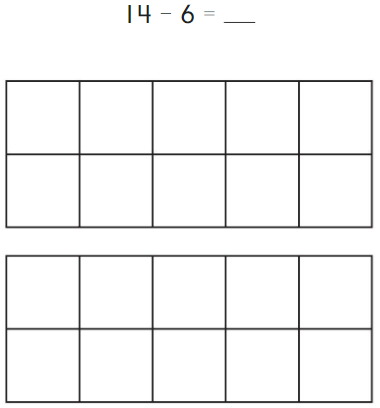
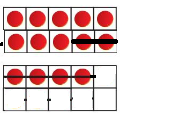
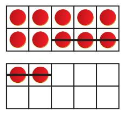
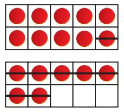
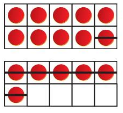
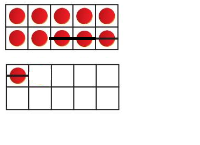

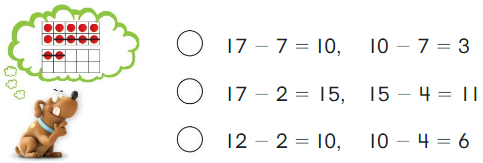

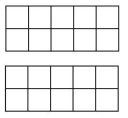
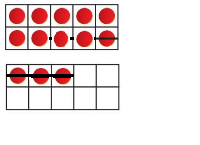



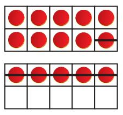
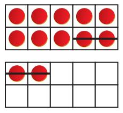

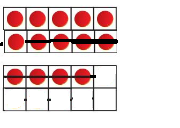



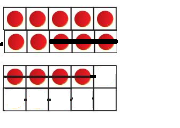
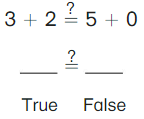
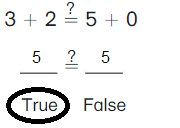
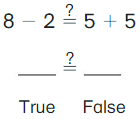
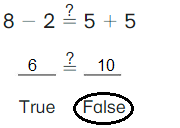
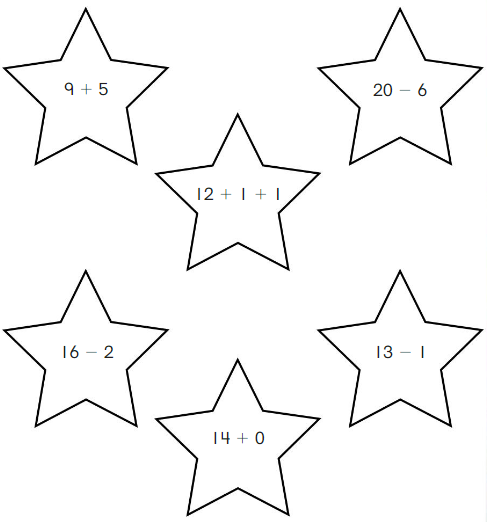
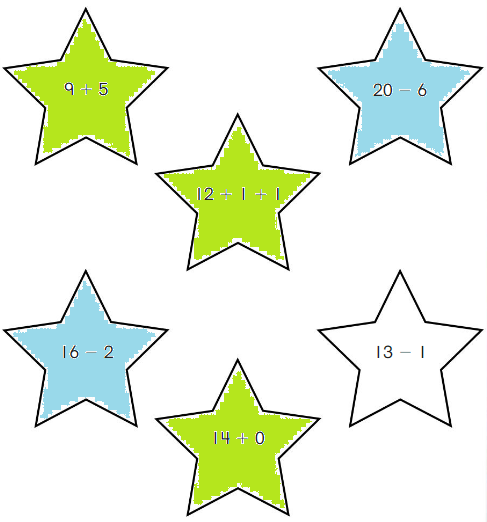

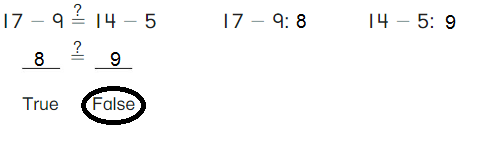






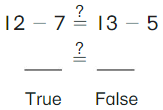



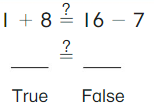

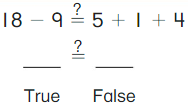



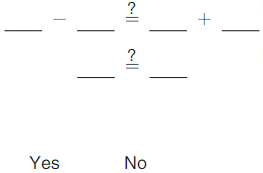

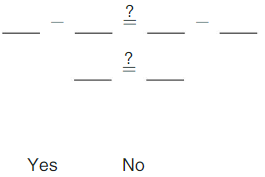
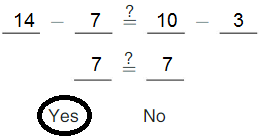



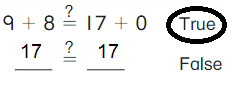



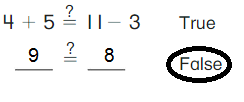

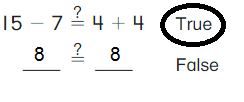

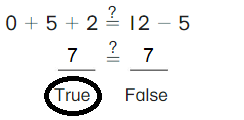
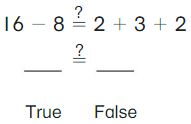



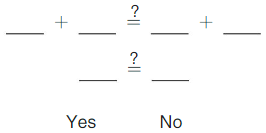
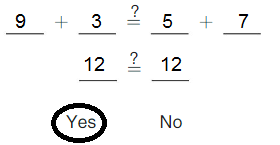

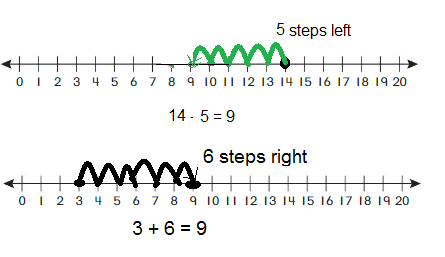
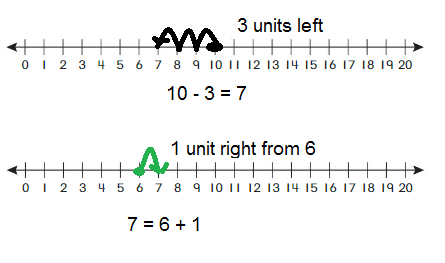

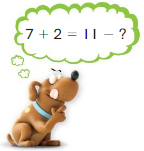




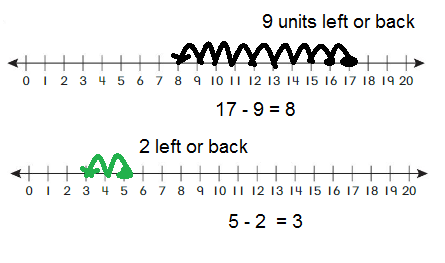




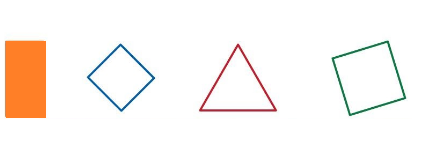
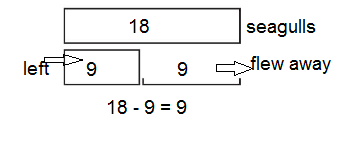





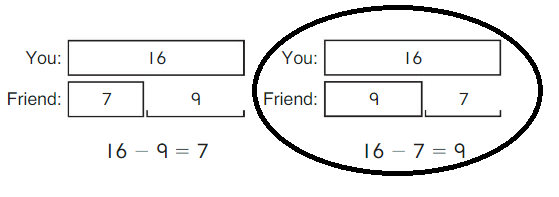


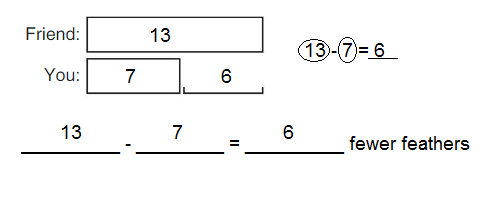

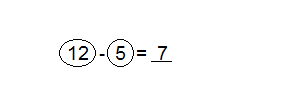


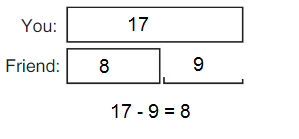


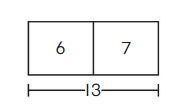 shows
shows

